
Cost of a Trip to Japan & the Cheapest Time to Visit Japan
The average price of a 7-day trip to Japan is $1,659 for a solo traveler, $2,690 for a couple, and $1,913 for a family of 4 . Japan hotels range from $62 to $304 per night with an average of $105, while most vacation rentals will cost $140 to $520 per night for the entire home. Average worldwide flight costs to Japan (from all airports) are between $948 and $1,696 per person for economy flights and $2,977 to $5,325 for first class. Depending on activities, we recommend budgeting $48 to $99 per person per day for transportation and enjoying local restaurants.
See below for average , budget , and luxury trip costs. You can also look up flight costs from your airport for more tailored flight pricing.
The Cheapest Times to Visit Japan
On average, these will be the cheapest dates to fly to Japan and stay in a Japan hotel:
- January 8th to March 18th
- August 27th to December 9th
The absolute cheapest time to take a vacation in Japan is usually late September .
Average Japan Trip Costs
Average solo traveler.
The average cost for one person to visit Japan for a week is $1,380-$2,771 ($197-$396 per day)
Food, Travel, and Sightseeing : $48 to $99 per day for one person’s daily expenses
Flights : $564 to $1,394 for economy
Lodging : $80 to $114 per night for one 2 or 3-star hotel room
or $86 to $105 per night for a 1-bed vacation rental
Average Couple’s Trip
The average cost for a couple to visit Japan for a week is $2,279-$4,865 ($326-$695 per day)
Food, Travel, and Sightseeing : $96 to $199 per day for two people’s daily expenses
Flights : $1,127 to $2,788 for economy
Average Family Vacation
The average cost for 4 people to visit Japan for a week is $4,360-$9,723 ($623-$1,389 per day)
Food, Travel, and Sightseeing : $191 to $397 per day for four people’s daily expenses
Flights : $2,255 to $5,576 for economy
Lodging : $161 to $228 per night for two 2 or 3-star hotel rooms
or $128 to $157 per night for a 2-bed vacation rental
Traveling Cheap to Japan
How cheap can you make a vacation to Japan? The cheapest trip to Japan is about $150 per person per day for travelers willing to take standby flights, deal with inconvenience, and otherwise limit travel expenses. About 3% of rentals are available in the $0 to $100 range for an entire place, and vacation rentals can be booked for as low as $16 per night. These inexpensive rentals must be booked as early as possible and may not be in the most desirable areas. 1-star hotels are more likely to be available, with rooms starting at around $53.
Even cheaper trips are possible depending on where you live and whether you can drive. Check the cheapest times to fly for more saving ideas.
Budget Solo Traveler
The lowest cost for one person to visit Japan for a week is $1,050-$2,576 ($150-$368 per day)
Food, Travel, and Sightseeing : $24 to $48 per day for one person’s daily expenses
Lodging : $53 to $62 per night for one 1-star hotel room
or $110 to $141 per night for a 1-bed vacation rental
Budget Couple’s Trip
The lowest cost for a couple to visit Japan for a week is $1,781-$4,306 ($254-$615 per day)
Food, Travel, and Sightseeing : $48 to $96 per day for two people’s daily expenses
Budget Family Vacation
The lowest cost for 4 people to visit Japan for a week is $3,557-$8,186 ($508-$1,169 per day)
Food, Travel, and Sightseeing : $96 to $192 per day for four people’s daily expenses
Lodging : $105 to $124 per night for two 1-star hotel rooms
or $165 to $211 per night for a 2-bed vacation rental
Overall it is very difficult to travel to Japan cheaply.
The Cost of a Luxury Japan Trip
There is no true ceiling on the cost of a luxury trip, so our estimates are based on what most people do in Japan.
Luxury Solo Traveler
The high-end price for one person to visit Japan for a week is $3,040-$10,904 ($434-$1,558 per day)
Food, Travel, and Sightseeing : $96 to $198 per day for one person’s daily expenses
Flights : $1,408 to $3,470 for first class
Lodging : $160 to $304 per night for one 4 or 5-star hotel room
or $504 to $1,008 per night for a preferred vacation rental
Luxury Couple’s Trip
The high-end price for a couple to visit Japan for a week is $5,121-$15,768 ($732-$2,253 per day)
Food, Travel, and Sightseeing : $192 to $397 per day for two people’s daily expenses
Flights : $2,817 to $6,941 for first class
Luxury Family Vacation
The high-end price for 4 people to visit Japan for a week is $10,241-$28,542 ($1,463-$4,077 per day)
Food, Travel, and Sightseeing : $384 to $794 per day for four people’s daily expenses
Flights : $5,633 to $13,882 for first class
Lodging : $320 to $609 per night for two 4 or 5-star hotel rooms
or $753 to $1,517 per night for a preferred vacation rental
Japan Hotel Prices
The cost of staying in Japan is much higher than the average city. On average hotels are less expensive than vacation rentals. Luxury vacation rentals are more expensive in Japan due to very high property costs. The graphs below show how much cost can vary depending on the type of experience you’re looking for.
Japan Lodging Cost by Star Status
The average price for the class of hotel is on the (y) axis. The hotel class (out of 5 stars) is on the (x) axis.
Prices are based on Japan hotel averages and may not reflect current prices. In some cases, we extrapolate prices to estimate costs, and hotels with your desired star rating may not be available.
Vacation Rental Prices
The percent of vacation rentals in the price range is on the left (y) axis. Price range is on the bottom (x) axis.
There are a healthy amount of vacation rentals serving all budgets in Japan.
Flight Costs to Japan
Averaging flights around the world, prices go from a high of $1,696 average in early to mid July to a low of $948 in late September. Median flight price is $1,031. These prices are based on millions of flights. For Japan our data includes thousands of originating airports, and hundreds of airlines. The area has more variance in price compared with other locations.
Average Flight Cost by Season
Average flight cost by day of week.
The cheapest day to fly in is typically Tuesday, and the cheapest day to fly back is usually Tuesday. Click here to see data for the cost of flights from your airport. In Japan, the difference between the cheapest and the most expensive week is about $748, so you can easily save about 79% simply by using our free flight guides and booking in advance.
Daily Expenses Budget
Daily vacation expenses vary more based on what you’re interested in doing. A fine dining restaurant with drinks around Japan can easily cost $361 per person or more, while a standard nice meal might be about $24 per person. Private tours can cost $722 per day, but self-guided tours to see the outdoor sights can be free. Costs vary wildly, so recommendations are made based on the cost of living and averages we see for this type of vacation.
Other Japan Guides
Travel costs nearby.
- Nagahama, Japan
- Maibara, Japan
- Tsuruga, Japan
- Echizen, Japan
- Sabae, Japan
- Ogaki, Japan
- Yoro, Japan
- Hikone, Japan
- Fukui, Japan
- Gifu, Japan
Travel Costs in Popular Places
- Chicago, IL, US
- Vienna, Austria
- Nairobi, Kenya

The Cost of Travel in Japan: My 2024 Budget Breakdown
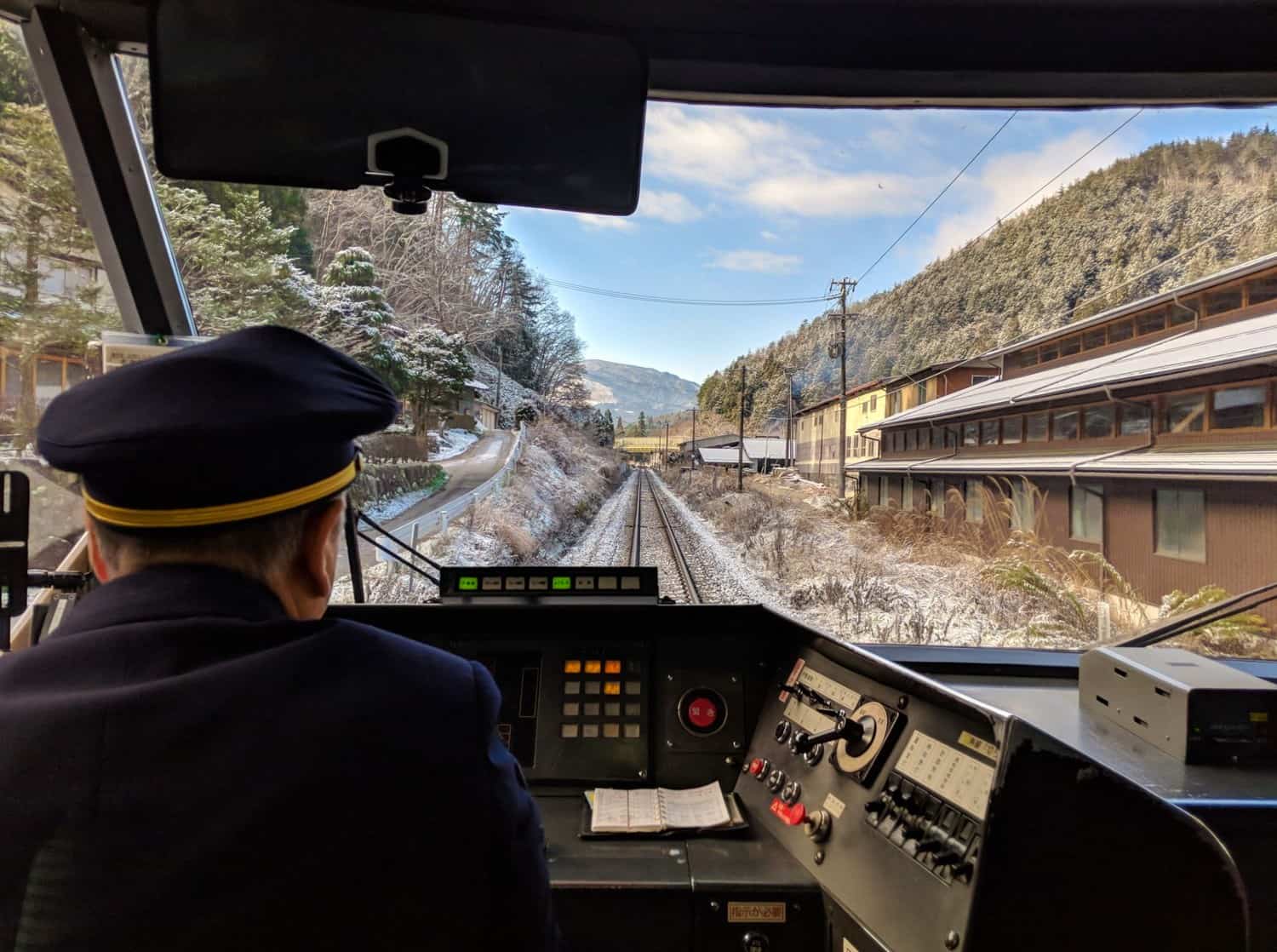
It took me six years to get to Japan.
I didn’t think I could afford it.
Every time I seriously looked into visiting, I would wince at the high cost of the train passes, read about how the hotels were super-expensive, and then fly to Vietnam instead. Or Taiwan. Or even Australia. Japan was simply too expensive for a budget traveller, so I decided to save it for when I was rich.
With that not happening any time soon, I decided to blow my money anyway, because I wanted to go and the gushing blog posts from travel writer friends had convinced me it would be worth the splurge.
Imagine my surprise, then, when I discovered that it really wasn’t that expensive.
I arrived in Japan fully expecting it to be the priciest country I’ve ever been to, but I discovered it’s more on a par with Western Europe or North America, and cheaper than Australia. It was way more affordable than Namibia , where my daily expenses came to $132, and way, way, way more affordable than the Democratic Republic of the Congo , where I averaged, um, $550 a day.
Anyway! This is about the cost of travel in Japan rather than my poor financial decisions, so let’s get started!
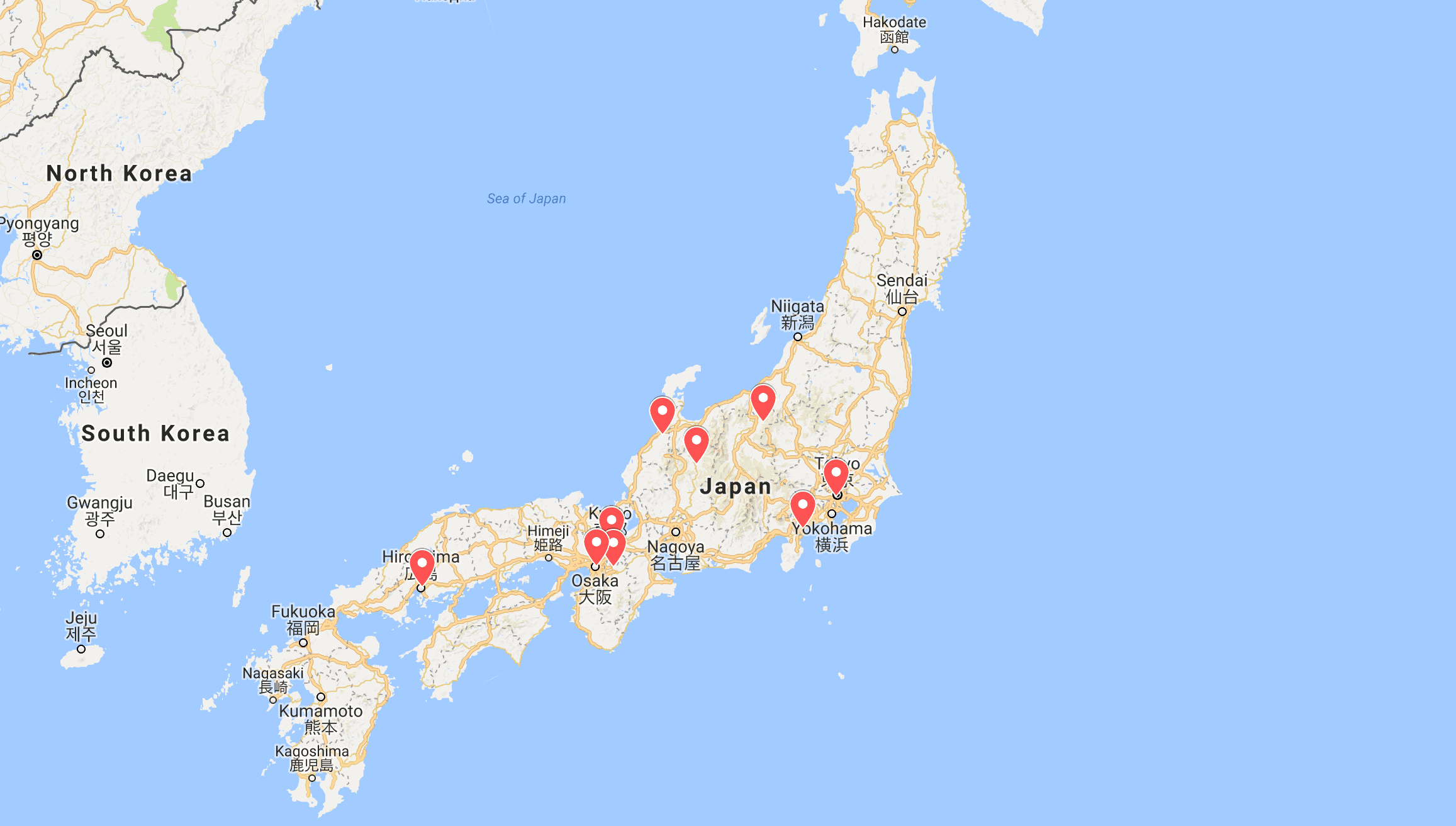
My 16-Day Japan Itinerary
Here’s a brief rundown of where I visited over my 16 days in the country — I think I managed to put together the perfect itinerary for first-time travellers to Japan .
Tokyo: 4 nights Hakone: 1 night Yudanaka: 1 night Kanazawa: 2 nights Takayama: 1 night Kyoto: 3 nights Hiroshima: 1 night Osaka: 3 nights
What’s Included in this Post
This budget breakdown covers how much I spent on accommodation, transportation, activities, food, and whichever miscellaneous items popped up while I was in country.
I’ve not included my flights into and out of Japan because this is going to vary significantly based on where you’ll be arriving from. In case you’re interested, though, I paid $320 for a return flight from Rome to Tokyo, which I scored through browsing my favourite site for flight bargains, Secret Flying .
The amounts in this guide are listed in Japanese Yen and U.S. dollars, simply because the vast majority of my readers are from the U.S. And finally, these are the three rules I always abide by on this site:
- I do not accept sponsored trips, so everything listed in this post is something I personally paid for with my own money
- I travel anonymously to ensure my experiences accurately reflect what yours will be. I don’t want special treatment!
- Every single word of this article was written by me, based on all of my own experiences. I strictly do not use AI to compose my guides.
Okay — let’s get started with my expenses.
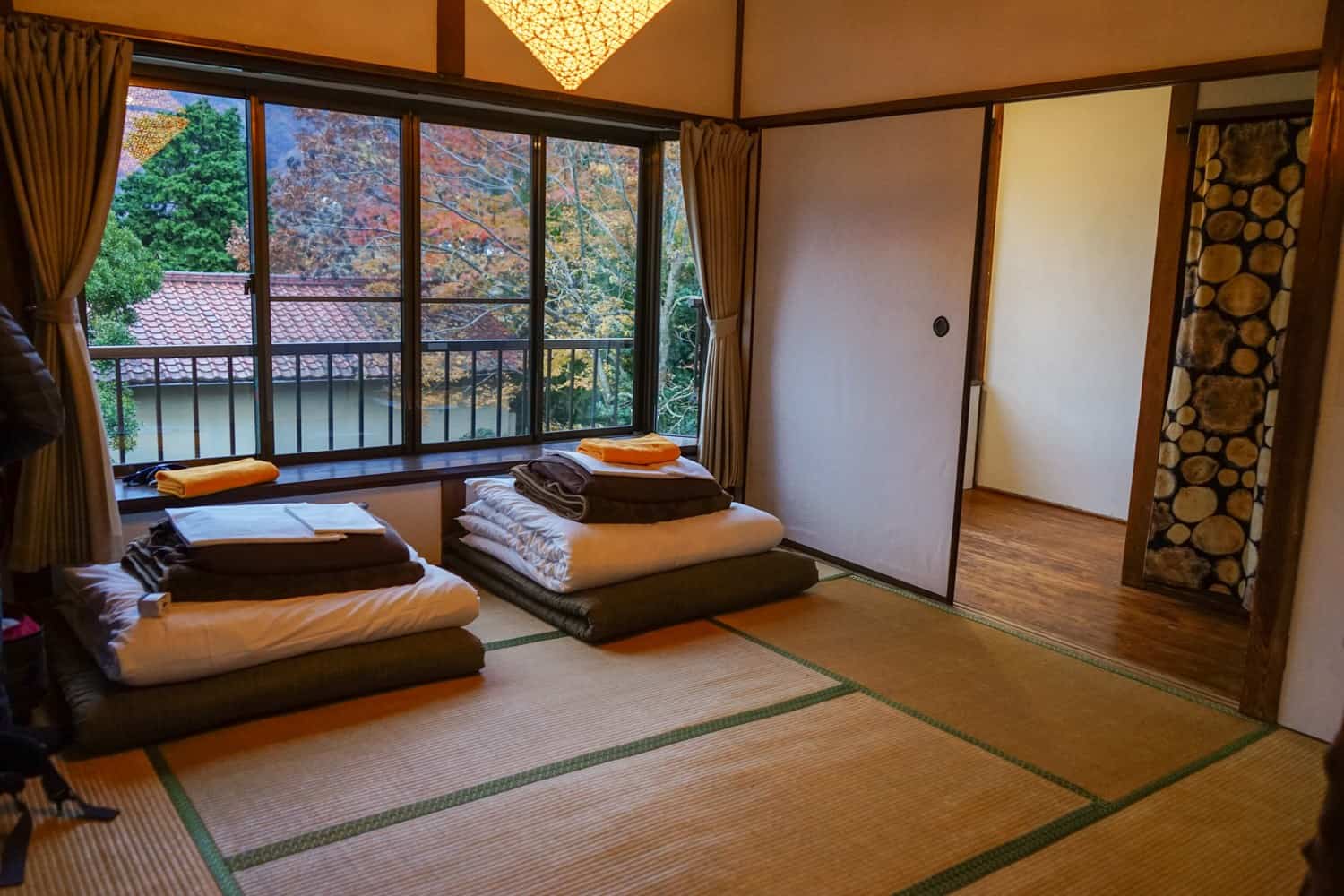
The Cheapest Accommodation Options in Japan
Like practically every country in the world, prices in Japan have increased post-pandemic.
In 2024, you’ll be paying a little more for everything than you would have done a few years ago — in fact, prices almost doubled between my first trip in 2017 and today! — however costs are still on a par with most Western countries. Travel in Japan shouldn’t be too devastating to your travel budget.
I’ll start on the lower end of the spectrum. If you’re willing to put in the time and effort, it’s possible to avoid paying for accommodation entirely.
Couchsurfing exists in Japan and allows you to stay with a local for free , usually sleeping on their sofa and enjoying a local’s insight into life in their country. Yeah, it’s not the most comfortable of living situations, but if your budget’s tight, it’s worth sending out a few requests to hosts to see if anything comes of it. You can browse through the 300,000+ Japanese hosts on the Couchsurfing site — just be sure to read the references of anybody you choose to stay with.
Housesitting is a more upmarket option, aimed at mid-range and luxury travellers. Housesitting involves taking care of somebody’s house for free while they’re away, often (but not always) looking after their pets, too. It’s best for long-term travellers or retirees, as you can’t pick and choose dates and destinations, so you’ll need to have a lot of flexibility as to where you go and at what time of year. If you do have that freedom, though, it’s a wonderful way to cut down your travel expenses, soak up some home comforts, and live like a local for a while. Trusted Housesitters is the main site for getting started with housesitting, as they have the highest number of listings.
Finally, when it comes to free accommodation, you could take a look at WorldPackers in Japan , where you’ll be able to volunteer for locals in exchange for food and board. There are some seriously cool options available on the site right now, from helping harvest honey for a bee farm in the countryside to lending a hand in the garden of a Buddhist temple. Readers of this site get a $10 discount for WorldPackers with the promo code neverendingfootsteps .
If you’re not looking to travel for free and just want a clean and comfortable room to sleep in, there are plenty of great budget options, too.
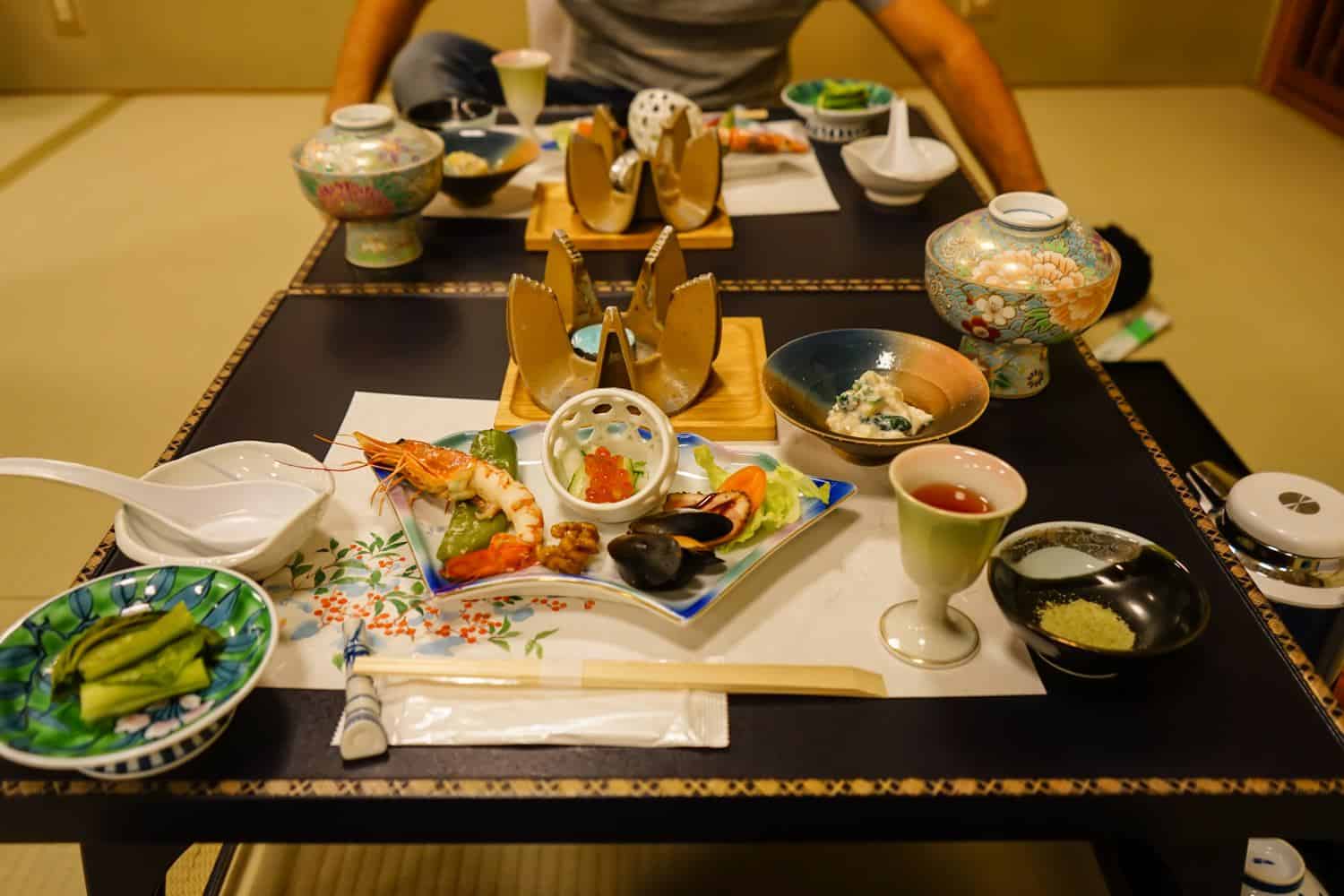
And then we have hostels . In Japan, you’ll come across hostels all over the country, finding them on tiny islands, large cities, and even within the national parks. They’re one of your best options for saving money.
Hostels in Japan are on a par with the rest of major cities in East Asia, and you can expect to spend $25 a night for a dorm bed for a well-reviewed hostel, with the price increasing slightly to around $45 a night for the absolute best of the best.
When it comes to private rooms in hostels, you’ll be looking at $50 a night for a clean, basic room in a good location, so if you’re travelling with friends or with your partner, you may find it cheaper to grab some privacy over settling for two beds in a dorm room. $90 a night will get you an exceptionally well-reviewed private room in a hostel.
I use HostelWorld to find the cheapest hostels, as they tend to have the greatest number of listings at the lowest prices.
And then there are hotels, which I’m going to jump into next.
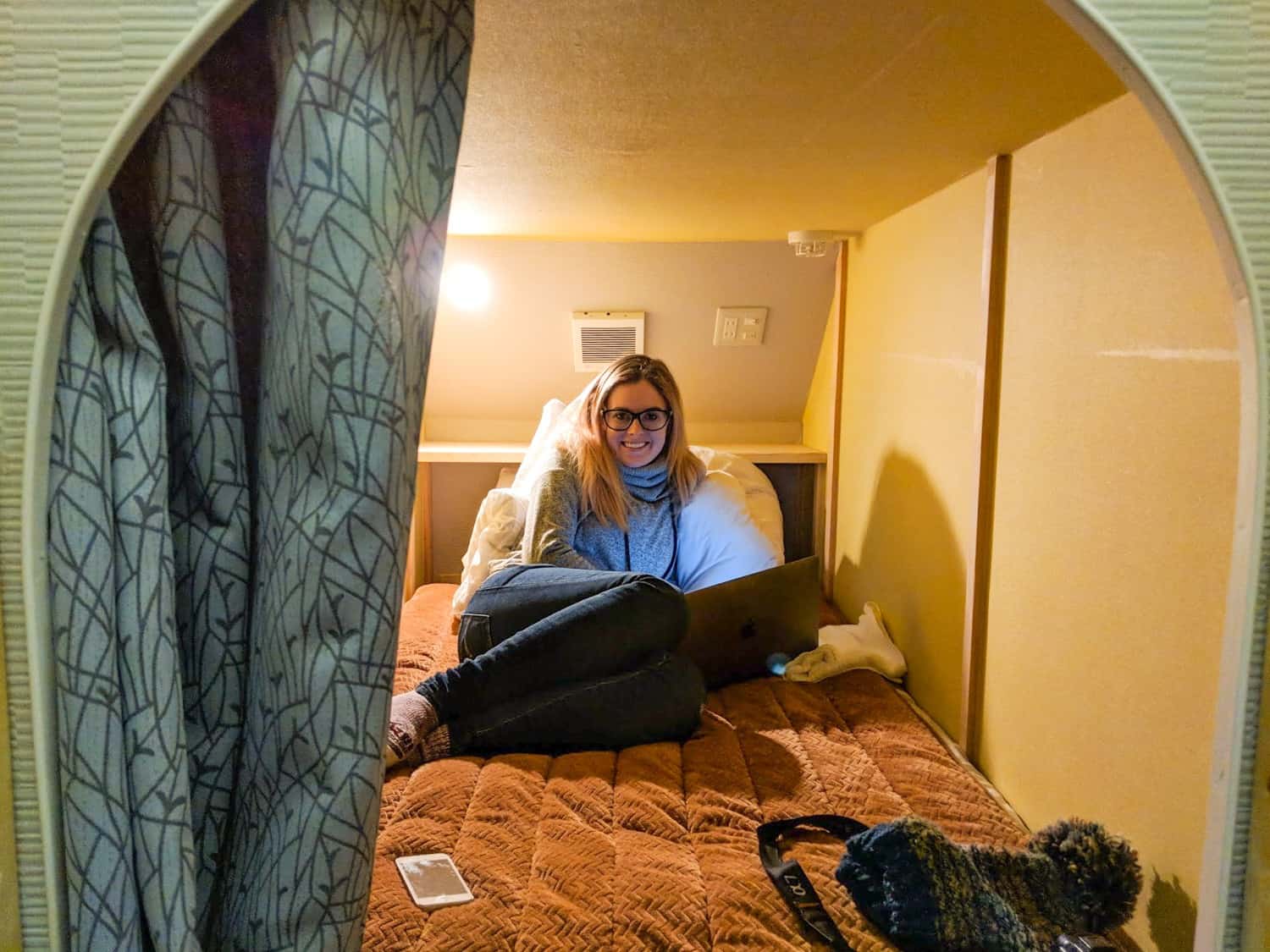
The Cost of Accommodation in Japan
There are so many different types of accommodation in Japan! I attempted to experience as many as possible while I was in the country.
I stayed in a capsule hotel, prioritised hunting down a ryokan, slept on a tatami mat floor, stayed in family-run guesthouses, and checked out some pretty cool hostels. While I did attempt to save money by staying in some cheaper places, I was also happy to splurge on extremely well-rated rooms, too.
As always with these budget breakdowns, I like to share the prices of where I personally stayed, along with a description of the property and whether I’d recommend choosing it, too — hopefully this helps make your trip planning easier!
I visited Japan with my partner, Dave, and we travelled on a mid-range budget; searching out good value accommodation that was highly-rated and in a central location. We prioritised locally-run properties that weren’t too flashy or fancy; for us, a cosy vibe, unique furnishings, and welcoming staff are far more important than the generic decor of a hotel chain.
(Oh and just a quick note: hotels do charge different prices across a range of dates, depending on how busy a certain travel period is going to be. Because of this, it’s hard to be super accurate in the costs that I list. To get to the quoted prices below, though, I looked at the rates across the next six months and took the average: it could be slightly cheaper or more expensive, depending on when you’re visiting.)
Tokyo: $135 a night Odds are, you’re probably going to kick off your Japan adventures in Tokyo, and if so, it only makes sense to really throw yourself into the local experience. That’s why we decided to stay at this lovely onsen-ryokan in Shinjuku. (Whenever readers ask me which neighbourhood to choose in Tokyo, I always recommend Shinjuku or Shibuya.) The reason why I loved this specific property, though, is because it’s a ryokan (traditional Japanese Inn) that also has an onsen (hot pool). It’s a great way to jump immediately into all things Japanese.
And it was wonderful; my favourite hotel in the country. The rooms were small and cosy and felt super-traditional and calming. The views over Tokyo at night from the window were incredible. And the rooftop onsen? With free popsicles afterwards? So good. It’s located in a quieter neighbourhood, but still only a 10-minute walk to the subway. I really recommend this one!
Hakone: $80 a night In Hakone, we opted for a private room in a lovely guesthouse , with a tatami mat floor to sleep on and a private onsen on-site. The photo of the tatami mat room above is of our room here. It ended up being another one of our favourite stays in Japan! The staff were lovely and there was a restaurant/bar that served up fantastic pizzas. It had a cosy and chilled-out atmosphere, with great food and wine, and lots of blankets to snuggle up with as we ate. It was also worth staying here just to experience the private onsen — we got to go in as a couple!
Yudanaka: $105 per night In Yudanaka, we opted for a stay in a wonderful little ryokan ; this one was even more traditional than the one in Tokyo! Often, ryokans can be super-expensive in Japan — as much as $500 a night for the experience — so I was thrilled to have stumbled across a more budget option in Yudanaka. It was run by an adorable Japanese couple and their house came with a private onsen, return transport to see the snow monkeys , and one of the most extravagant meals of my life. A kaiseki is a multi-course (like, 20 courses) meal that will see you eating roughly a week’s worth of food in a single night, sampling fresh, local-to-the-region Japanese cuisine. It was phenomenal, and I loved having no idea what anything was. It even included homemade plum wine, which was so good! I highly recommend the experience (although strongly advise you not to add breakfast to your booking — we were still so full that we couldn’t eat any of it!)
Kanazawa: $65 per night Kanazawa is home to some seriously cool accommodation! We had a hard time choosing where to stay because every property looked so cosy and inviting. In the end, we settled on this minimalist, modern set-up — it was great value for money relative to most other places we stayed in Japan, especially when you consider it’s only been open a year. It’s in a great location, right outside Omicho Market, where you’ll sample the best sushi of your life. Also within walking distance is Kanazawa Castle and Kenroku-en Garden, so you’re really staying in the heart of it all. I recommend signing up for the traditional Japanese breakfast, as you’ll likely not have had anything else like it before! There’s also an onsen and laundry facilities (always appreciated mid-trip!), and the staff were so sweet and kind.
Takayama: $76 per night In Takayama, we stayed in a small, locally-run guesthouse in the centre of town. It felt like particularly good value for Japan, as it was one of the few places we stayed that you could describe as spacious! It even had a kitchen and washing machine. The beds were comfortable and the hotel was within walking distance of everywhere, including the train station. It was quiet, the staff were lovely, and overall, it made for a comfortable stay!
Kyoto: $84 a night In Kyoto, we stayed in a cosy hotel in the heart of town — we loved this place so much in 2017 that when we returned to Japan this year, we knew we’d have to stay there again! The property was in a fantastic location for exploring Kyoto and the bathrooms were nicer than anywhere else we stayed. It’s one of the top-rated guesthouses in the city — while also being one of the cheapest — so when you take that into consideration, I’m convinced you won’t find anywhere better to stay in Kyoto.
Hiroshima: $40 per bed In Hiroshima, we opted for a capsule-style hostel because I didn’t want to leave the country without trying one — you can see a photo of the “capsule” at the top of this section. Fortunately, we found ourselves in a room with only two other people staying there, so our capsule room with 20-odd beds was light on snorers. The owner of this place was ridiculously lovely and it was within walking distance of all of the monuments and activities. Really great bathrooms, a fun common area, and a cheap price: surprisingly, I would have stayed another night!
Osaka: $108 a night I rounded off my time in Japan with a little bit of a treat, opting for this four-star hotel that offered a ton of freebies. It’s all about the onsen here — it’s open all day and is simply beautiful. After you’ve finished your daily bathe, there’s free ice cream to eat, free comics to read, massage chairs to relax in, and even free ramen to slurp on. Yes, really! It was in a great location for Osaka — just a couple of blocks from the nearest metro station. The decor was calming and traditional; the perfect way to say goodbye to Japan.
In total, I spent an average of $97 per day on accommodation over my 16 days in Japan.
The Cost of Transportation in Japan
Okay, so let’s talk about transportation now. And specifically transportation post-2024.
It used to be the case that practically every visitor to Japan would invest in a JR pass (a train pass that grants you unlimited rides over a certain time period). After all, the best way to explore this country is by train, and by buying said rail pass, you’d be saving a significant amount of money on your trip — especially if you were taking a similar route to my one. A JR Pass pre-October 2023 would have saved me a whopping $175 over buying individual train tickets.
Seems like a no brainer, right?
In October 2023, the Japan Rail Pass skyrocketed in price. No exaggeration here: prices increased by an incredible 70% .
What a baffling decision.
What that means is that it’s not such a clear-cut decision anymore. The Japan Rail Pass still holds some benefits: If you’re a first-time visitor to Japan and don’t feel too confident about buying multiple single-journey train tickets, the pass will make it a lot easier: you just show it at any station and get on a train. You won’t need to worry about any extra charges and will have the flexibility to take train-based day trips whenever you want.
For most travellers, however, the value proposition is simply no longer there. For example, my recent 16-day itinerary (Tokyo – Hakone – Tokyo – Nagano – Kanazawa – Takayama – Kyoto – Nara – Kyoto – Hiroshima – Osaka) cost me 50,000 Yen ( $350 ) with single tickets. However, a 14 day rail pass is priced at 80,000 Yen ( $530 )!
Alas, the Japan Rail Pass is no longer something I recommend — unless you’re going to be taking enormous, lengthy rail journeys (like across the whole country) in a short period of time. Alternatively, if you do want that added sense of security and ease by not having to juggle a dozen train ticket bookings, you may find the extra price worth it.
So with all that being said: you’re most likely going to be using the JR West website to book your single train tickets online. This covers the entirety of Japan that’s west of Tokyo (all of the places I visited were west) and allows you to book your train tickets all in one place — and then you can reserve a seat on said train one month before its departure date. Honestly, it’s pretty easy to use, book, and reserve — and being able to do it all online means you can get everything sorted before you step foot in the country.
Let’s take a look at the some of the prices that a typical train journey in Japan costs — in this case I’ll use my itinerary mentioned above to plot out the costs:
Tokyo – Hakone: 2,500 Yen ( $17 ) Hakone – Tokyo: 2,500 Yen ( $17 ) Tokyo – Nagano: 7,500 Yen ( $50 ) Nagano – Kanazawa: 8,500 Yen ( $57 ) Kanazawa – Takayama: 5,000 Yen ( $33 ) Takayama – Kyoto: 9,000 Yen ( $60 ) Kyoto – Nara: 700 Yen ( $5 ) Nara – Kyoto: 700 Yen ( $5 ) Kyoto – Hiroshima: 10,500 Yen ( $70 ) Hiroshima – Osaka: 10,000 Yen ( $67 )
So if you were to replicate my Japan route exactly, you would end up spending $381 on rail tickets. It sounds like a lot of money but I do want to stress that the trains in Japan are some of the best in the world. They’re spotless, comfortable, modern, and lightning-fast. You will feel like you’re travelling in luxury.
If you’re not down to spend hundreds of dollars on trains, then the buses are going to be your best option. They’re cheaper, slower, less comfortable, often run overnight, and are complicated to book. The best sites I’ve found for booking long-distance buses is Willer Express and Japan Bus Online — but even they don’t run buses for several of the routes I took on my trip.
I thought it would be a good idea to share the cost of buses for the trip I took, so that you can compare them to the train and see how much money you could save.
Tokyo – Hakone: 2,250 Yen ( $15 ) Hakone – Tokyo: 1,800 Yen ( $12 ) Tokyo – Nagano: 2,200 Yen ( $15 ) Nagano – Kanazawa: No bus for this route Kanazawa – Takayama: 3,300 Yen ( $22 ) Takayama – Kyoto: 3,800 Yen ( $25 ) Kyoto – Nara: No bus for this route Nara – Kyoto: No bus for this route Kyoto – Hiroshima: 4,300 Yen ( $29 ) Hiroshima – Osaka: 4,000 Yen ( $27 )
As you can, see prices are generally around half what they are for the trains. You’d be looking at paying $212 in total for taking the bus, with three trains replacing the routes where I couldn’t find any existing buses.
We’ve covered the main ways to get in between the destinations, so now it’s time to take a look at how much you could spend on transportation within the cities.
Fortunately, this was where I found Japan to be really affordable. I love to explore cities on foot and I found many of the places I visited to be surprisingly walkable. In total, I spent $6 on the metro in Tokyo, $7 on the metro in Osaka, and $2 on the metro in Kyoto! Everywhere else, I just walked.
A reasonably big expense was our Hakone Free Pass (spoiler: not free), although this was more of a combined transportation and activity cost. At a cost of 6,100 Yen, or $41 , It provides you with unlimited transport around Hakone (where you’ll find Mount Fuji), and discounted entrance to all the attractions in town. If you’re going to Hakone, this will save you money because it covers everything you’ll definitely do there.
The Cost of Food in Japan
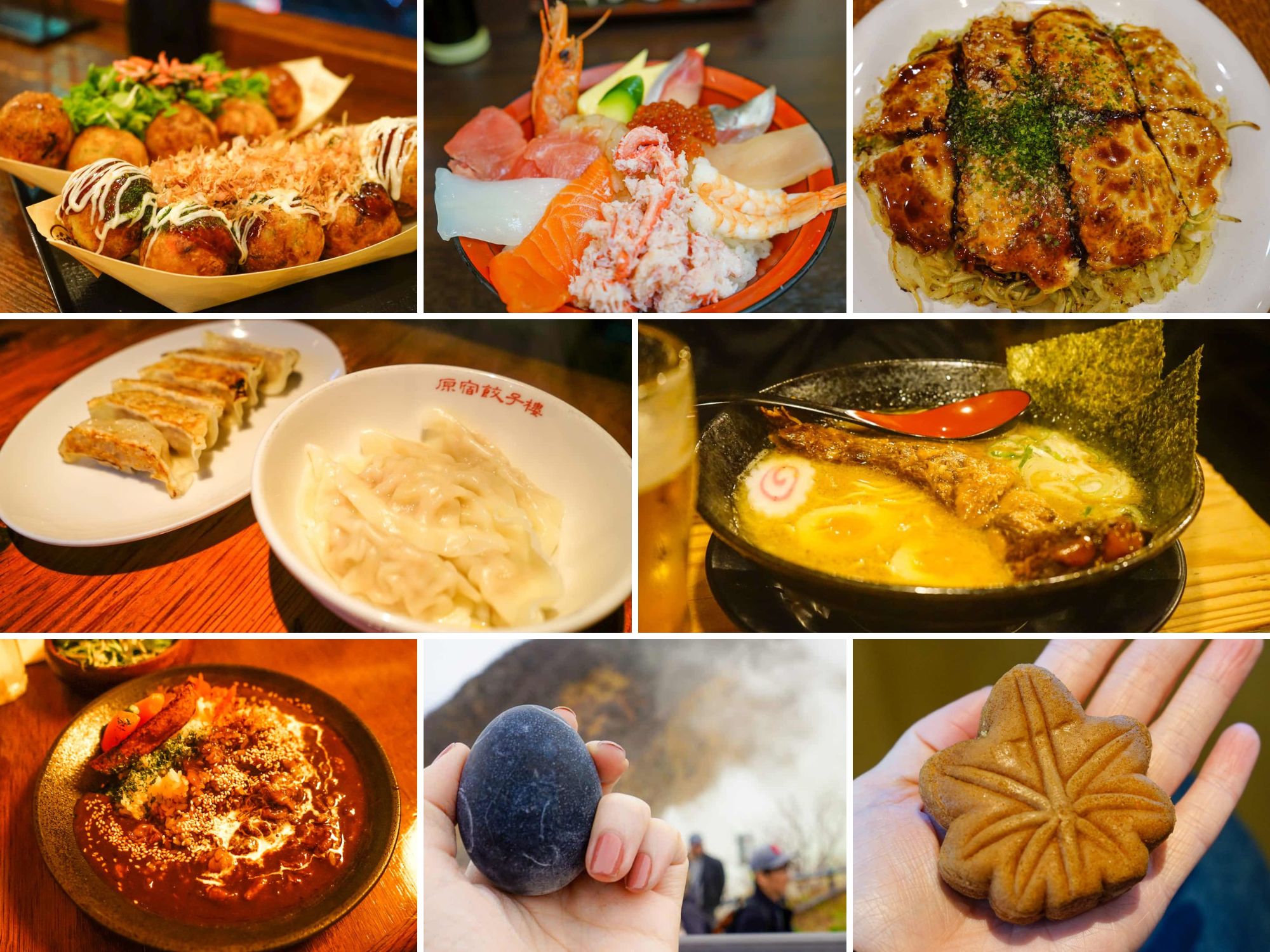
If you love Japanese food but have yet to travel to its homeland, you have such a treat in store for you. The food in this country is phenomenal; packed full of flavour and surprisingly inexpensive. It’s true: eating out is the easiest way for you to cut costs in Japan.
In fact, the vast majority of my meals in this country came to less than ¥1000 ($6.50) .
I’ll start first by breaking down the typical costs that you can expect to spend on the most well-known of Japanese dishes. Then, I’ll cover what you’ll be likely to eat for breakfast, lunch, and dinner, along with the costs associated with each of these meals. Finally, I’ll round out the section off by sharing some of my favourite food experiences in the country and describe which options are worth a splurge and which ones you can happily skip.
You can’t think of Japan without picturing sushi, so that feels like the most logical place to start. If you eat fish, this is going to be such a revelation for you! The sushi and sashimi in Japan is better than any I’ve had in the world and it was here that I finally understood how raw fish could ever be described as buttery.
To combine your sushi/sashimi-eating with a cultural experience, head to Tsukiji Outer Market in Tokyo or Omicho Market in Kanazawa. For a bowl filled with a selection of sashimi, like in my photo above, you’ll pay between ¥1,800 and ¥4,000 , depending on the size and quality of the fish. That’s the equivalent of $12-$25 .
Slurping on a steaming bowl of ramen is my personal definition of a true travel joy, so I opted for this cheap and cheerful dish most evenings as a way to save money. Note: the ramen in Japan is incredible , so don’t interpret my frugality as a hardship. Once you’ve tried the ramen here, I’d be surprised if you didn’t immediately start planning a return visit.
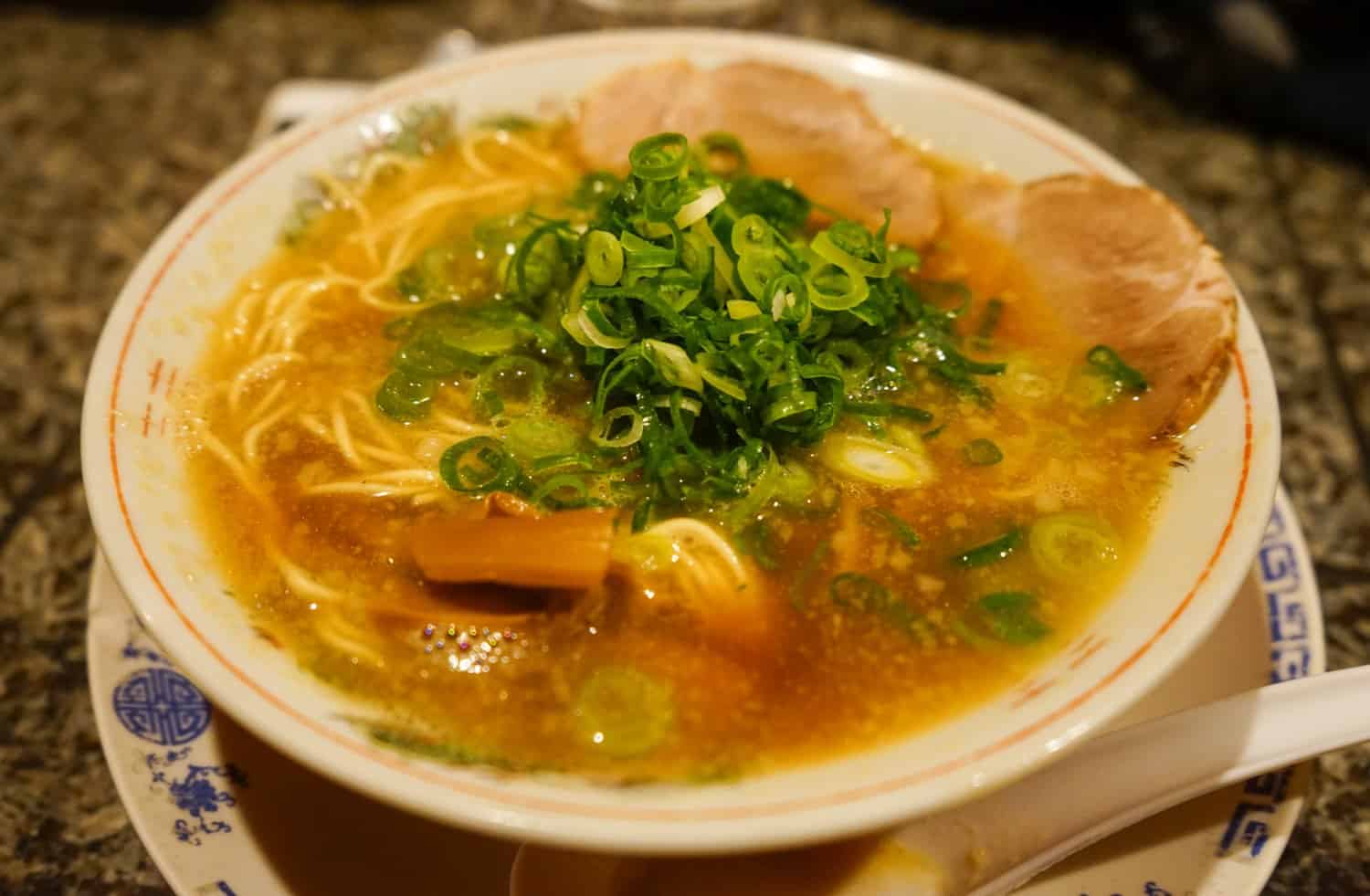
One of my favourite aspects of ordering ramen in Japan is how you’re given the option to customise the dish to your own tastes. It’s not uncommon to be handed a small slip of paper where you’ll get to mark down all of your preferences. Do you want your broth to be rich or light? Your noodles to be firm or soft? Added spiciness or none at all? Extra spring onion? A hard- or soft-boiled egg? Most options come out to ¥1000 ($6.50) for a bowl of pork ramen.
Speaking of cheap and delicious food options, I highly recommend sampling a couple of versions of okonomiyaki while you’re in town. This savoury pancake dish is so delicious, extremely filling, and inexpensive at just ¥1000 ($6.50) – ¥1500 ($10) . The cities of Osaka and Hiroshima each offer up their very own version of okonomiyaki and strong opinions are held by many over which is best! If you’ll be heading to both destinations, make sure you try one of each and let me know which is your favourite.
A dish that I tried for the first time while I was in Japan was Japanese curry and what a wonderful experience that turned out to be! In comparison to Indian curries, I found the Japanese version to be richer, sweeter, and less creamy, with plenty of umami vibes. Once more, you can expect to pay ¥1000 ($6.50) for a plate of katsu (pork cutlet) curry.
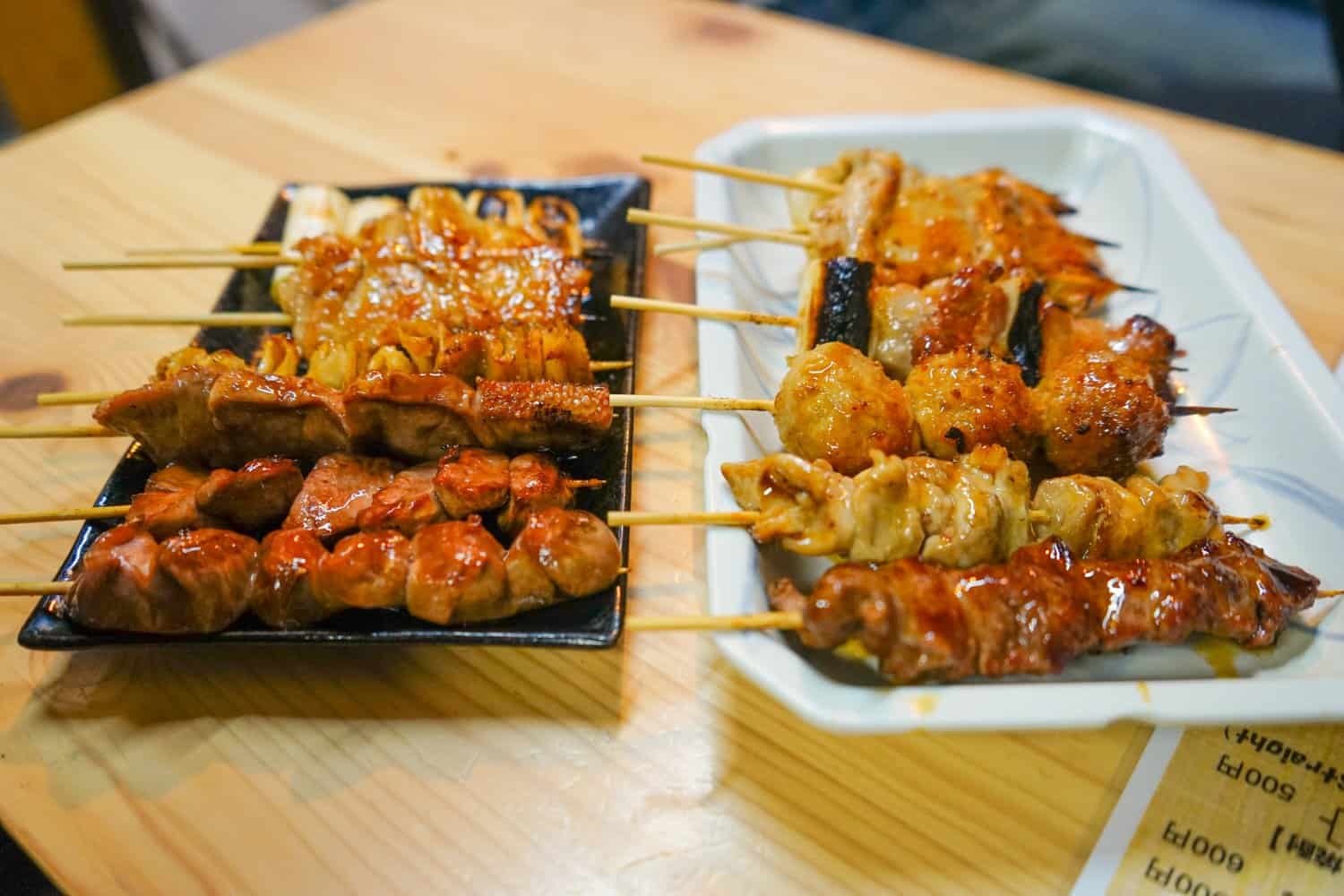
One of the most delightful aspects of my Japanese eating experiences was sampling all of the different snacks in the country.
Street snacks like takoyaki were ¥500 ($4.50) . We splurged on our kaiseki experience at our guesthouse in Yudanaka and paid ¥4000 ($36) for our food extravaganza. It’s a budget option compared to many other kaisekis, which can easily come to $100 for the experience, but still our most expensive meal. Another splurge was on sushi in Kanazawa, which I paid ¥2000 ($18) for.
Whether you’re on a budget or ready to splurge, it’s essentially impossible to eat badly in Japan. If you’re on a really tight budget, you can even get surprisingly decent food from 7-Eleven !
My total cost of food in Japan averaged out to $23.20 per day.
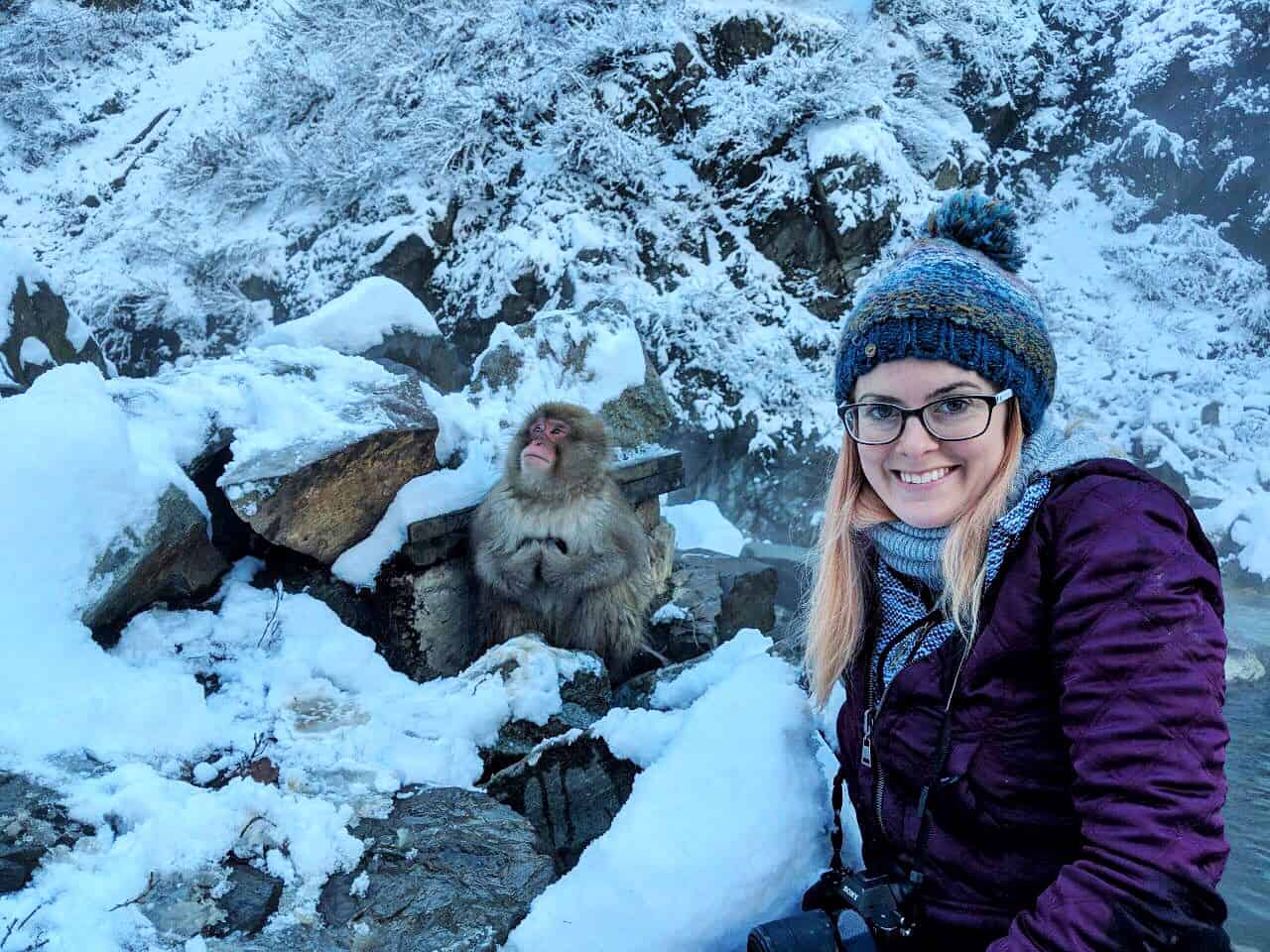
The Cost of Activities and Entrance Fees in Japan
Activities and entrance fees in Japan were very reasonably priced, and I never found myself outraged over the cost of anything. You’ll typically pay less than $5 to enter most temples, museums, and gardens.
Here’s how I spread my cash around:
Entrance fee for the hedgehog cafe in Tokyo: $13/1400¥ Entrance to the Snow Monkey Park : $7/800¥ Entrance to Kenroku-en gardens in Kanazawa: $3/310¥ Entry to the Golden Pavilion in Kyoto: $3/300¥ Entry to Ryoan-ji zen garden in Kyoto: $5/500¥ Ticket for the Hiroshima Peace Memorial: $2/200¥
My total cost of activities in Japan averaged out to $2 a day.
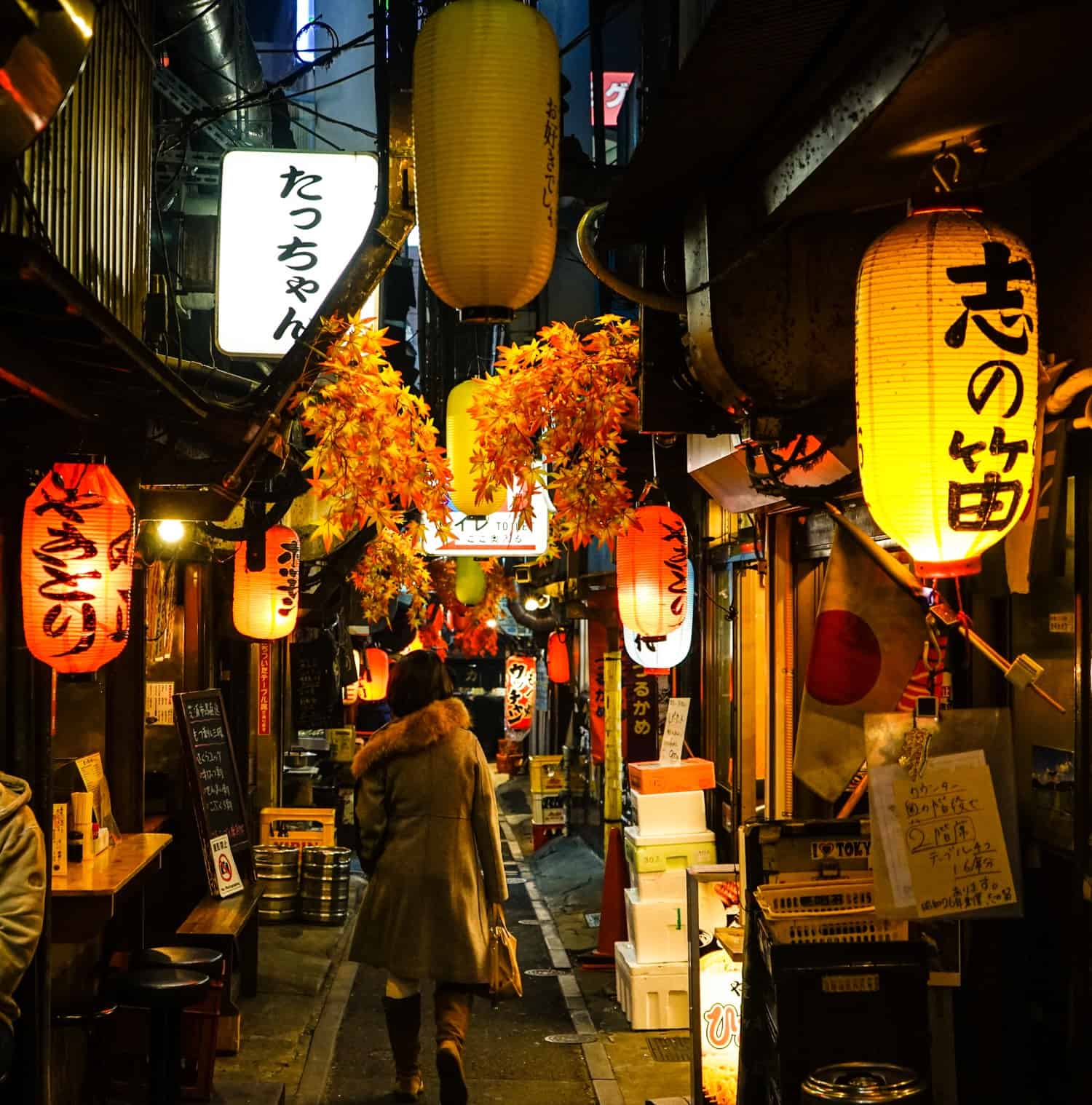
Miscellaneous Expenses in Japan
A local SIM card: $14
I mentioned above that I was able to buy a local SIM card when I purchased my rail pass. If you aren’t going to be using a rail pass in Japan, I recommend taking a look at Airalo instead. Airalo is a company that sells local e-SIM cards for travellers. What that means is that you can buy a virtual SIM card online before you arrive in Japan, and then as soon as you land in the country, can switch on your data and start using it.
It’s worked flawlessly for me and I’ll never go back to physical SIM cards. It’s just so easy! You’ll pay $6 for 1 GB of data or $14 for 3 GB for Japan and can also top-up through the Airalo app.
If you’re going down the Airalo route, just make sure your phone is e-SIM compatible first (all recent iPhones and many Androids are).
Insight Guides guidebook to Japan: $10
My sister bought me this guidebook as a gift before I left for Japan and at first I was like, Insight Guides? Meh. I wish she’d got me the Lonely Planet instead. Then when I opened it up and started reading, I swiftly discovered that Insight Guides are my new favourite guidebook company. It was so, so useful!
What I love about Insight is that their books focus heavily on the history and culture of Japan, with big, beautiful pictures, tons of information about local customs, food, and how to travel responsibly and respectfully. I recommend picking up a copy before your trip to Japan, but not taking it to the country with you — they’re big and heavy, so this is one for inspiration, planning, and education.
Luggage storage at Snow Monkey Park near Yudanaka: ¥500 ($4.50)
We had our backpacks with us when we visited the snow monkeys, so utilised the on-site storage facility while we hiked up the mountain in the snow. You can also hire snow shoes and winter gear if you’re unprepared for the climb, but I was fine in my totally impractical sneakers.
Travel insurance for 16 days in Japan: $60
If you’ve read any other posts on Never Ending Footsteps, you’ll know that I’m a great believer in travelling with travel insurance. I’ve seen far too many Go Fund Me campaigns from destitute backpackers that are unexpectedly stranded in a foreign country after a scooter accident/being attacked/breaking a leg with no way of getting home or paying for their healthcare. These costs can quickly land you with a six-figure bill to pay at the end of it.
In short, if you can’t afford travel insurance, you can’t afford to travel.
Travel insurance will cover you if your flight is cancelled and you need to book a new one, if your luggage gets lost and you need to replace your belongings, if you suddenly get struck down by appendicitis and have to be hospitalised, or discover a family member has died and you need to get home immediately. If you fall seriously ill, your insurance will cover the costs to fly you home to receive medical treatment.
I use SafetyWing as my travel insurance provider, and recommend them for trips to the Japan. Firstly, they’re one of the few companies out there who will actually cover you if you contract COVID-19. On top of that, they provide worldwide coverage, don’t require you to have a return ticket, and even allow you to buy coverage after you’ve left home. If you’re on a long-term trip, you can pay monthly instead of up-front, and can cancel at any time. Finally, they’re more affordable than the competition, and have a clear, easy-to-understand pricing structure, which is always appreciated.
With SafetyWing, you’ll pay $1.50 a day for travel insurance.
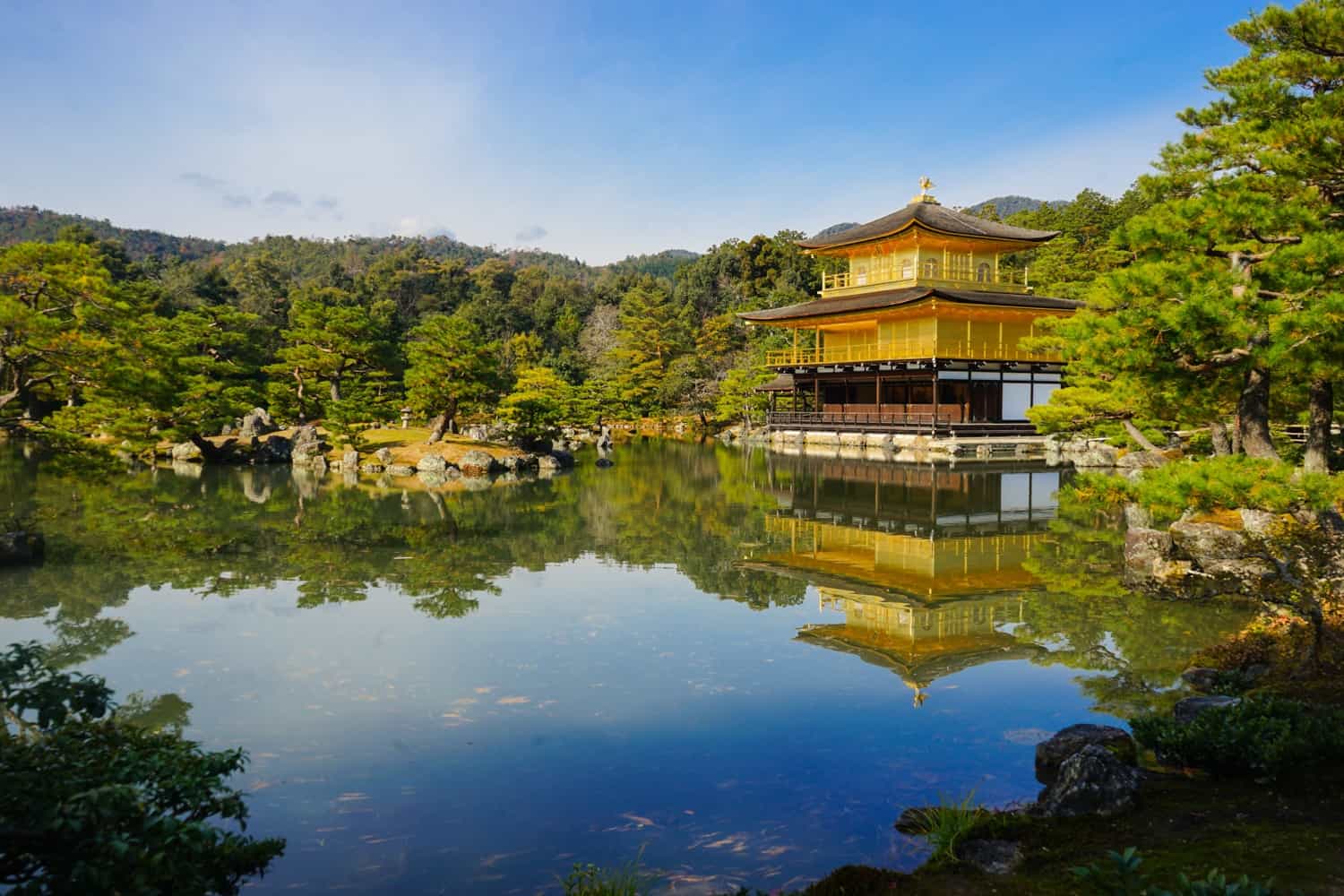
How I Track My Expenses While I Travel
Every time I share my expenses, you guys always want to know how on earth I manage to keep track of so many details from my travels!
Because Never Ending Footsteps is my company, the vast majority of my travel expenses are business expenses. I therefore studiously record everything I spend everywhere I go. I take photos of every receipt I receive and use Xero accounting software to record these expenses. In cases where I can’t get a receipt, I’ll take a photo of the price list and my ticket or food, or something as evidence.
Once a week, I then sit down and spend an hour or so uploading my receipts to Xero and making note of every penny I spent in each country I visit. It makes writing these posts super easy!
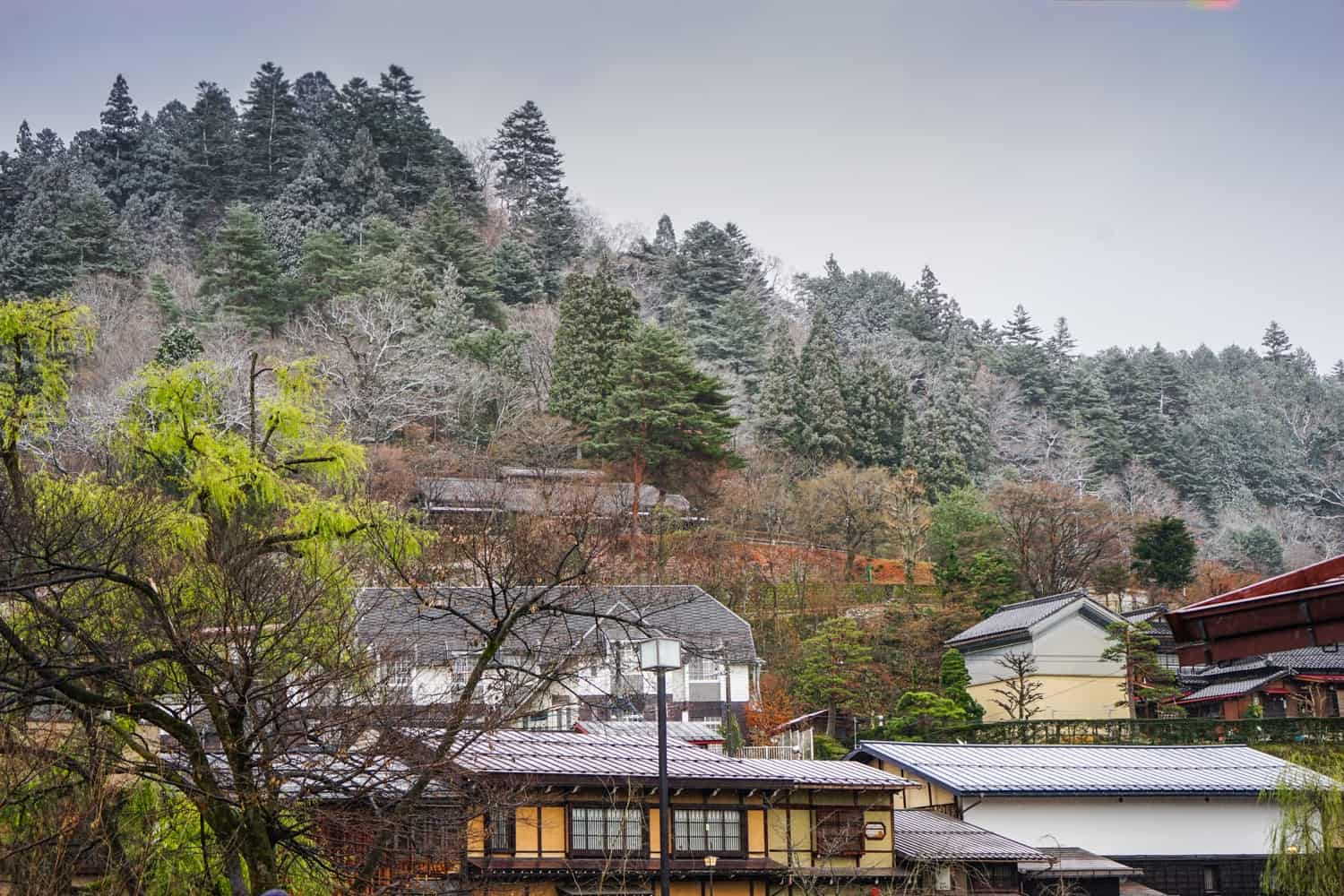
How Much Does it Cost to Travel in Japan?
It’s time to tally up all of my expenses to see my total travel costs!
Accommodation: $97 per day Transportation: $27 per day Food: $23 per day Activities/Entrance Fees: $2 per day Miscellaneous: $2 per day
Average amount spent in Japan: $151 a day!
I don’t know about you, but given Japan’s pricey reputation, I’m fairly impressed with the amount I spent in the country, especially as I included quite a few splurges in there.
How about you? How expensive were you expecting a trip to Japan to be?
Related Articles on Japan 🇯🇵 What’s it Like to Travel in Japan? 🏯 How to Spend Two Weeks in Japan: An Itinerary for First-Time Visitors 🍣 15 Weird and Wonderful Things to Eat in Japan 🎌 23 Incredible Things to Do in Osaka, Japan 🗼 21 Spectacular Things to Do in Tokyo, Japan 😎 Hipster Harajuku: The Coolest Neighbourhood in Tokyo 🦔 Should You Go to a Hedgehog Cafe? My Experience in Japan 🐒 Why Seeing the Snow Monkeys in Japan Sucked
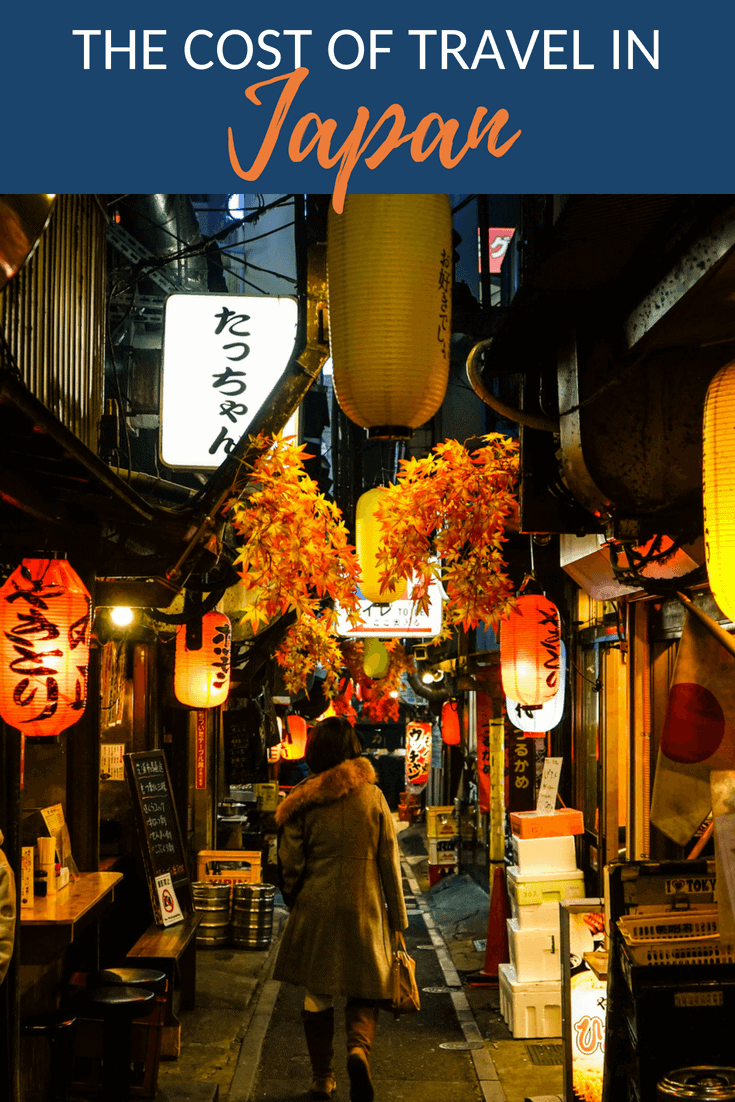
Lauren Juliff
Lauren Juliff is a published author and travel expert who founded Never Ending Footsteps in 2011. She has spent over 12 years travelling the world, sharing in-depth advice from more than 100 countries across six continents. Lauren's travel advice has been featured in publications like the BBC, Wall Street Journal, USA Today, and Cosmopolitan, and her work is read by 200,000 readers each month. Her travel memoir can be found in bookstores across the planet.
Related Posts

The Cost of Travel in Mauritius: My Detailed Budget Breakdown

The Cost of Travel in Thailand: My Detailed Budget Breakdown

2023: My Travels in Review

The Cost of Travel in South Korea: My 2024 Budget Breakdown

How to Spend Three Perfect Days in Delhi: An In-Depth Itinerary

Pushkar Travel Guide: 11 Things to Do in Pushkar
106 comments.
Wow! that’s amazing. I especially got fascinated seeing the capsule hotel…must have been a unique experience.
It was surprisingly cosy! I would totally stay in one again.
Thank you so much for your information. We will go to Japan in October 2023 for 1 month. Have paid fully for 16 days. Using your guides to budget the remaining 2 weeks. Thanks again.
This is great! Do you think it would be much more expensive in summer or any of the peak holiday seasons? I’m going over July this year and wondering if the prices change much with the seasons.
Wow! That’s quite an eye-opener! I’ve wanted to visit Japan for years, and this has certainly nudged me a little closer, as I assumed it was expensive too. The costs seem much better than I found in Amsterdam this spring! (my boyfriend still gets a thousand-yard stare when I mention how much we paid for drinks in one bar.)
Yay! Yeah, it really did feel about the same price as Western Europe, if not cheaper. The transportation is more expensive, but the food was cheaper in Japan.
This is super awesome! I, too, was under the impression that Japan was a super expensive place to visit! Good to know that you can save so much on accommodation and activities! Are you going to be posting about food in Japan? My knowledge of what to eat there is very minimal…
Yes! I published a guide to my favourite things to eat in the country last week: https://www.neverendingfootsteps.com/best-food-japan/
Ditto for here in New Zealand Lauren. All said it would be expensive. But we house sat – rent-free – and saw that food and travel are on par or cheaper than New Jersey. We also saw that virtually all things are cheaper than folks said. Methinks many labeling Japan and NZ as expensive as can be are used to paying $1 for lunch in Chiang Mai LOL. Budget folks see all Western lands as expensive. Granted I am from NJ; living by NYC makes for a high cost of living. But not bad at all, living in these lands.
Yeah, definitely true. I know that when I wrote off Japan as being too expensive, it was in the early days of my travels, when I could only afford to live in Southeast Asia!
Loving the posts about Japan so far. Do you have many more articles planned? I’ve a trip booked in November and this has been the most useful of the blogs so far for help in planning – thank you. Although I’ve had to cut the hedgehog cafe off my plans after reading your article as I hadn’t quite considered the ethics enough!
Yes! So many. I’ll probably post another half a dozen or more over the next few weeks :-)
I always assumed Japan to be very expensive. Thanks to your blog I don’t anymore. Cheers!
This is all very useful info! I’m impressed with your budgeting skills. Awesome, Thanks for sharing this!
Ha! Thank you :-) It comes naturally (finally) after seven years of doing this.
Great article. I’m planning a visit for early 2025 to go with my grandson … was the budget breakdown for one person or a couple … because you mentioned going with your partner?
The accommodation prices are the total cost of the room (rather than just my share), while the transportation, food, and activities are all my share of the costs.
Fantastic article. Love your budget posts because you never leave anything out.
I try not to! Thanks so much :-)
Beautiful photos, Japan look amazing and thank you for sharing your budget tips as well. :)
No problem! :-)
Thank you so much for this! I’m going to Japan in September and I’ve been worrying about my budget. This has definitely put my mind at rest!
Yay! Happy to hear that :-)
I’m so happy that you have posted so much lately, you’re my favourite travel blog and I check this page a lot more often now that the pace of the posts has increased :)
Thank you! :-) I’m aiming to stick to a three-times-a-week posting schedule now that I have a base and more time to dedicate to writing.
This is so much cheaper than I expected. Do you have any idea about prices for solo travellers though? Would I have to pay for a double room most of the time (apart from dorm beds of course)?
No, lots of hotels and guesthouses have single rooms, so you wouldn’t need to pay out for two people very often, if at all.
Thanks, that’s good to know!
Very useful breakdown that would be very helpful for first-timers to Japan.
Just to share, one of my own major expenditure in JP is … vending machine contribution! I simply can’t resist them and can end up buying seven times a day. “P
Yes! I couldn’t believe how many vending machines there were in the country, as well as the variety of things you could buy from them.
Hello! This is a very timely article for me to read as I’m actually going to visit Japan for a week on September. I really love Japan’s culture and their people. There are a lot of places that I want to visit and a lot of things I want to do but I am on a strict budget. Hopefully, your article would be able to help me fix my budgeting for my trip to Japan.
I hope so! I really didn’t find it horrendously expensive, so I think you’ll be surprised by how much you can do there for free.
I love your budget posts because they give me such a good idea of how much I can expect to spend in places around the world. Are you thinking of doing them for everywhere you visit?
That’s my plan! I’m slowly working my way through my records and adding more and more to the site.
Hey, thanks so much! :-)
I’ve planed to visit Japan next year, Thank you for sharing your budget, I’ll try to not exceed 100$/day, following your information on this post.
Have a fantastic trip, Ingrid! :-)
Which month you visited Japan? I am thinking for Cherry blossom (April 2019) and everything is coming up too expensive. Are those above for cherry blossom season you visited?
Ah yeah, unfortunately, the cherry blossom season is the most expensive time of year to visit Japan. I was there in December, so prices will be higher than the ones mentioned in this post. I’ll add that detail to my post now!
I was under the impression that Japan was a super expensive place to visit! Good to know that you can save so much on accommodation and activities! This article includes all the places you can visit in Japan and their expenses. It is very educative and it can be improved by providing expenses in INR. Thank you for posting this useful information.
Thank you! I usually just price these articles in the local currency and USD, which is where the vast majority of my readers are located. If I started including currencies for everyone, the post would quickly get ridiculous :-)
Seems a dumb question, but I’m assuming all the values are in USD, is it correct?
Yep! I write at the start of the post: “The amounts in this guide are listed in Japanese Yen and U.S. dollars, simply because the vast majority of my readers are from the U.S.”
That is a very good breakdown cost analysis there. i am planning to go to japan as well with my wife. and planning to stay for 10 days only. 4 in tokyo 3 in kyoto and 3 in osaka. i like to idea of 100 aud / day it’s a good target to keep but i guess the expense on buying cloths and souvenir would be uncontrollable though i heard things in japanese is not that dear if you know where to shop and avoid tourist trap. i didn’t see you mention buying internet data in advance ? or i missed it somewhere. i guess the expense for a couple will be double up. but i guess 3000 aud for 2 people is unavoidable.
amazing detailed guide
You’re welcome!
I’m so glad I found your website! I love the detail and photos. I just booked a trip to Japan with my boyfriend for this upcoming October, and your site will be very helpful. Question: do most hostels and accommodations that you experienced have you sleeping solo? I’m wondering if I should expect to sleep in a separate area than my partner for most of the trip…
Hi Lauren, Thanks for such a detailed description of your time in Japan! I’m going to Japan October this year with my wife and my major concern is how you managed to book sleeping pods for you and your boyfriend as almost all accommodations are either “male only” or “female only” from the options I’ve seen so far. Did you have to get separate beds for those nights?
Yeah, the capsule hotel-style accommodation is all single beds. You can see in my photo in this post that there’s not much room for anybody else!
My wife and I are heading to Japan in mid May and I plan to use your itinerary.
Would it be possible for you to write something about the travel logistics if you can remember them – ie to get from Tokyo to Mt Fuji we booked the following train, leaving at…from the following platform which took X hours and arrived at Mt Fuji at. We then bought our day pass from….and ……..
This would be really helpful to me and other independent travellers – from where did you buy your JR pass and how did you book your individual train rides?
Cheers Paul
Oh, man. That would take me hours and hours to put together and I’m sure times and platforms change so it would be impossible for me to keep the information up-to-date and accurate.
I recommend downloading the mobile app Hyperdia — you can plan your train travel out using that. Just enter in your destinations and it will tell you which train to take and from which platform. Super easy to use! :-)
The site I used to buy the JR Pass is this one . I booked the other train tickets in person at the stations when I arrived — there weren’t many that weren’t covered by the rail pass. Just the small regional ones to get to and from Yudanaka, I think.
Hello Lauren, I love the details in your blog. Your expenses were for 1 or 2 people?
I cover that at the start of the blog post: “And finally, these are the expenses I paid while travelling with my boyfriend. That means that accommodation prices (with the exception of the dorm bed in Hiroshima) have been halved to indicate my share.”
Great super helpful article. THANK YOU!
Hi Lauren, Thanks so much for this article, it is so helpful!!! on which dates did you fly to japan? what dates are you recommending on?
I spent the first two weeks of December in Japan. I’d recommend looking at May or September as the best months to travel there.
Hi Lauren I’d love your advice. I’m traveling with my 22yr old daughter to celebrate her graduation and my birthday. I booked the first two nights a hotel in Tokyo and then figured we would VRBO or Airbnb but after reading your post it looks like things have changed. I love the idea of the capsule hotels and the standard tatami mat rooms look enchanting. So how do I search for either? We’d like to experience both for the trip. oh by the way, I’m a traveler too, let me know where in the world are you now. Perhaps we can meet up and collaborate, I do video production, just got back from Colorado and am going to Cancun in June.looking forward to hearing back from you, Peace and Love always, “L” oh let’s connect on IG
Just book them through Booking.com — no need to go to any specific site. I’m in Bristol, in the UK. I actually don’t have an Instagram account — it wasn’t doing good things for my mental health, so I deleted it :-)
G’day Lauren,
Loved your detailed description of your travels through Japan. However; I’m not so brave as you travelling around on my own, especially with the language problem. I am a single traveler from Bangalore, India and would love to spend 7-8 days in Japan, with my journey starting and ending in Tokyo, reasonably priced hotels or local hostels, but preferably single accommodation, if possible. (willing to pay extra).
I love train travel and Japan is one of the best places to do that..your take on that would be appreciated. If you feel, I meet your requirements, would love to get an itinerary and costing for my 7-8 day stay in Japan.
Hello! I am really curious on how you got a 14 days pass JR for only 420$, from where I am from (Canada) it is 567!
If you click the link in the post, you can buy it through there. It’s currently listed for 414 USD.
$95/day seems cheaper than what I had expected – is that a tight budget? What can you do more with $150/day? I’d prefer to spend that extra on living in nice hotels + do more activities. Does that seem possible with $150/day?
No, not really. It was a mid-range budget and all of the hotels we stayed in were nice — I made zero effort to stick to a tight budget.
Hope you’re well. I’m wondering if you still advise from not booking Airbnb for Tokyo? Thanks.
Until moments ago, I had always assumed Japan to be too expensive to even consider. Never thought the cost of activities and entrance fees would be so cheap. This is an encouraging article, thanks, Lauren!
Really remarkable post, Lauren. Extremely thorough and helpful. I’m looking to plan a trip to Japan soon and stumbled across your blog. As you clearly hoped from city-to-city, (this may be a silly question) what did you do with your luggage on a day-to-day basis?
Thanks for any insight.
Oh, just left it in my hotels. If I spent less than a full day somewhere, it was visited as a day trip, so I didn’t take my luggage with me. And then whenever I arrived somewhere, I’d time my arrival with the check-in time of the hotel, drop my bags first, then head out exploring.
great article! As I have said in the past you always put out great stuff that’s very valuable information.
I just came across your website when searching for trips for Japan for my son. I have to say I am really so happy and want to thank you so much for the information. My eldest son has been taking Japan as a language course for the last 3 years and was looking forward to trying to get into the high school Japan trip in end of july beginning of August 2020. He also wanted to go to TUJ(Temple University Japan).
However, because of the olympics the high school Japan trip has been canceled for 2020. Unfortunately, he will be a senior next year so the 2021 high school program will not be available for him. Plus going to olympics are so expensive. If you can give me any advice, I would greatly appreciate. Thank you so much in advance for your time!!!
What advice do you need? About what?
Hi Lauren, I really liked you post and I think is really helpful. When exactly did you go in Japan? We have to change our plans for next February (previous planned for Philippines but to risky for my wife pregnancy) and we consider to go in Japan instead. So, do you think it is good idea travelling in Japan in February? Thank you and advance.
I went during the first half of December. As long as you keep in mind that it’ll be pretty cold (5-10 celsius), I think it’s a great time of year, as it won’t be as crowded as peak season.
is it favorable to use credit card or cash is much preferred? thanks
Hi. Thank you for the information! I am so inspired to go to Japan now. My mom who was from Japan, always told me it’s too expensive to go back and visit. I am now 56 and it has been my lifelong dream to go. My husband and I will go with backpacks like we did when we were younger and before having kids. Is October a good time to go? I read September can be humid. I want to follow your itinerary for the most part. My mom lived in Kanazawa. My heart is full right now and my eyes are misty. Thank you for making my dream a little bit closer.
Hey Lauren!
Thank you so much for the information. I actually got invited on a delegation to go to Japan this evening and am trying to get the average cost to travel in the country. Obviously, your trip was on a very impressive budget. I have two questions, 1. Based on the $95/day over the course of your 16-day trip, would it be right to say that (flight included) you only paid ~$1,600 for your entire trip? 2. Would you say for a trip including cultural experiences, transportation and stays in nice hotels for a week, a grand total of $3,700 is reasonable?
In advance, I appreciate your advice on this!
Hi Lauren, Are you able to name all the accomodations you stayed with? I would like to visit Japan next year on a very tight budget. Thanks.
Yes, they’re already linked in the post along with the reviews of them under the accommodation section.
Hi Lauren. I’m debating spending 5 nights in Osaka and doing day trips to kyoto, nara and himeji castle. (I have hotel points where i can stay at osaka). Based on your experience – is that ok? or is better to stay 2 nights in Osaka and 3 nights in kyoto. There is a lot of different opinions online, thought id ask you if you think i’d be missing out on anything if staying in osaka. The one plus is i can save some money if using points and also staying in 1 location for 5 nights vs packing and moving to another location. Thanks so much for your posts!
Hey i found this really helpful but I’ve been planning to visit japan for a while and have hopes of going after i graduate high school. With some research i found that the JR pass isn’t needed if you’re just staying in one city. How much do you think i would spend on transportation for 2 weeks in Tokyo? Will it come out to more than what you spent or less?
Definitely less! You can walk to a lot of places, but otherwise the metro won’t cost much at all — a dollar or two per trip.
Would you be able to give recommendations for food places in Kyoto that are affordable.
Hi Lauren. Came across your site on a Google search for budget travel. It convinced e that a trip to Japan is affordable. Never have done international travel and would like your advice on a couple of things. 1. What is the best way to pack? Do I have to just use a back pack? 2. Can I use a credit card or should cash be used? 3. Can I get cell phone coverage in Japan.
Thanks, you site is great!
1) I prefer to travel with a backpack, but you’ll do okay with a suitcase, too. I personally find backpacks easier for navigating train stations, as you don’t have to drag it up and down stairs, etc. It doesn’t really matter either way, though. Depending on how long you’ll be staying there, I usually pack for a week no matter how long my trip is, then do laundry once a week.
2) Japan is mostly cash-based, so plan for lots of trips to the ATM. I didn’t find many places that accepted cards, although I also wasn’t looking very hard either.
3) Yep, you can pick up a local SIM card at the airport when you arrive. I bought mine through the rail pass company I link to in this blog post, but you can also just buy one when you arrive. Super easy to do and they’ll get it set up for you in the shop, too.
Love your posts! have been browsing but when I stumbled upon your page found it really helpful! Planning for Japan and Singapore so finding both blogs is perfect timing :) We are still not sure if the JRpass will help us- when we did calculation for the main routes we are going it resulted not worth it, however then not sure if we will require any additional rails/trains in between these. Tokyo>Hakone>Kyoto> Osaka without returning back… your input will be appreciated :) P.S. Feel free to visit the island of Malta, my home country
Wooow !! This is amazing , My wife and I have been planning to visit japan and we always had a misconception that Japan is expensive to visit .. This is a great blog .. So the overall cost including your flight tickets and local travel in japan would cost around 2500 $ per person ?
This was so incredibly helpful! Normally I don’t find myself reading entire articles but yours was so informational and in depth. Thank you so much for helping me get an idea of how much I would roughly spend!
Ah, no problem! Thanks for reading, and I’m glad you found it useful :-)
I super love this article Lauren! I thoroughly enjoyed it. When all is well and my country allows us to travel again, this is going to be on my top 3 places to visit (the 1st 2 will be diving spots as I’m a freediver). I made sure to bookmark this page for reference. Again, thank you for writing this. One question though, when you say $ do you mean USD?
Yep, USD! “The amounts in this guide are listed in Japanese Yen and U.S. dollars, simply because the vast majority of my readers are from the U.S.”
How much did you spend on transportation in Tokyo? I mean if you hadn’t had the JR Pass? How much did you save in Tokyo by having the pass?
Oh, I didn’t activate the pass when I was in Tokyo — I activated it on the day I left — so that was my total expenses without using it.
Hi Lauren! I just read your post. My boyfriend and I are backpackers and we are planning our next trip to Japan. I wanted to ask you when did you go there? (what time of the year). Because we can only take time off during winter time (dec-jan) and I don’t know if that’s a good time of year to go. We are from Denver and snow doesn’t bother us but we also want to enjoy it.
Thanks in advance! Love your blog
I was there in December! There’s fewer crowds then, which makes it a great time to go! As an added bonus you get to enjoy all of the cosy onsens in the snow :-)
Even in these unprecedented times, I feel as if I have already traveled to Japan! I loved every minute of the information you gave me. This place is definitely next on my list, of course! It can be months or a year from now.
It appears you’re still getting traffic in the comments here (excellent) so I thought I would ask a broad question. Wife and I are thinking to take our 6 and 9 year old to Japan for about 11 days. Any destinations you might leave off your itinerary given a bit less time and traveling with kids?
Fantastic! I’ve never seen any article about travelling to japan so specific and detailed before!! It sure will help me prepare for my own first&solo trip! thank you so much
Great post, but the prices are wildly outdated now. Your $30/night hotels in 2018 are going for around $220/night in 2023. Insane!
Hi CS, what time of year are you looking to visit? I’ve had a quick check and every hotel I link to still displays roughly the correct prices (a couple were out by about $10-20 a night, but nothing like $190!). If you’re looking at going in May, for example, Hakone Tent prices their rooms at $176 a night, but then offers rooms at a price of $73 a night a month later in June, so the time of year can affect the pricing. I’ll make a note to mention this in a future update to the post.
I visited in the low season, in December, so the prices I paid were lower than they might be at a more popular time of year.
This is amazing on every level. Thank you! only issue is prices for accomodations double during sakura season so what can I do
Thank you Lauren, for this insightful and complete post.
Out of curiosity, do you know what was the average USD/YEN exchange rate when this trip took place?
Kind Regards,
I update the prices in this article every two months so the exchange rate used in the post is recent
How recent was your travel to Japan and what exact dates were you there? I’m planning to take my family of 4 there in 2025 and would like to schedule it during cherry blossom season. I heard prices usually go up during this time so I was wondering if your trip happened during peak or off-peak season.
I was there in December. Prices do increase a lot during cherry blossom season, unfortunately — that’s the most expensive time to visit.
very good post for budget travellers. thanks for sharing.
Leave a reply Cancel reply
Your email address will not be published. Required fields are marked *
Meet Lauren Juliff

How Much Does a Trip to Japan Cost? Average 2024 Budget
Japan is a great first destination for American tourists looking to travel to Asia. It offers a unique taste of East Asian culture, in a highly-developed, Western-influenced setting. If Japan is on your bucket list but you are wondering “how much does it cost to go to Japan?”, that answer can sometimes be a lot. The Japan trip cost is the main reason it took us so long to finally take a family trip to Japan.
The bottom line is that the Japan trip cost for a two-week trip for a family of four, staying in four-star level accommodations with a few paid activities will cost about $13,420 or $280 per person, per day.
However, while Japan is an expensive country, there are options for budget travel in Japan. The trip to Japan cost depends on your travel style, but it need not be as expensive as you thought. This Japan trip budget breakdown will show you how and where to save on your visit. I will cover the cost of airfare, intra-country transportation, accommodations, food, and activities .
Planning a trip to Japan
Japan has so much to offer, but for a first trip, splitting your time between Tokyo , Kyoto , and maybe Osaka over two weeks in Japan is best. I’ve created a 14-day Japan itinerary and you can also see my friend Vaness’a suggestions for two weeks in Japan .
Your first experience with Japan is a total assault on the senses, so you really should slow down and stick to just a couple of destinations. If you return, you can then follow this longer 3-week Japan with kids itinerary or visit places like Hokkaido, the western coast of Honshu and Kanazawa, Shikoku, and Okinawa. Be sure to also read my Japan travel tips .
How much does a trip to Japan cost?
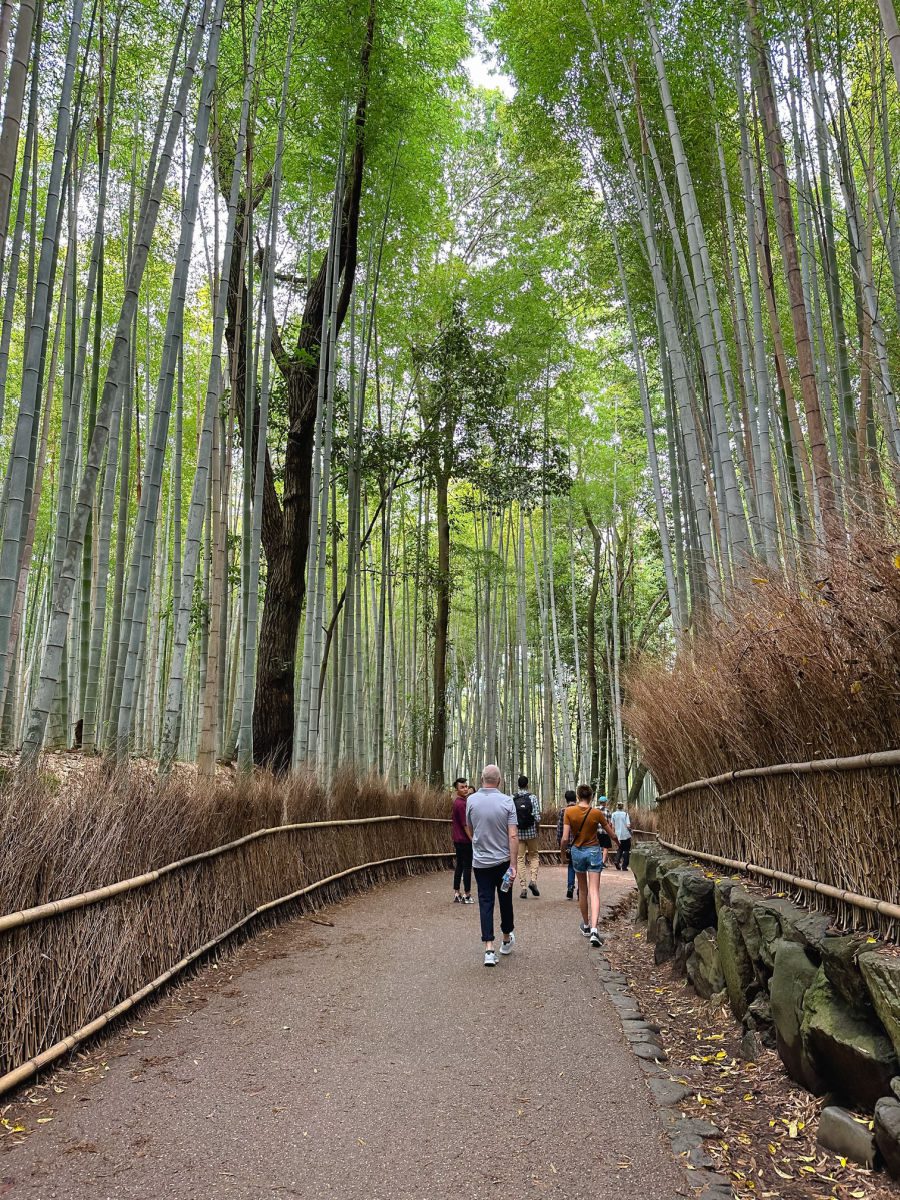
Note: This post contains affiliate links. If you click a link and make a purchase, I may receive a small commission at no cost to you.
I based this budget on my personal experience of what it costs to travel to Japan and broke it down by airfare, accommodations, transportation, activities, and food. This breakdown assumes you are visiting Japan with kids for the following:
- A family of four with two adults and two kids under 12
- Two-week trip, including two travel days, with 12 nights in Japan
- Five nights in Tokyo, five nights in Kyoto, and 2 nights in Osaka
- Traveling during high or shoulder seasons (although not the top peak travel dates during Cherry Blossom season, then you can expect to pay premium pricing across the board.)
- Independent travelers that are comfortable exploring on their own and not looking to book a package tour or use private guides
Airfare to Japan
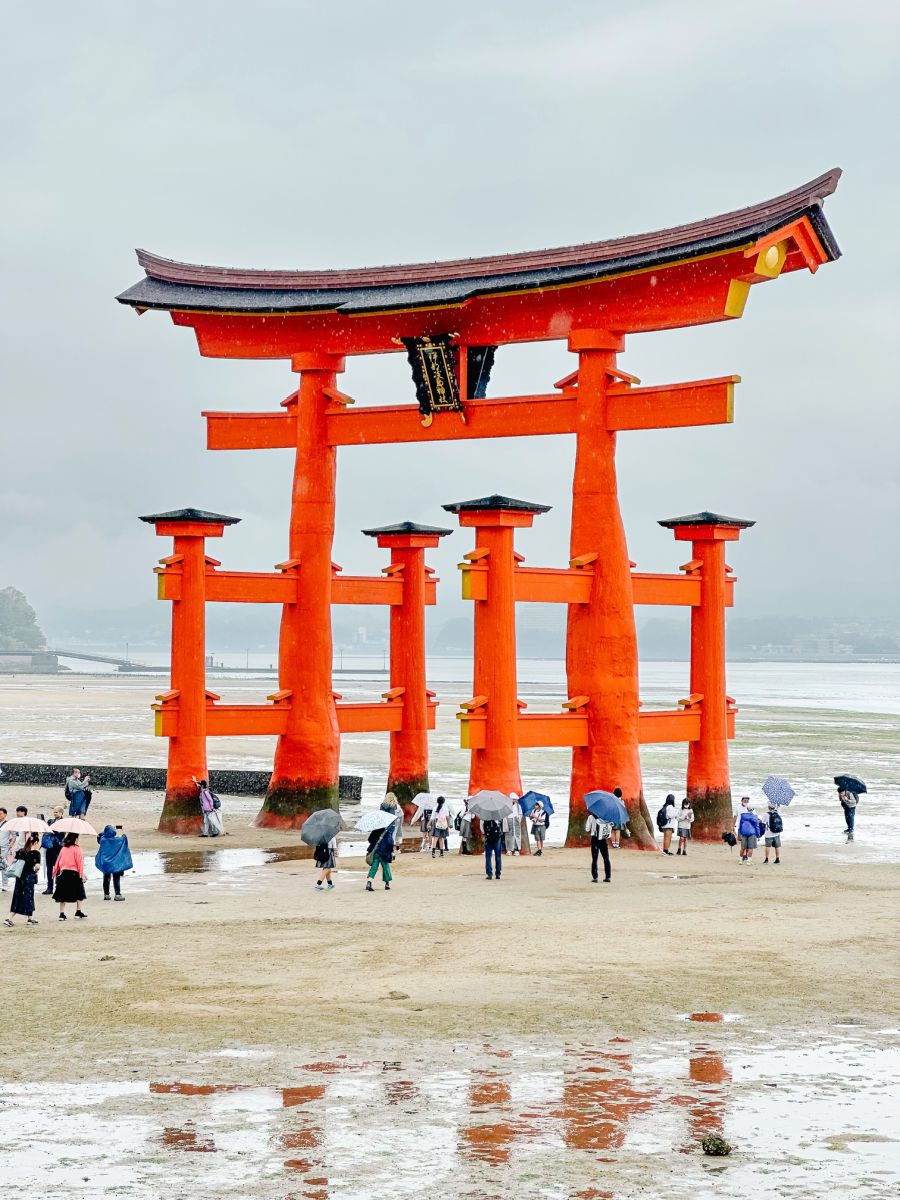
The first big expense for a trip to Japan is, of course, airfare. Economy class flights to Japan from New York during shoulder and high seasons will likely start at around $1,300 per person and easily go up to $2000. We paid about $3,200 per person to fly Delta from Boston to Tokyo through Detroit (but we used points for one flight at least!)
Air Canada and Delta with layovers in Toronto and Detroit, respectively, are common offerings at a price point like this. If you are looking to fly nonstop to Japan on United or one of the more upscale Asian carriers like Japan Airlines will probably cost around $2,000 from the East Coast.
West Coasters might find slightly cheaper fares, but whichever coast you start from, it is a good trip to use your frequent flier miles and points as that will really help with your Japan trip budget. It is best to book airfare at least six months in advance, or as early as possible.
I also highly recommend signing up for a membership in Going , to get alerts for flight deals to your dream destinations.
If you want to find the best way to accumulate points and miles through credit card spending and sign up bonuses, I’d suggest downloading the Travel Freely app to track your credit cards and learn how to earn points.
Total airfare cost: $1,300+ each x 4 travelers= $5,200
Accommodations in Japan
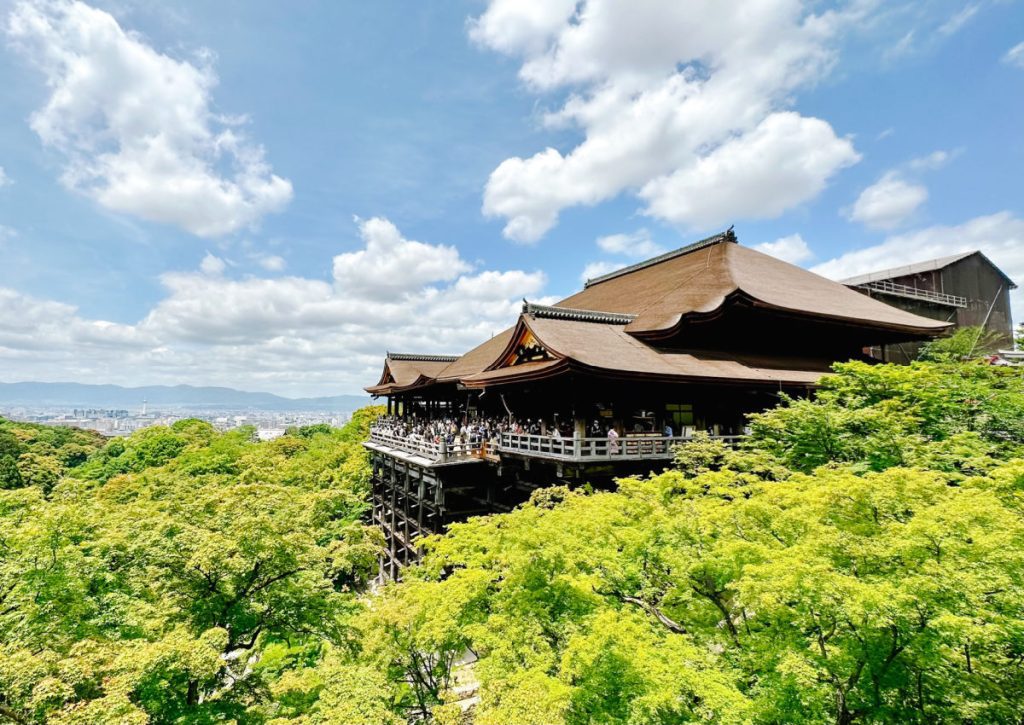
The good news is that airfare is definitely the most prohibitive cost for a trip to Japan. The accommodation are pricey when staying in big cities, but there are plenty of budget options (including those tiny capsule hotels). A night in a 4-star hotel in Tokyo will range anywhere from $250-$450 per room, with an average of $350 per night for a room large enough to sleep four. Just keep in mind that if you stay in a Japanese-brand hotel, the rooms are going to be quite small, be sure to check square footage.
We enjoyed our stay at the Hilton Tokyo , because it was a great location for using public transportation and the rooms were spacious and the full-service hotels had good amenities like free breakfast for Club level rooms.
Find a Hotel in Tokyo :
Hotel prices in Kyoto are wider-ranging, perhaps because there are far fewer options than in Tokyo. The overall average comes out to about $350 per room, per night for a 4-star property that will fit a family of four.
We stayed at the Hyatt Regency Kyoto , which was accessible to public transportation and walkable to many of the main attractions. For cheaper accommodations, look at brands like the Mimaru .
Find a Hotel in Kyoto:
Osaka is a huge city with plenty of hotel options. It makes sense to stay near one of the main train stations or metro hubs to make it easy to get around. We loved our stay at the Intercontinental Osaka , where we splurged on a two-bedroom, two-bath residence with a full kitchen, living room, and amazing view (they have regular hotel rooms too). If you can book through American Express Fine Hotels with your Platinum card or a Virtuoso travel agent, you can also get perks like free breakfast and the breakfast is amazing!
A typical three to four-star hotel that can accommodate a family in one room is about $300 per night, but could go up to $600+.
Find a hotel in Osaka:
If you are traveling as a family, you will probably want more space than what you find in a typical Japanese hotel room (even beyond the capsule hotels). If you want to save money and get more space, I would recommend renting an apartment through vrbo or Airbnb.
You can get a nice, family vacation rental for about $130 per night (and a really nice one for about $180 a night). The best part is that you’ll have a kitchen and a dining room where you can bring prepared food home to eat or even try cooking yourself, which is helpful for budgeting since eating out in Japan can be pricey.
Rental options in Kyoto are much more limited and more expensive, but it is possible to find something affordable and really cool. A lot of the rentals in Kyoto are in older houses built in traditional Japanese styles.
Total accommodations cost if you stay in hotels: $350 x 12 = $4,200
Total accommodation costs if you stay in apartments: $200 x 12 = $2,400 (but it can be cheaper)
Transportation Costs in Japan
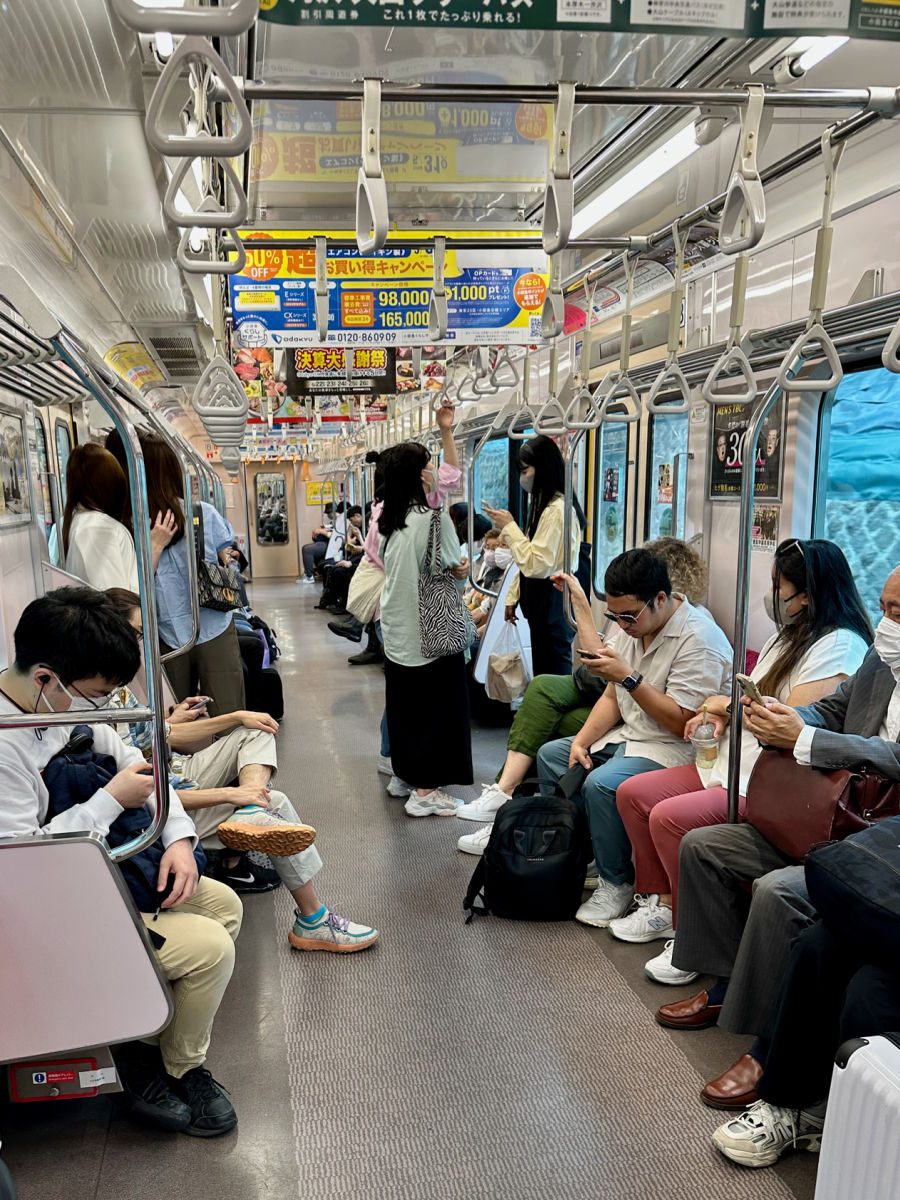
Transportation is another pricey part of traveling in Japan. I don’t recommend traveling by taxi very often in Japan, since they are quite expensive, but there will be times when it is the best choice, especially in the heat of summer. Taxis in Japan work similarly to taxis in the U.S., charging a higher starting fee for the first couple kilometers of travel with additional costs added on for any further distance.
For example, you will be charged about ¥500 for the flat fare and an additional ¥200 for each additional kilometer. (Japan Guide gives a detailed explanation of how taxi fares work in Japan.)
Japan’s public transportation networks in metropolitan areas are feats of modern urban planning. Trains arrive and depart at the precisely scheduled second . They are perfectly clean, they run smoothly, and they take you to wherever you need to go.
It can be a bit daunting if you have no knowledge of Japanese to make sense of the transit system maps, but you will eventually get the hang of it. Buying a train ticket isn’t too complicated either, as there is usually an English-language option on the self-service booth screens.
In Tokyo, one-day tickets for the metro are ¥600 (about $4.00) for adults and half that for children. In Kyoto, the metro is a little more expensive, with one-way fares costing about the same as the one-day tickets in Tokyo do.
For traveling longer distances in Japan, suburban trains and the Shinkansen (bullet train) are the way to go. If you are planning on taking several railway trips, then it may make sense to get a rail pass, but those rates recently went up so you really need to do the math to see how much you will use it. Rail passes are sold by duration (i.e., each week costs an extra amount of money), class of service, and region vs. national, and they are not cheap.
A regular fare for the JR 7-day rail pass is about $200, and a 14-day pass is $315 (children’s passes are less.) This does not include shipping and handling and any other processing fees. Make sure to book rail passes far in advance.
You cannot buy them in Japan— they have to be purchased within the United States with a valid passport several weeks before traveling to Japan. There are several websites where you can buy passes including JR Pass . When you arrive, you need to stop by the JR Train office and exchange your vouchers for actual passes.
The rail pass comes with added perks, which include not having to reserve a seat on long-distance trains, the ability to use the pass on suburban JR trains, as well as free access to the Narita Express between downtown Tokyo and Narita International Airport.
Rail pass costs: $315 per full price JR pass x 2 +$158 per children’s price JR pass x 2 = $946, plus (always double check for current rates)
Metro ticket costs: [2 x $4.00 metro tickets x 2+ 2 $2.00 children’s price metro ticket x 2] x 12 days = $144, plus
Taxi fare: $20 per occasional taxi ride x 4 = $80
Total transportation costs: $1,170
Sightseeing and Activities Costs in Japan
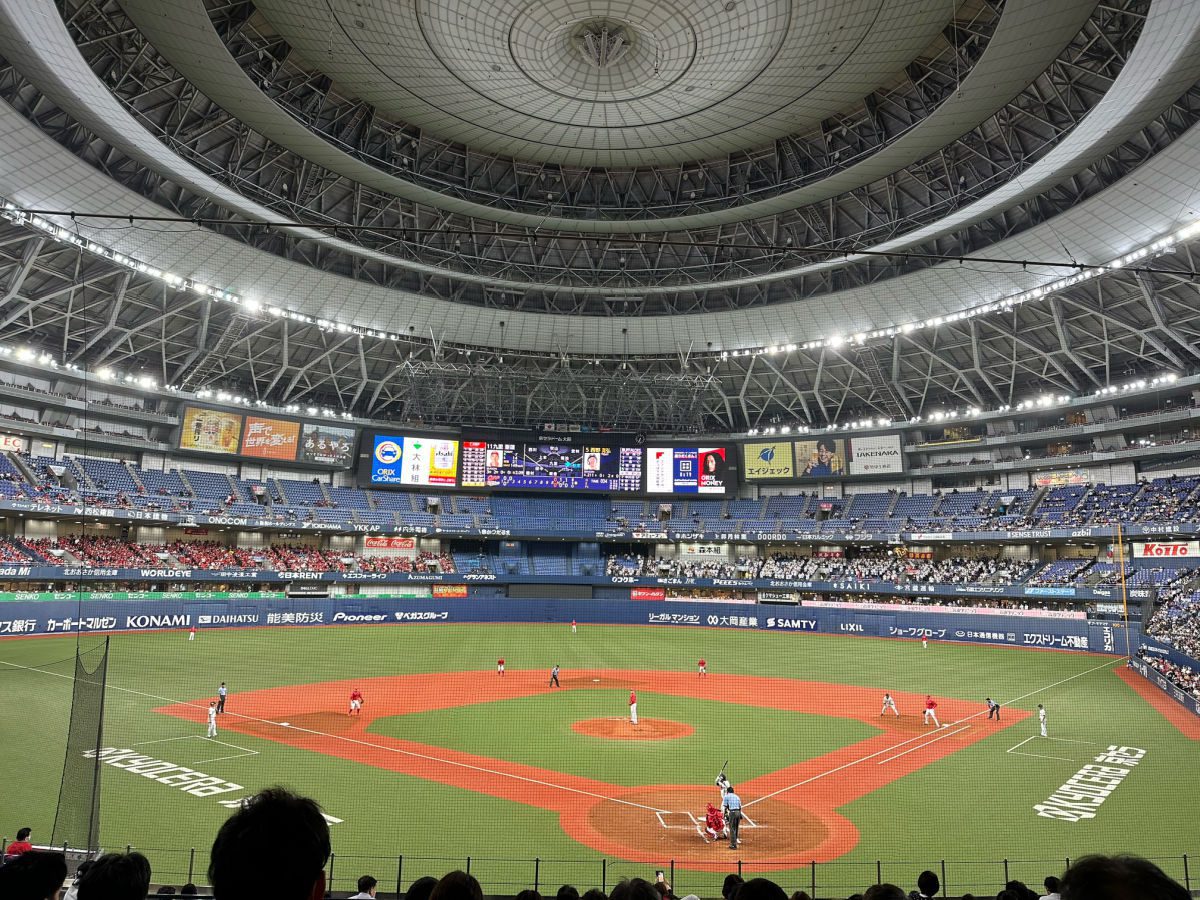
One of the best parts about budgeting for Japan is that it is easy to sightsee on your own without a guide and many of Tokyo and Kyoto’s most famous attractions are free.
Temples and museums charge small entrance fees, usually ¥600 (about $4.50) per adult, half price for children. This includes things to do in Tokyo like Senso-ji temple, and the Tokyo National Museum in Ueno Park.
Most of Kyoto’s attractions and temples typically charge similar small entrance fees, like Ginkaku-ji temple, Temple of 10,000 Buddhas, and the Iwatayama Monkey Park near Arashiyama.
There are a couple of major attractions that will cost, most notably the Tokyo Sky Tree, which charges about $15 per adult ticket (not including Fast Track), with a reduced fare for children.
Tokyo Dome charges about $30 per ticket with reduced fares for children, but that ticket covers all of the amusement park– the individual museums there (like the Japanese Baseball Museum) are about the same price as most temples would be. The Mori Art Museum also charges higher than usual ticket prices, but the ticket includes access to multiple galleries, as well as Tokyo City View.
Of course, many families are also going to want to go to Tokyo DisneySea or Universal Studios Japan in Osaka.
Japan’s fascinating history has produced a rich and complex culture. Tourists looking for traditional Japanese experiences have plenty of options when it comes to cultural activities. They come with a price tag though.
Option 1: Attending a Sumo Practice or Match
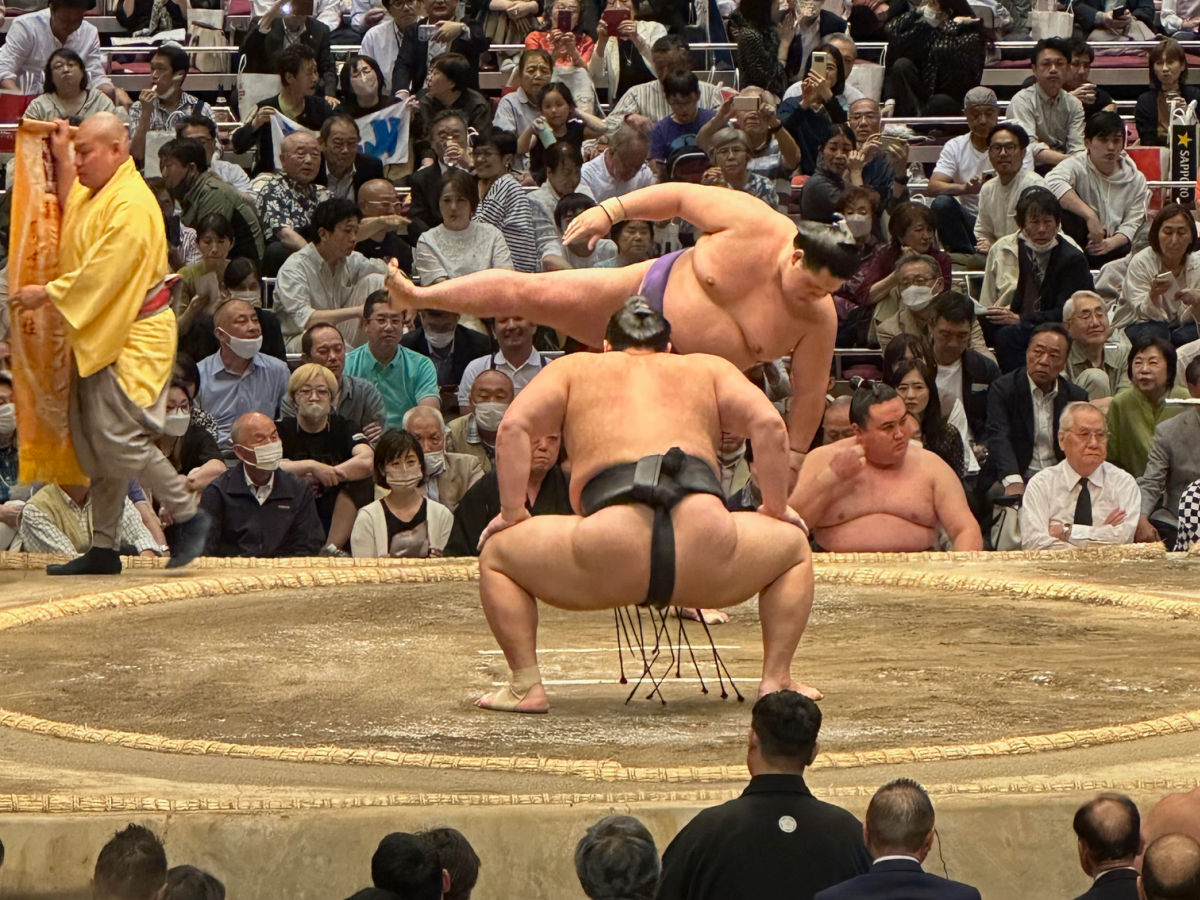
Watching Sumo wrestlers hone and practice their martial art is a stunningly beautiful cultural experience. Tournaments are only held seasonally, and tickets need to be booked in advance. Not to fear if you won’t be in Japan for a tournament though, Sumo practices are held in Sumo-beya (Sumo Stables) throughout the rest of the year.
General admission tickets for Sumo Matches are only about $2, but if you want better seats, a cheap seat will go for about $35, with a lower-end family box going for about $110. Expect to pay several times as much for a better ticket or box.
Option 2: Kabuki
Kabuki is a type of traditional Japanese theater. The costumes and masks are beautiful, and the performances are fascinating, even if you can’t really understand what is going on. The typical places to watch Kabuki are the Kabuki-za Theatre in Tokyo and the Minami-za Theatre in Kyoto.
Tickets can cost anywhere from $27-$220, based on the seat quality. There are tablet rental services for ¥500 available for tourists who don’t speak Japanese that attach to your seat during the performance so you can get a better sense of what is going on.
Other options for cultural activities include tea ceremonies , sushi making workshops , origami classes, calligraphy classes, and kimono sampling classes . A rough estimate of the price for each of these activities is probably somewhere between $50-$100 per person.
If you’re in Japan for a little under two weeks, I would recommend picking 1-3 cultural activities, depending on your budget. I’d also suggest taking a food tour in Osaka or Tokyo. Another thing that older teens would love would be dressing up in costumes and go karting through the streets of Tokyo.
Total sightseeing and attractions costs: $1,100
Food Costs in Japan
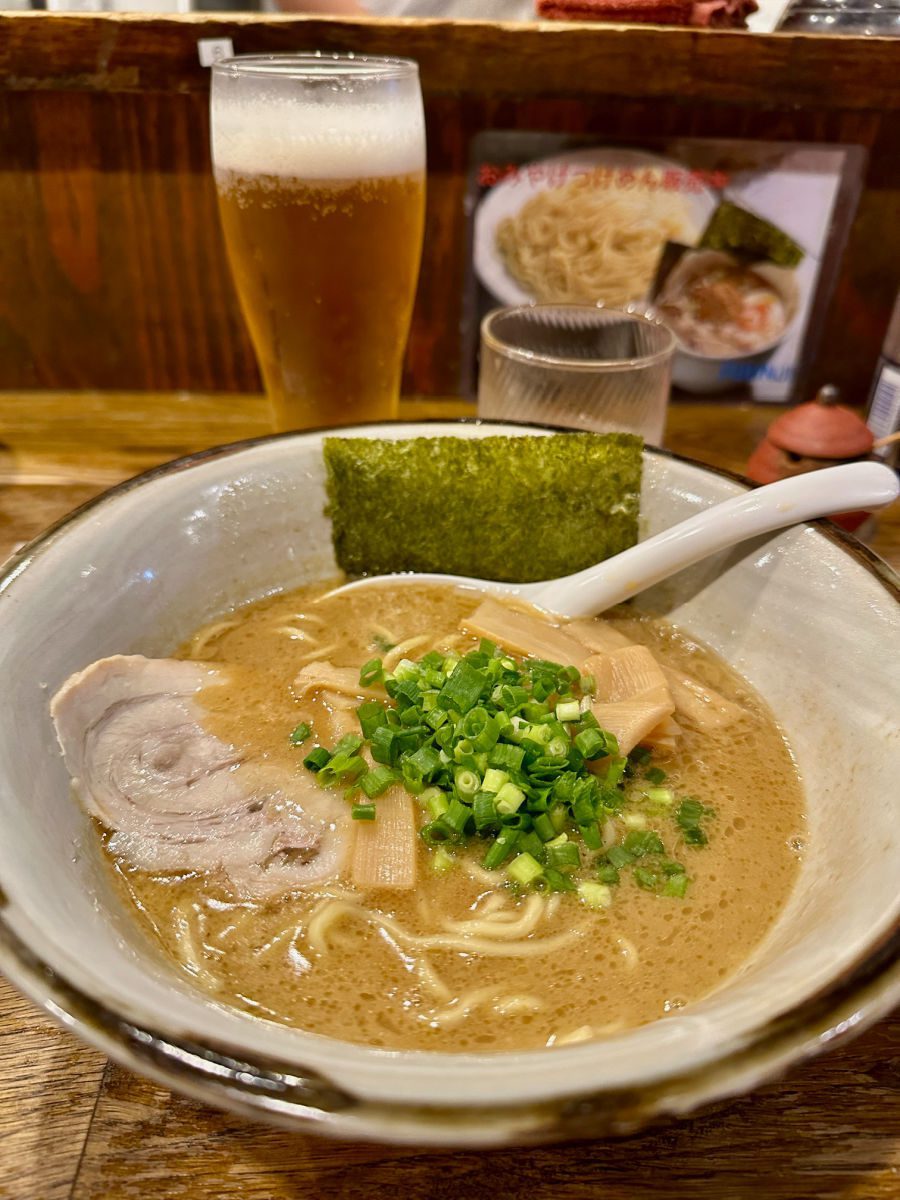
If you aren’t going to Japan at least partially for the food, then you’re doing it wrong! Eating Japanese food is a really special experience, no matter your price point. With such a unique cuisine, it is impossible to get bored of eating on a visit to Japan— that is, if you are an adventurous eater.
Eating out in Japan can be expensive. Moderate-range restaurants and Izakaya (restaurants with bars) will cost about $15-$20 per person for lunch, and $25-$35 for dinner. The good news is that it is possible to experience great Japanese food without eating in these types of venues all the time.
Specialized restaurants, like ramen bars, are Japanese staples that serve up specific types of food and are perfect for those doing Japan on a budget. It is possible to find amazing ramen bars (including some Michelin-starred ones) that charge between $5-$15 for a large bowl. These types of venues exist for many other types of Japanese foods, like gyudon, tonkatsu, udon, okonomiyaki, curry houses. The only downside is that these venues are typically quite small and don’t take reservations so you need to be prepared to wait in line.
There are also shokudo and teishoku, which are smaller restaurants that serve meals that are less fancy, but often equally as tasty as Izakaya. Prices are about the same as what you would find at ramen bars— sometimes more, sometimes less. Some of these restaurants are chains where you order set meals, either from a paper menu or on these chunky, vending machine-looking devices that spit out tickets.
Another option for eating out is picking up bento boxes from the prepared foods sections of department stores, like Daimaru, Takashimaya, Mitsukoshi, and Isetan. The food is actually very high quality and is painstakingly prepared, as is often the case with anything in Japan. You can find almost anything at the department stores, including sushi, karaage, tonkatsu, yakisoba, zaru soba, eel, gyoza (dumplings), yakitori.
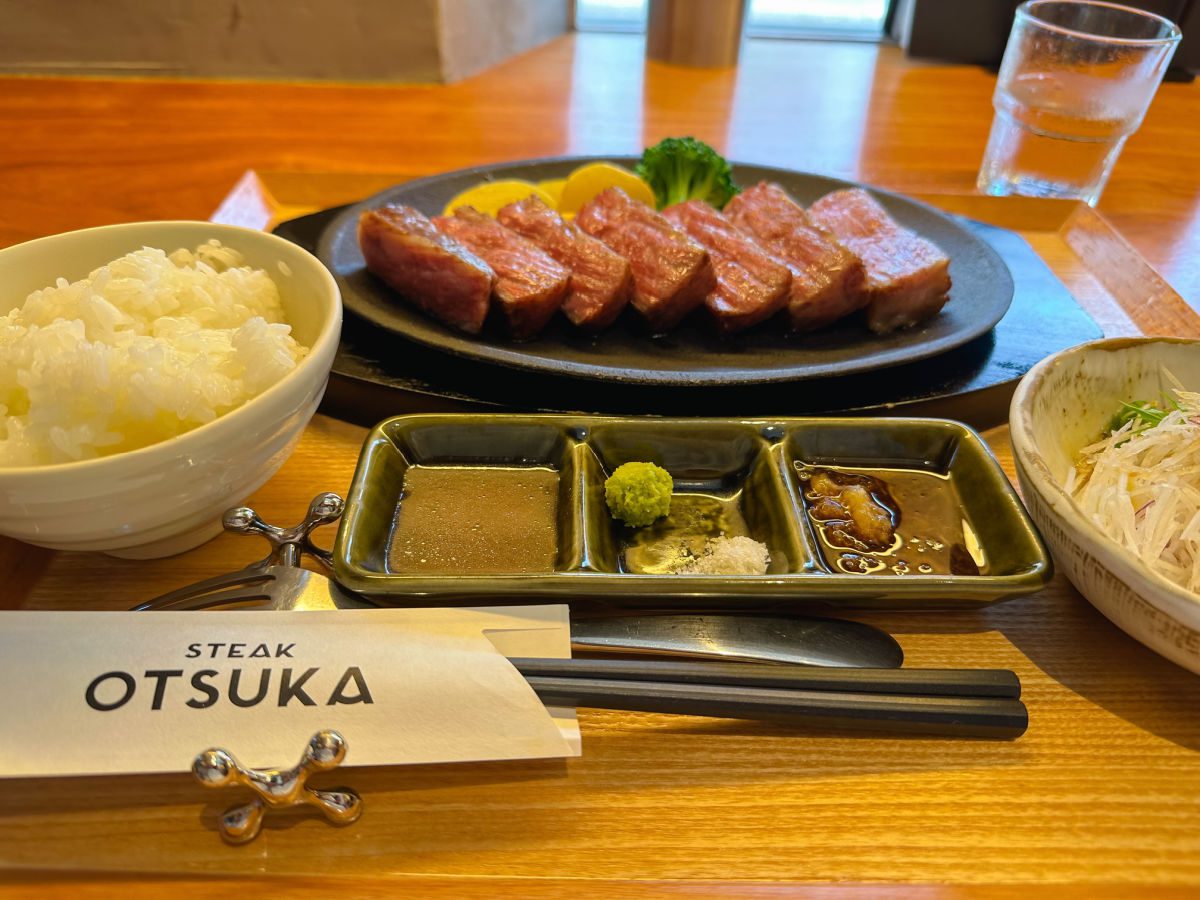
Good-sized meals at higher-quality department stores will probably cost around $15 per person. They are easily transportable and a great option to eat great quality Japanese food at a lower price point. Konbini (Japanese convenience stores) offer similar options, albeit in smaller quantities and of lower quality.
Street food is also great in Japan. Since Japan is a highly developed country, eating street food is pretty safe, unlike other countries in Asia where Americans need to be more cautious. Japanese treats like taiyaki, takoyaki, yakitori, and other fan favorites can be purchased, usually for cheaper than the food you will find even at ramen bars. Japan also has a proliferation of high-quality vending machines almost everywhere that spit out great Japanese snacks and drinks for cheap. And don’t underestimate the wonders of a 7-11 sandwich or rice ball!
Breakfast in Japan is a smaller meal that consists of various fish and rice dishes, as well as soup. A decent quality breakfast shouldn’t cost more than $10. It is also easy to make a DIY breakfast, especially if you’re staying in a flat if you pick up prepared and easy-to-prepare foods from konbini.
Just a warning though, if you do want to experience a Michelin-star sushi restaurant or a traditional Keiseki meal, it is going to cost about $250-500 per person!
Total food costs in Japan: $75 per adult, $50 per child, per day x 14 days = $1,750
This cost is subject to vary greatly, depending on whether or not you’re staying in a hotel or in a rental, how fancy a restaurant you prefer, whether or not you’re willing to shop for your own food in the department stores, whether or not you want to splurge for special meals, etc.
Total Japan Trip Budget
If you don’t overdo it on food or activities, your family of four can spend 12 nights in Japan for $13,420 or a little about $1,118 per day. Of course, this assumes average-priced flight tickets during the high season, staying in three or four-star hotels, and eating at lower-to-mid price range restaurants.
If you want an English-speaking guide to attractions, or if you take a lot of tours, your activities costs will go up significantly. But if you stay in vacation rentals, your costs can be lower.
Clearly, this number can be higher or lower based on how you choose to travel.
How Much Does it Cost to Go to Japan?
The bottom line is that for a family of four, with two young children, staying in one room or a rental apartment, a 12-night trip to Japan with 5 nights in Tokyo, 5 nights in Kyoto, and 2 nights in Osaka will cost approximately $13,420 including flights. This assumes you are using public transportation, eating at casual restaurants or picking up takeaway food, and limiting the number of activities. This comes to approximately $280 per person, per day.
Keep in mind that this cost will go up significantly if you want to take private tours, private transportation, or enjoy more cultural activities or fine dining.
If Japan sounds too expensive, you can also check out our trip budgets for:
- London trip cost
- Iceland budget
- Ireland trip cost
- Italy trip budget
- Hawaii trip cost
- Morocco trip cost
- Greece trip cost
PIN THIS FOR LATER
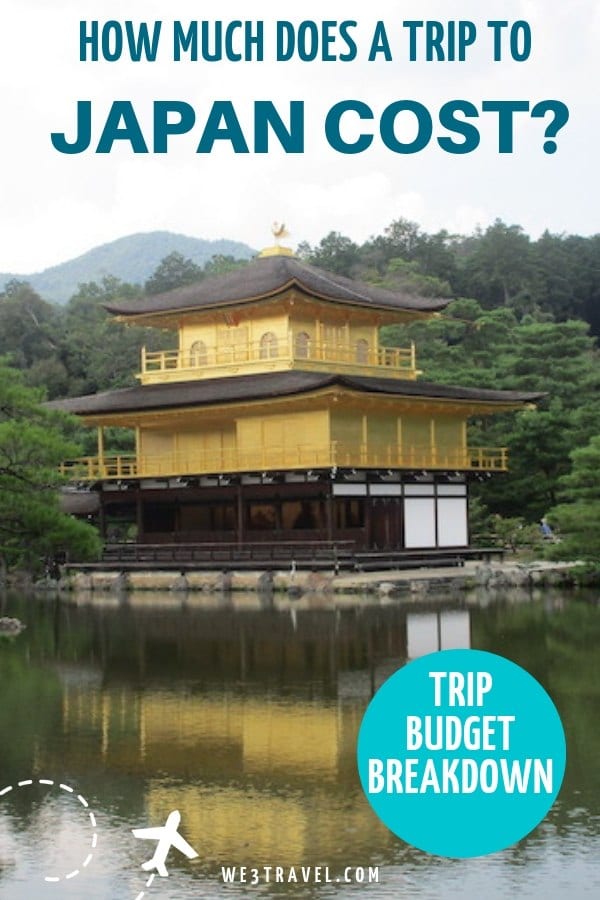
Tamara Gruber is the Founder and Publisher of We3Travel. A former marketing executive and travel advisor, Tamara is an award-winning travel writer and recognized expert in family travel. Tamara is a member of SATW and the Adventure Travel Trade Association, and serves on the Board of the Family Travel Association. She is also the publisher of YourTimetoFly.com and the co-host of the Vacation Mavens travel podcast.
Find this useful? Share it!
Publish Date: November 23, 2023

SIGN UP FOR OUR NEWSLETTER & RECEIVE A FAMILY VACATION PLANNING KIT!
We3Travel.com will use the information you provide on this form to send you newsletters. You can unsubscribe at any time by clicking the link in the footer of any email you receive from us, or by contacting [email protected] . By clicking below, you agree that we may process your information in accordance with these terms.

Start typing and press enter to search

- Travel Budget Japan: How much it costs and how to save
This article may contain links to products and services we use and recommend. We may receive compensation when you click on links to those products. For more information, see our Disclosure Policy .
Download our 2024 Minimalist Travel Wardrobe and Carry-On Packing List
What is the currency of japan, travel cost assumptions.
- Japan Travel Cost Summary
Map of Accommodation, Points of Interest, Eateries and Transport
How much does accommodation cost in japan, laundromats, communications, how much to budget for experiences in japan, gifu prefecture, ishikawa prefecture, nagano prefecture, yamanashi prefecture, hiroshima prefecture.
- Hyōgo Prefecture
Kyoto Prefecture
Naha prefecture, tokyo prefecture, kanagawa prefecture, okinawa prefecture, how much to budget for dining and groceries in japan, recommended foodie experiences, how to save money on dining and groceries, how much to budget for transportation in japan, train travel, how to save on transport costs in japan, rail transportation, japan-wide rail pass, regional rail passes, without rail passes, what are ic cards, bus transportation, other expenses you may incur when travelling to japan, travel insurance, finance and bank fees, luggage transfer and storage services, haircuts and massages, donations and gifts, how much did it cost you to explore japan, author: paul ryken.
Are you planning a trip to Japan and wondering how much it will cost you? You’ve come to the right place. In this article, we outline our actual travel costs during our three-month trip to Japan in 2023. Contrary to popular belief, Japan can be an affordable travel destination, with surprisingly reasonable accommodation and dining options. Plus, with the current exchange rate working in your favour, now is the perfect time to explore the Land of the Rising Sun . We also share some useful tips on how to save money during your time in Japan .
This list for women and men was created as a result of more than seven years of full-time travel around the world in all seasons with only carry-on luggage. This is the packing list we have used as we embark on our adventures into 2024.
The fine print: I agree to receive the Minimalist Journeys newsletter full of news, actionable tips and practical advice every month. I know I can unsubscribe at any time. I have read and agree to the Terms of Use and Privacy Policy .
The Japanese Yen (JPY) – the word yen meaning circle or round object – has been in existence since 1871. In circulation these days are
- Banknotes in JPY1,000, JPY 2,000, JPY5,000 and JPY10,000 denominations; and
- Coins in JPY1, JPY5, JPY10, JPY50, JPY100 and JPY500 denominations (though the latter two are most commonly used).
When reading this article, please keep the following in mind:
- Our travel costs are based upon a couple travelling together.
- We are independent travellers, researching and organising our own itinerary using our go-to travel planning tools .
- Accommodation: We usually stay in self-catered accommodation (homestays, locally owned guesthouses, hostels and short-term rentals) - in our own room with (preferably) our own bathroom, though the kitchen may be shared.
- Dining and Groceries: We have at least two meals a day at home . We like to eat out once a day to every few days (and prefer locally owned restaurants and small eateries away from the tourist hotspots).
- Transportation: We walk a lot, and wherever possible, we travel by public transport . Only occasionally do we hire a vehicle.
- Experiences: Many of the activities we do are free of charge or cost very little. When we pay for attractions or activities , we are selective as our funds are limited (just like everyone elses).
- In addition to above expense categories, we include in our total daily costs our mail scanning and forwarding service , mobile phone plans and travel insurance - though only for the period we are in the country.
- We use a multi-currency personal account with Wise to manage our currencies XE to transfer money as required.
- Not included are the costs for entry or exit transportation into/out of the country.
During our most recent visit, we spent the maximum time we could in Japan (that is, 90 days on a tourist visa ), which means we travel slower and see fewer attractions/do fewer activities each day than someone who spends two or three-week vacation in Japan and tries to see and do as much as possible each day.
Japan Travel Cost Summary
Bearing those assumptions in mind, we spent on average JPY9,205 per person per day in Japan (or USD69 using the foreign exchange rate applicable at the time).
Certainly not the cheapest country we’ve visited to date , but surprisingly more affordable than we thought.
Below is a map of the recommended accommodation, points of interest, eateries and transport terminals/stops mentioned in this article.
If you are interested in our other detailed maps containing recommended accommodations, points of interest, eateries, and transport terminals/stops, check out the following destinations:
As independent travellers, we booked almost all our accommodations ourselves via the various platforms we recommend below. We only used the help of an agent when organising accommodation for our two multi-day hikes – the Kumano Kodo ( Kumano Travel ) and the Nakasendo (the Tsumago Tourist Information Center). Most accommodations were short-term rentals – studios or one bedroom apartments with a small kitchen (where basic meals could be prepared), bathroom and laundry facilities. During our hikes , we also stayed in family-run guesthouses (minshukus), often with onsen facilities.
During our three months in Japan , our accommodation costs averaged JPY7,720 (USD58) per room per night :
Our most expensive accommodation was at Koyasan Saizenin [ Google Maps location ], a Buddhist Temple in Koyasan – at JPY14,199 per night. While not cheap compared with our other accommodations in Japan , the temple stay (shukubō) was well worth it, as it allowed us to experience a multi-course shōjin ryōri dinner and breakfast (not included in above price), bathe in the traditional onsen and attend the Buddhist early morning prayer.
At just JPY4,500 per night , our most affordable accommodation was a stay at Guest Cafe Kuchikumano [ Google Maps location ] on Day 0 of our Kumano Kodo Hike. This was a traditional Japanese guesthouse (minshuku) with a large shared kitchen and bathroom. The host was super nice, and we had a lovely evening around the fire, toasting mochi balls (the Japanese version of marshmallows) and then dipping them in zenzai, delicious sweet red bean soup .
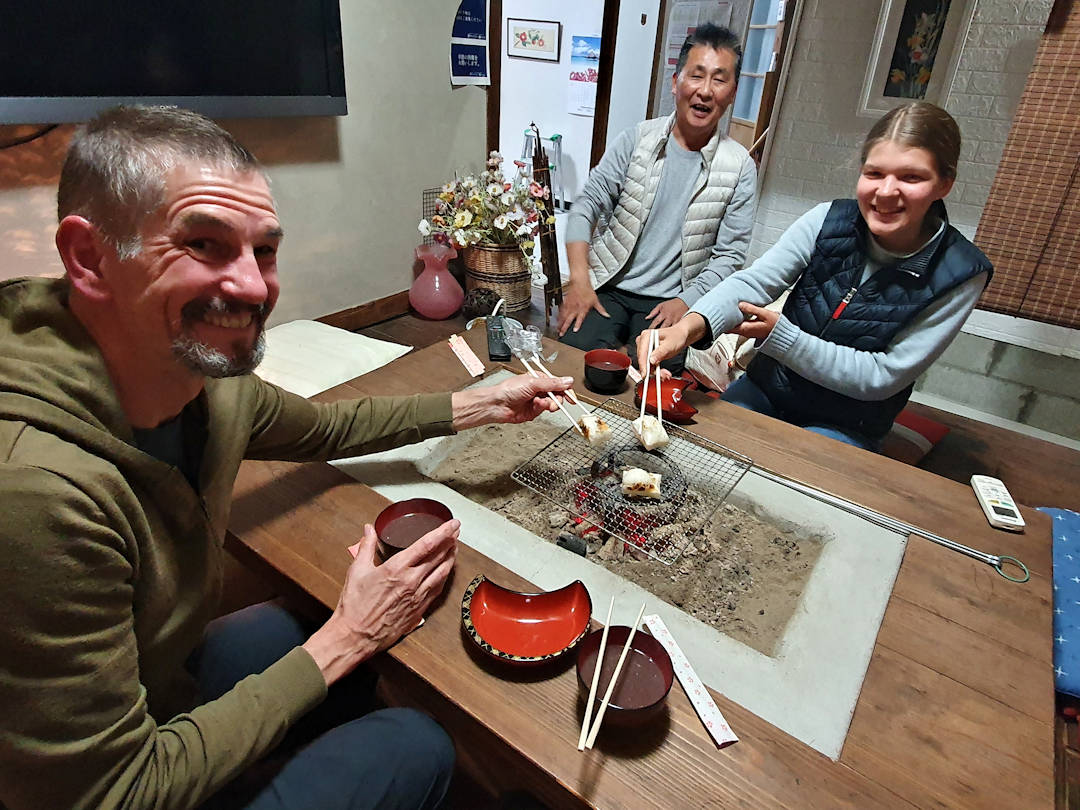
Interacting with your Japanese hosts and other guests is a wonderful experience
Although most of the accommodations we booked had a washing machine, over the three months in Japan , we did use laundromats eight times, costing us a total of JPY4,600 (or JPY575/USD4 per laundromat use ).
Prior to arriving in Japan , we purchased and received two NIPPON 4G-LTE SIM cards (one for each of our mobile phones) at a cost of JPY3,280/USD25 each – to use when we didn’t have access to Wi-Fi while travelling. Each SIM card came with 15 GB of data, valid for 180 days.
You can pack a lot into a three-month trip in Japan , and we did. All our experiences added up to JPY131,583 (USD984) between the two of us – on average, JPY756 (or just under USD6) per person per experience.
Here are some of our favourite things to see and do (including the cost per person when we visited – note that some were FREE):
- Chubu Region
- Chugoku Region
- Hokkaido Region
- Kansai Region
- Kanto Region
- Kyushu Region
Kamitakara-no-Yu Onsen , Shinhotaka [ Google Maps location ]: JPY800 Kanda House , Shirakawa-go [ Google Maps location ]: JPY400 Matsuri no Mori Museum , Takayama [ Google Maps location ]: JPY1,000 Takayama-Shinhotaka Ropeway (Bus and Cable Car) Two-Day Pass, Takayama [ Google Maps location ]: JPY6,800
Yasue Gold Leaf Museum , Kanazawa [ Google Maps location ]: JPY310
City Museum of Art , Matsumoto [ Google Maps location ]: JPY410 Miyamoto shōkai one-day bicycle rental, Nagano [ Google Maps location ]: JPY1,500 Nagano Marathon Foreign Athlete Entry Fee: JPY15,437 Obuse 3-in-1 Museum Pass (Hokusai, Kozan Takai and Obuse Museums), Nagano: JPY1,300 Togakushi Bus Day Pass , Nagano: JPY3,000
Bike ride around Kawaguchi and Saiko Lakes, Fujikawaguchiko: FREE (bicycle was provided by accommodation) Witnessing Magomi Matsuri/Chigo-no-Mai at Kawaguchi Asama Shrine and Hike to Tenku no torii, Fujikawaguchiko: FREE Kubota Itchiku Art Museum , Fujikawaguchiko [ Google Maps location ]: JPY1,300
Mt Misen Hike, Miyajima : FREE Hiroshima Castle , Hiroshima [ Google Maps location ]: JPY370 History and Folklore Museum , Miyajima [ Google Maps location ]: JPY300 Mitaki-dera Temple, Hiroshima [ Google Maps location ]: JPY200 Peace Memorial Museum , Hiroshima [ Google Maps location ]: JPY200
Hokkaido Museum , Sapporo [ Google Maps location ]: JPY1,200 Okurayama Ski Jump Stadium , Sapporo [ Google Maps location ]: JPY1,000 Sapporo Snow Festival : FREE Teine Ski Field (Day Pass and Gear Hire), Sapporo [ Google Maps location ]: JPY11,800 TV Tower , Sapporo [ Google Maps location ]: JPY1,000
Hyōgo Prefecture
Great Hanshin-Awaji Earthquake Memorial , Kobe [ Google Maps location ]: JPY600 Himeji Castle and Koko-en Garden , Himeji [ Google Maps location ]: JPY1,050 Nunobiki Herb Gardens , Kobe : JPY1,130
Botanical Gardens , Kyoto [ Google Maps location ]: JPY400 Free Walking Tour , Kyoto: FREE/Donation Hike Mt Inari , Kyoto [ Google Maps location ]: FREE Gion Corner Cultural Performance , Kyoto [ Google Maps location ]: JPY5,500 Ninomaru-Goten Palace , Kyoto [ Google Maps location ]: JPY1,050
Todai-ji , Naha [ Google Maps location ]: JPY600
teamLab Planets , Koto City [ Google Maps location ]: JPY3,500 Hokusai Museum , Sumida City [ Google Maps location ]: JPY1,000 Japan Olympic Museum , Shinjuku City [ Google Maps location ]: JPY500 Watching the sunset from Carrot Tower , Setagaya City [ Google Maps location ]: FREE Yayoi Kusama Museum , Shinjuku City [ Google Maps location ]: JPY1,100
Open-Air Museum , Hakone [ Google Maps location ]: JPY1,600
Rental Charinko Bike Ishikawa , Zamami [ Google Maps location ]: JPY2,800 Fukushuen Garden , Naha [ Google Maps location ]: JPY200 Himeyuri Peace Museum , Naha [ Google Maps location ]: JPY310 Japanese Naval Underground Headquarters , Naha [ Google Maps location ]: JPY600 Okinawa Prefectural Museum , Naha [ Google Maps location ]: JPY555 Shuri Castle Grounds, Naha [ Google Maps location ]: FREE Tsushima-maru Memorial Museum , Naha [ Google Maps location ]: JPY500
As mentioned above, during our time in Japan , we stayed mostly in accommodation that had a kitchen with basic cooking facilities, enabling us to have at least two meals a day at home . That said, it was sometimes easier and cheaper to buy ready-to-eat meals from convenience stores such as Lawsons, 7-Eleven or Family Mart – though we did try to limit those occasions to avoid adding to Japan ’s plastic waste problem .
Our daily dining costs in Japan averaged JPY1,193 (USD9) per person , with our most expensive dining experience costing us JPY2,350 per person at Steakland Kobe-kan [ Google Maps location ] – a worthwhile luxury to taste the famous beef the city is renowned for.
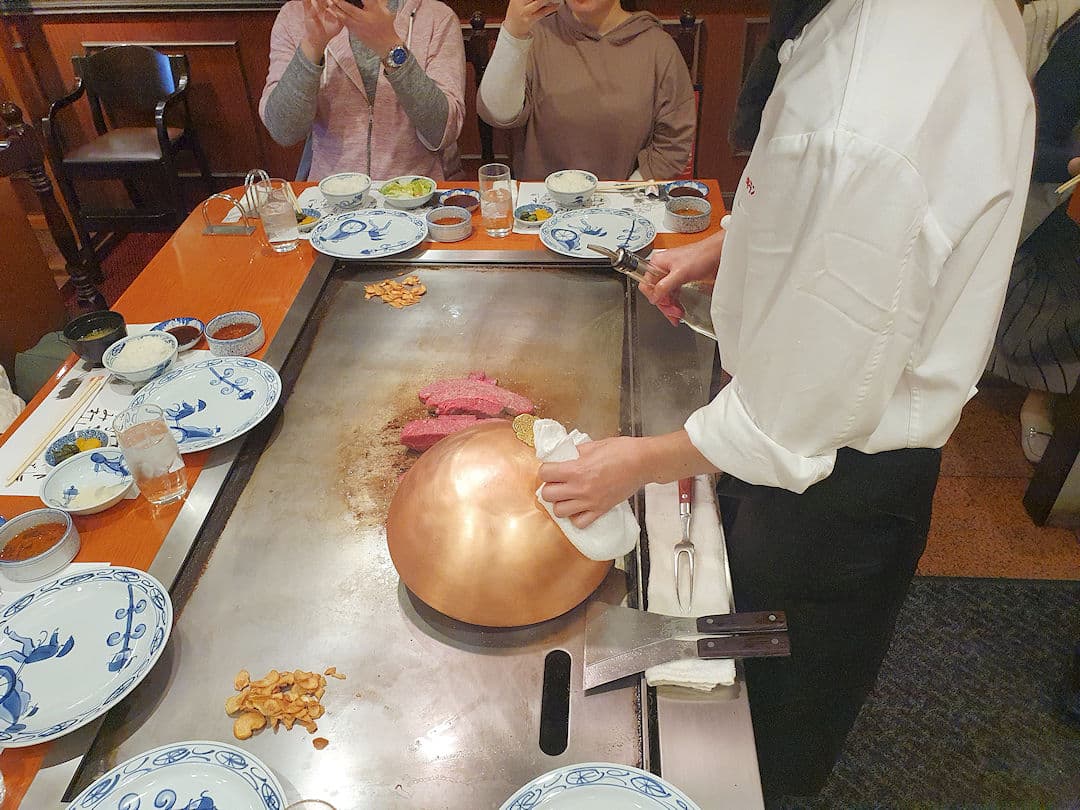
Our most expensive meal was at Steakland Kobe - but it was well worth it
Our daily groceries expenses in Japan averaged JPY1,043 (USD8) per person . We found Aeon supermarkets offered some of the best value for money, and between the major convenience store brands of 7-Eleven, Lawson and FamilyMart, we found Lawson offered the best range at the most affordable prices.
If you happen to visit Sapporo, make sure to pop into a Bostonbake branch [ Google Maps location ]. They have delicious pastries and buns daily (which are super affordable) – great to stock up on some items when you’re out and about during the Snow Festival . Sadly, Bostonbake only exists in Hokkaido.
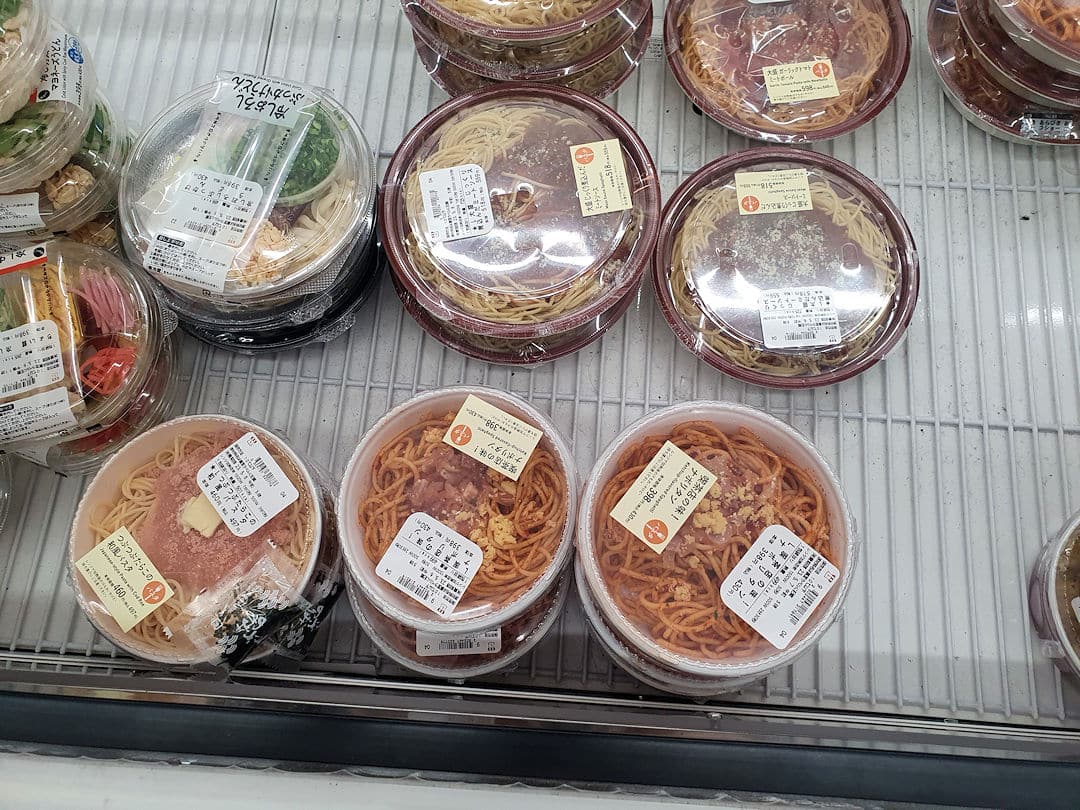
In Japan , ready-made meals are always available at supermarkets and convenience stores
As Anthony Bourdain is famously quoted as saying: You learn a lot about someone when you share a meal together. And the best way to learn about a destination is by spending it with locals, in their homes and in local markets. If you're a foodie and would like to join some incredible cooking classes and food tours, here are our recommended EatWith offers in Japan :
- Food and Sake Pairings in a Traditional Kyoto House
- Home style Ramen and Gyoza cooking class in a Japanese home
- Tokyo West-Side Walking and Street Food Tour
- Izakaya Food Tour in Shinjuku
Dining out all the time can quickly get expensive. We always try and book accommodation where we have access to a kitchen - either our own little kitchenette or the kitchen of our host. That way, we can store food in the fridge and make our own meals. We usually have breakfast and one other meal at our accommodation, and one meal when we're out and about.
Restaurants (even in tourist hotspots) often have special lunch offers (for example, a three-course meal for EUR10). Portion sizes in many parts of the world are usually quite substantial, so we often share a three-course meal. The same applies if you go out for dinner: Order a starter or salad and a main, and that's usually enough for two people. An added benefit: there is less food waste.
As for groceries: every country has more expensive and cheaper supermarkets. Ask your host what the cheaper options are (for example, Aldi or Lidl in many European countries) and avoid convenience stores as much as possible.
Experiencing the local cuisine is one of the reasons why WE travel… Paul and I tend to only eat out once a day (sometimes only once a week), usually at lunchtime. This allows us to try local dishes while taking advantage of awesome lunch deals. It also means we don’t have to roam around unknown parts of town every night in search of a restaurant.
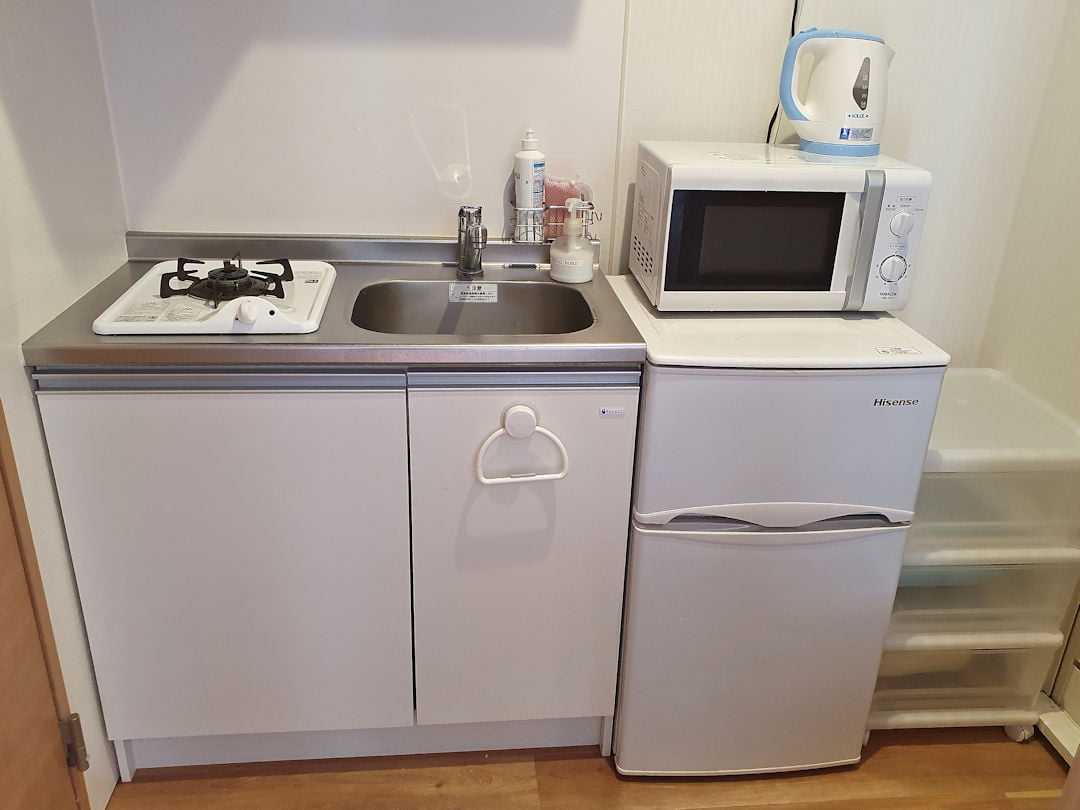
A Japanese apartment kitchen is not big but allows you to prepare your own meals (and save on dining out)
Our transport costs over the three months we explored Japan averaged at JPY1,569 (just under USD12) per person per day .
Given Japan is an island country, we ended up taking two internal flights: The flight from Sapporo, Hokkaido to Nara, Okinawa cost us JPY16,580 each (with Peach Aviation ); while the flight from Nara, Okinawa to Hiroshima on Honshu cost JPY14,460 per person (with ANA ). In both cases unfortunately, we had to check in our travel packs as the strict carry-on limit was seven kilograms.
As we were keen to see the country and had more time to explore Japan than most foreign tourists, we always considered taking slower (and thus cheaper) train options over the Shinkansen. That said, we did want to ride the Shinkansen (and in some cases, there was just no feasible alternative). In the end, we took the bullet train three times: Our Hiroshima to Himeji trip cost JPY8,040 per person ; the Kanazawa to Nagano journey JPY8,590 each and the train ride from Odawara to Tokyo JPY3,280 per person .
The Shinkansen was always markedly more expensive than slower train options. As an example, the distance from Hiroshima to Himeji was 239 kilometres, with a per kilometre cost of JPY33.64 on the Shinkansen, whereas the (slower) Rapid Express train from Himeji to Kyoto – a distance of 127 kilometres – cost JPY2,310 per person or JPY18.19 per kilometre. So if you have time, take the slow train and save money.
And speaking of travelling slowly: If you’re in the Hakone area, make sure to ride the Hakone Tozan Train [ Google Maps location ] between Gora and Odawara. The scenery is stunning, and the train does a number of switchbacks as it journeys down the mountain (or up if you do the trip in reverse) – a very unique experience.
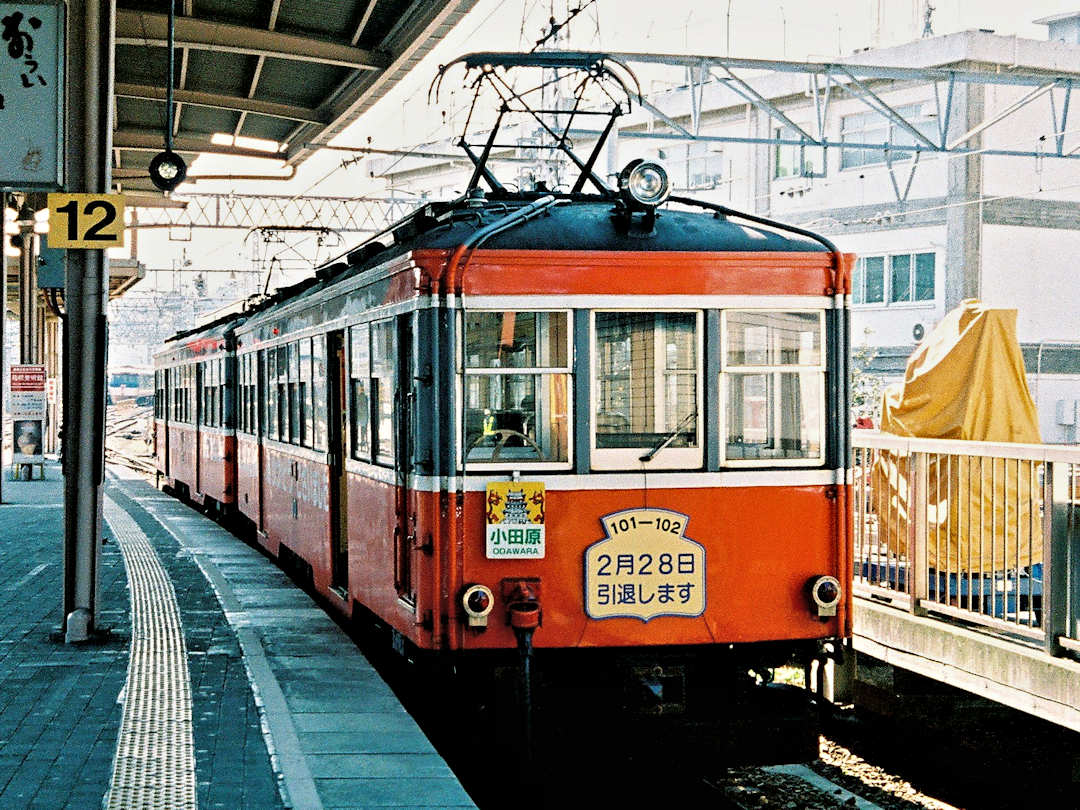
Take the Hakone Tozan Railway for its unique switchbacks down (and up) the mountains | Photo on Wikimedia Commons
Japan boasts an efficient transportation system. But, as we found out, transportation costs add up quickly, especially if you’re travelling a lot around the country.
The Japan-wide JR Rail Pass is a cost-effective option for visitors who plan to move around a lot during their stay. It’s available for 7, 14 and 21 day periods and valid on consecutive days within the chosen timeframe. The pass allows unlimited travel on JR-operated services, including JR trains – even the Shinkansen (just NOT the Nozomi and Mizuho) – and JR-operated city buses. Seat reservations are included with the JR Rail Pass but need to be obtained (free of charge) prior to travel.
The Japan-wide JR Rail Pass can only be purchased by foreigners outside of Japan and must be exchanged for the actual pass upon arrival.
Although the JR ( Japan Rail) Pass is a popular option for foreign tourists visiting Japan , it’s not the only way to save, and it may not even be worthwhile pending your itinerary. To determine if the Rail Pass is worthwhile, use an online route calculator to compare the costs of individual ticket purchases against the price of the pass.
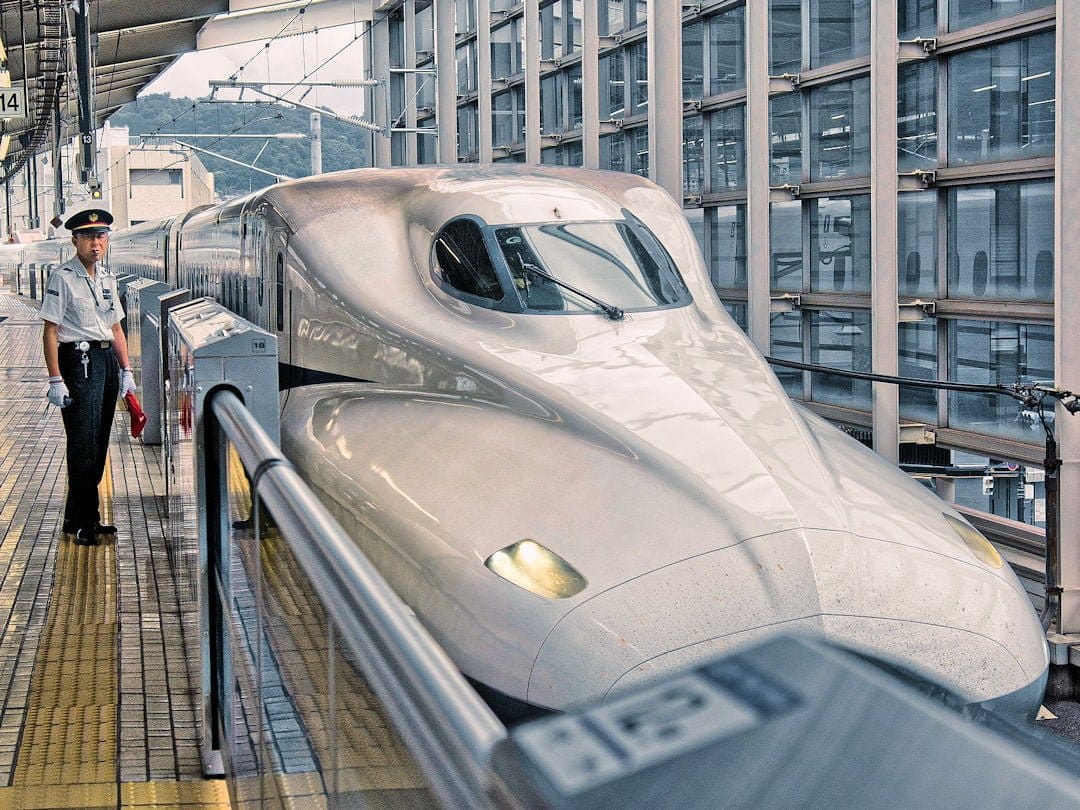
Trains in Japan are (almost) always on time, making train travel easy and convenient | Photo by Armin Forster on Pixabay
If the Japan-wide JR Rail Pass is of no use to you, one (or several) of the many Regional Rail Passes might be worthwhile. A big difference to the Japan -wide Rail Pass: you can buy these passes while already in Japan (though they are slightly more expensive than if you bought them from overseas). Worthwhile options to check out include:
- JR East: the JR Tokyo Wide Pass
- JR West: the Kintetsu Rail Pass, JR West Kansai Area Pass, JR West Kansai Wide Area Pass or the JR Kansai-Hiroshima Area Pass
- JR Central: the JR Takayama-Hokuriku Area Tourist Pass or JR Alpine-Takayama-Matsumoto Area Pass.
Even without any of the rail passes, there are still ways to save on train travel in Japan :
- Shinkansen – Buy a non-reserved seat ticket (where available): This also offers greater flexibility as you’re not bound to a specific train. Which carriages are non-reserved varies from train to train (most often it’s carriages 1-3 or 1-5). Arrive at the platform early to check out where the non-reserved carriages are located and position yourself/queue at the door marker of one of those carriages to increase your chances of getting a seat as you board.
- Alternatives – Opt for Limited Express trains: You may need to change trains along the way, but the trains in Japan are usually on time, and changing trains in Japan is not really stressful, especially if you travel light. Unless you’re travelling during rush hour, Limited Express trains are often less crowded than the Shinkansen, which also means you can save the seat reservation cost (where possible).
Extra tip: In many areas in Japan , you can use an IC card to tap on/off rather than having to purchase individual paper tickets for each journey. This saves time and makes train travel more convenient.
In Japan , you will come across the term IC card a lot (IC stands for Integrated Circuit ). IC cards are essentially plastic cards that can be topped up and the amount stored on the card is used for transportation - simply by tapping on/off at the card reader - and more and more at convenience stores and other places.
Each region issues their own version of the IC card, for example
- If you enter via Tokyo Narita or Haneda Airports, you would buy the Suica Card or PASMO card.
- If you enter via Osaka Kansai Airport, you will find the ICOCA card for sale.
Fortunately, 10 of the most common IC cards (including the two above) can be used across regions (and likely more will be added over time). Some regions (including Nagano and Okinawa prefectures) only allow their own IC card (at this stage) or cash.
Also, note:
- Cards (including any stored funds) will expire after 10 years of non-use, which means you can reuse the card if you return to Japan within that timeframe.
- You can return it (and get a refund of the money on the card plus the deposit you paid for the card itself) - as long as it's in the region you bought it.
- You can load the IC card onto your smartphone - via Apple Pay or Google Pay - but you won't be able to get a refund of your deposit or any funds stored when you leave the country.
Buses can be a good alternative to trains (especially for medium to long-distance travel and on competitive routes). Do note though that while train timetables are (mostly) reliable, buses can be stuck in traffic just like any other road transport (and delays of 30 minutes and more are not unusual).
One way to save on transport costs in Japan is by purchasing a Willer Express Bus Pass . This pass allows you to travel for 3, 5 or 7 days within a period specified by you.
- Advantages: The days of travel do not need to be consecutive, giving you flexibility in your itinerary. Willer Express has a number of night buses which can save on accommodation costs. Additionally, you can easily book your seats in advance online through the user-friendly Willer Express website.
- Disadvantages: The pass can only be used on Willer Express buses and only on the least comfortable 4 seats per row bus types.
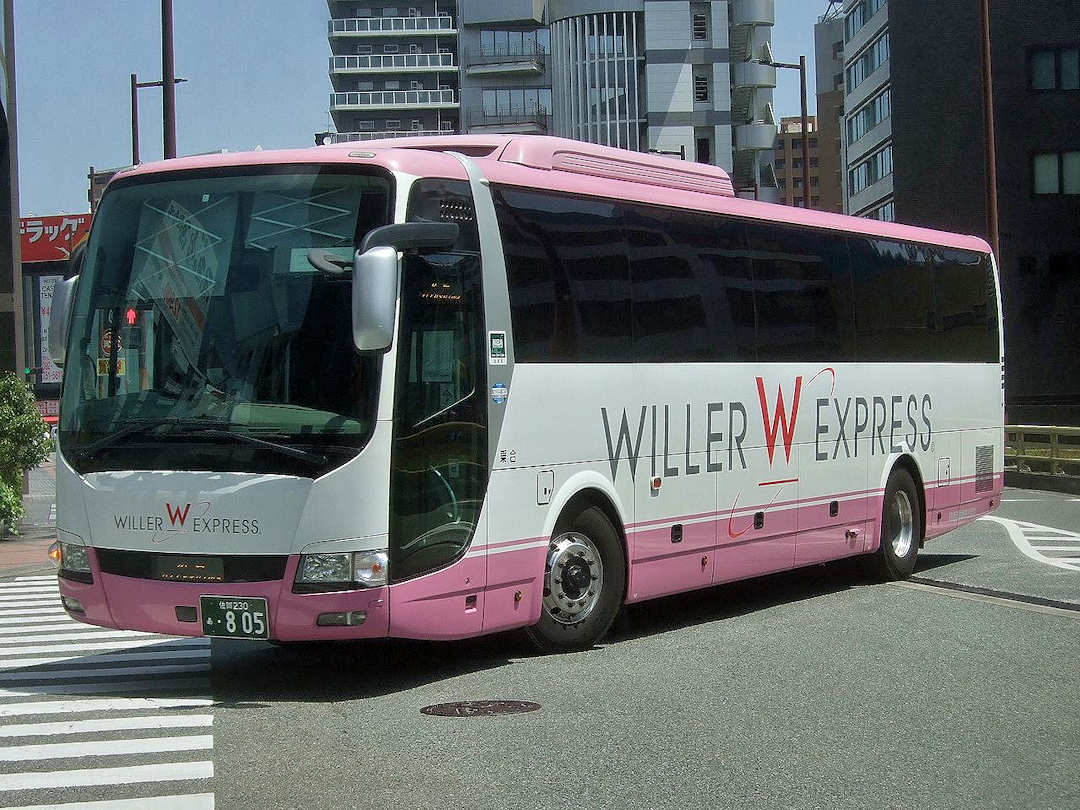
Travellers to Japan may also be able to save on transport costs by using intercity bus services like those provided by Willer Express | Photo on Wikimedia Commons
Even without a bus pass, you can save money when travelling by bus in Japan :
- Avoid backtracking and travel point to point instead – For example, stop in Shirakawa-go on the way from Takayama to Kanazawa (or vice versa) rather than visiting the UNESCO World Heritage site on a day trip – this also reduces carbon emissions.
- Make use of specials – Just ask at the local tourist office at your destination or check the websites of the bus companies operating at your destination, for example Alpico and Nohi Bus in the Japanese Alps. Do make sure though they are worthwhile by comparing individual fares (via Google Maps ) against the special fare.
We always buy travel insurance – because medical expenses overseas can add up quickly and because our carry-on backpacks are pretty much everything we own.
Whenever we buy travel insurance , we make sure we thoroughly read the fine print. It’s tedious, we know. But if you’re planning certain activities (for example, hiring a motorbike or hiking above 3000 metres), it’s crucial to know whether your insurance pays if the worst happens. Otherwise, you may have paid all that insurance premium and are still left to foot a (potentially) massive bill.
For this trip, we used Cover-More. For our three months in Japan , our joint Cover-More Travel Insurance Single Trip International Comprehensive+ Policy cost us AUD1,519/USD1,022 (or just under AUD9/USD6 per person per day) . Although we didn’t need to submit a claim and therefore don’t have first-hand experience of their claims process,we won’t be buying another policy from Cover-More again,

To our surprise, cash is still King in Japan , thus ATM withdrawals are a regular occurence. To avoid unnecessary ATM withdrawal fees we always research before our trips to figure out which overseas bank/s offer/s the best exchange rate and charge/s the lowest fees for ATM withdrawals.
In the case of Japan , we had done all our research. We knew our Bankwest Debit Card charged no foreign transaction fees, and that 7Bank ATMs charged no ATM withdrawal fees. What we didn’t know was that you had to press “Credit” when trying to withdraw with the debit card overseas (Bankwest only told us about that small fact when queried afterwards). After our debit card was declined multiple times, we ran out of time and had to use our credit card. While we had topped up the card with some money beforehand (to avoid nasty cash advance fees), the credit card provider still charged us AUD4 (or JPY382) for the ATM withdrawal. You live and learn.
Unless you’re planning to hike the Kumano Kodo or Nakasendo , you are likely not going to need luggage transfer service. We ended up using luggage transfer twice (both times with Yamato Transport):
- on our final day on the Kumano Kodo , paying JPY2,500 for the same-day transfer of one travel pack from Koguchi to Nachikatsuura; and
- during our Nakasendo hike , paying JPY1,620 for the standard transfer of one travel pack from Osaka to Matsumoto.
We also used luggage storage facilities on occasion to store our travel packs for a few hours or excess luggage during our Kumano Kodo hike for a whole week. Those storage costs added up to JPY3,640 in total ( an average of JPY607 per storage use ).
If you need to store excess baggage in Osaka, we recommend Daikoku Locker . Alternatively, you can try Radical Storage who have agencies all over Japan .
When you explore a country for three months, you will likely need a hair cut (in that country). I had mine at a barber in Osaka about half-way through our trip for JPY2,200 (a bit over USD16) .
We both also took the opportunity to get a 90 and 60 minute massage, respectively, just before the Nagano Marathon at Relaxation Salon Lovina [ Official website , Google Maps location ] for a total cost of JPY13,200 (or JPY6,600/around USD49 per massage ). It was well worth it, and we both would recommend it to anyone visiting Nagano.
Withdrawing cash overseas can be expensive but it doesn’t have to be. We can show you how to avoid unnecessary fees and make your travel budget stretch further.
How do you determine which card is best for your overseas trip? Using the right one can save bank fees and make your travel budget stretch further.
Ever been caught out by the bad FX rates and exorbitant commissions charged by FX bureaus? These tips allow you to minimise these charges in future . We also recommend XE Money Transfer to keep more of your money when you complete a transfer.
When visiting a Shinto shrine, it is traditional and appropriate to make a donation. It doesn’t have to be a lot, especially when you are throwing loose change into the large container before you bow your head and clap your hands. All our donations added up to JPY1,511 .
I wrote this Japan Travel Costs article based on our own unique experience. If you have been to Japan recently as well and you have something to add to the costs for exploring Japan , please feel free to contact us. If you liked my Japan Travel cost tips and found them helpful, I would appreciate it if you could share them with your friends and family via the Share buttons below. Even better, link to the page from your personal blog or social media platforms.

- 2 Weeks for Couple
- 2 Weeks for Family
- Thailand Lantern Festival
- Indonesia(Bali)
- South Korea
- China (HK, Taiwan)
- Itinerary Ideas
- Asia Highlights Travel Reviews
- Thailand Travel Reviews
- Vietnam Travel Reviews
- Cambodia Travel Reviews
- Japan Travel Reviews
- Myanmar Travel Reviews
- China Travel Reviews

How Much Is a Trip to Japan
When considering a trip to Japan, you probably want to know how much it would cost. Is Japan expensive? Well, travel costs in Japan are cheaper than in most Western countries with similar service standards and living costs, but they are about twice as expensive as other Asian countries'.
Different experiences, modes of transportation and classes of hotels meals in Japan can make a big difference to costs. In this article, we'll explore the travel costs for Japan and share how to make the most of your money.
How Much Is a Private Japan Tour Package?
- Cost of International Flights to Japan
- Cost of Accommodation in Japan
- Cost of Transportation in Japan
- Cost of Food in Japan
- Cost of Attractions/Activities in Japan
Discover real reviews of Highlights Travel Family 's best-rated service across trusted platforms.
In general, a private Japan tour costs US$350–500 per person per day (with 2–4 people) , including private car, private guides, local 4-star hotels, tickets for attractions, and full-day itineraries. Thus, the total cost is around US$2,500–3,500 for a week and around US$5,000–7,000 for 2 weeks.
Riding a private car offers a more comfortable and efficient experience with less physical exertion. In contrast, public transportation, while cheaper, often entails walking around 20,000 steps per day. This can be challenging for older individuals or those with limited mobility. Opting for private car, which typically cost around US$150–200 per day, allows you to save time and conserve energy, enabling you to dedicate more time to exploring sights rather than waiting for connections or navigating unfamiliar routes.
Having a private guide provides an opportunity to experience excellent service, receive outstanding explanations, and gain a deeper insight into Japan's culture. With a knowledgeable guide by your side, you can learn fascinating details and anecdotes about the places you visit, ensuring a deeper understanding and appreciation of Japan's unique traditions and customs.
March to May (cherry blossom season) and October to November (red maple season) are peak seasons in Japan. We suggest that you book a Japan tour at least 3 months in advance to reserve the perfect hotels and professional guides for these times.
The Cost of International Flights to Japan
The cheapest period to buy flight tickets is mid-January to February , costing about US$900–1,500 from the U.S. The most expensive month to buy flight tickets is April , when the cost from the U.S. is around US$1,600–1,800. From June to July the airfare is US$1,000–1,500, and in December the cost is US$1,000–1,600.
The cost of flights from the U.S. to Japan varies depending on when you fly and the airline you choose. For example, round-trip economy tickets from New York or Los Angeles to Tokyo cost anything from around $800 to $1,800 on average for 2024.
Direct flights from Europe to Japan are fewer and most require at least one stopover. A round trip from London to Tokyo is in the range US$1,500–2,000 on average for 2024.
To buy the cheapest flights to Japan, we recommend you book at least 3–6 months in advance , especially if you are going to Japan during the busiest times, such as cherry blossom season from March to May, the red maple season from October to November, and around New Year.
Suggested reading: 2-Week Japan Itineraries >>>
The Cost of Accommodation in Japan
Japan hotel prices vary widely between low season and high season. A standard room in a 4-star hotel costs from US$200–280, and a 4-star ryokan (traditional inn) costs around US$300–450 per room per night for most of the year. However, the price may double or even triple in March and April when the cherry blossom blooms.
Staying at a ryokan allows you to experience the most authentic Japanese accommodation. You can sleep on a tatami, try on yukata (traditional Japanese robes), and even relax in onsens (hot spring baths) at some ryokans. If you are traveling with kids, some ryokans can provide enough tatamis for your family to stay together in one room.
Tip for saving money: Early reservations to ensure your preferred hotel choices (at least 3-6 months in advance) are suggested and to minimize hotel changes.
The Cost of Transportation in Japan
Public transportation is very convenient in Japan, especially the subway. Taking Tokyo as an example, regular Tokyo subway fares are US$1–3, depending on the distance. Taxis are the most expensive option, as the starting fare is from US$5 for the first two kilometers. Most destinations in Japan are connected by trains , and their prices are not affected by the peak travel seasons. Shinkansen (bullet train) is the fastest and most popular way to travel between cities: a ride from Tokyo to Kyoto costs about US$100.
We recommend utilizing a private car service for airport pick-ups and drop-offs in Japan. The transport routes in Japan can be complex, and navigating the right tram or train can consume a significant amount of time. By opting for a private car, you can avoid this issue and be transported directly to your hotel or the airport without any hassles or confusion.
Tip for saving money: Consider utilizing public transportation for some city tours like Hakone or Hiroshima, where you can enjoy the sights at your pace and experience the efficiency of Japan's impeccable transportation system.
Suggested reading: How to Plan Your Trip to Japan >>>
The Cost of Food in Japan
Japanese cuisine is one of the main attractions for travelers who visit Japan, and it is often not expensive , such as sushi, ramen, rice balls, etc. A meal at a sushi restaurant usually costs US$15–50, and a bottle of Japanese wine costs US$3–7. A bowl of ramen costs just US$5–7. On average, a day eating at mid-range restaurants costs US$30–45 per person.
Luxury meals such as wagyu beef or kaiseki can cost around US$70–110 per person or more. These exquisite and delicious cuisines showcase the meticulous and delicious nature of Japanese culinary traditions. Indulging in these high-end Japanese dishes would not only treat your eyes but also amaze your taste buds with their exquisite flavors.
The Cost of Attractions/Activities in Japan
Tickets for most attractions in Japan range from US$3–7. World Heritage sites like Kinkaku Temple and Kiyomizu Temple in Kyoto cost just US$3. There are also many shrines, temples, and parks in Japan that are free of charge , like Meiji Shrine and Sensoji Temple in Tokyo and Fushimi Inari Shrine in Kyoto.
Theme-park tickets, such as for Disneyland in Tokyo and Universal Studios in Osaka, are significantly higher in cost at about US$60–70 per person.
Authentic Japanese activities like watch geisha's performance, traditional tea ceremonies, or ninja experiences can cost more compared to simply visiting attractions. The prices for these experiences vary depending on the specific activity, but usually involve the service costs of an expert in a field. However, these immersive experiences are well worth it, allowing you to deeply immerse yourself in the local culture and gain insights into Japanese traditions, making your trip more enriching and complete.
Tip for saving money: Consider a mix of having a private guide for certain locations and exploring "self-explanatory" attractions on your own. Having a private guide can enhance your experience and enrich your knowledge, particularly when visiting historic places in Tokyo and Kyoto. On the other hand, cities with natural beauty like Lake Kawaguchi or Hakone can be explored independently, allowing you the freedom to appreciate the sights at your own pace.
Why Asia Highlights (10,000+ reviews & 98.8% 5-star rating)
- Save Your Time:
- Less research, more enjoyment!
- Real-time 1V1 expert planning
- Maximize Your Flexibility:
- Personal local guide and ride
- Explore at your own pace
- Celebrate Your Journeys:
- Specially-crafted family adventures
- Celebrate milestones with style!
- 10-Day Japan Cherry Blossom Spring 2025 Mini-Group Tour
- 2-Week Japan Private Family Vacation
- 12-Day Classic Japan Tour
- 9-Day Japan Highlights Tour
- Plan a Family Trip to Japan 2024/2025: Experiences and Itineraries
- Plan a Japan Cherry Blossom Trip 2024/2025, Dates and Avoid Crowds
- 12 Days in Japan: Top 4 Itineraries for First Visit 2024/2025
- 1 Week in Japan: Top 5 Itineraries for First Visit 2024/2025
- Japan Weather in January: Travel Tips for First-Timers
- Japan Weather in February 2024: Travel Tips for First-Timers
- Japan Weather in March 2024: Travel Tips for First-Timers
- Japan Weather in April 2024, Travel Tips (for First-Timers)
- Japan Weather in May 2024: Travel Tips for a First Visit
- Japan Weather in June 2024: Coolest Summer Month, Travel Tips for First Visit
- Japan Weather in July 2024: Full of Festivals, Travel Tips for First Visit
- Japan Weather in August 2024: Travel Tips for First Visit
- Japan Weather in September, Travel Tips (for First-Timers)
- Japan Weather in October 2024: Travel Tips for First-Timers
- Japan Weather in November 2024: Best Autumn Month, Travel Tips
- Japan Weather in December 2024: Travel Tips for First-Timers
Get Inspired with Some Popular Itineraries
At Asia Highlights, we create your kind of journey — your dates, your destinations, at your pace. You can have any trip tailor made for your travel.
More Travel Ideas and Inspiration
Sign up to our newsletter.
Be the first to receive exciting updates, exclusive promotions, and valuable travel tips from our team of experts.
Why Asia Highlights
Where can we take you today.
- Middle East
- African Safari
- Travel Agents
- Loyalty Program
- Our Differences
- Privacy Policy
Address: Building 6, Chuangyi Business Park, 70 Qilidian Road, Guilin, Guangxi, 541004, China

Japan travel budget calculator
What will exactly cost my trip to Japan? Every prospective tourist for the archipelago wondered about the amount necessary to plan a travel in their dream country.
Kanpai’s Budget Calculator provides a precise estimate of the travel expenditures item-by-item, with numerous possible choices. As a matter of fact, a backpacker’s 10-days trip will not cost the same as a 3-weeks stay for a family looking for a very comfortable trip.
Fill in the questionnaire below to discover the expenses to expect and many advices on how to keep the cost down.
How much should I budget to go to Japan?
- Number of Travelers
- Your Travel
- Itinerary & Transportation
- Accommodation
- Outings & Shopping
April, July and August are peak touristic seasons: many services are more expensive during these periods. Consider traveling in January, February, March, May, June, September, October, November or December to keep your costs down.
- Flights and Airports
- Transportation
- Internet & Phones
- Budget and money
- Japanese Food
- Visit with Kids
- Seasons: spring / summer / autumn / winter
- Weather forecast
- Time in Japan
- Holidays & Festivals
- Natural Disasters
- Customs and Duties
- Works and Closures
- May 12 -- Mother's Day in Japan
- June 6 -- Beginning of the rainy season (Tsuyu) in Japan
- June 21 -- Summer starts in Japan
- From July 1 to 31 -- Gion Matsuri Festival in Kyoto with float processions on July 17 and 24
- July 1 -- Season start for climbing Mount Fuji
- July 15 -- Sea day / Umi no Hi in Japan (holiday)
- Tokyo : Shinjuku , Shibuya , Harajuku , Asakusa , Akihabara , Odaiba , Ikebukuro , Ueno , Roppongi , Chiyoda , Ryogoku ...
- Around Tokyo: Kamakura , Nikko , Hakone , Mount Fuji , Mount Takao , Yokohama ...
- Kansai: Kyoto , Nara , Osaka , Mount Koya , Himeji , Kobe , Kinosaki , Kumano Kodo , Ise ...
- Japanese Alps: Kanazawa , Matsumoto , Takayama , Shirakawa-go , Nakasendo ...
- West: Hiroshima , Miyajima , Shikoku , Onomichi , Naoshima , Izumo , Kurashiki , Matsue ...
- South: Kyushu , Okinawa , Yakushima ...
- North: Hokkaido , Tohoku ...

- Temples and Shrines
- Gardens and Parks
- Hiking and Trekking
- Observation Decks
- Public Baths (Onsen and Sento)
- Festivals (Matsuri)
- Amusement Parks
- Visit on a Budget / Luxury

Keikaku is a travel agency specialist of Japan and providing different kind of services:
- Japan Rail Pass
- English speaking Guides
- Pocket Wi-fi
- Japan Nightlife
- Working in Japan
- Religion and Spirituality
- Arts and History
- Movies / Animated Movies
- Japanese Music
- Studio Ghibli
- Photos / Videos
- Weird Japan
- Translations
- Kana & Kanji
- Japanese Swear Words
- Honorific Suffixes (san, kun, chan...)
- Introducing yourself
- Thank you / Apologize
- Count / Say Your Age
- Say the Date / Tell the Time
- Happy birthday
- Enjoy Your Meal
- Writing your name

Kanas are the much-needed basic characters of written Japanese language. Memorize them at a fast pace with our method.

Ask any kind of question and share your knowledge about Japan in Kanpai’s community space, our Q&A section Kotaete.

Isshoni means "together" in Japanese: share your trip details (dates, places you would like to visit) and find companions to travel in Japan.

Create your Kanpai account to manage your profile and view your participation history (questions, answers).
- Work With Us
- Blogging Bootcamp

- Van Conversion Academy
- Campervan Shop
- Campervan Rentals
- Plan a Trip
- Itineraries
- Destinations
- Responsible Travel
- Family Travel
- Budget Travel
- Scuba Diving
- Travel Credit Cards
- Digital Nomad
- Teach English Abroad
- Blogging Resources
- Income Reports
- Travel Shop
- Meet Katie & Ben
- About Two Wandering Soles
- Personal Stuff
- Portfolio & Press
Japan Travel Cost: Exactly How Much is a Trip to Japan?
Home » Blog » Budget Travel » Japan Travel Cost: Exactly How Much is a Trip to Japan?
In this article, we’re breaking down the cost of a trip to Japan — from food and hotels to trains and entertainment. We get super detailed so you can work out your perfect Japan travel budget.
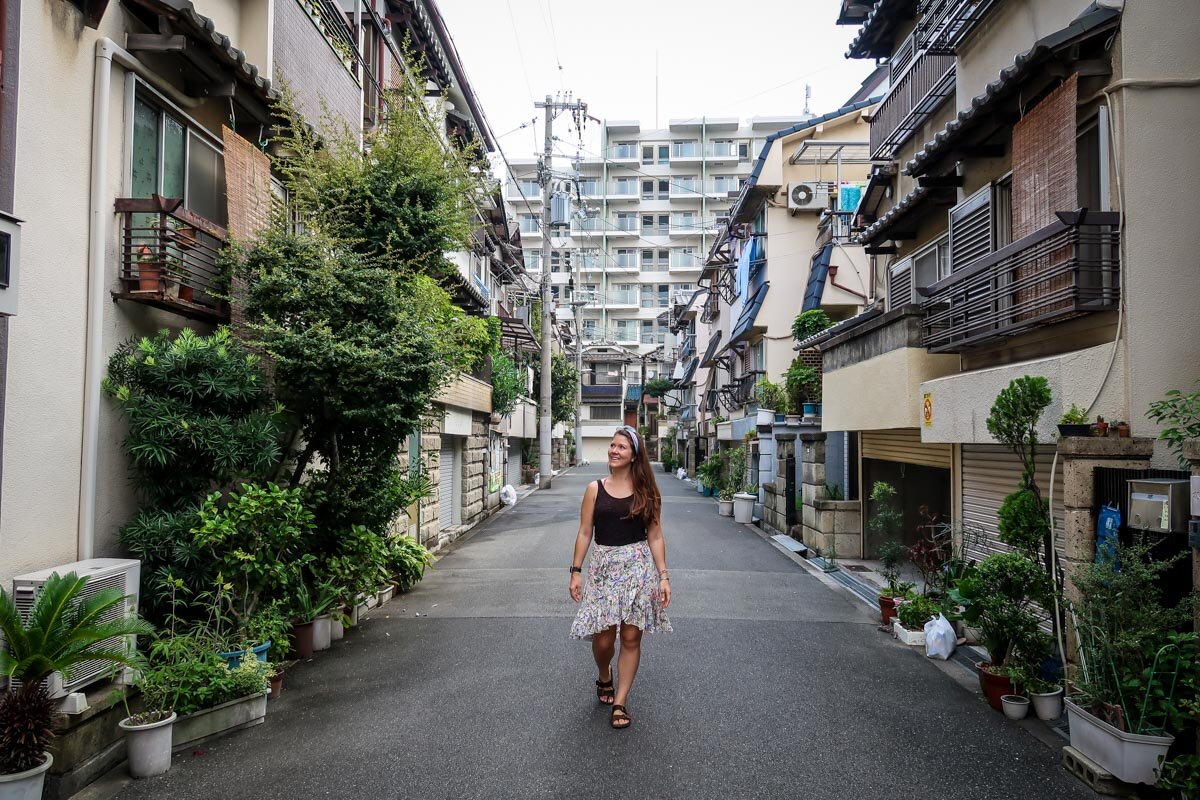
As you start to plan a trip to Japan, you might find yourself fretting and wondering if the rumors are true…
Is Japan expensive?
And if so, just how expensive are we talking?
I’m going to give it to you straight: Yes, Japan is an expensive country to travel. Especially when you compare the typical costs to its other neighboring countries.
After living and traveling around Asia for the better part of 4 years, we can say it is the most costly country we’ve visited in Asia.
But hold up, I do have some good news…
If you’re starting to sweat and rethink your dream of traveling to Japan, I’m going to hop right in and say that while it’s not super cheap, it is totally possible to travel to Japan on a budget.
Many things in Japan are actually pretty reasonably-priced. And as long as you have realistic expectations and are equipped with a few handy money-saving tricks, you’ll be able to travel to this fascinating country without dipping into your retirement fund.
Our personal experience
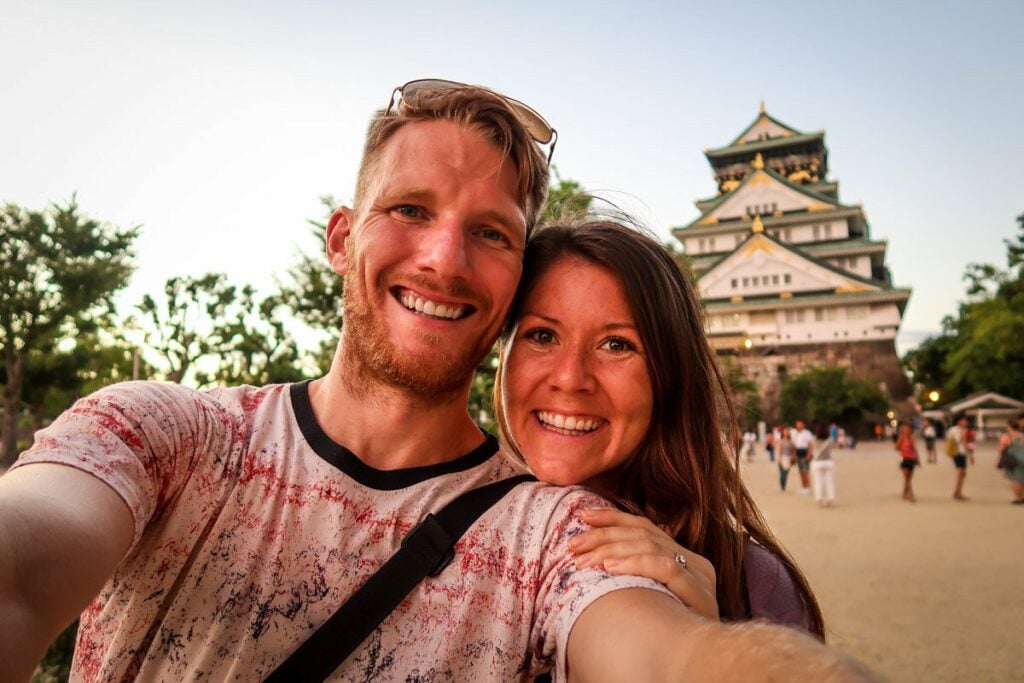
We’ve traveled to Japan three times, each with a slightly different budget:
- The first time (2015), we had 8 days and were on a super tight budget.
- Our second visit (2019) was for 3 weeks, and our budget was a bit more flexible , but still not huge.
- And on our most recent trip (2023), we had 3 weeks and a more generous Japan travel budget . We also had our toddler with us, meaning we made choices with her in mind, which alters our budget a bit.
While our budgets were different on each trip to Japan, we were able to eat amazing food, have unforgettable experiences, and see iconic Japanese sights. We proved to ourselves that it really is possible to have an incredible trip to Japan whether you’re working with a very tight budget or you have more wiggle room
In this article, we’re sharing Japan travel costs so you have an idea of exactly how much a trip to Japan costs. Plus, we’ll share some money-saving tips that’ll help you hang onto those yen.
Good to know: We have updated this article to reflect the actual current prices in Japan so that you have the most accurate, up-to-date information!
Wondering how many days in Japan is enough? Our guide to how many days to spend in Japan will help you figure out how much time you need based on what you want to do.
Japan Travel Cost Guide
How much is a trip to japan.
- Personalized Japan travel budget
- Transportation costs
- Accommodation costs
- Entertainment costs
- Internet costs
- Miscellaneous costs
Bonus Sections:
- General budget tips for travel in Japan
How to find cheap flights to Japan

If you’re planning a trip to Japan, we have the ultimate resource for you!
This FREE PDF download includes everything you’re going to want to pack for your Japan trip, including what NOT to bring, plus tons of insider tips!
Sign up for our ultimate Japan packing list now and get a copy sent straight to your inbox.
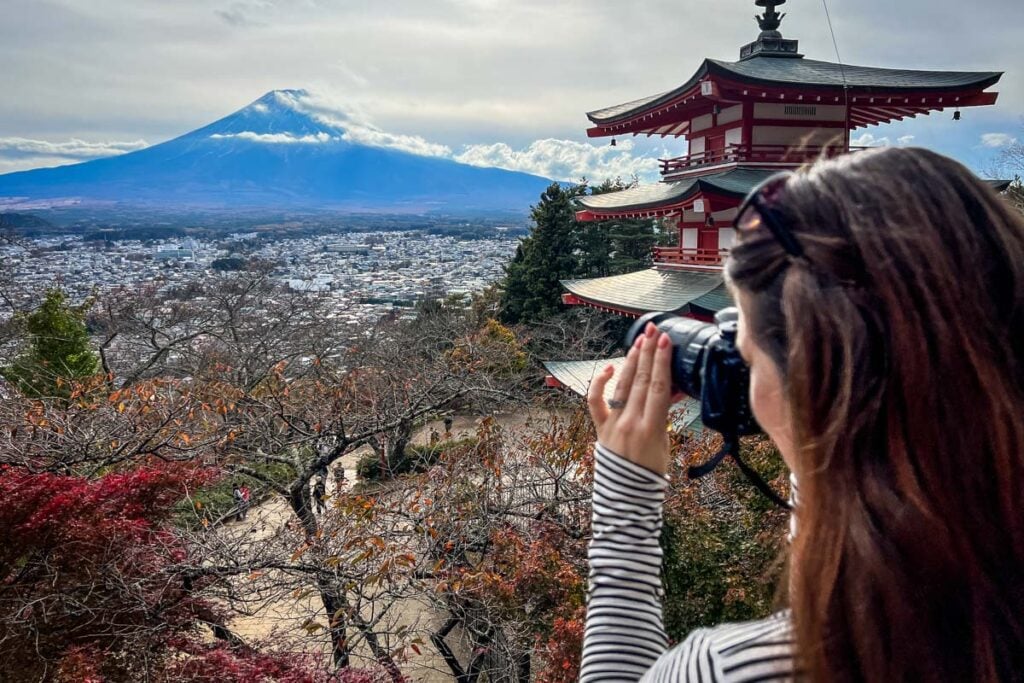
The answer to this question is going to v ary greatly on your travel style . It will also depend a bit on the current exchange rate , as this will have a huge impact on your overall costs.
Start by asking yourself the following questions:
What type of accommodation do you expect? Do you plan on staying at posh hotels, like the famous Park Hyatt in Tokyo where rooms start at upwards of $700 per night (yes, from the movie “Lost in Translation”)? What about a traditional Japanese ryokan stay? Or are you cool with a $50 dorm bed?
How important is food to your trip? Do you want to experience highly-acclaimed Japanese dining? Or are you more of a convenience store and street food type of traveler?
What about tours and entry fees? Are you planning to go to Universal Studios or Disney? Do you want to take tours and do all the bucket list experiences? Do you prefer arranging activities on your own and sticking to free things to do?
Bougie taste: If you want to stay exclusively at upscale hotels, go on lots of tours, and indulge in Michelin-rated restaurants, you can easily spend more than $1,000 USD per day.
Budget taste: But on the flip side, if you stay in hostels, stick to free activities, and eat lots of meals from 7-Eleven, you can get by with about $100 USD each day .
Somewhere in between: I think the majority of us fall somewhere in the middle. If you plan to do a combination of budget as well as some splurges when it comes to accommodation, food, and entertainment, you should expect to budget around $200 – $250 per person per day . (Based on sharing a room with another person.)
Average daily travel costs in Japan
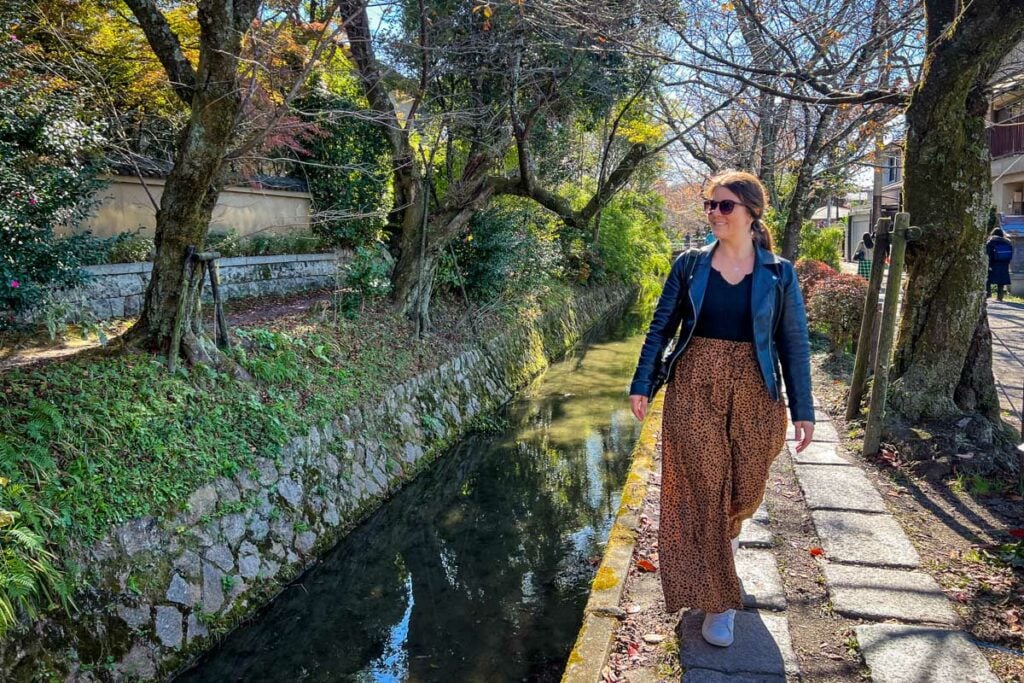
Let’s dive into these numbers!
Keep in mind that what you are about to see are average costs . You can certainly save money in some categories, but this should give you something to start with.
Use the samples below to help calculate your own personal Japan travel budget.
Click on each category to see a more detailed breakdown, plus some handy money-saving tips that’ll keep your costs down!
Transportation : $55 per person, per day
Based on getting the 7-day JR Pass as well as some travel on city metros and buses.
Food : $35 – $55 USD per person, per day
Based on a combination of budget-friendly meals and splurges.
Accommodation : $175 – $250 per night total*
This is a mixture of some budget accommodation, as well as splurging on 1 or 2 special ryokan stays (traditional Japanese inn that typically include dinner and breakfast). Keep in mind that if you are traveling during peak season (like “Golden Week”), your accommodation prices will be on the higher end.
*Note: Accommodation is based on 2 people sharing a room. If you are a solo traveler and plan to stay in a combination of private rooms and dorms or capsules, this cost may be closer to $45 – $75 USD per night (or a bit higher if you don’t plan to do dorms).
Entertainment : $15 – $30 per person, per day
Based on doing a couple of tours and visiting low-expense places, like temples, shrines, gardens, castles, and parks.
Internet : $1 – $9 per day
You’ll definitely want to have Internet access while traveling in Japan. You can choose to get a WiFi hotspot or a virtual SIM card.
Miscellaneous : $0 – $20+ per day
Ask yourself these questions in order to determine how much miscellaneous money your should budget:
- Do I plan to get coffee or tea daily?
- Will I snack often?
- Will I drink alcohol (sake, beer, cocktails)?
- Do I like buying souvenirs? If so, how much do I plan to spend on them?
- Will I be doing any other shopping in Japan, for clothes, cosmetics, etc.?
Total Japan travel budget
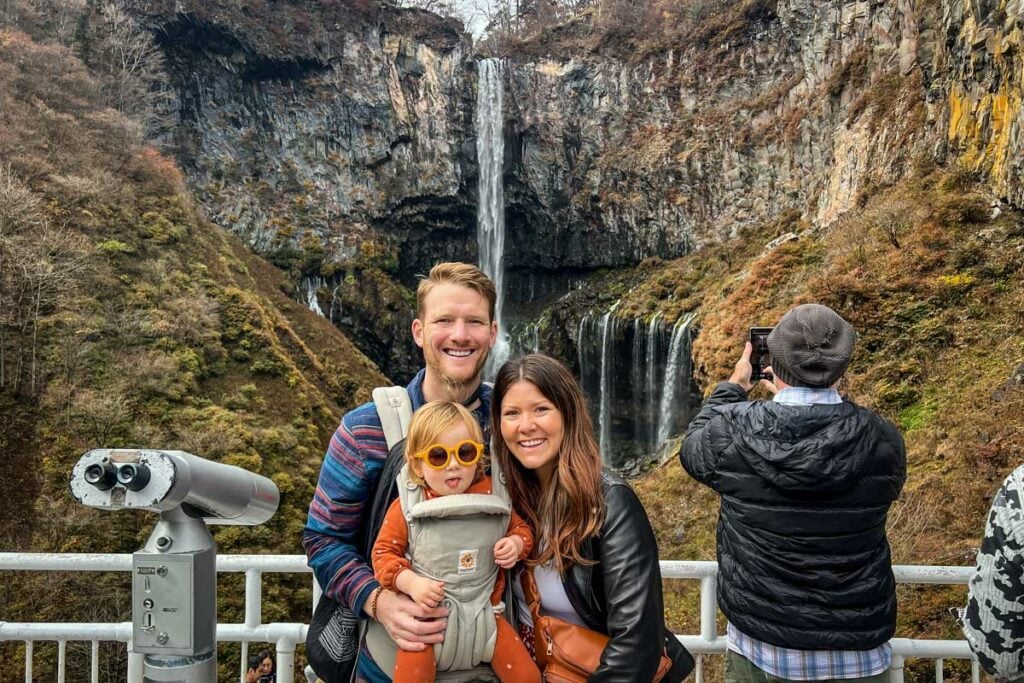
Here are some numbers to help set your own Japan travel budget based on your personal travel style:
- I am very budget-conscious: $145 USD per person, per day
- I am mindful about my budget, but not super strict and plan to do some splurging: $290 USD per person, per day
- Or, you might find yourself somewhere in between: $220 USD per person, per day
Flights to Japan
The budget estimates above are only for your expenses once you land in Japan .
This does not include your flight getting there, as everyone comes from different places in the world, and travels at different times, so flight prices can vary drastically.
We have some tips for finding cheap flights to Japan at the bottom of this article!
Japan Travel insurance
Don’t forget to budget for travel insurance . Depending on your policy and personal background this can vary.
To give you an example, we’ve found 2-week policies through Safety Wing (our favorite travel insurance company that includes medical) from $24. That works out to be just $1.70 USD per day. Policies can be really affordable, so don’t skip this!
How to make your personalized Japan travel budget
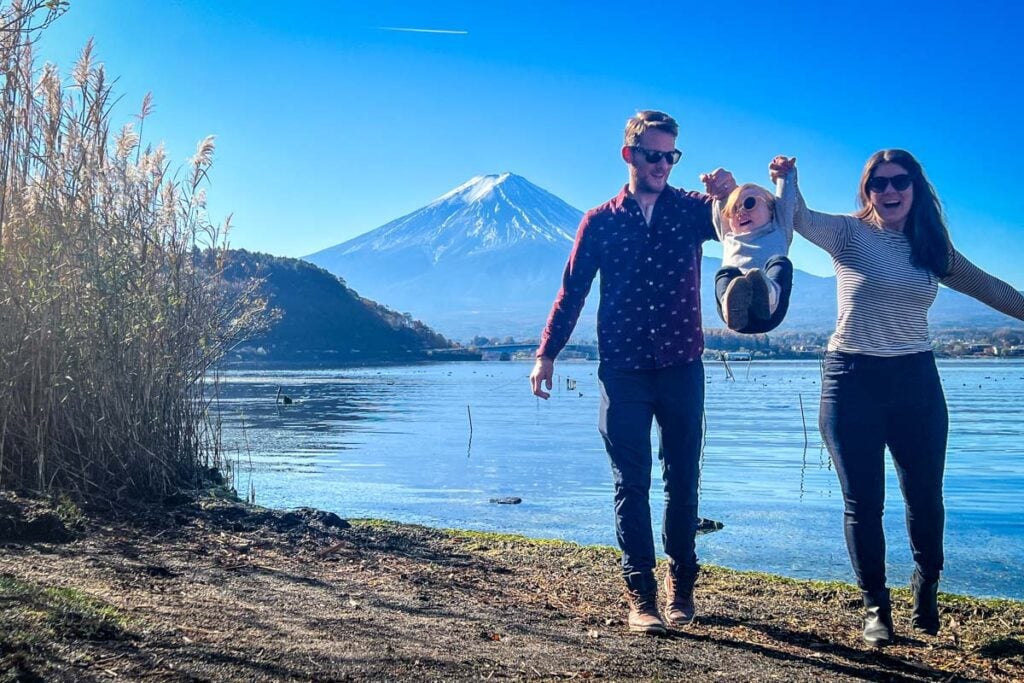
Follow these steps to determine how much your trip to Japan will cost based on your timeframe and personal travel style.
- First, determine whether you’re on the high or low end of the estimates above.
- Now, multiply your daily expenses by the number of days you’ll be traveling in Japan.
- Next, add in 10% of that number as “padding” for incidentals or miscellaneous expenses.
- Add the cost of a travel insurance policy. ( Use this site to get an idea of how much a policy for your trip will cost.)
- Do some research on flights from your home city to Japan so you can add the flight cost as well.
Now that you have a total trip cost which includes flights, insurance, on-ground expenses, and some “padding”, write that number down.
This is your total Japan travel cost.
Daily spending budget
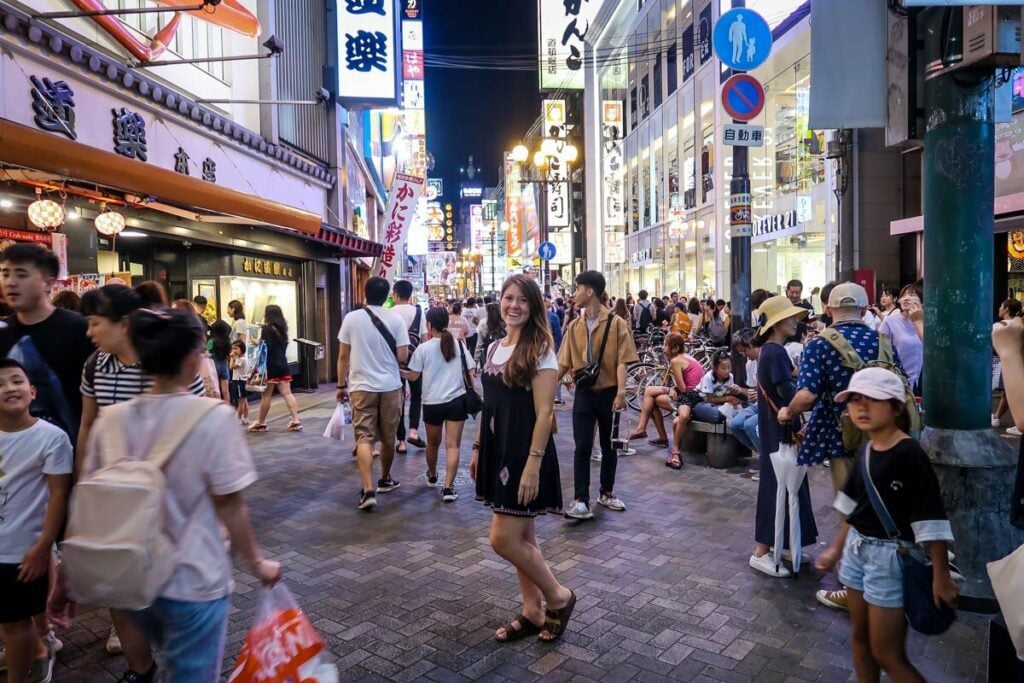
After determining the total cost of our trip to Japan, we then like to come up with our daily spending budget.
- Take the total trip cost you got in the section above and subtract the flight and insurance costs.
- Now you have your total on-ground budget.
- Each time you book a hotel or tour, subtract the cost from your total on-ground budget. Repeat this until you have all your accommodation and pre-booked tours set.
- If you purchase the Japan Rail Pass or book a rental car, subtract the total transportation cost from this number.
- Once you have booked all of your pre-trip accommodation, transportation, and tours, you will be left with the amount of money you have left to spend in Japan . This can be for food, souvenirs, entry fees, public transportation, etc.
- Divide this number by the total number of days you’ll be in Japan. This will give you the amount you have to spend each day.
- Download a budget app where you can set your budget goal.
- During your trip, record each expense and you’ll see how much money you have left to spend that day. If you overspend one day, try to spend less than your goal on the next day to even things out.
Read more about how we create foolproof travel budgets for anywhere in the world here!
Now, we’re going to dive deeper into each category so you can get a better understanding of each expense.
Transportation costs in Japan
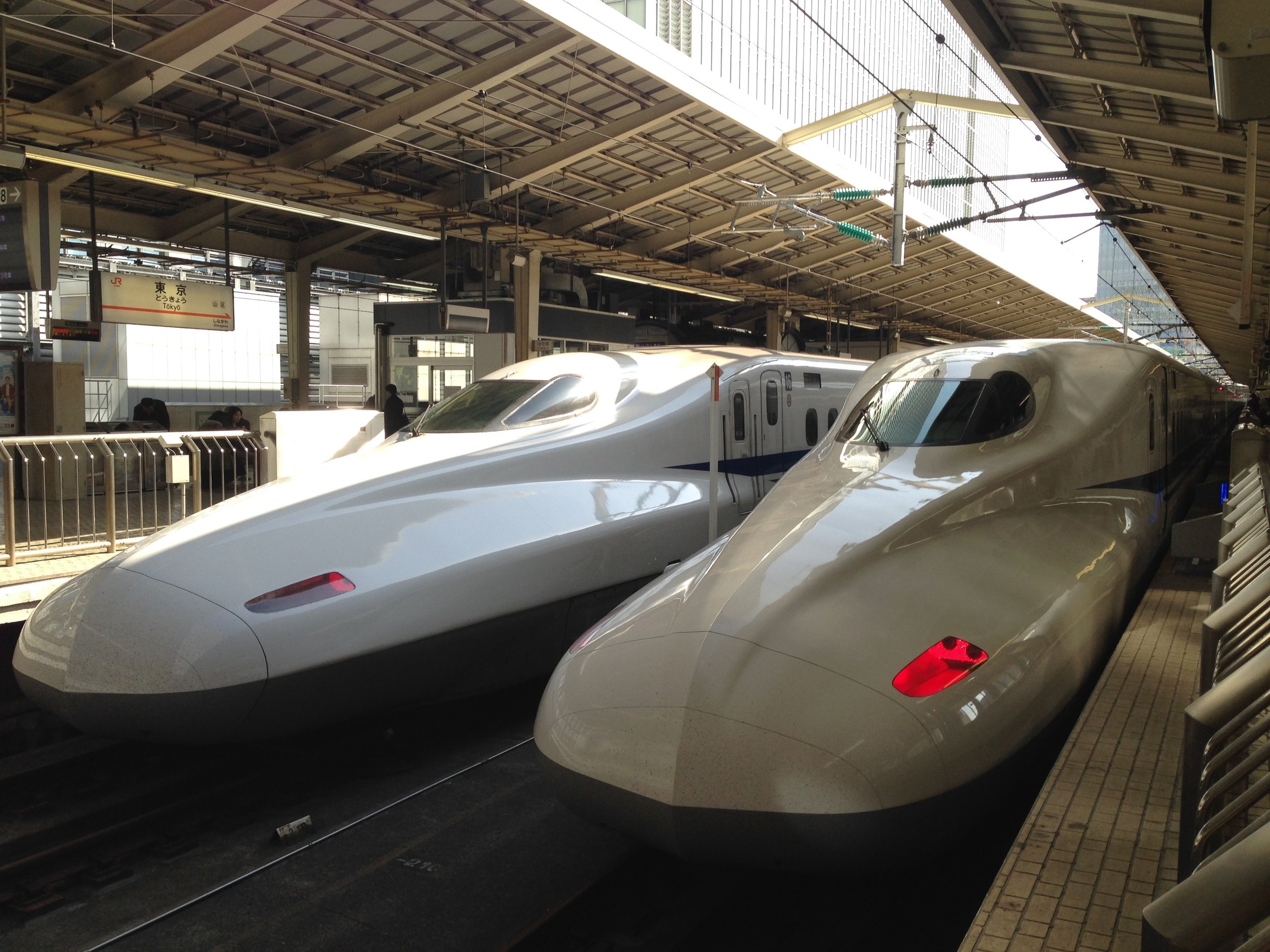
Japan is a relatively small country, but it is packed with so many beautiful places to see that it can be downright overwhelming.
The good news is that this country is very well connected by trains, roads, subway systems, and airports. There are many different options when it comes to transportation in Japan.
Depending on your itinerary, you’ll have to do a bit of research and calculations to determine the best option for you.
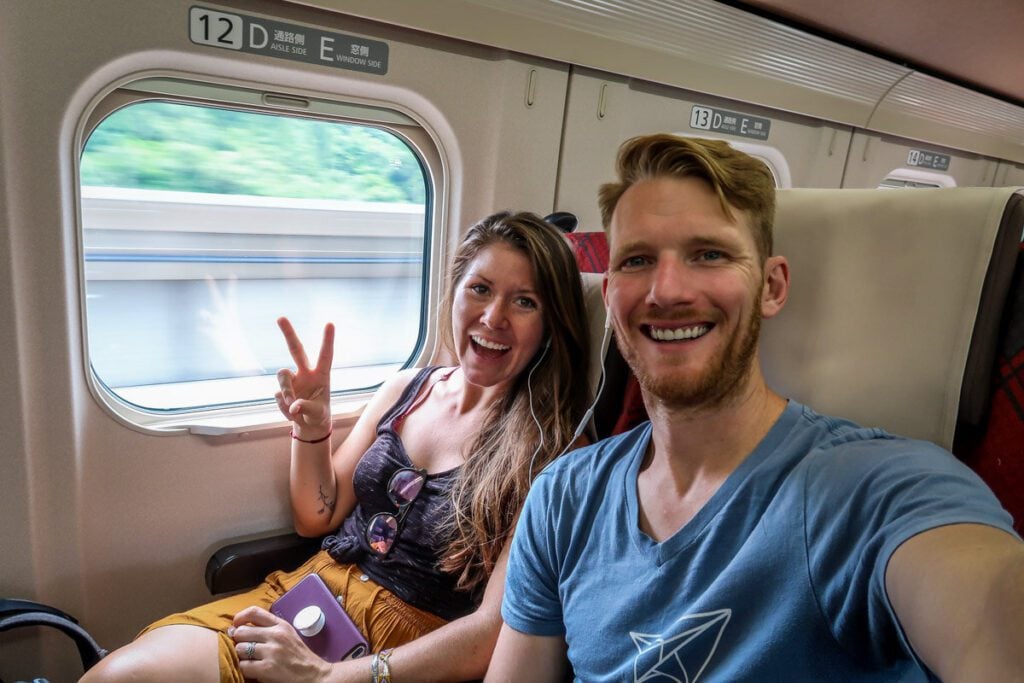
Japan is famous for its efficient, fast, and clean Shinkansen , or bullet trains.
The Japan Rail Pass is a package that foreign travelers can purchase which gives them access to certain trains without having to pay for each individual ticket.
This JR Pass guide walks you through how to figure out if it will save you money.

Here are the current prices of the Japan Rail Pass:
- ~$350 USD, or $50 USD per day
- ~$550 USD, or $40 USD per day
- ~$690 USD, or $33 USD per day
Renting a car
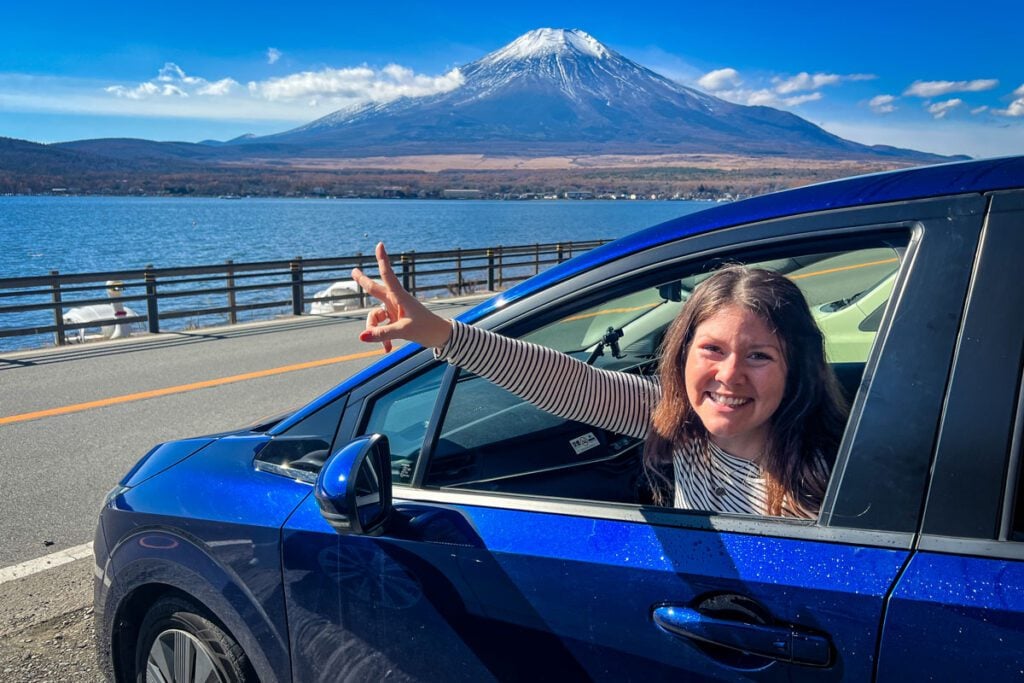
There’s also the opportunity to rent a car in Japan . If you want to get off the beaten track and visit some lesser-known areas in the countryside (highly recommend this!), renting a car can be really fun and it can actually save quite a bit of money.
We rented a car for 15 days in Japan and paid a total of $822 for two adults and a baby.
On top of the rental price, we paid for insurance (which was covered by our credit card), toll fees (totalled about $125 USD), and gas/petrol (about $150 USD).
Our overall cost for renting a car in Japan for 15-days came to $1,097 USD, roughly $73 USD per day for our family of three.
Domestic flight
Taking domestic flights within Japan could be an option. Prices vary based on the airline as well as the time of year and how far in advance you’re searching.
- Tokyo to Sapporo flight (one-way): $35 – $85
- Tokyo to Osaka flight (one-way): $32 – $97
- Tokyo to Okinawa flight (one-way): $75 – $190
Good to know: When comparing flights to trains, be sure to account for the cost of transportation getting to and from the airport , as this can add quite a bit. Factor in the time needed to get to the airport and through security as well, because it will often take at least as long as the train, if not longer (unless you’re looking at two destinations that are very far apart).
Metros and buses
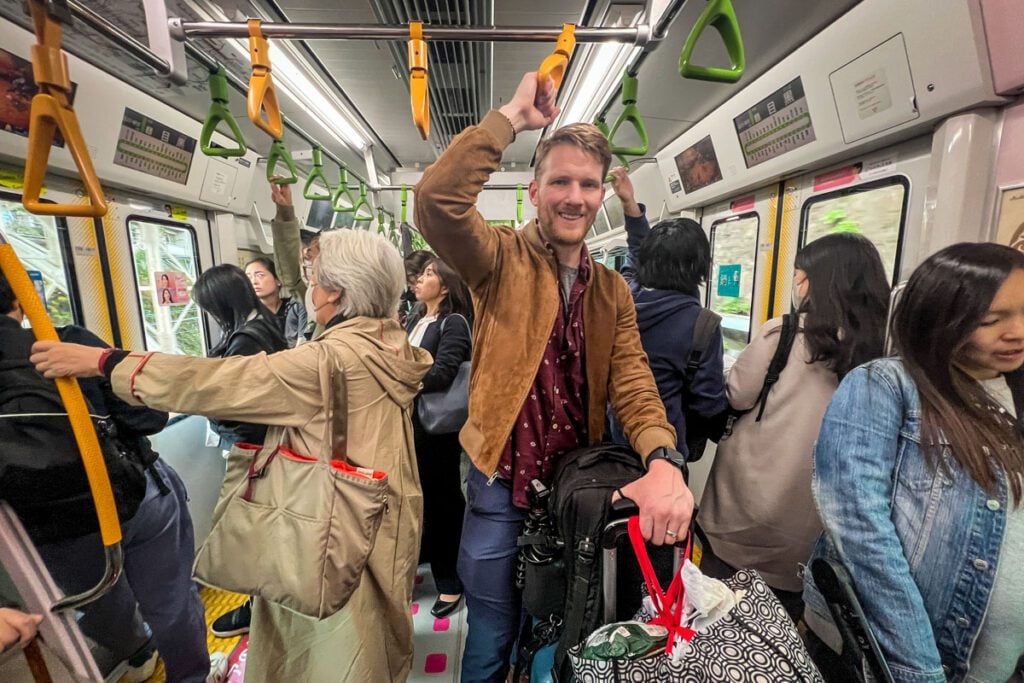
Large cities have subway systems and buses. We highly recommend loading a Suica, Pasmo, or ICOCA virtual card to your phone’s wallet before your trip.
The prices will vary depending on the city you’re in and how far you travel. Each ride ranges around ¥140 – ¥314 ($0.93 – $2).
Our personal experience: On our most recent trip, we spent around ¥4,000 ($27) each during our entire trip for subways and buses around Japan.
Some cities also have passes where you can ride unlimited times, so you may want to look into whether or not that would make sense for you.
Tokyo Subway Pass
- 24-hour ticket: ¥800 adult / ¥400 child
- 48-hour ticket: ¥1,200 adult / ¥600 child
- 72-hour ticket: ¥1,500 adult / ¥750 child

Food costs in Japan
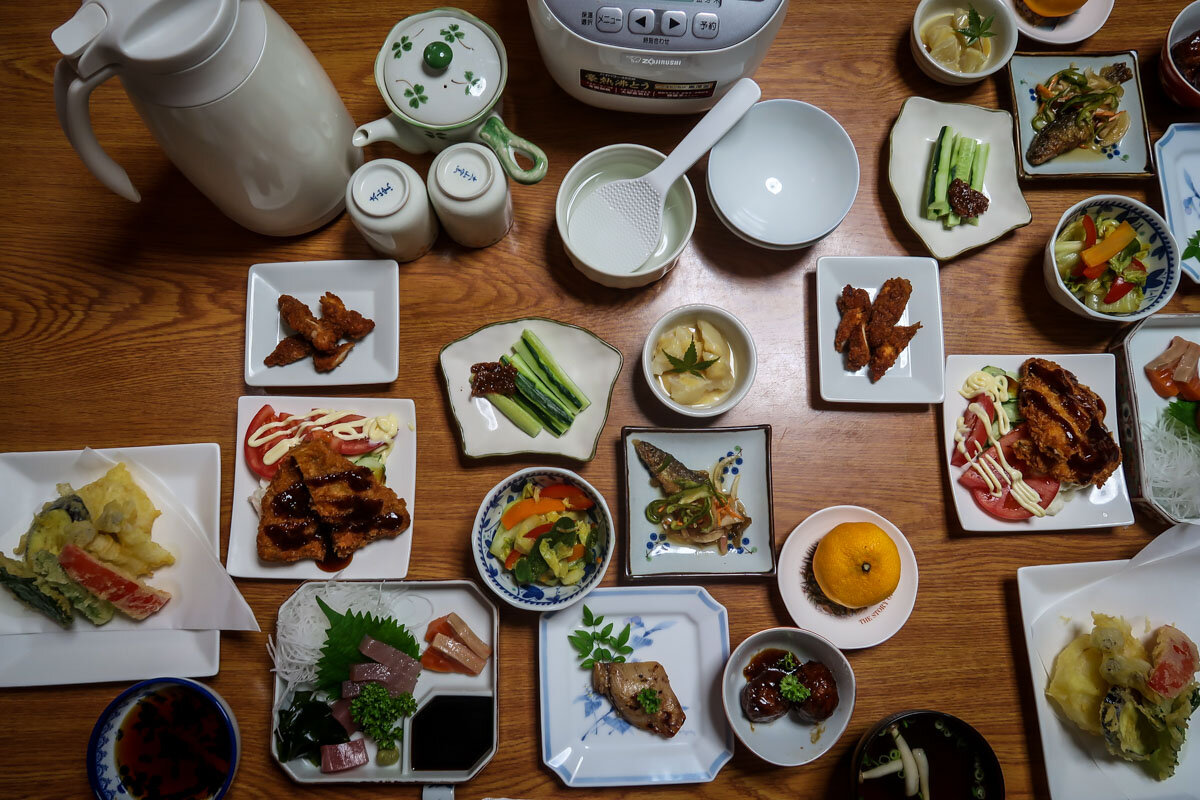
Food is a funny category because it can simultaneously bust or save your budget.
Eating out at a typical restaurant can add up incredibly quickly. And high-end restaurants can come with eye watering bills.
But at the same time, you can get an entire meal at a convenience store (much less sketchy than it sounds) for just a few bucks or Michelin-rated street food for not much more than you’d expect to pay at a fast food restaurant.
Our advice is to have a happy combination of both splurge-worthy meals and cheap eats to balance things out without sacrificing your experience.
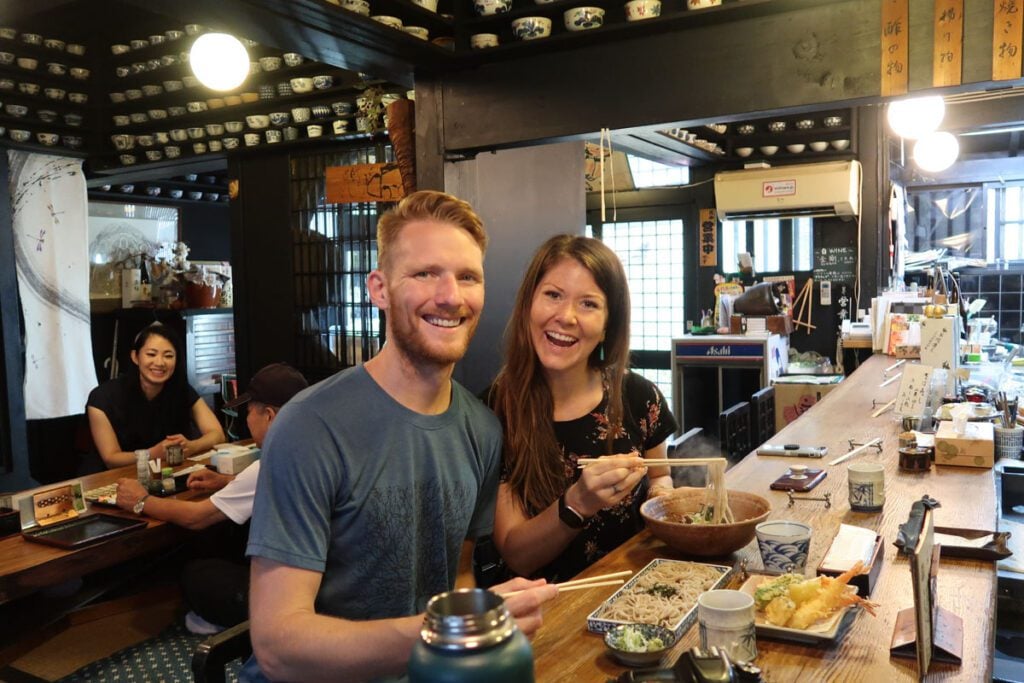
Meal prices in Japan:
This is a breakdown of how much we would personally allocate to our daily food budget:
- Breakfast: $5 – $7
- Lunch: $10 – $15
- Dinner: $15 – $25
- Snacks: $5 – $8
This works out to be $35 – $55 per person, per day for meals and snacks. This will allow you to try just about any food you desire and will leave room for splurge meals.
Our personal experience: Some days we would splurge on dinner and spend $60 each, but have a small snack for lunch. On other days both lunch and dinner were under $15. It all kind of evens out in the end, but these are some numbers to help you get started.
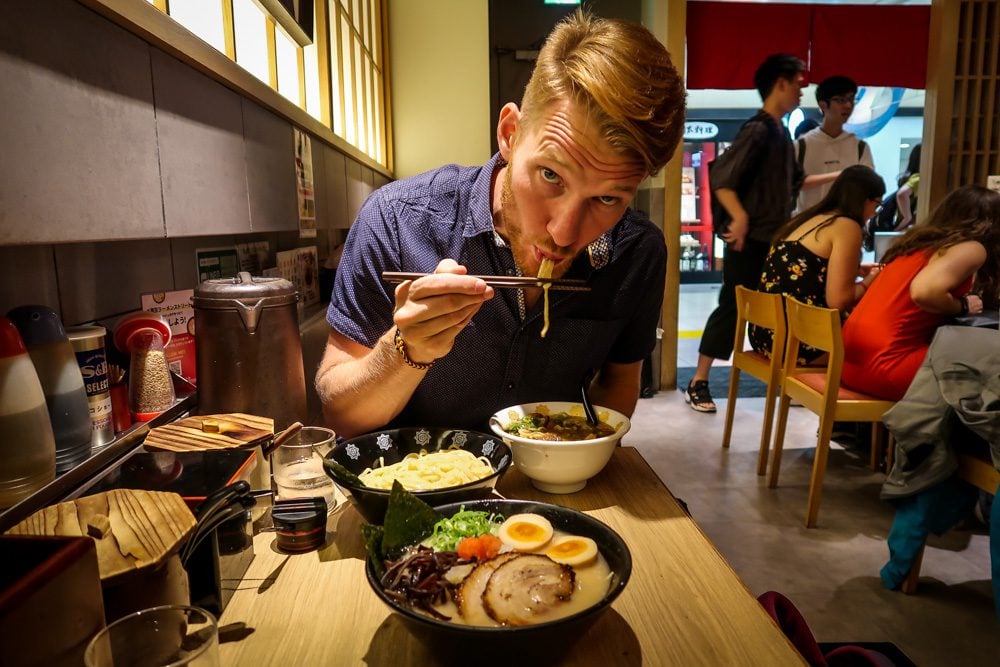
Expensive meals:
- Any type of traditional kanseki restaurant
- High-end sushi
- Waygu or Kobe beef
- Theme restaurants
Cheap meals:
- Bento boxes
- Konbini (convenience store) meals
- Conveyor belt sushi
- Ramen, udon, or soba
If you’re a big foodie and can’t wait to get your hands— errrr , tongue—on ALL the Japanese food, you may want to increase this section of the budget because $25 for dinner is still going to restrict what types of restaurants you can eat at .
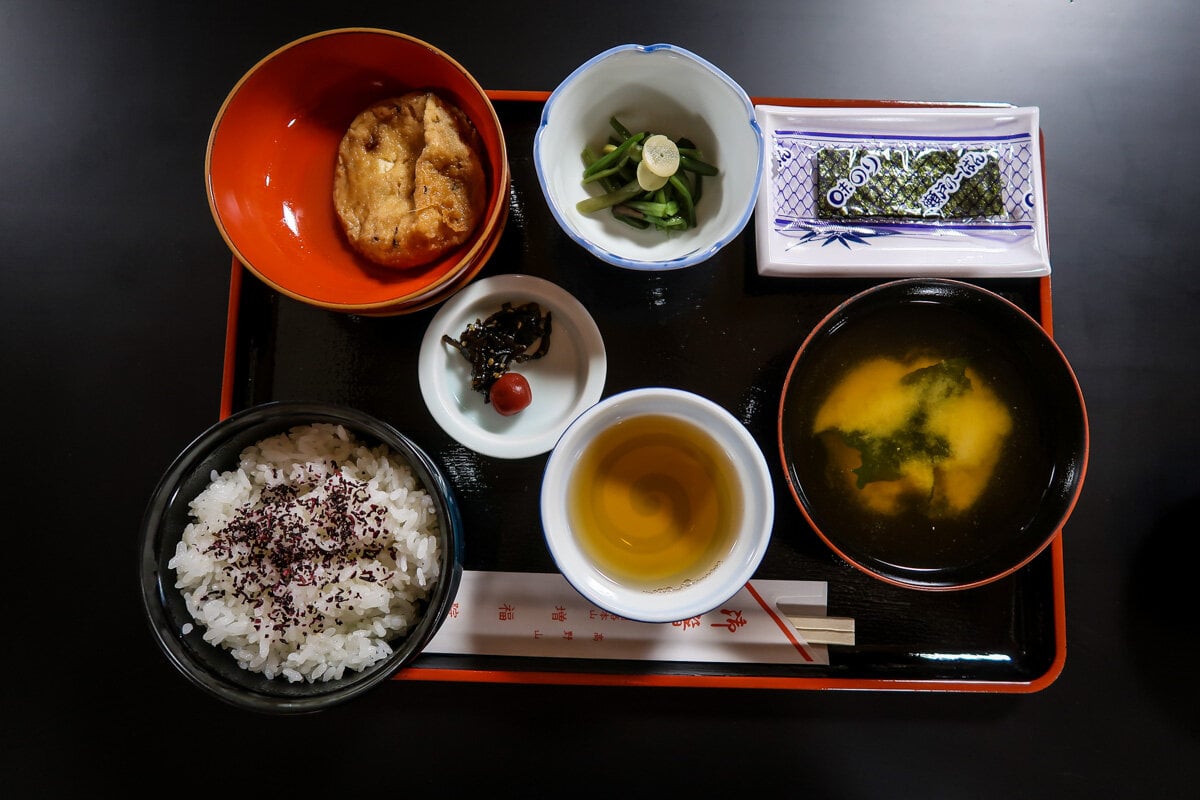
However, if you’re not big on eating out and are totally cool with getting most of your food from convenience stores or budget restaurants, you could lower this to $30 per day .
In fact, during our first trip to Japan (back in 2015), we averaged just under $14 per person each day for all meals and snacks. But there were a lot of foods we didn’t have the chance to try because of our restrictive budget, so we wouldn’t recommend aiming for this.
Pssst! You definitely want to check out this article with all the best Japanese foods to be sure you try during your trip!
Accommodation costs in Japan
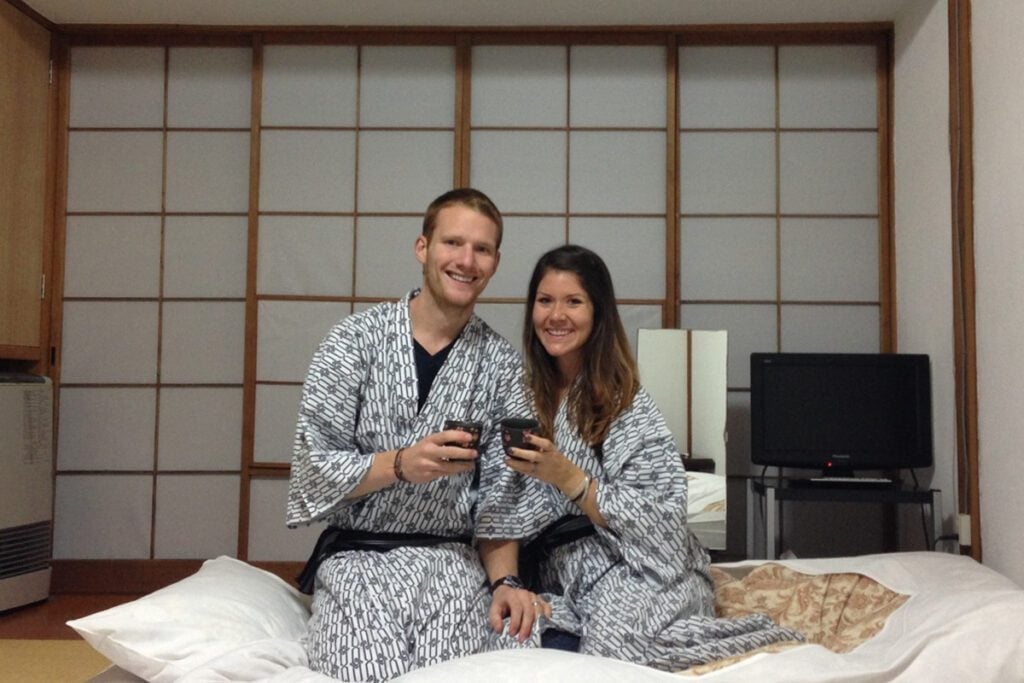
Booking accommodation in Japan can elicit both responses:
- “Holy s***, that’s SO EXPENSIVE!”
- “Ah okay, that’s actually not so bad.”
Let me put it this way: You’re not going to find jaw-dropping hotel rooms for $40 USD like you can in other Asian countries like Thailand and Indonesia. But there are some reasonable places out there, especially outside of the major cities.
Expensive accommodation:
- Tokyo hotels that are well-located
- Ryokan stays (expensive but typically includes meals and is a totally splurge-worthy experience)
- Specialty accommodation, like an onsen resort
- Accommodation near major sites, like Mount Fuji or Kyoto, during peak season (like “Golden Week”)
- Higher-end hotels in Kyoto
Cheap accommodations:
- Capsule hotels or dorm beds
- Accommodation in the countryside (outside of the major cities)
- Airbnbs are sometimes pretty reasonably-priced
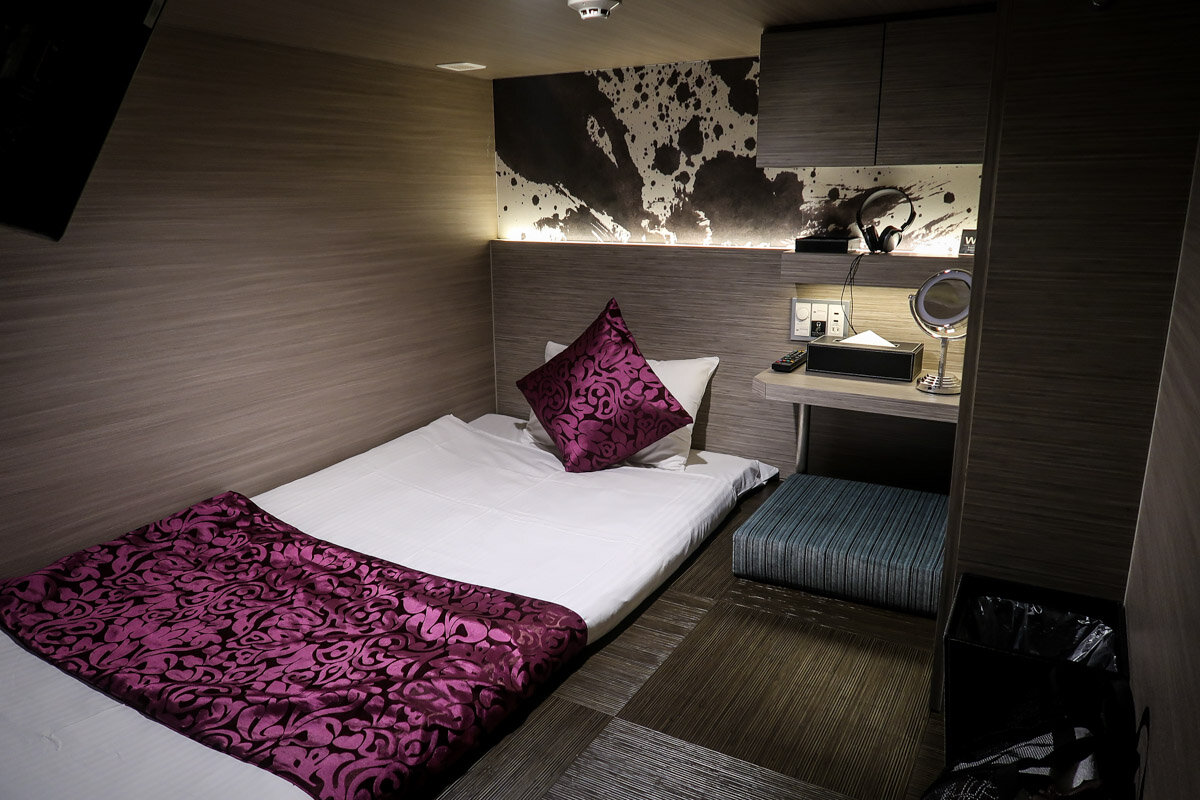
Example prices for accommodation in Tokyo
Being that Tokyo is incredibly dense and space is scarce, prices are high for what you get. Your Tokyo hotel will likely be some of the most expensive on your trip. Here are some examples of what you can expect when it comes to cost of a hotel room in Tokyo.
- Budget: ¥8,600 for a dorm bed in a cheap hostel ( around $60 USD )
- Mid-range: ¥22,000 – 38,000 for a private room in a guesthouse or cheap hotel ( around $120 – $250 USD ); Note: the cost will vary a lot depending on the location and the time of year
- High-end: ¥65,000+ for a Western style hotel or ryokan ( around $440 USD and up )
Actual Japan hotel costs
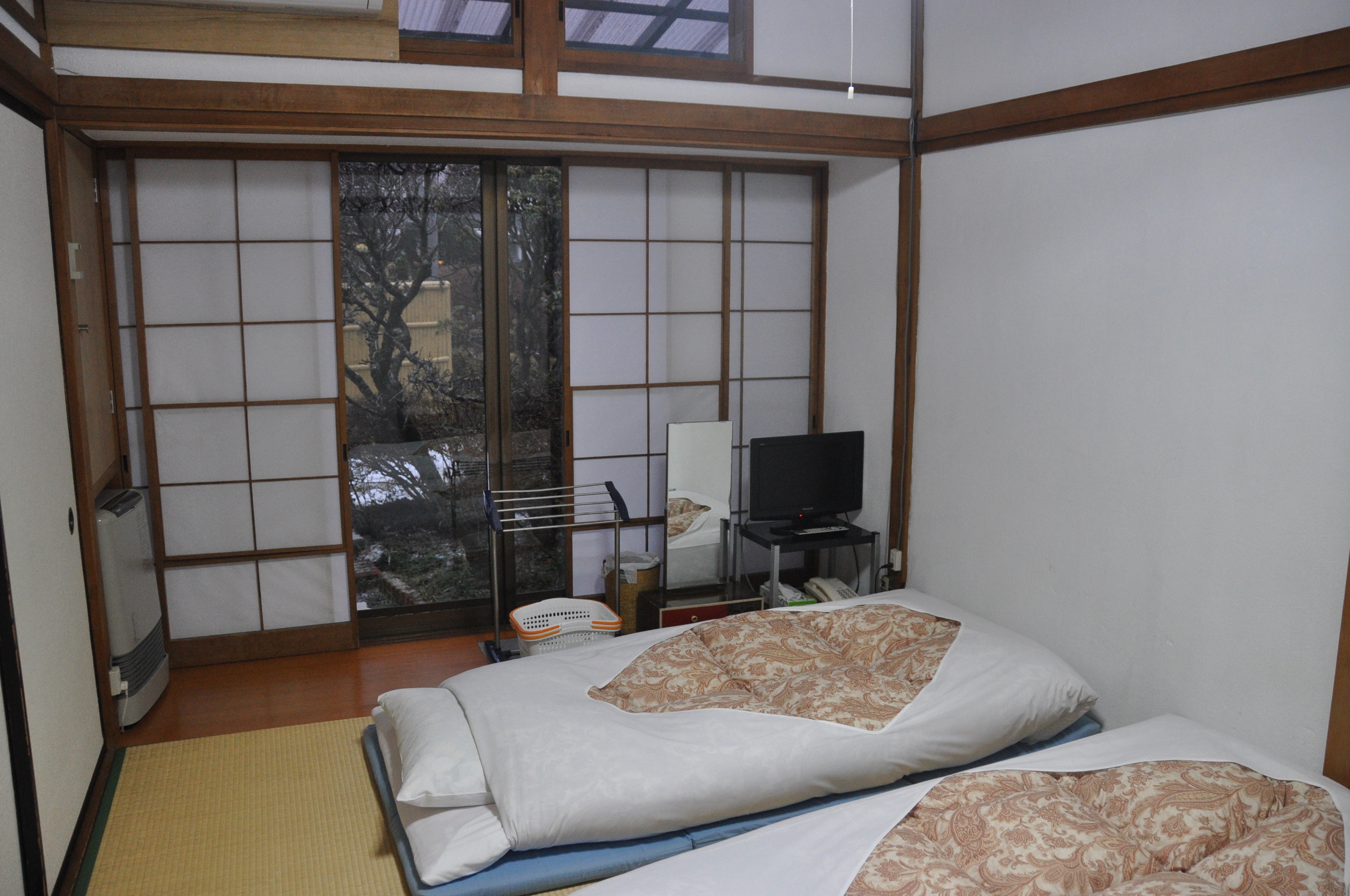
These are actual per night prices we have personally paid for accommodation in Japan:
- $30 capsule hotel in Osaka (note that is $30 for each of us, so $60 total )
- $32 bed in a dorm in Toyama (note that is $32 for each of us, so $64 total )
- $75 private room in a hostel in Matsumoto with shared bathroom
- $100 room in a lovely guesthouse in Takayama with a shared bathroom
- $105 tiny hotel room outside of Tokyo city center
- $114 simple room with shared bathroom on the Nakasendo Trail (including wonderful dinner & breakfast)
- $214 tiny but well-located hotel room in Shibuya
- $213 onsen lodge in Nikko National Park (including amazing breakfast)
- $226 temple stay at Koyasan , which included an incredible dinner and breakfast
- $250 wonderful hotel in Kyoto
- $290 glamping stay near Mount Fuji during peak leaf peeping season
- $324 huge hotel room a bit outside the city center in Tokyo
As you can see, there is quite a bit of variance. We’ve paid anywhere from $60 to $324 per night while in Japan.
Entertainment costs in Japan
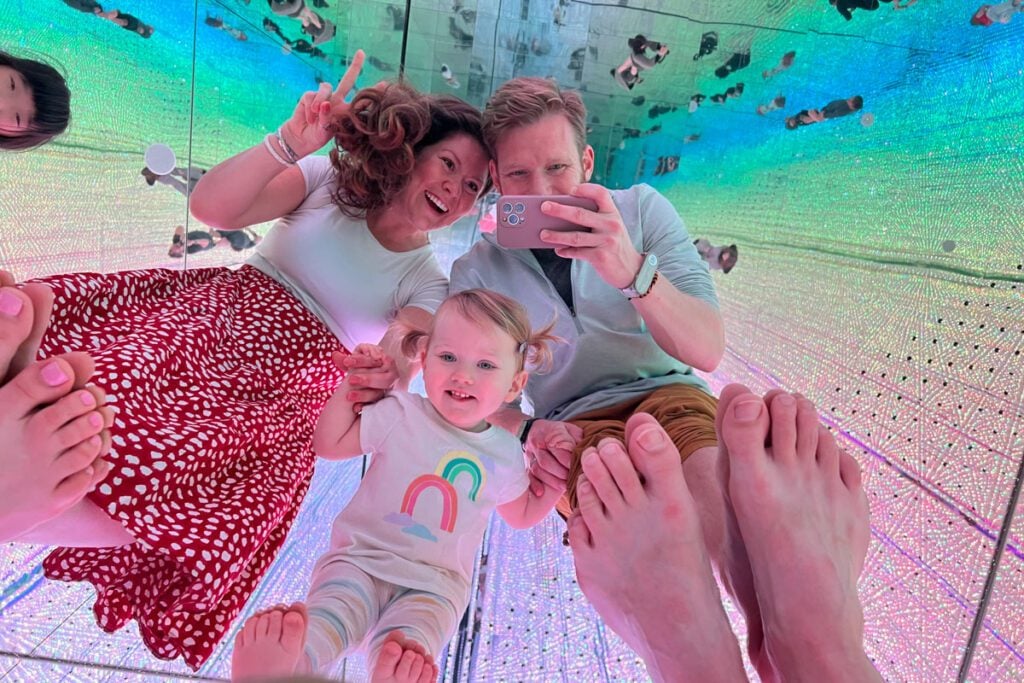
Japan is full of epic nature, crazy things to do that you can’t find anywhere else in the world, and meaningful cultural experiences.
It would be a shame to let your budget limit your experiences in Japan; however, we know all too well that it’s easy to get carried away and spend a fortune without realizing it.
Our best advice for keeping your entertainment costs down is to plan ahead for what big activities you definitely want to do.
Cheap things to do in Japan
- Jigokudani Snow Monkey Park : Visit the park where snow monkeys soak in their very own natural hot spring. Park entrance: ¥800 (~$5)
- Osaka Castle : Enter the 8-story castle surrounded by two moats built in the 15th century. Entrance cost: ¥600 (~$5)
- Hiroshima Peace Museum : Learn about the devastation and rebuilding of Hiroshima after the atomic bomb in WWII. Entrance cost: ¥200 (~$1.70)
Mid-range activities
- teamLab Planets : Immerse yourself in one of the coolest digital art museums in the world. Entrance: ¥4,000 (~$26)
- Shibuya Sky Observatory : Get one of the best views over Tokyo at this beautifully-designed observation deck. Entrance: ¥2,250 (~$15)
Splurge experiences in Japan
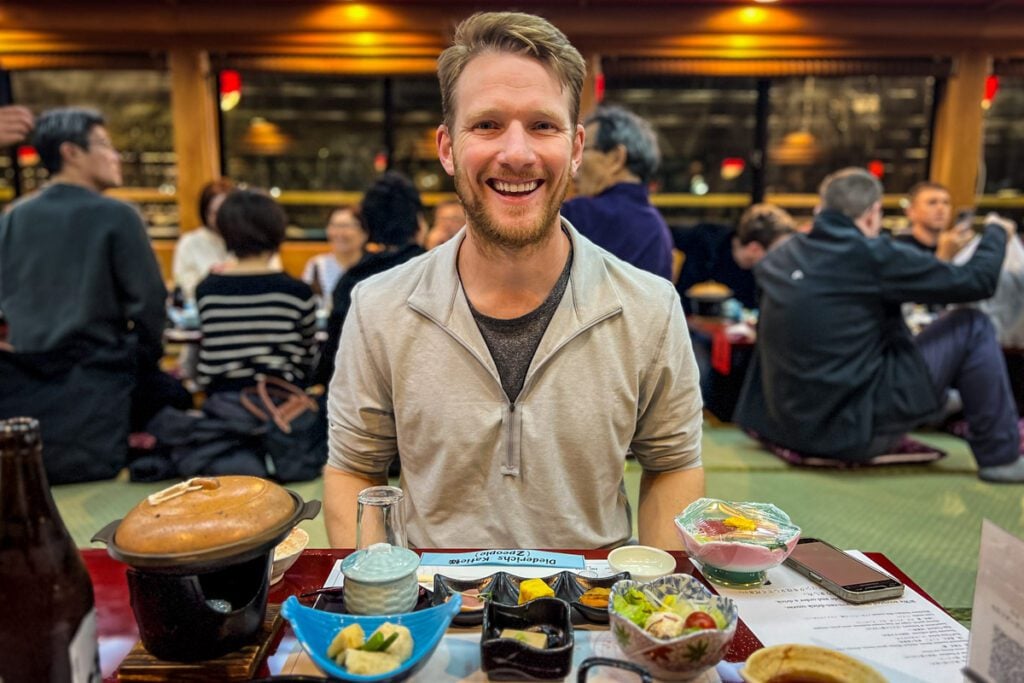
- Arigato Food Tour : walk around a historic neighborhood with a local guide sampling food and drinks from local shops. Tour costs: ¥25,000 (~$170)
- Add on Express Pass : We’ve personally never been (yet!), but we’ve heard that the Express Pass is the ONLY way to go to Universal Studios because otherwise you’ll spend a good portion of the day waiting in line. Express Pass cost: ¥19,000 – ¥26,000 ($125 – $170) + the cost of your Universal Studios ticket ( Prices for the Express Pass vary based on the day/demand.)
- Mount Fuji day trip : See the most iconic views of Mount Fuji on a guided tour that’ll get you back to Tokyo by dinnertime. Tour cost: ¥12,000 ($82)
- Magical Trip Bar Hopping Tour : Take an evening out with a local guide and see Japan’s nightlife. Tour cost: ¥16,000 ($105)
- Tokyo Dinner Cruise : Enjoy a traditional Japanese meal while cruising down the Sumida river in a boat past the city’s most iconic sights. Tour cost: ¥15,000 ($100)
Powered by GetYourGuide. Become a partner.
Internet costs in Japan
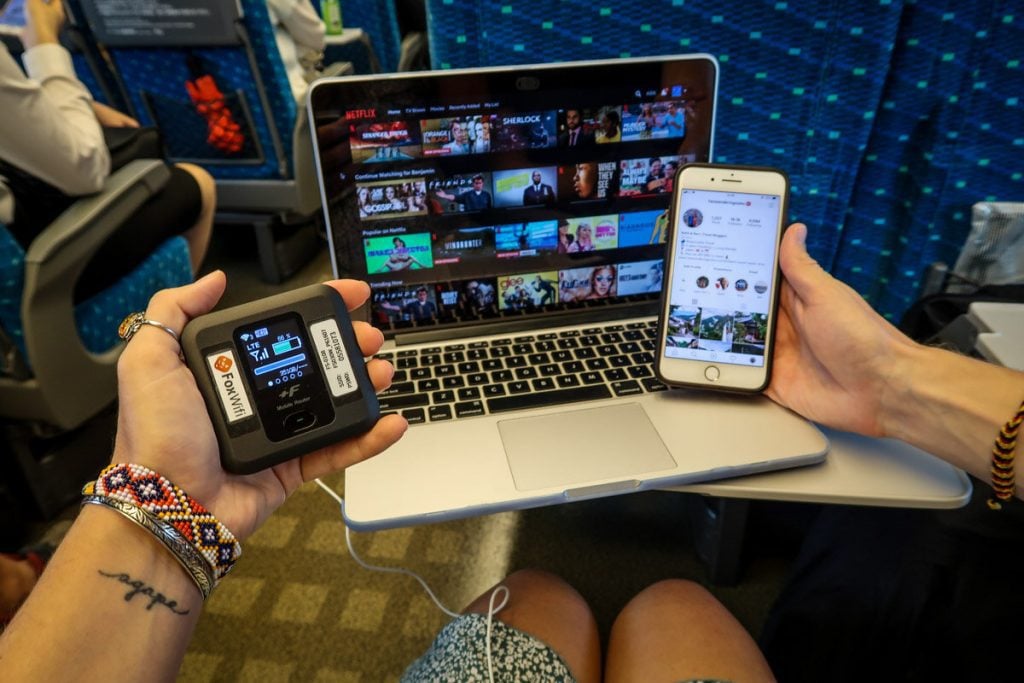
You can choose to either rent a WiFi hotspot (which everyone in your travel party can connect to) or you can each get virtual SIM cards.
WiFi Hotspot
Depending on how many days you rent it for, a WiFi hotspot will typically cost between $6 – $9 per day . Again, everyone in your travel party can use it so this is not a per person price.
The company we get eSIMs through (Airalo) offers the following plans:
- 5G for 30 days: $11.50
- 10G for 30 days: $18
This will be a per person cost since you’ll each want an eSIM on your phone.
Not sure which is best? We have an article that compares WiFi hotspots and eSIMs . We’ve used both but think there’s a definite winner for most travelers!
Miscellaneous costs in Japan
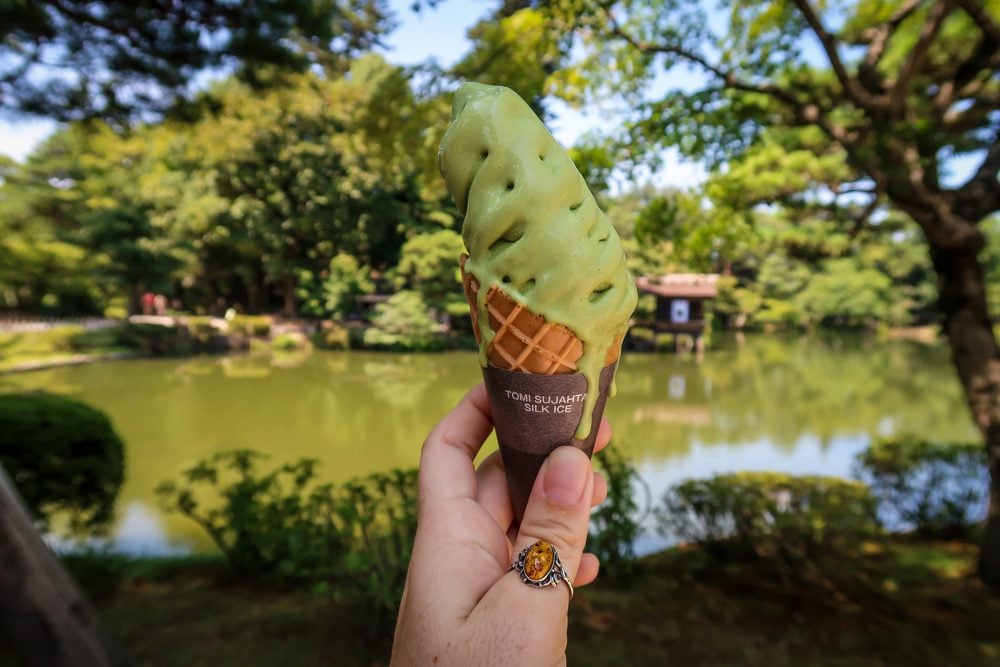
This category will vary greatly from person to person based on your travel style and priorities.
If you drink alcohol, coffee, matcha, plan to get souvenirs, or snacks, here are some average prices to know:
- Sake at a restaurant: ¥500 – ¥700 ($3.30 – $4.60)
- Bottle of nice(ish) sake: ¥1,800 ($12)
- Cocktail at a speakeasy: ¥2,000 ($13)
- Coffee: ¥500 ($3.30)
- Matcha: ¥500 ($3.30)
- Souvenir t-shirt: ¥2,500 ($17)
- Souvenir Japanese chef knife: ¥18,000+ ($120)
- Ice cream cone: ¥300 ($2)
- One piece of fresh mochi: ¥200 ($1.30)
- Packaged pastry at konbini: ¥200 ($1.30)
General tips for budgeting for Japan
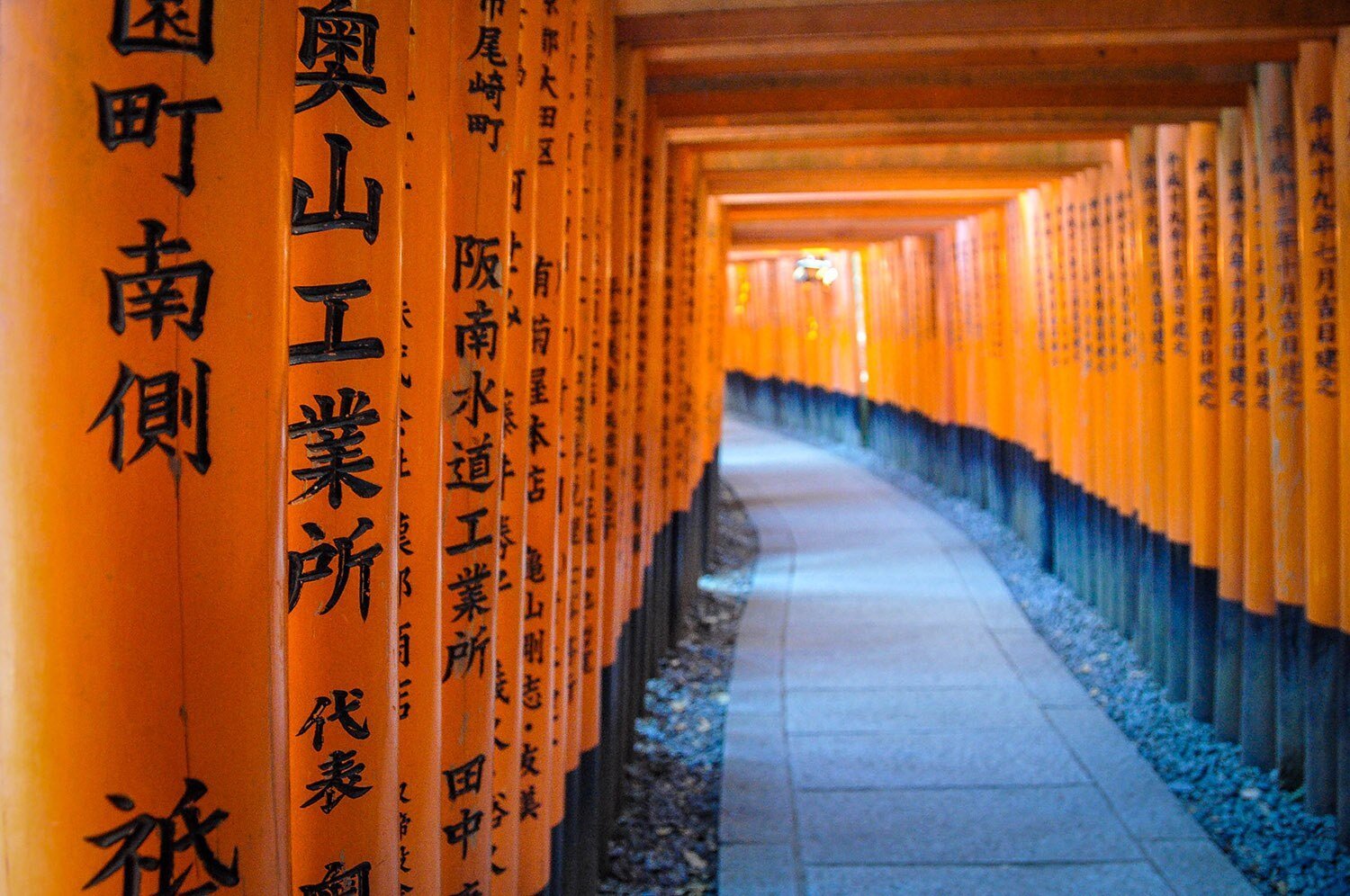
Below are some general tips for budgeting in Japan. We also have a complete article about traveling Japan on a budget that includes tons of money-saving tips for every aspect of your trip!
1. Set a budget and keep track of your spending
The very first thing we do before any trip is to create a personalized travel budget . We research average costs in that country, take our travel style into consideration, and come up with a daily budget we’d like to stay beneath. We’ll multiple that out by how many days we’ll be traveling, and we like to add a little extra for a “cushion”.
Now that we have a dollar amount in mind, we plug that into a budget-tracking app (we like Trail Wallet, but there are many great ones out there!).
During our travels, we get in the habit of recording every single expense. It takes a bit of getting used to at first, but we’ve made it into a game of sorts and it becomes a challenge for us to stay beneath our daily “allowance”.
And remember, it’s all about balance. If we go over our budget today, we will try to make up for it tomorrow.
Tracking our expenses has become an integral part of how we stick to a budget. And honestly, getting into this habit is the biggest tip we can offer for anyone out there who wants to make travel a reality when you don’t have unlimited funds (wouldn’t that be nice?!).
2. Avoid traveling during peak tourist season
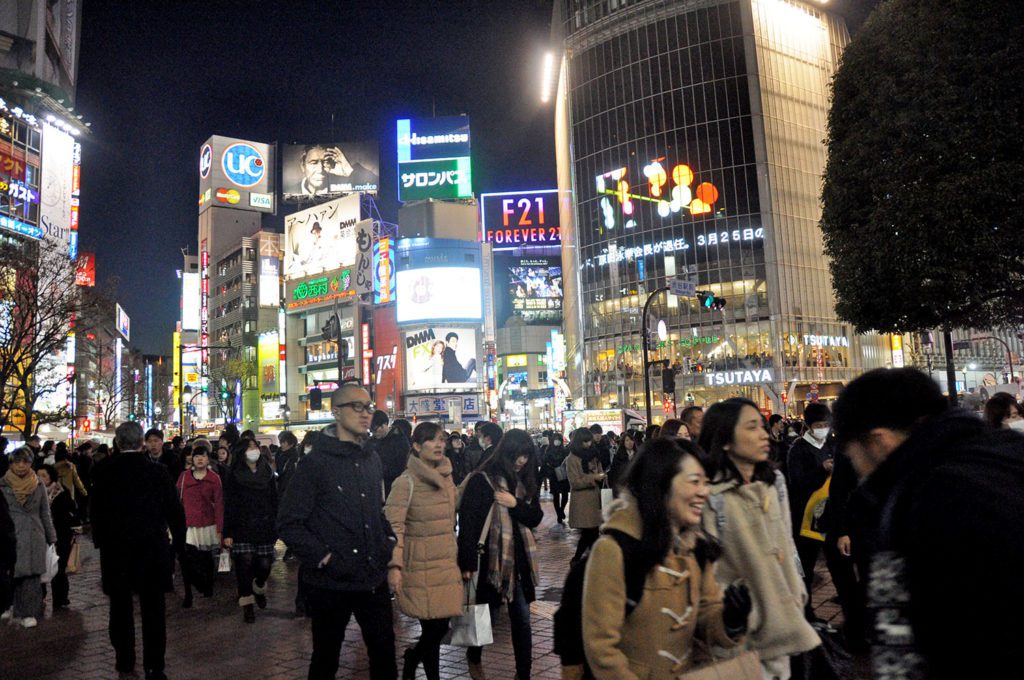
I’m going to come right out and say it: Traveling to Japan during cherry blossom season is definitely a bucket list trip, but it is going to come at a premium price.
If you want to travel to Japan on a budget, this is not the time to do it.
You’ll also want to avoid major events like the Olympics in Tokyo, and around New Years, which is a popular time for locals and foreigners alike to travel around the country.
To learn more about how to avoid peak tourist season and when you should go instead, read up on the best time of year to visit Japan .
3. Withdraw money from ATMs (for free!)
One major question we get asked is how we get local currency in the countries we visit. We have a major hack for this, so listen up…
No matter where we are in the world, we get the currency by withdrawing from ATMs. This will give you the best possible exchange rate.
We almost never get currency from exchange booths (especially the ones at airports!) because they seriously rip people off. And even if you get currency from your home bank, you’ll be paying a premium for the exchange.
So how do we avoid those pesky ATM withdrawal fees?
Let me introduce you to the Charles Schwab debit card! Free to set up, no annual fee, AND they reimburse ALL ATM FEES at home or abroad. It is an insane deal.
Before we had this card, we used to try to calculate the exact amount of money we’d need for the trip so we didn’t have to take out money multiple times and thus get charged for each withdrawal. This led to us carrying around a huge amount of cash (which never felt safe), or us trying to spend as little as possible the last couple of days so we wouldn’t have to take out more.
Now, we can take out smaller amounts whenever we need it because it is FREE.
We are not affiliated with Charles Schwab in any way, and we don’t make commission by recommending them. We just love our card so much that we want to share the love!
We’d highly recommend it to any of our American readers.
Note: For all our non-American friends, we are in the process of trying to find similar cards that allow free ATM withdrawals from other countries around the world. Let us know if you have any recommendations!
4. Drink water from the tap
I’m gonna keep this one short because hopefully it doesn’t require much explaining. The tap water in Japan is totally safe to drink, and for the most part it tastes good too! Bring a reusable water bottle (we love our Hydro Flasks ) with you and fill up to stay hydrated!
Not only is this going to help your budget, but you’ll save a ton of plastic waste . Virtual high five!
5. Stay connected to the Internet

This might seem like a strange tip, but stick with me…
Being connected to the Internet will help you get around on transportation with few mistakes, hence avoiding those extra swipes on your metro card. See which transportation apps we definitely recommend you download ! It will also help you find nearby restaurants and filter through the expensive ones.
We have an entire article that goes over the differences between a SIM card and a pocket WiFi device so you can choose which one is best for you. (Spoiler alert: We prefer a pocket WiFi, but most travelers will get along just fine with a SIM card.)
Insider Tip: If you’re traveling with a companion and you’re on a tight budget, the cheapest way to stay connected is getting one SIM card. That way you can split the cost, yet still have access (on one device) to translate and transport apps that are essential on your travels. The second cheapest option is to get a hotspot device, which is cheaper than the cost of 2 SIM cards, yet allows you both to connect devices at the same time.
6. Be careful with your coins
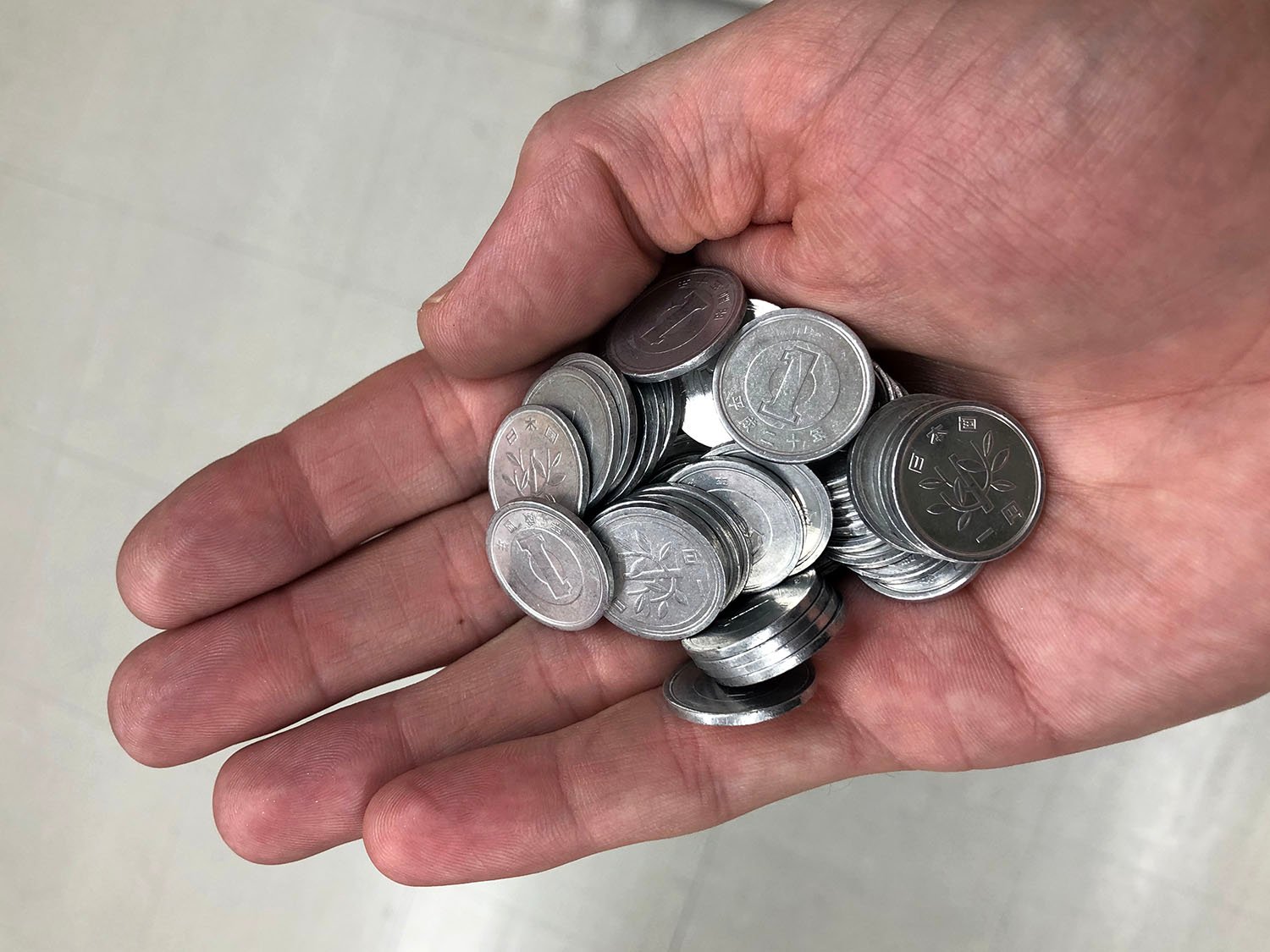
I don’t know about you, but I’m not very careful with coins. Ben throws them in his pockets, we set them on hotel nightstands, I let them get lost at the bottom of my purse. And if I lose a handful of change, it’s usually not a big deal — missing 67 cents isn’t going to ruin my day.
But when traveling in Japan, be more cautious with those yen coins because some of them are worth nearly $5 USD!
As an example, we were preparing to exit a train, and when Ben stood up, a coin fell out of his pocket and into the seat. He dug around for it a little, and found that it was a 500 yen ($4.60 USD) coin! Good thing we didn’t just leave it!
That night, Ben emptied his pockets and we counted $32 USD worth of coins — that’s crazy! After that, we decided we should probably not be so cavalier with those coins, and we got a pouch to keep them safe in.
We’d recommend bringing a coin pouch, or getting one in Japan as a souvenir. Bonus points if it has a way to separate the small coins from the ones that are worth more!
7. Get travel insurance
It’s never fun to think about something going wrong on your trip, but let’s get uncomfortable for a moment…
A medical emergency, stolen valuables (though this is highly unlikely in ultra-safe Japan!), or missed flights can all leave you with a gigantic bill.
Travel insurance is actually much less expensive than you might think, and it can ensure you’re protected in some of these situations. For example, we found a policy through Allianz that covers two people for 3 weeks in Japan for just $56!
Before you start shopping for insurance, read this article that goes over all of the things you should look for before you hit “purchase”.
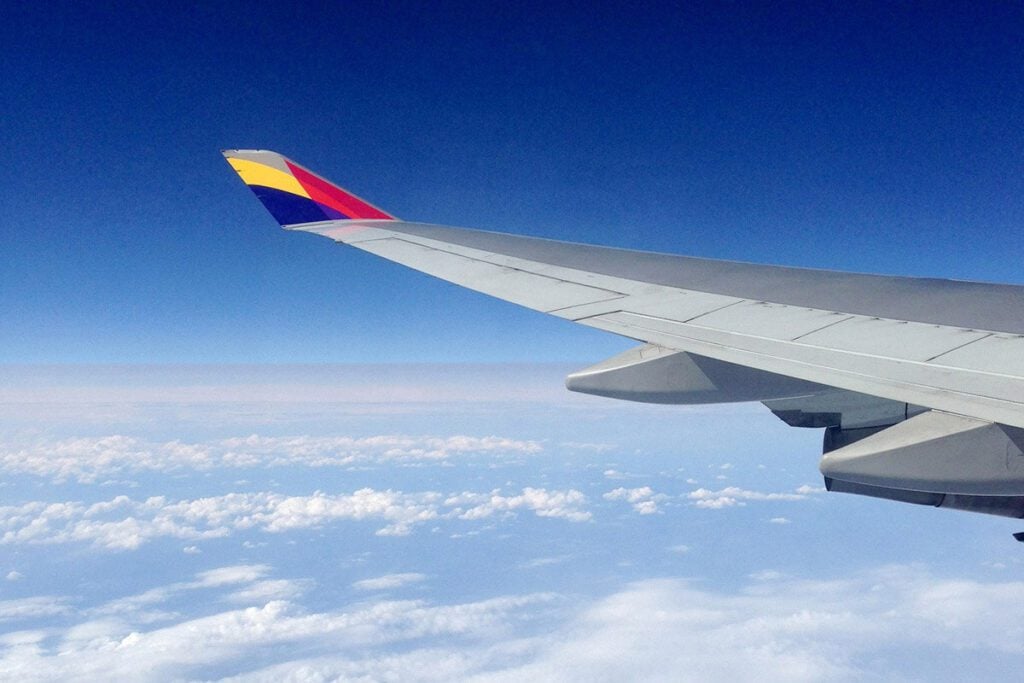
If you’re coming from Europe or North America, your flight to Japan itself is going to be a significant portion of your travel budget. You’re flying halfway around the world, after all, so it is to be expected.
But fear not, we have some hacks for finding airfare that doesn’t make your eyes water. Or you can check out our entire article that explains how we find cheap flights .
Tips for finding a cheap flight to Japan:
1. Experiment with different hubs
If you are simply putting your home airport in the departure destination, you may be missing out on some really great deals.
Play around with setting your departure for a different airport and see what comes up. Sometimes getting two separate flights can save you a lot of money. And truthfully, sometimes the layover times make it not worthwhile at all. You just have to play around a little and see what flights you find.
Theses hubs often have good deals to Tokyo and/or Osaka:
- SFO: San Francisco
- SEA: Seattle
2. Travel during Off-season
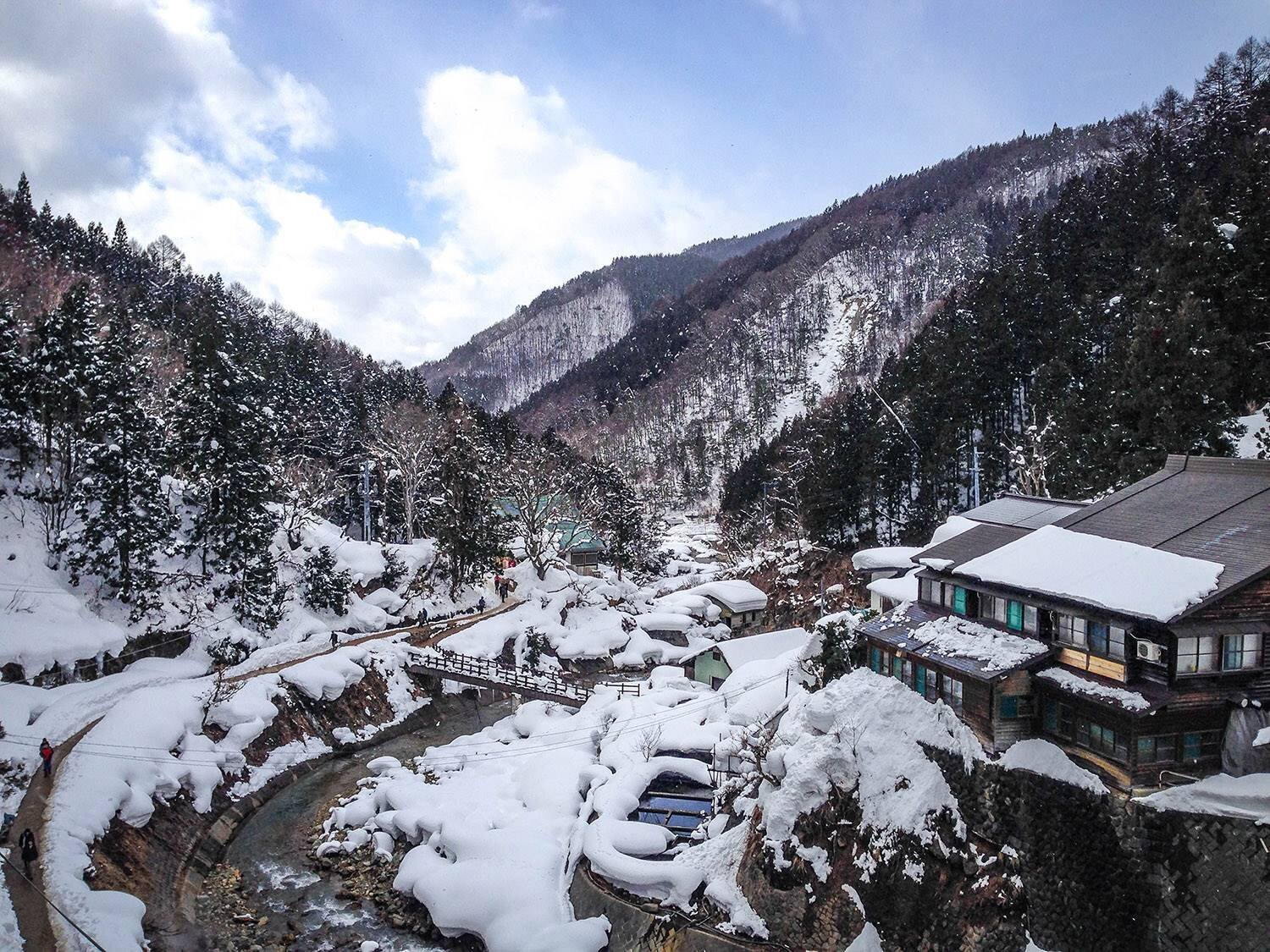
Want to see cherry blossoms in Japan? You, me, and just about everyone else in the world!
Springtime in Japan is beautiful, but also very crowded. This means the demand for flights is at its annual high, and peak prices can be expected. If you fly to Japan during less popular times of the year, like the winter or even late fall, you might be able to snag a steal!
3. Sign up for a mistake fare newsletter and set an alert for Japan
Mistake Fare newsletters (like Thrifty Traveler ) are great because they alert you to ridiculously cheap flights. But sometimes they aren’t to places you’re planning to travel.
Whenever we have a destination in mind, we make sure to log into our profile and set alerts so we’ll be notified if a ticket to Japan, for instance, is ridiculously cheap!
4. Look at flying into Osaka instead of Tokyo
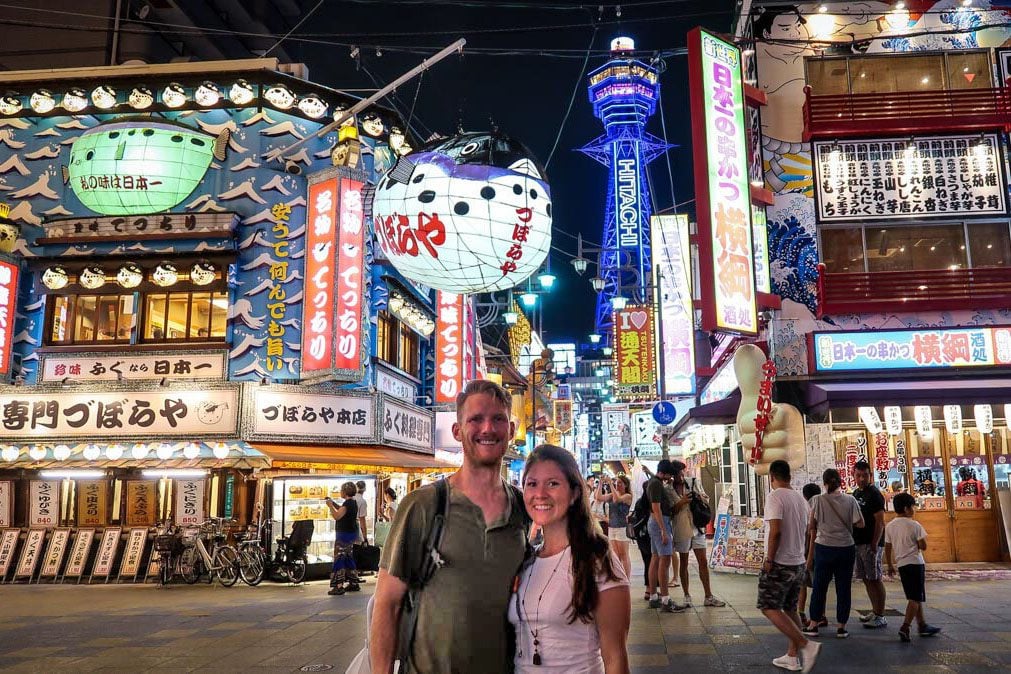
Tokyo might be your first thought when it comes to flying to Japan, but try searching for other international airports as well.
Both times we’ve traveled to Japan, we have actually flown into Osaka because the price was significantly lower. Plus, it’s a great city to use as a hub to make day trips from Osaka .
5. Fly in and out of different cities
If your itinerary is flexible, try different combinations when it comes to where you fly in and out. This can also save you a long train ride if you plan to visit multiple places.
For instance, we wanted to visit both Osaka and Tokyo. Instead of flying in and out of the same city, we flew into Osaka and out of Tokyo, saving us an entire day of travel to get to the airport.
6. Consider signing up for a new credit card
Even if you score a cheap flight to Japan, it’s still going to set you back a good chunk of change. Before purchasing big flights, like this one, we usually think about signing up for a new credit card. Typically there are bonuses if you spend a certain amount within the first months of signing up. And the flight alone should help you get part way there.
Good news: Credit cards are also widely accepted in Japan. True, you’ll need cash for smaller restaurants and shops, but many places take plastic so you can earn points on your trip too!
Note: We are not financial experts, and we cannot give personalized advice. If you are looking into a new credit card, check out this article where we mention some of our favorites.
Want more? Check out more tips for how we find cheap flights around the world !
More resources for traveling in Japan
We have TONS of resources on travel in Japan and destinations throughout the country. Check out our Ultimate Japan Travel Guide for all the answers to your most burning questions, or read some of our favorite articles below!
- Best Time to Visit Japan: When to Go & When to Avoid
- Japan Rail Pass: Where to Buy & Is It Worthwhile?
- Renting a Car in Japan: Essential Driving Tips You Need to Know!
- Japan on a Budget: Money-Saving Tips + Free Things to Do
- One Week in Japan: Best Itinerary for Your First Visit
- Japan Pocket Wifi vs. Japanese SIM Card: Review & Comparison
- Best Japan Travel Apps
- Foods to Eat in Japan: Guide to Japanese Cuisine
- Helpful Japanese Words & Phrases to Know for Traveling in Japan
Be sure to download our complete packing list for Japan ! It’s packed with good suggestions and insider tips to help plan your Japan trip. And it’s completely FREE , so why not!?

Save this article on Pinterest for later!
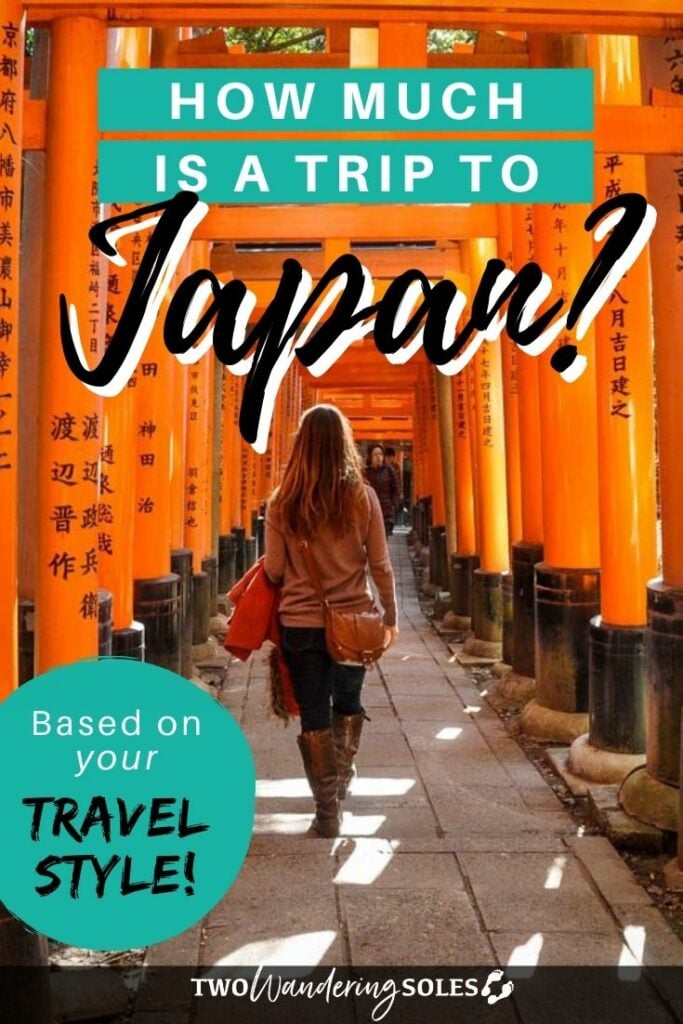
We want to hear from you!
What is your biggest question about costs in Japan? Do you have any money-saving tips you’d like to share? Comment below!
Comments (13) on “ Japan Travel Cost: Exactly How Much is a Trip to Japan? ”
i love japan and its culture. wanna travel there. thanks for sharing this great article.
I am looking for a local agent or plan a trip to Japan for the cherry blossoms minimum 10 memebers
I think that one-week budget is kind of enough to have a good trip to Japan. The thing that concern us most is its costing. The japan is believed to be one of the costliest places to visit but hiring a good travel agent company will let us know how to save our money and travel there in low budget.
Thank you so much for all your helpful tips about Japan. Very cool you’re from MN and studied Jour/Graphic Design – me too! We’ve only travelled overseas for work before and stayed in the same city. If you stay in a hostel or capsule hotel is there a way to safely store your luggage during the day or should we plan to backpack everywhere?
Thank you so much for all of the info and tips! Is Japan credit card friendly or should we plan on using cash for most purchases?
Hi! This is so useful, thanks a lot. Plan to make a trip in may with my husband & 18 yr old son. Appreciate it!
No problem Joe! Glad you found this useful. Have a fun trip!
Notice that you didn’t include the cost of flights!? Is there a reason you excluded this-just wondering how you to/from Japan
Hey, great question. We didn’t include airfare in the budget because we flew from South Korea and our flights were very cheap – less than $300 for a roundtrip. We realize that many (if not most) people using this budget will be flying from much further, so those numbers would not be relevant to them. Flights vary so much on how far in advance you book them to where in the world you’re flying from, and since our readers come from all over the world, it’s hard to give a number in a budget. We decided instead to include only the expenses we incurred in the country so that this budget is useful to anyone no matter where you’re flying from. We should specify this though in the budget, and will make those change shortly. Thank you for pointing this out!
My first trip to Japan was with a band. Our guitarist is Japanes, so we were being directed, but in 2009 I only spent $AUD2,000 over two weeks, and that included airfare. (Jetstar 2 for 1 flights.)
Hey there, that’s great to hear you were able to travel Japan on a budget too! It can certainly be done cheaper than we did, but we wanted to see as much as possible in 8 days, so transportation added a lot of cost! And we were happy with spending just under $1,600 for 2 people 🙂 That said, it has been one of the more expensive countries we’ve visited in the last few years!
Thank you for the amazing advice for japan. I was wondering where did you buy the japan Rail Pass in Korea?
Hi Angela, I’m glad it’s helpful! You can purchase your JR Pass online at http://www.jrpass.com/ . The vouchers are sent via FedEX from France (random!!), and are sent out the day you order them, so they get to you very quickly. We ordered our tickets on a Wednesday. Our flight was on Saturday and we were worried that they wouldn’t make it to us in time, but a package arrived the next day with our tickets! I’d recommend ordering them with a bit more time than we did though just so you aren’t worried! Once you get to Japan, you can then exchange them for the actual pass at any major JR Station. This saved us a ton of money. Hope this helps. Have a great time in Japan!
Leave a Reply Cancel reply
Your email address will not be published. Required fields are marked *
Save my name, email, and website in this browser for the next time I comment.
Japan Trip Cost: Pricing for Flights, Food & Accommodation
Plan your Japan trip with ease! Get the latest costs for flights, food, & accommodation. Perfect for travelers on any budget. Click for budget tips & more.

There are plenty of reasons to visit Japan, as the nation has a lot to offer tourists. Because it provides visitors with so many wonderful experiences, most people think of it as a tourist's paradise. Before you leave for Japan, you should create a thorough budget outlining the general budget of your vacation.
The average cost of a 7-day trip to Japan is $1,659 for a solo traveler. That leaves us at about $237 per day per person. This includes travel expenses, local transportation, food, accommodation, and sightseeing. It is calculated based on the expenses of previous visitors and can go slightly up or down depending on your spending habits.
There's so much to calculate on the cost of a Japanese trip. Read on to find everything you need to know, including how to cut costs and travel to Japan on a budget!
Average Cost Of A Trip To Japan

It's important to note that the average cost of a Japanese trip differs from the average daily expenses. While calculating average cost, you'll need to include flight tickets, accommodations, car rentals, etc.
That said, the average price of a 7-day trip to Japan will range between $1558 to $2100 per person. You can expect to spend up to $2750 as a couple and $5,124 for a family of four. These amounts can go slightly up or down depending on your spending habits.
Japanese hotels will typically charge between $62 and $312 per night. Vacation rentals will charge between $144 and $553 per night. International flights to Japan would cost between $952 to $1,673 per person for economy tickets, depending on where you're flying from.
Intra-city transportation, food, sightseeing, and other miscellaneous expenses will eat up a significant part of what's left in your budget.
Also, don't forget to think about setting up an emergency fund , just in case you run out of money on your trip.
Average Daily Expenses in Japan

While in Japan, your daily expenses will significantly depend on how you choose to leave. After reviewing the daily expenses of many visitors to Japan, we've concluded that the average daily expenses on a trip to Japan are between $26 to $72 if you decide to live on a budget.
Mid-range spenders can expect to spend between $73 to $143 per day, while high spenders will spend anything above these figures. Now, while preparing your budget, you must decide what spending level you'd want to maintain throughout your plan. Pick a number and multiply it by the number of days you'd like to stay to determine how much your daily expenses will cost.
Remember that these figures do not include flight tickets, transportation, or other significant spending. So, you must include provisions for all those in your budget. It also makes sense to have some money kept aside in an emergency.
Finally, the prices listed here are the average costs of traveling and living in Japan. The prices may increase or decrease depending on the types of activities you choose to do in Japan.
Factors That Determine The Cost Of A Trip To Japan
Now that we've discussed the average costs of a Japanese trip, you're probably wondering how we arrived at the amounts. These are compilations of small amounts for different expenses. That said, here's a detailed review of factors that'll make up an average Japanese trip cost.
1. Flight Tickets

This is perhaps the most crucial item on the list because you must get to Japan to experience Japan. Fortunately, flight tickets are not as expensive as some people usually predict unless you intend to fly first class.
Japan's location and popularity mean it's a favorite destination for most international airlines. Most of these airlines won't mind offering cheaper flights and other promotions once in a while. You can jump on these promotions and discount packages to travel to Japan. You just have to be on the lookout for them and plan your trip to fall within promotion time.
Notwithstanding, other factors like airline choice, packing fees, and flight snacks can also affect your overall flight cost. The average cost for international flights to Japan includes:
- $952 to $1,673 per person (Economy class)
- $2,241 to $4,052 per person (Business class).
Remember that these prices are strongly affected by airline choice, where you're traveling from, and seasons. Tickets are the first thing you should purchase when planning your trip to Japan. Purchasing your tickets early allows you to get significant discounts on your ticket prices.
2. Accommodations

After transportation, the next important thing to think about is accommodation (where to stay). Hostels, dormitories, and inexpensive hotels are the ideal choices if you're traveling on a budget. You can get these options for as little as $14 per night.
On the other hand, top-quality hotels and all-inclusive traditional Japanese inns demand premium prices. So, you can expect to pay about the same prices you'll pay for luxury hotels back home.
You don't have to spend beyond your budget on accommodation. If you can afford a premium space, you can opt for cheaper options. After all, it doesn't stop you from enjoying the beauty that Japan has to offer.
But if you can afford premium accommodations, by all means, go for it. We recommend comparing prices of hotels and resorts online to find one that best suits your budget before choosing.

Here's the best news - Japanese foods are not only delicious but affordable. In fact, the price is fascinating when compared to the costs of average meals in other top cities. Options are abundant at affordable prices as far as food is concerned.
You'll find a range of affordable options in convenience stores for launch. Convenience stores are popular in Japan, and they offer tasty and healthy foods compared to other cities.
An average meal in these locations will cost between $2 to $4. You can also choose to eat in. There are tons of quick restaurants scattered around the streets of Japan where you can get food for as low as $5.
Again, the cost of food depends on what you want to eat and how you want to eat them. But local Japanese foods are reputed for being affordable, so you shouldn't have too much of a problem with what to eat.
4. Local Transportation

This area may take a significant part of your budget because you'll need to move around to see more places. Japan is so big with lots of exciting things to do around the city. So you must be prepared to move from city to city to enjoy the full experience of a Japanese vacation.
However, there are still cheap transportation options that you can use without going above your budget. An obvious choice for tourists is the JR pass which gives you access to unlimited trips on the JR rail network.
The pass typically costs about $600 for two weeks. This may sound like a lot to the ear, but when you break it down to $40 a day, you'd realize it's a budget option worth trying. Please note that you'll need to get your JR pass in advance or risk paying normal train fares when you need to move around.
Local train fares are also reasonable and only cost an average of $5 per hour of travel. Bus transportation is also popular, so you can just book a bus wherever you go.
5. Sightseeing

You can indeed access many tourist attractions in Japan for free. Particularly, the shrines, museums, temples, parks, and gardens are available for free. But you'll still need to pay to access many other tourist sights.
Entrance fees into shrines, temples, and castles generally cost between $0.75 to $8, usually giving you free sights access. Entry into museums and other central parks ranges from $4 to $20, depending on the displayed exhibition and the time of the year.
Other tourist centers and privately owned parks cost more than these. You can inquire about the price before going to any of them to be sure it can fit into your budget.
6. Money Conversion

Although this factor doesn't always come up in conversations about Japan trip costs, it's still worth including in your budget. We've estimated all the costs in this article in US dollars.
However, the local currency in Japan is the Japanese yen, and you'll need to convert your money to this currency to be able to spend. When you exchange currencies, expect the exchanger to deduct a small fee.
Always ask your bank for their conversion rates and include them in your budget if you're using a credit or debit card. This way, you won't have unexpected costs flying out of anywhere after you've finalized your travel budget.
Is It Possible To Travel To Japan On A Budget?

Sure, traveling to Japan costs money, especially considering that it involves international flights. However, it's possible to control your travel budget.
First, you're booking your flights and planning your activities in Japan by yourself. This lets you control how much or how little you'll spend throughout your trip. We can't overemphasize the importance of prior planning, especially as it helps to eliminate unexpected expenses.
Before planning your budget for a Japan trip, you must start by deciding your budget limits. Your budget preparation should begin with two numbers ; Your preferred budget, and the highest amount you can spend.
These limits do not only help you know what you can spend on the trip; it also enables you to keep your whole expenditure in check. Besides, it also allows you to choose your activities by order of priority so that you can eliminate unnecessary activities and all expenses attached to them.
Now that you have a rough idea of how much you can spend and how much you're willing to spend, you can go on with preparing your budget. Remember to take advantage of coupons and discounts. Traveling on a budget does not necessarily mean low-quality trips.
You can still have the best time of your life in Japan. It's just about being creative with the things you'll do in the city.
How To Reduce The Cost Of A Trip To Japan
Like every other top city worldwide, Japan is reputed for its expensive lifestyle. But despite this reputation, you can still save money and travel to Japan on a budget. You just need to know what to do and where to go.
If you don't know where to start, don't worry - we have you covered. Here are helpful tips and tricks to help you reduce costs and save money during your next visit to Japan.
1. Draft A Budget Before Your Trip

Nothing finishes your money as much as spending on impulse. The last thing you'll want to do when traveling on a budget is to spend money without planning. There are so many things to do and buy in Japan that you'll be tempted to exhaust your money.
However, if you take the time to outline your budget before your trip, you'll be able to reduce unnecessary expenditures. Depending on how long you intend to stay in Japan, draft a realistic budget that'll cover all your necessary and possible expenditures in Japan.
If you intend to stay in Japan for more than a few days, split your budget into the number of days you want to stay. Now allocate money for food, accommodation, travel, etc. It's also an excellent idea to keep emergency funds aside for the 'just in case' moments.
2. Travel in The Off-Peak Season

Another valuable tip for reducing travel costs is traveling during the off-peak season. This one requires a bit of flexibility on your part because it may have you moving your trip for weeks or months to fall into such periods.
However, if you can adjust your travel date to fall into these periods, you can expect significantly cheaper bargains for airfare. Tourist centers are also typically less crowded during these periods. You can also enter tourist centers at discounted rates during these periods.
Japan's off-peak seasons usually start around October and end in March, except for the Christmas and New year seasons.
So, we recommend leveraging the off-peak seasons, whether you're visiting Japan for the first time or you already live in Japan and are looking to explore other parts of the city.
3. Enjoy Cheap Japanese Foods

The Japanese food culture is thriving, so there's so much to eat and drink. Whether you're eating in a porch restaurant or the street food stalls, you'll find an abundance of options to choose from.
Fortunately, most Japanese local foods are not so expensive, especially when you eat in small restaurants and roadside stalls.
Tokyo is particularly known for its incredible number of restaurants and food vendors. The sheer number of food sellers helps keep the price of food relatively down.
While cheap restaurants are available when you're on a budget, you can also cook your meals yourself. Take a quick evening stroll to the farmer's market or warehouses to get cheap foodstuffs.
4. Calculate Whether The JR Pass Is Worth It Before Purchasing Officially

Despite the popularity of the JR pass, it is still not the best way to travel on a budget. It's a great option if you plan to stay more than a few days and want to visit several places. But, you can also take slower local trains and still arrive at your destination safely.
You also don't have to visit every park or tourist location in Japan. Create a spreadsheet that you can use to plan your trip so you can have a clear view of whether the JR pass is a good option.
If you intend to stay longer and visit many places, the JR ticket may be worth it because it allows you to take unlimited trips to different locations during the time in view. But do you really have to go everywhere on a budget?
Remember, going everywhere would also mean spending more on gate passes and entertainment expenses.
5. Walk Or Bike Whenever You Can

Japan ranks among the cleanest and most organized countries in the world. The cleanliness and organization in this city make walking and riding a bicycle enjoyable.
Sometimes, you can just take a stroll instead of using public transport. The $4 and $7 you pay for public transport may not seem like a lot, but if you sum up all the times you'll need to move, you'd have a significant mark on your budget.
So, a quick stroll here and there may take off significant amounts of your spending. Besides, it's an exciting way to experience Japan and interact with locals. It's also beneficial for your health.
You can also pack a folding bicycle into your luggage before traveling. No law stops you from riding a bicycle in Japan, as long as you ride on the right lanes and don't constitute a nuisance.
6. Enjoy Free Tourist Attractions

People often get so busy rushing to pay huge amounts of money for sightseeing that they forget the best things are free. Japan is filled with lots of alluring sights you can access for free: sprawling packs, ageless Shinto shrines, contemporary architecture, etc.
With little research, you'll find enough free locations to keep you busy throughout your stay in Japan. Even the paid locations still admit people for free on some days. Look up their websites for promotions and discounts to see if you qualify for any.
Perhaps, the first thing you should do while planning your itinerary is to learn more about the attractions you want to visit. Check whether they have free alternatives that offer almost the same things as you want.
There are tons of websites dedicated to offering helpful information on this topic. You can also join tourist forums online to get suggestions from people that have been to Japan before. You can never tell how good the information from such forums will do.
7. Find A Home Away From Home

While it's okay to want the comfort of executive hotel rooms, your budget may not be able to carry that. So, it makes sense to look for alternatives, especially when traveling as a group. Hostel or short-let services can help you save in such situations.
They also offer you more space and amenities to enjoy with your traveling group. We recommend choosing government-approved services to avoid being scammed or exposed to security situations. Still, review the pros and cons of renting short-lets to hotels before deciding.
8. Book Activities Ahead Of Time

People often suggest booking activities at the last minute can nab you a deal. While that is true for some situations, it is not always the case.
Asians like to plan. This means they'll offer lower prices for you to help them plan. Say you're booking a weekend trip to Arashiyama (highly recommended!) or you'd like for you and your team to enjoy the Nagasaki Atomic Bomb Museum, you'll generally be better off booking ahead of time.
You can also find group discounts on their websites. Most of these discounts can be enjoyed even if you're traveling alone.
73 Basic Dutch Phrases for Your Next Trip to Netherlands 🇳🇱
Learn essential Dutch phrases for a smooth trip to the Netherlands. Perfect for travelers looking to connect with locals and enrich their experience.
Win a $500 Flight!
Embark on the adventure of a lifetime! Enter our Dream Journey Sweepstakes for a chance to win a $500 travel voucher, redeemable with any major US airline. Whether it's sandy beaches, bustling cities, or tranquil mountains, your dream destination is just an email away!*

Is Peach Airlines Safe? Unveiling the Truth Behind Your Flight Fears
In today's digital age, where new social platforms pop up like mushrooms after the rain, you've probably heard about Peach. It's the latest buzz in the social media sphere, promising a fresh twist on how we connect online. But with every new app that asks for our personal info, you can't help but wonder, "Is Peach safe?"

Is Japan Airlines Safe? Unveiling the Truth for Anxious Flyers
When planning your next trip, safety is likely at the top of your list, especially when it comes to choosing an airline. You might be wondering, "Is Japan Airlines safe?" Well, you're in the right place to find out. Japan Airlines, known for its impeccable service, also prides itself on its safety record.

Is ANA Safe? Discover How They Ensure Your Peace of Mind in the Skies
When you're planning a trip, especially one that involves flying, safety is likely at the top of your mind. You might be wondering about All Nippon Airways, commonly known as ANA, and its safety record. Is it a reliable choice for your next journey?

December Gems: Top Cultural Havens to Explore This Winter
December's here, and it's the perfect time to pack your bags and explore some amazing places. Whether you're into snowy landscapes or sunny beaches, there's a spot just waiting for you to discover.

November Getaways: Why Tenerife Is Your Top Pick
November's a cool month, isn't it? It's that sweet spot where fall's in full swing, and winter's just knocking. If you're itching to pack your bags for a quick getaway, you're in luck. We've got some top-notch spots that are perfect for this time of year.

October Feasts: Top Places for Food Lovers to Visit
October's the perfect time to pack your bags and hit the road. Why? Because the weather's just right—not too hot, not too cold. It's like Goldilocks weather, you know? Plus, the crowds from summer have thinned out, so you won't be bumping elbows with a bunch of strangers.

Uncover Hidden Gems: Best Places to Visit in September for a Perfect Escape
September's the sweet spot for travel. It's when the summer crowds thin out, but the weather's still nice. You get the best of both worlds: fewer people and great days to explore. Imagine walking through a city or hiking a trail without bumping into tons of tourists. Sounds awesome, right?

August Escapes: Top National Parks & Hidden Gems to Explore
August's here, and it's the perfect time to pack your bags for an adventure. Whether you're into sunny beaches or cool mountains, there's a spot just waiting for you to explore. Imagine dipping your toes in crystal-clear waters or hiking trails that lead to breathtaking views. Sounds awesome, right?

July Gems: Discover 5 Off-the-Beaten-Path Destinations
July's here, and it's the perfect time to pack your bags and set off on an adventure. With the sun shining bright and the days longer, there's no better time to explore some of the most amazing places our world has to offer.

June Jewels: Top Unexpected Destinations & Tips for Your Summer Escape
June's the perfect time to pack your bags and hit the road. Why? Well, schools are out, the weather's great, and there are tons of cool spots begging for a visit. Whether you're into sunny beaches, quiet mountains, or bustling cities, there's something out there for you.

April Wonders: Why Washington, D.C. Shines as a Must-Visit Spring Gem
April's here, and you're probably itching to pack your bags and hit the road. It's the perfect month for adventure - not too hot, not too cold, and full of surprises. From blooming flowers to sunny beaches, the world's got a lot to offer.

Top March Getaways: Explore Lake Bled, Chefchaouen, and Secret Festivals
March is a great time to shake off the winter chill and dive into some fun travels. As the snow melts and flowers start peeking out, there's a whole world out there waiting for you to explore. Whether you're into sunny beaches or cool city vibes, March has got something special for everyone.

January Gems: Uncover the Best Places to Visit for Magical Winter Wanderlust
January's a great time to shake off those holiday blues and start the year with an adventure. Whether you're into snowy landscapes or sunny beaches, there's a perfect spot out there for you.

November Nirvana: Unveil India's Best-Kept Secrets & Festive Charm
November's the perfect time to explore Asia. The weather's cool, not too hot or too cold, just right for adventure. Imagine walking through colorful streets, tasting amazing foods, and seeing places you've only dreamed of. It's all waiting for you.

Bali in October: Asia's Best Kept Secret for Beach Bliss & Festivals
October's the perfect time to explore Asia. The weather's cool, the crowds are smaller, and there's so much to see. Whether you're into stunning beaches, breathtaking mountains, or bustling cities, Asia's got it all in October.

Discover Gyeongju: Asia's Hidden Gem for September Getaways
September's here and you're itching for an adventure, right? Asia's got some cool spots that are just perfect this time of year. Imagine wandering through ancient temples, exploring lush jungles, or chilling on stunning beaches without the crazy crowds. Sounds good, doesn't it?

August Adventures: Asia's Hidden Gems Unveiled
August is a great time to explore Asia. The weather's warm, and there are so many cool places to check out. Whether you're into beaches, mountains, or big cities, Asia's got something for everyone.

July Gems: Asia's Best Hidden Spots to Explore This Summer
July's here, and it's the perfect time to pack your bags for an adventure in Asia. Why? Because Asia's got some of the coolest spots that are just right for exploring in July. From beaches to mountains, there's a little bit of everything for everyone.

June Gems: Top Asian Escapes from Kyoto to Cameron Highlands
June's the perfect time to pack your bags and explore Asia. The weather's warm, but not too hot, making it just right for adventures. From stunning beaches to cool mountains, Asia's got it all.

May Magic in Asia: Best Temples and Serene Spots to Visit
May's the perfect time to explore Asia. Why? The weather's just right - not too hot, not too rainy. It's like Goldilocks' porridge, just perfect. You're probably thinking, "But where should I go?" Don't worry, we've got you covered.

April in Asia: Explore Top Spots from Luang Prabang to Bali
April's the perfect time to explore Asia. The weather's just right—not too hot, not too cold. It's like Goldilocks finally found the perfect bowl of porridge. And let's be real, who doesn't love a good adventure without sweating buckets or freezing their toes off?

Discover Vietnam in March: Your Guide to Asia's Hidden Gem
Asia's got some cool spots you've gotta check out. Imagine walking through ancient temples or chilling on beaches that look like they're straight out of a postcard. Sounds awesome, right?

Discover February's Hidden Gem: Taiwan's Festive Charm Unveiled
February is a cool month to explore Asia. It's not too hot, and the crowds aren't too crazy yet. So, if you're thinking of a trip, you're in luck. Asia's got some awesome spots that are just perfect this time of year.

Escape the Crowds: Top Hidden Gems in Asia to Discover this January
January's the perfect time to explore Asia. It's when the weather's just right - not too hot, not too cold. You're probably thinking about where to go, right? Well, you're in luck because Asia's full of awesome spots to kick off your year.

May Magic: Top City Escapes from Rome to Kyoto
May's the perfect month to pack your bags and hit the road. Why? The weather's just right—not too hot, not too cold. It's like Goldilocks' porridge, but for travel. Plus, it's before the big summer rush, so you can enjoy places without bumping elbows with a crowd.

February Gems: Top Unspoiled Destinations for Your Winter Escape
February might seem like a sleepy month, but it's actually a great time to explore some cool spots around the world. While some folks are still shaking off the holiday buzz, you could be packing your bags for an adventure. Whether you're into sunny beaches or snowy mountains, there's a perfect February destination waiting for you.

Sunny Delight: Discover Maldives, Asia's December Paradise
December's a great time to explore Asia, with its cool weather and awesome festivals. Imagine walking through colorful streets, tasting delicious foods, and seeing sights that'll stick with you forever. It's all about finding the perfect spot to make your December unforgettable.

Ultimate Guide: Top Places to Live in Japan for Everyone - From Retirees to Families
Dreaming of living in Japan? You're not alone. This country's got a mix of bustling cities, serene countryside, and everything in between. Finding the perfect spot to call home can be a real adventure.


Best Time to Visit Japan: Seasonal Guide for Iconic Cities & Festivals
Deciding when to visit Japan can be a bit tricky. You want to catch all the cool stuff without dealing with too many crowds or bad weather. Lucky for you, there's a sweet spot for when to go.

Kyoto Safety: Am I Safe to Travel to Kyoto, Japan in 2024?
Planning a trip to Japan and concerned about safety? Kyoto, with its temples, tea houses, and history, is one of the safest cities for tourists.v

Osaka Safety: Am I Safe to Travel to Osaka, Japan in 2024?
Wondering about safety in Osaka for your trip? It's a typical traveler concern. Let's explore why Osaka is a safe and worthy adventure destination.

Sapporo Safety: Am I Safe to Travel to Sapporo, Japan in 2024?
Planning a trip to Japan and concerned about safety? Sapporo, Hokkaido's capital, is known for its excellent safety record, welcoming global visitors.

70 Basic Japanese Phrases for Your Next Trip to Japan 🍣🎎
Learn essential Japanese phrases for travelers! Ideal for dining, shopping, and navigating Japan, ensuring a smooth trip. Perfect for foodies and explorers.

Are Yamaha Boats Good? (Factors You Should Consider!)
Considering a Yamaha boat? Learn what makes them a top choice for reliability, handling, and cost-effectiveness in our latest post. Ideal for all water lovers!

Best Time to Visit Tokyo (Dazzling Festivals & Culture)
Explore Tokyo's vibrant festivals & culture to find the perfect time for your visit! From cherry blossoms in spring to festive summers, avoid crowds & enjoy the best weather. Ideal for potential travelers.
You may also like...

Best Time to Visit Lithuania for Seasonal Adventures & Local Festivals
Planning a trip to Lithuania and wondering when's the best time to go? You're in the right place. Lithuania, with its stunning landscapes and rich history, offers a unique experience no matter the season. But, if you're looking to make the most of your visit, timing is key.

Best Time to Visit Hungary: Seasonal Secrets for an Authentic Experience
Deciding when to visit Hungary can be tricky, but don't worry, we've got you covered. This beautiful country shines in every season, but knowing the best time to go can make your trip even more special.

Best Time to Visit Estonia: Discover a Winter Wonderland Like a Local
Deciding when to visit Estonia? You're in for a treat, no matter the season. But if you're looking for the best experience, timing is key. This Baltic gem offers something unique with each season, from white winters to sunny summers.

Best Time to Visit Armenia: Winter Wonderland & Cultural Fests Unveiled
Deciding when to visit Armenia? You're in for a treat! This hidden gem has got it all - from cool, snowy winters to warm, sunny summers. But to get the best out of your trip, timing is key. Let's dive into when's the perfect moment to pack your bags for Armenia.

Best Time to Visit Havana: Seasonal Guide for Cultural Festivities
Planning your dream trip to Havana? You're probably wondering when's the best time to pack your bags and go. Well, you're in luck because we've got the inside scoop to help you make the perfect choice.

Best Time to Visit Oaxaca: Uncover Seasonal Secrets & Local Celebrations
Deciding when to visit Oaxaca? It's all about finding the perfect balance. You want great weather, fewer crowds, and lots to do, right? Well, you're in luck because Oaxaca has got it all, but timing is key.
The travel site inspired by travelers and locals alike. Find amazing destinations, unique trip ideas, the best hotels, and most comfortable resorts.

Borders Of Adventure
Leading Culture and Adventure Travel Blog by Becki Enright. Looking at the world with a different angle to change perceptions of misunderstood places, for the best in travel.
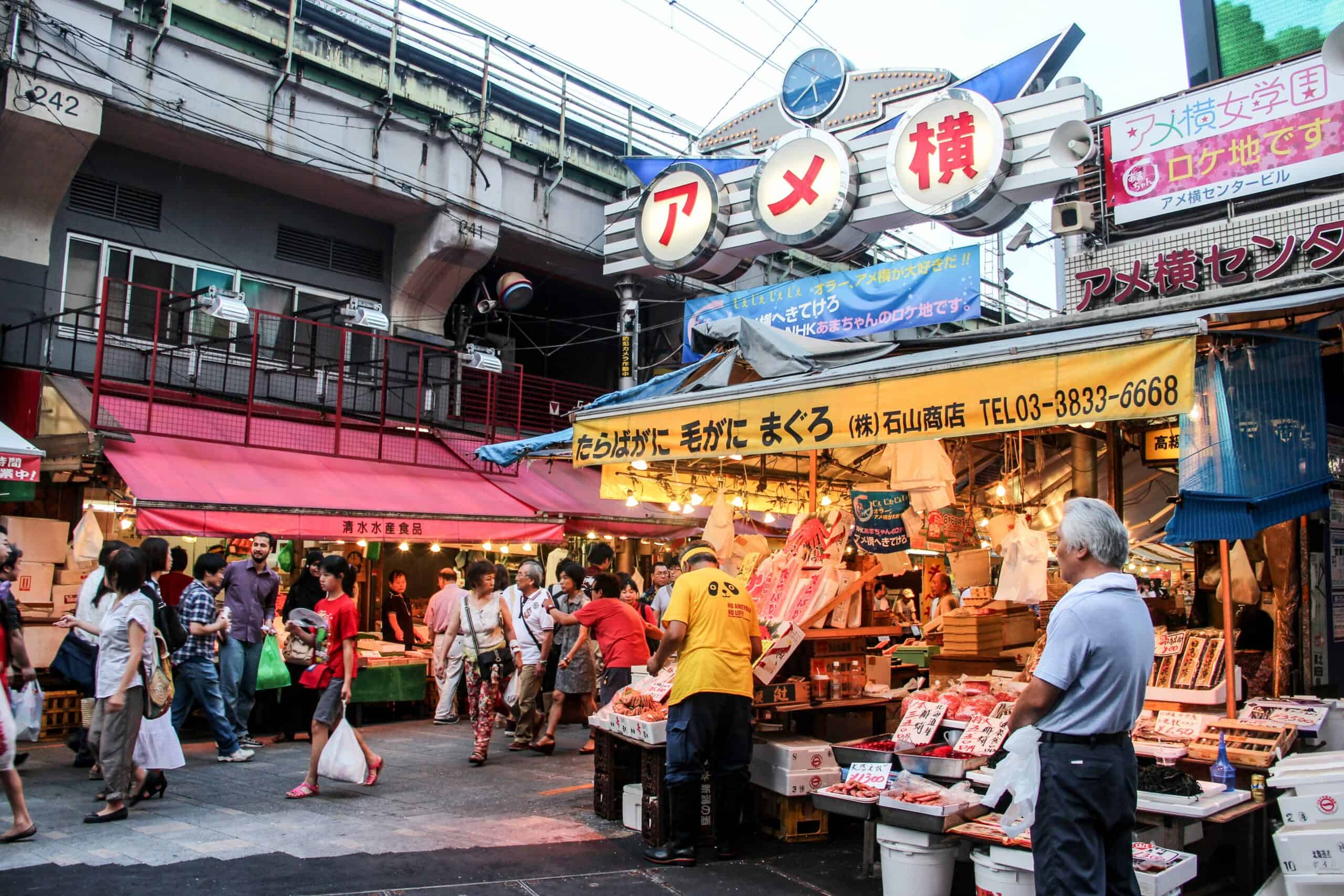
Cultural Travel , Japan
How Much Does It Cost To Travel In Japan? Budget Trip Tips and Worthwhile Expenses
Disclaimer: This post contains affiliate links to handpicked partners, including tours, gear and booking sites. If you click through or buy something via one of them, I may receive a small commission. This is at no extra cost to you and allows this site to keep running.
The cost of travelling in Japan is not as much as you think if you plan well. This guide on Japan trip costs has budget tips and breakdowns for transport, bookings, and accommodations across the country.
Knowing that Japan has a higher cost of travel can be offputting, but the expense is secondary to the experience. Whether you want to soak up the bright lights and the distinct buzz of the big cities like Tokyo and Osaka, wander the old, narrow wooden housed lined alleyways of Kyoto, stroll through the scenic smaller towns of Kobe and Nara, or relax within the beach towns and mountain ranges of the peninsulas and islands, Japan is vast and full of natural beauty and endless changing scenery.
Aside from where to go and what to do, the questions of ‘Is Japan expensive?’ and ‘How much does a trip to Japan cost?’ are always at the fore. So I will cut to the chase—travelling here is more costly than in its Asian neighbours. Yet, by pre-booking rail passes and planning your rough route and associated bookings, you’ll save yourself some money.
This Japan travel cost breakdown will help you plan your trip, calculate your estimated Japan budget and see exactly where your money goes.
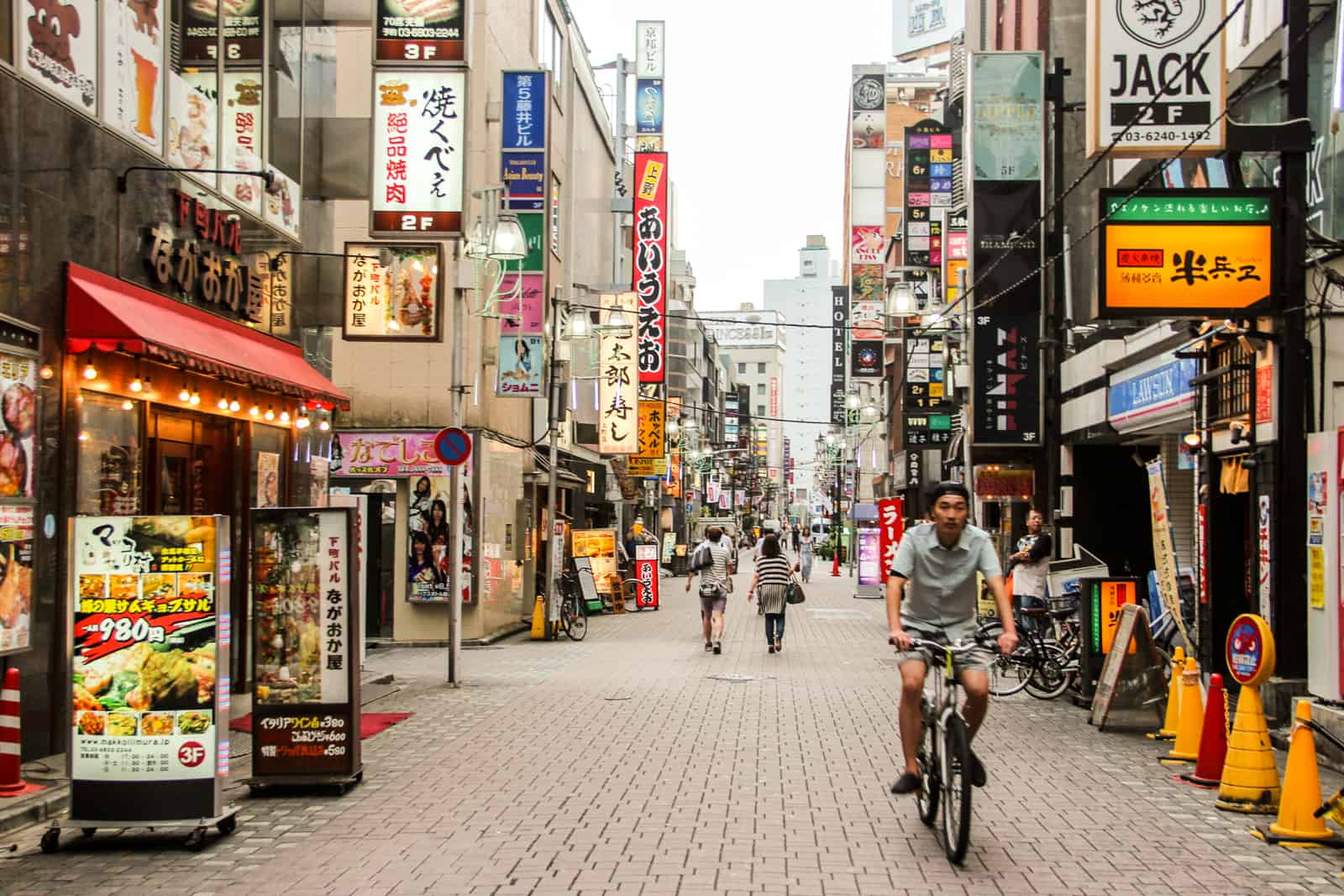
How Much Does It Cost To Travel In Japan? Save with these budget trip tips.
First, Plan How Many Days to Spend in Japan
When is the cheapest time to travel to japan, how much does a japan trip cost in comparison to the rest of asia, japan budget per day, per week, per month, cost of a two-week japan vacation, how much money do you need per day in japan, cost of travelling in japan for one month , standard train prices in japan, 7-day japan rail pass, 14-day japan rail pass, 21-day japan rail pass, buying a japan rail pass , local trains in japan, japan metro and bus system, taxis in japan, bike hire in japan, cost of food in japan, tokyo accommodation costs, mount fuji area accommodation costs, ito accommodation costs, kyoto accommodation costs, nara accommodations costs, osaka accommodation costs, kobe accommodation costs, hiroshima accommodation costs, book a hotel in japan, cost of tours in japan, how much do attractions cost in japan, planning a trip to japan and want to budget pin it.
Of course, the length of your Japan itinerary determines your budget. Typically, visitors spend two weeks in Japan on their first visit, hopping between the major cities and associated landmarks and sites.
I spent four weeks in Japan, travelling entirely via overland transportation. I wanted to immerse myself in the culture, see a range of different places, and spend a quality amount of time in areas that are both key highlights and some of the biggest areas to explore – Tokyo (one week), Kyoto (six days) and Osaka (three days), time to climb Mount Fuji, and to cross the country and get down to Hiroshima.
Yet in one month, I didn’t get to explore the far northern regions of Japan, the Alps, anywhere further south than Hiroshima, nor the outlying islands, which would have meant having to budget for an internal flight.
The country is much bigger than you think, and seeing it all on a single visit is impossible.
- What is Tokyo Like? Things to Love About Japan’s Capital City
- Climbing Mt Fuji – Summiting Japan’s Sacred Peak
- What to Do in Osaka – The Rebellious, Eccentric, and Brash City
- Things to Do in Hiroshima – A City With Unforgettable History
READ ALL: On my Destination Page for Japan .
The best times to visit Japan are March to May (for the spring season) and September to November (for autumn). Therefore, it’s a good idea to look for flights to Japan and accommodation deals during the off-season: November to March. The summer months from June to September (especially July and August) can be unbearably hot and uncomfortable for travel and sightseeing.
The official climbing season for Mount Fuji is also between July and September, which is a big factor for a lot of visitors wanting to hike.
Japan is one of the most expensive countries to travel to in the Asia region. For that reason, many people choose not to travel there in favour of the more established and budget-friendly Southeast Asian routes.
Backpackers and hardcore travellers are a minority here; most Westerners are those just visiting on business. Visitor numbers, however, are growing. Japan’s tourism industry has one of the fastest growth rates annually. Since Japan was one of the last countries to open following intense pandemic measures, exponential visitor numbers continue.
In reality, Japan isn’t going to get any cheaper; in fact, it may get even more expensive – and avoiding Japan for cost reasons alone means missing out on what is rated as an absolute must-see destination.
In the Southeast Asian countries of Cambodia, Laos, Vietnam, Thailand, and Myanmar, you can expect to spend an average of £500- £600 / $800-$950 + a month on a budget. China, Taiwan, and Nepal cost approximately the same, and South Korea is slightly higher, depending on transport options and the number of activities undertaken.
A step up from that are destinations like Mongolia, Borneo, Singapore, and Malaysia, where your budget would stretch closer to £800 / $1,300+ over a month because they are places with stronger economies, where prices are naturally higher, or where activities and attractions are harder to reach or organise on your own.
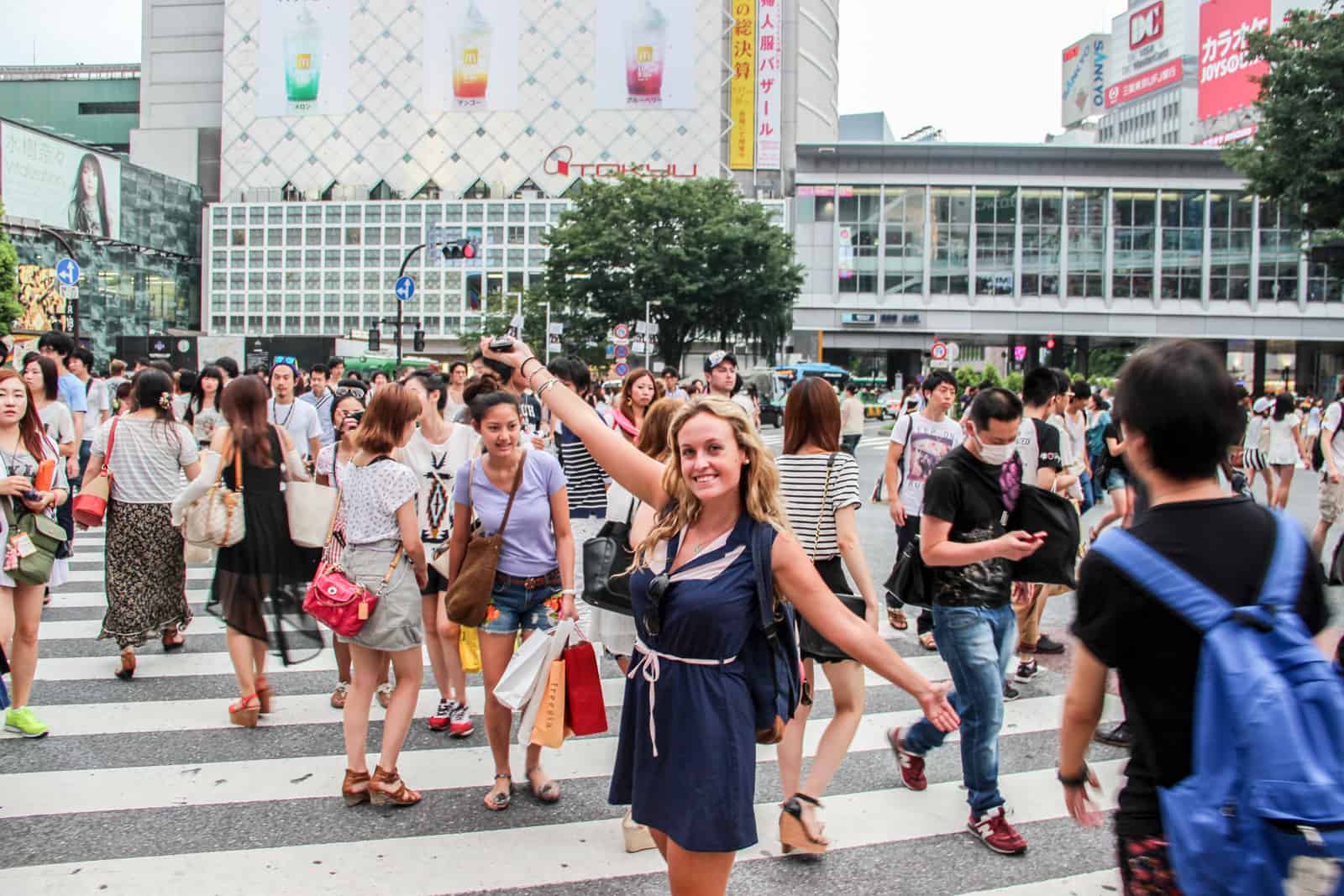
Japan is expensive when it comes to travelling in Asia. But it’s worth the cost.
Trip Cost by Length of Visit
In Japan, independent travel was much easier than I had originally thought. Hostel options were plentiful, local food outlets were cheaper than larger restaurants, and the transport was cost-effective.
But where does your money go in Japan, and what is the spending ratio?
Estimated calculations from 2024: based on transport, accommodation, and food expenses. All variations include the cost of a 7-day and 21-day Japan Rail Pass (following its recently hiked prices).
- Japan trip cost for one month
- £1,900 / $2,400
- £550 / $695
Based on the average vacation time of two weeks, you need to budget at least $1,400.
Around one-third of that will be spent on a 14-day Japan Rail Pass.
Since there’s no set amount of time to travel in the country, with some even visiting as a layover in Tokyo, it can be easier to calculate a daily budget spend in Japan.
Japan on a budget – 15,000 Yen per day (£80 / $100)
Those looking to stay in hostels, eat cheaper meals, and not frequently indulge in nightlife.
Japan on a mid-budget – 20 ,000 Yen per day (£100 / $130)
For those wanting to stay in low-cost hotels, enjoy the restaurant scene, nights on the town, and the odd activity/experience splurge.
Japan on a high-end budget – 25,000 – 40,000 Yen per day (£130-£200 / $165-$250)
For those wanting more luxury, the best cuisine in town and first-class train tickets.
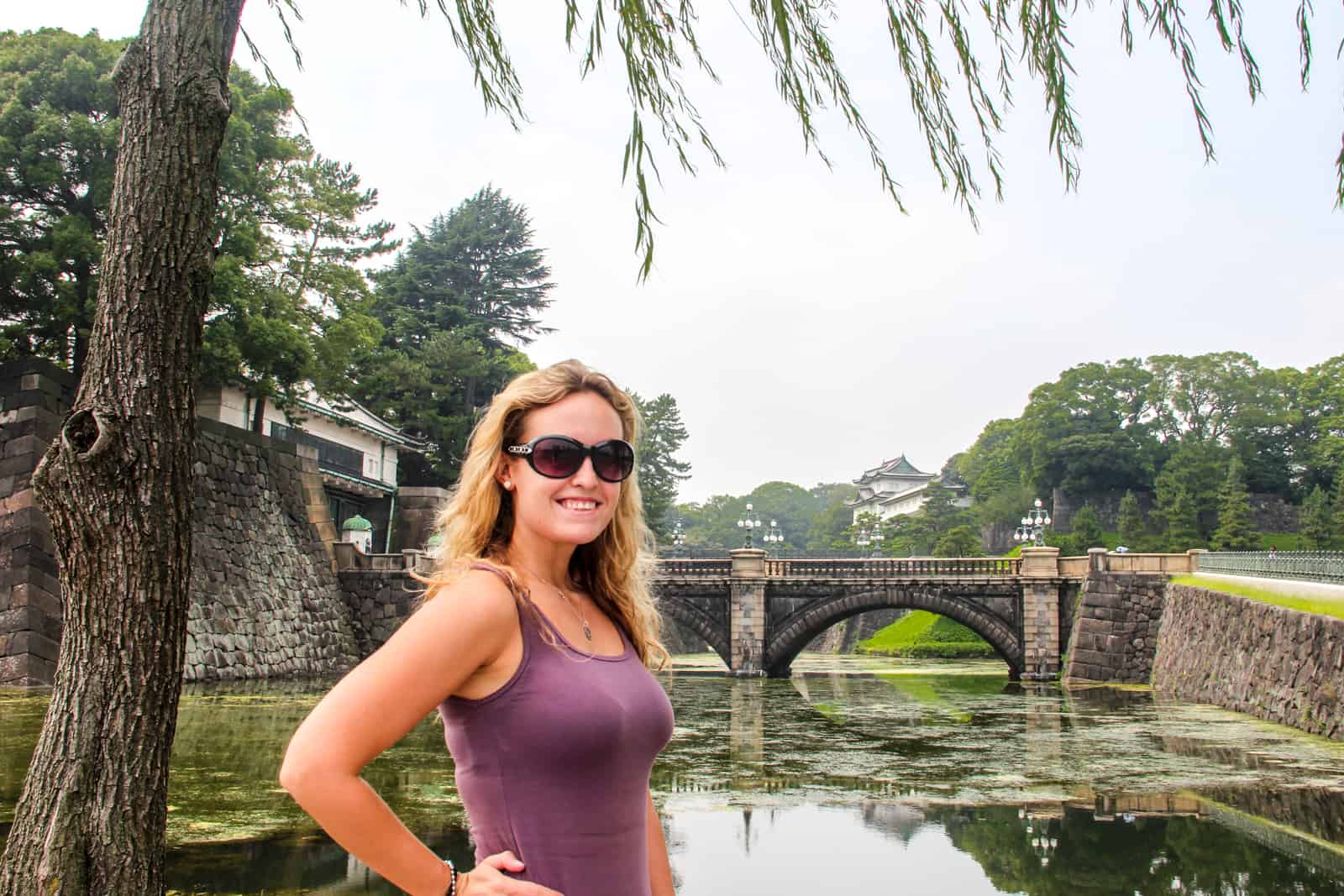
You’ll need to budget around $1,200 for a two-week backpacking trip around Japan.
21 Day Japan Rail pass
£523 / $660
Accommodation for 30 nights
£600 – £800 / $760 – $1,010
Food, drink, tourism site entry fees, other transport, and day-to-day living
£700 / $880
For a slow and budget traveller, this hit my monthly outgoings hard, but I don’t regret a single penny spent. Why? Japan is incredible.
Is it Worth Getting a Japan Rail Pass?
The Japan Rail Pass might be one of the biggest initial costs. Suppose you plan to visit more than three or four long-distance destinations in Japan. Buying one is highly advised in that case. It gives you unlimited journeys on all Japan Rail, Japan Ferry, and Japan Buses throughout the country.
Many people are put off by the high cost of the rail pass, but individual rail journeys are expensive and, when added together, can cost more than the unlimited rail pass. Since the Japan Rail Pass price hikes in October 2023 , it is worth working out planned train journeys and seeing if you can save by having the pass.
Are you thinking of paying as you go? Here are some average one-way train ticket costs in Japan without using a Japan Rail Pass.
- Tokyo – Kyoto: £94 / $118
- Tokyo – Osaka: £97 / $122
- Tokyo – Hiroshima: £128 / $161
- Kyoto – Osaka: £20 / $25
- Kyoto – Hiroshima: £77 / $97
- Osaka – Hiroshima: £70 / $88
The average cost for a Tokyo – Kyoto – Osaka – Hiroshima – Tokyo round-trip ( without using a Japan Rail Pass) = £348 / $440 .
For one week of travel, individual train tickets may be the more cost-effective option. That’s if you can find good fares at the time of travelling.
How Much is a Japan Rail Pass?
If you cover this basic route of city highlights, buying a Japan Rail Pass for two or three weeks of unlimited travel in Japan can save you a lot of money and avoid the hassle of searching for the lowest-cost ticket.
You should invest in a Japan Rail Pass only to make the cost of multiple and long-distance travel worthwhile.
The following are prices for the standard/ordinary class tickets.
£261 / $330
£418 / $528
£523 / $661
The Japan Rail Pass must be booked before you arrive in Japan.
Local travel agents can book this for you, and you will be given a receipt to be presented at the main stations in Tokyo in exchange for your pass. However, it’s quick and easy to purchase a Japan Rail Pass online, as shown below.
Japan Rail Pass From £261 / $330 / 50,000 Yen / Multiple Currencies You can purchase a rail pass from Japan travel experts, J Rail Pass. Multiple-day and regional passes can be ordered with free delivery in various countries. The website is easy to use, with quick and secure payment and with other Japan travel services to hand. Buy a Japan Rail Pass Now
Other Transportation Costs in Japan
Local trains outside the JR Rail pass inclusion can cost anywhere from £3-£10 / $4-$13 for a short half-hour journey up to £15 / $20 for a destination an hour or more away.
Ticket prices vary according to which of the five different types of train you take:
- Local trains stop at every station on the route.
- Rapid trains skip some stations
- Express trains skip even more stations
- Limited Express stop only at major designated stations
- Super Express (shinkansen ‘bullet trains’) operate separately on different lines and with their own stations
Be aware of extra costs when using Japanese trains and booking tickets. An extra fee is applied on top of the train ticket base fee for the faster trains.This applies to the Express trains upwards (in terms of speed)
What seat class do you choose? While most local trains have a standard class across all carriages, there are two classes of seats on long-distance trains, which also affects your overall costs – Ordinary (Second Class) and Green (First Class)
- Green/first-class seats can sometimes be double the price of the standard fare.
- Shinkansen (bullet) trains have reserved and non-reserved seating options, where a reservation can cost within the region of $5.
- Shinkansen (bullet) train seat reservations are free with the Japan Rail Pass.
Check here for routes and timetables for trains in Japan.
Japan has metro lines in nine cities, although you are likely to mainly use those in Tokyo, Osaka, and Kyoto. Tokyo’s subway is the largest and most tricky to navigate, although I always find myself being helped out by locals who came to my aid in helping me purchase the right ticket or even ride the line with me until my correct stop.
A single trip on a Metro and average bus journeys in all cities varies but is usually from 180 – 400 Yen – around £1 -£4 / $1.25 – $5 for a single journey.
You can purchase an unlimited Tokyo Metro Pass: 24 hours (800 Yen/€4/$5), 48 hours (1,200 Yen/£6/$8), or 72-hours (1,500/£8/$10).
A comprehensive breakdown of all metro lines, ticket prices, and tips on navigating each system can be found here .
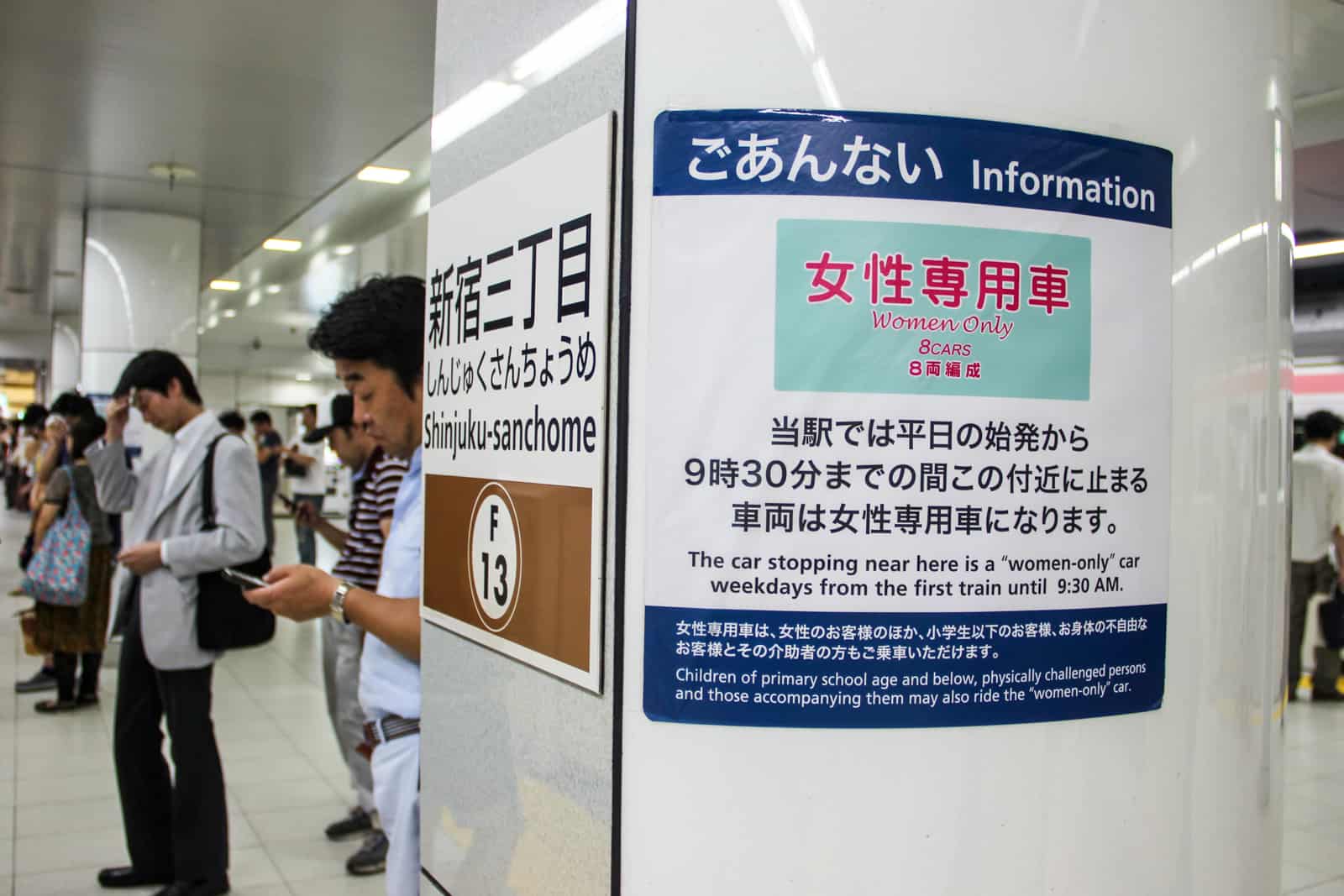
The Japan Metro is an overwhelming but cheap means of transport around the major cities.
Taxis, especially in Tokyo, are ridiculously expensive and should be avoided unless absolutely necessary or if you have no choice. As an example, a 20-minute journey home after a night out in Tokyo cost nearly £38 / $48, and that was even on the meter.
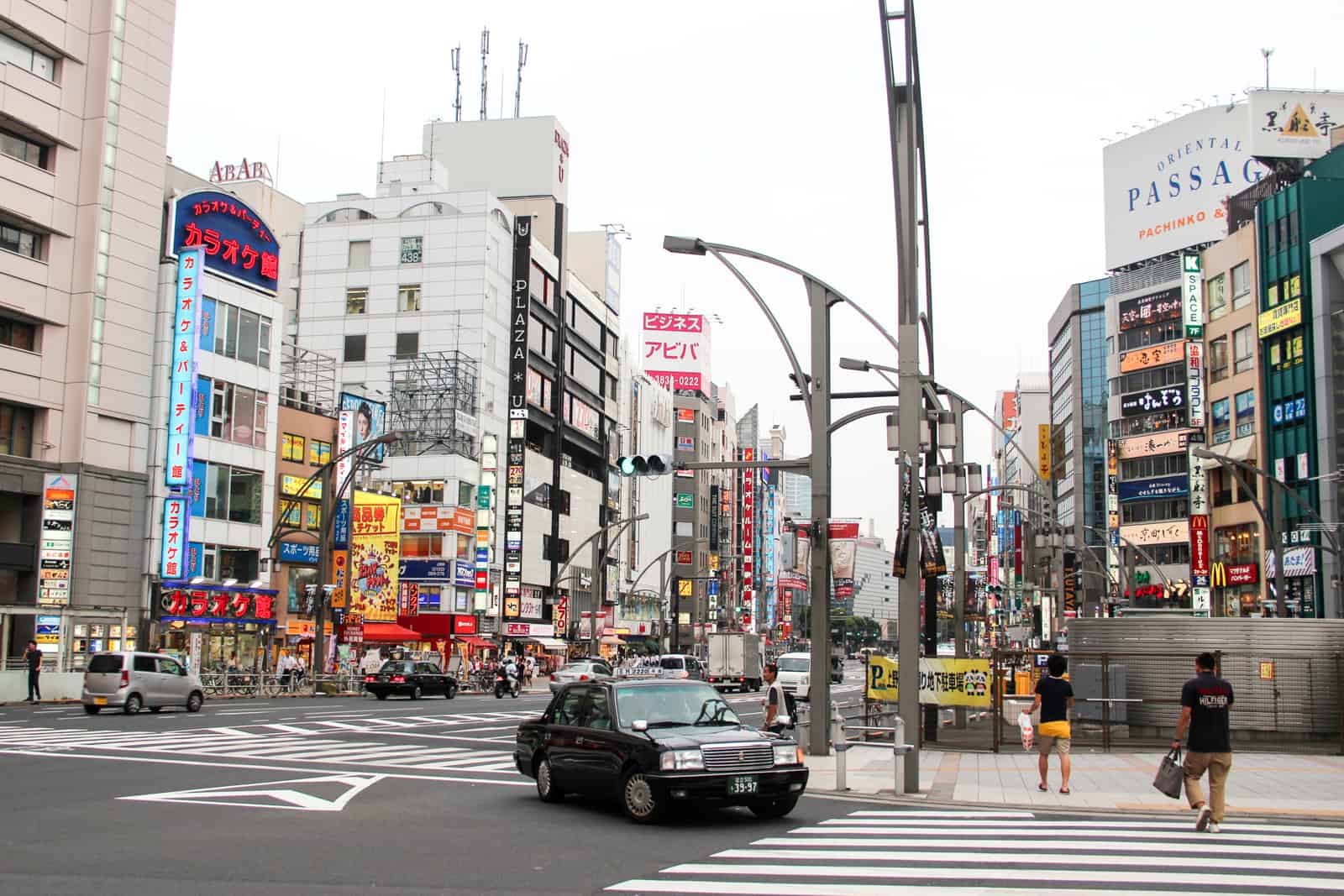
Japan black and yellow taxis are an expensive option.
Like most destinations, bike hire is common and one of the most budget-friendly ways to get around and explore an area.
Many guesthouses in Japan offer this facility for free, and if not included, the average cost I found for one-day bike hire was £3 / $4.
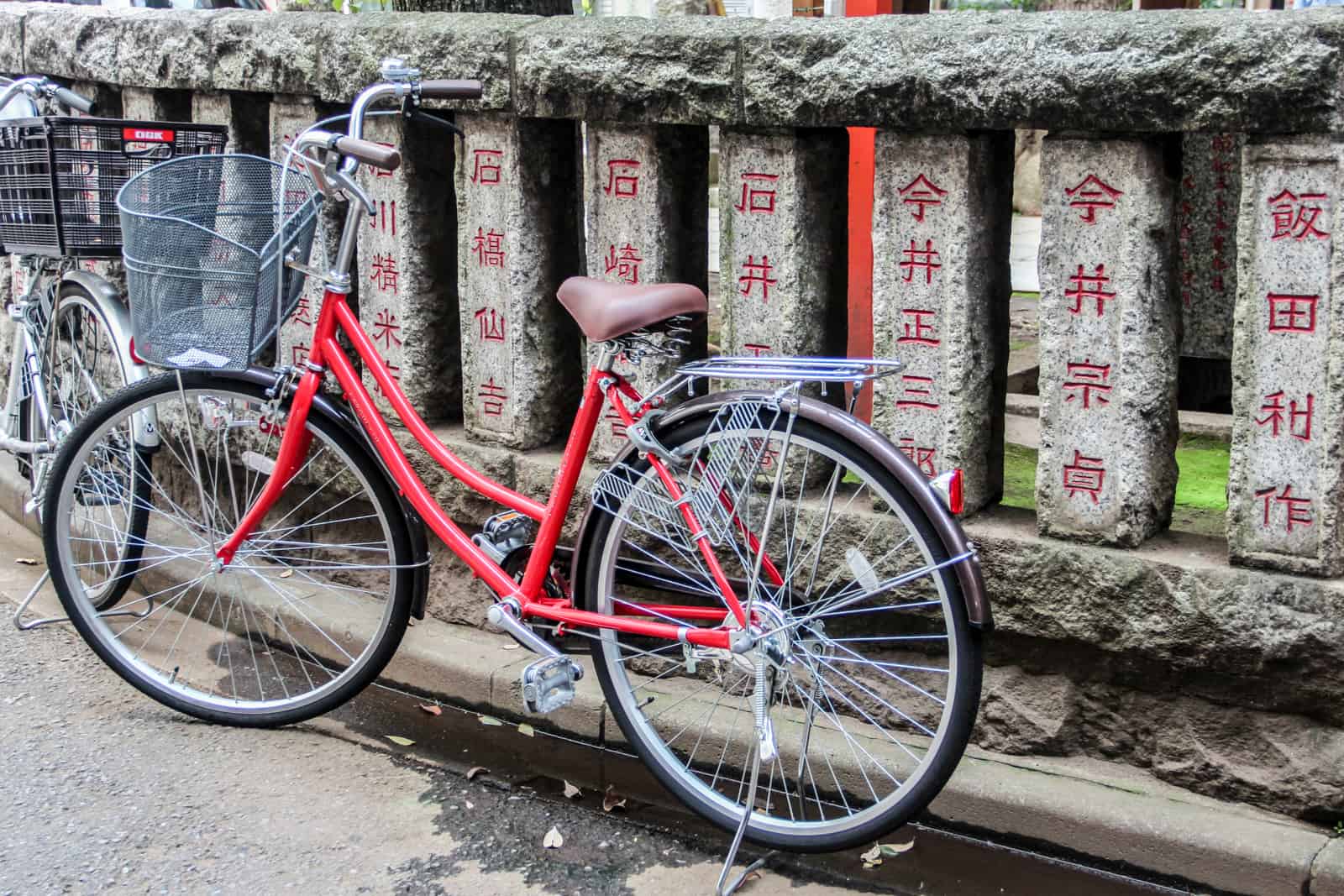
Make use of free or inexpensive bike hire from Japanese accommodations.
Food prices (and drinks) vary dramatically depending on location. You may be eating a cheap bowl of ramen noodles for a full meal at a standard restaurant or trying the delectable beef that Kobe is famous for, with a hefty price tag! Chain restaurants like the CoCo Ichibanya curry house do great deals alongside local establishments, which might throw in a free beer if you stick to a certain menu. Sushi doesn’t have to be an expensive option, as does tempura.
One budget food tip for Japan is to get breakfast, snacks, and sushi sets at a local supermarket. You can even stay within a 1,000 Yen budget (£6 / $8) for a meal.
- A meal in a local restaurant: £5-£10 / $6-$13.
- Ramen or curry: £6 / $8 (can be sought for less than 1,000 Yen).
- Kobe beef (special, must-do treat!): £17 / $22+.
- Budget sushi: £0.75 / $1 (Around 100 Yen per item on the menu)
- Sushi at Tokyo’s Tsukiji Market: £13 – £20 / $17 – $26 (2,000 – 3,000 Yen for sushi sets of around seven pieces or more).
- Cover charge at themed bar or restaurant: £6 / $8 on average.
- Bottle of beer: £3 / $4.
- Cup of coffee: £3 / $4.
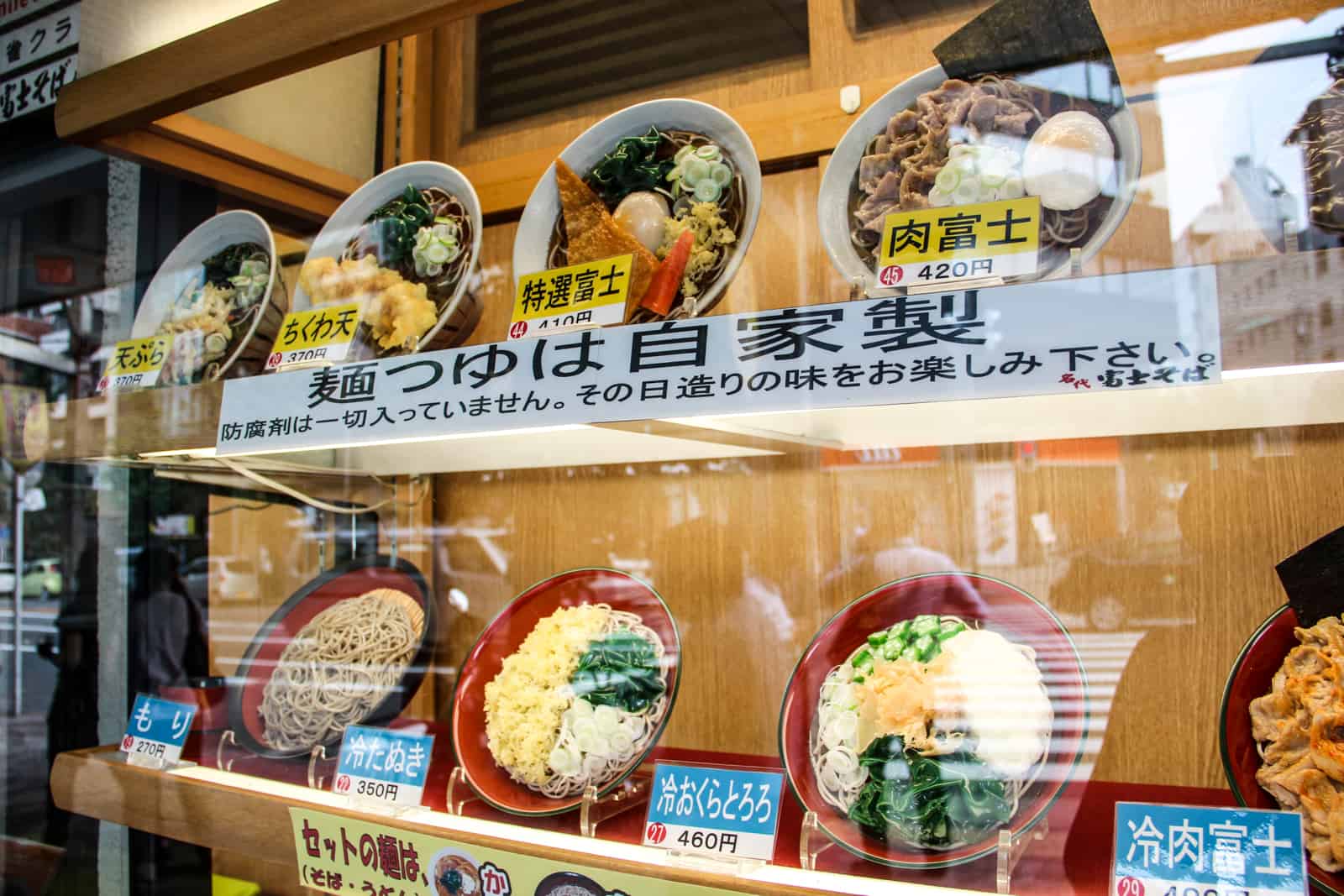
Plastic food on display at Japanese restaurants makes choosing and knowing the price easy.
Accommodation Costs in Japan
In Japan, accommodation will be your biggest cost, alongside transportation.
However, this country is quickly responding to the needs of the budget traveller, with more and more establishments becoming aware of the growth of tourism and a slow influx of more established backpackers looking for practicality over luxury.
Hostels are prevalent in big cities like Tokyo, Kyoto, and Osaka. In many areas, old houses and traditional Ryokan are being preserved and turned into homely hostels and guesthouses, meaning you can experience Japanese tradition on a budget.
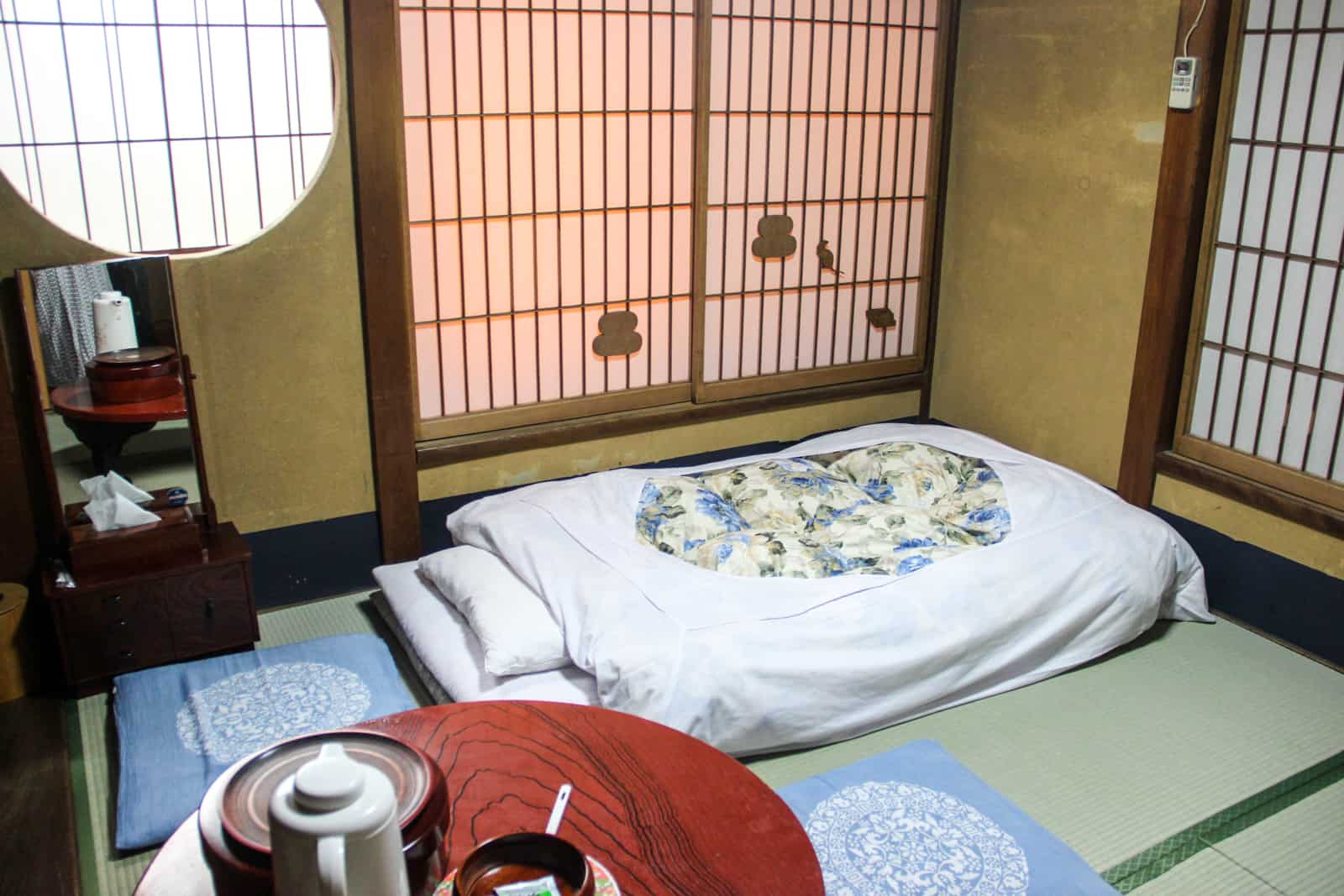
Factor in a traditional Ryokan (Japanese Inn) into your accommodation budget.
I stayed at the range of accommodations in Japan listed below to pull together a comprehensive list of options that cover all manner of budgets, from no-frills to luxury hostels, to traditional homestays and Ryokans, on a journey that started in Tokyo and which took me through various key hotspots in the country, all the way down to Hiroshima.
Below is an outline of where I stayed and the costs per night for a dorm or a single room.
Homeikan – A traditional Ryokan, said to be Tokyo’s oldest, with an onsen bath.
From £41 / $51 for a private room
K’s House Traveller’s Hostel in Kawaguchiko – In the heart of the Fuji area, with free bus transfers to the main train station.
From £58 / $73 for a dorm room
K’s House MtFuji
Private rooms from £140 /$176
Standard mountain house on Mount Fuji
From £38 / $48 for a sleeping space, sleeping bag provided
K’s House Ito Onsen – Shared and private rooms within a 100-year-old Ryokan, with an onsen bath.
From £20 / $25 for dorm room
From £58 / $73 for a private room
Santiago Guesthouse – A new hostel with its very own luxury café.
From £11 / $13 for a dorm room
Kyoto Piece Hostel – A luxury hostel with a swanky hotel vibe.
From £42 / $53 for a private
From £15 / $19 for a dorm room
Haruya Hostel – An old Japanese house converted into a homely guesthouse.
From £16 / $20 for a dorm room
Utano Youth Hostel – A traditional ‘youth hostel’ outside of the central city.
From £21 / $27 for a dorm room
Nara Backpackers – A traditional Japanese house turned into a cosy guesthouse.
J-Hoppers Osaka – Based slightly out-of-town in nearby Konohana ward (where Universal Studios is based) and main transport links.
From £17 / $22 for a dorm room
Yume Nomad – A huge local house turned guesthouse with its own in-house café.
From £13 / $17 for a capsule
Nest Hotel Hiroshima Hatchobori
From £49 / $62 for a economy double
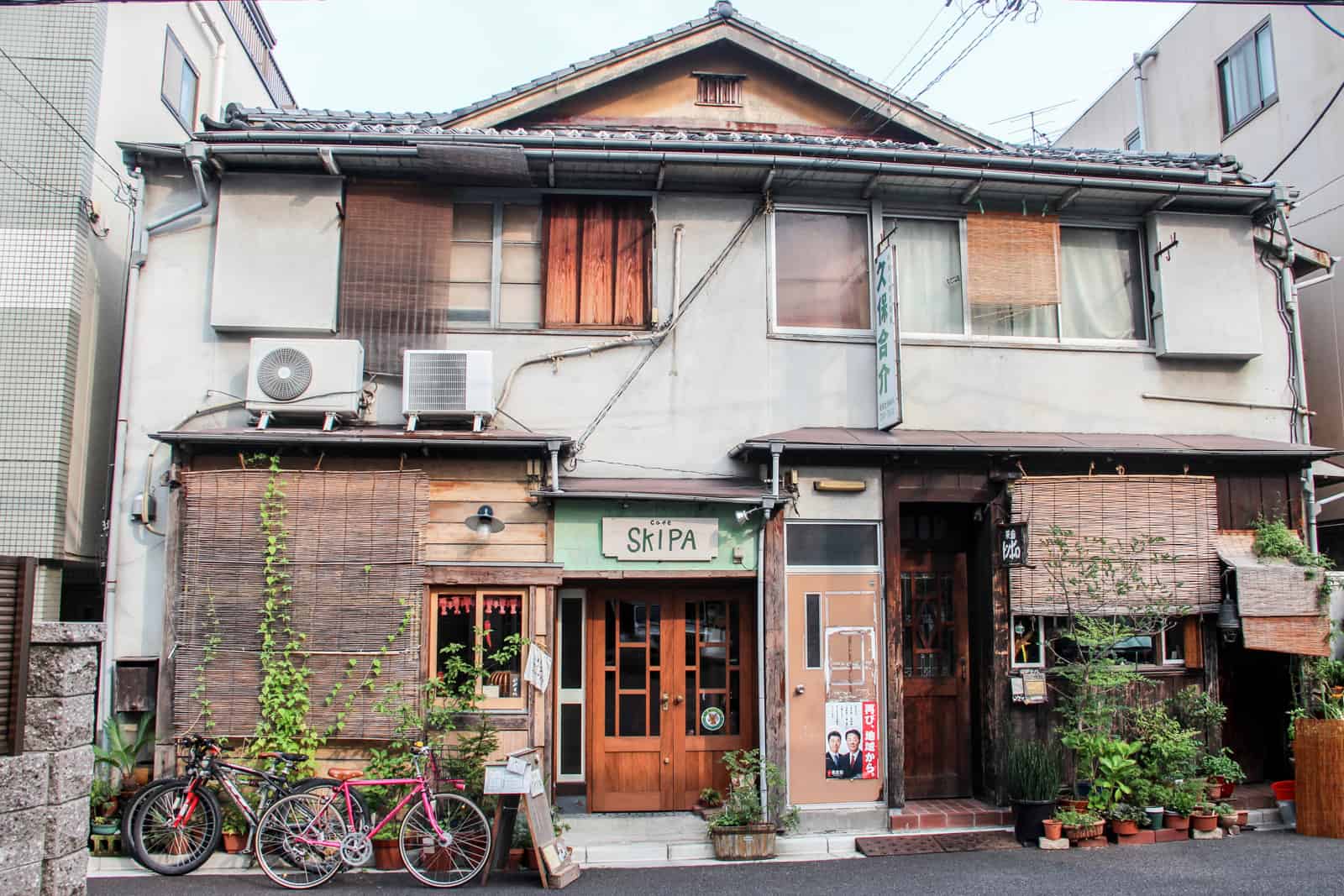
Living locally in Japan. Many traditional houses have been converted into small hostels and guesthouses.
For some, independent travel in Japan might seem overwhelming. If you embark on solo travel in Asia for the first time, Japan can feel more isolated and less trodden than the Southeast Asia hotspots. Would you rather a travel trip to Japan be taken care of and travel in a small group with other adventurers? I recommend these tours of Japan with G Adventures, which takes in many of the country’s key cities and highlights, getting you from Tokyo to Hiroshima and back again.
With a variety of trip options from five days to two weeks, including visiting the iconic Japanese sights on a National Geographic Journey trip , seeing Japan’s highlights on a budget , or travelling the backroads of Japan , you could even mix and match a small group tour with independent travel.
Eccentric shows, walking tours, cultural tours, and ceremonies also factor into your exploration budget when travelling in Japan.
Temples, castles, and palaces are mostly free to enter , although some historical monuments may have an admission fee, which contributes to the site’s protection.
For example, Tokyo is a dream on a sightseeing budget, with core sites such as the Buddist Sensoji Temple and the Imperial Palace grounds having no admission fee. However, the Kinkaku-Ji Temple of the Golden Pavilion in Kyoto is ¥400 – $2/€3.
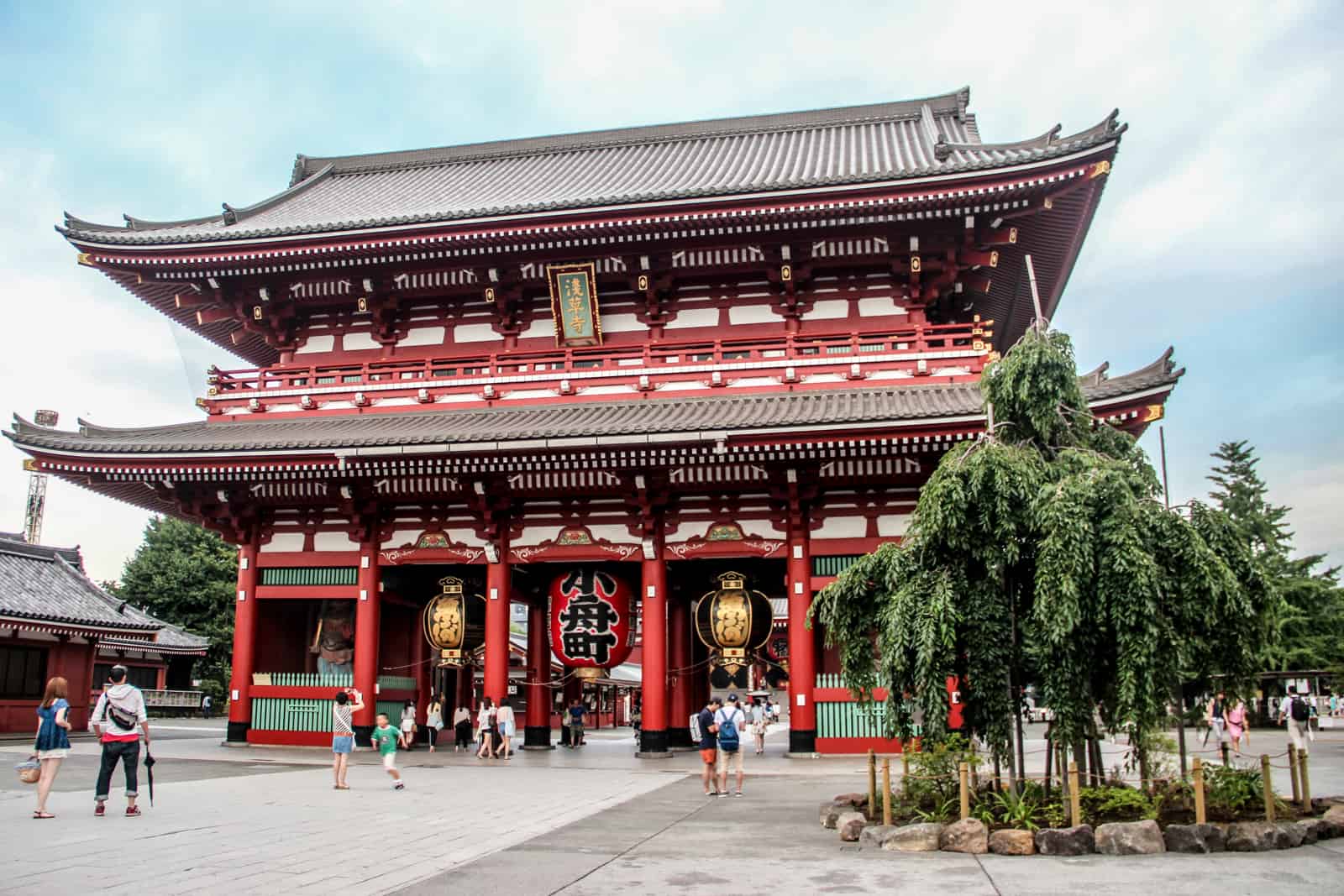
Sensoji Temple in Tokyo is free to enter. Sightseeing in Japan isn’t expensive.
Is Japan Expensive?
Yes, but the cost of travelling within Japan is relative. Before getting there, you must decide where you will go, whether to purchase the rail pass, and what kinds of accommodation you want to try out, from standard budget hostels to traditional Japanese experiences.
Everything else along the way falls into place, and if you look hard enough when it comes to food and other everyday costs, your overall Japan vacation cost might not be as overwhelming as you expect.
Japan may be more expensive than her Asian neighbours, but the incredible time you will have here will leave you saying the same thing long after you have left: “It was completely worth it”. I promise you that, and I’m already looking forward to returning, cost and all.
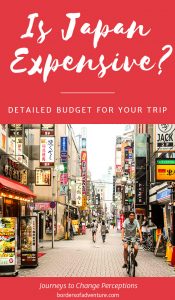
Any plagiarism of this Japan cost travel blog, or any of its calculations and descriptions used on other sites and blogs without attribution is not information authorised by myself for use.
About Becki
Becki Enright is a British Travel Press Award-winning writer whose work focuses on changing perceptions about misunderstood aspects of destinations. Her writing combines storytelling with insight into the social, historical, political and economic factors that shape the country or place in relation to tourism. Becki has appeared live on Sky News and CNN and has contributed to high profile media including National Geographic, Time.com, Guardian online, New York Times, Grazia and Buzzfeed.
29 August 2019 at 8:03 am
So quick question I guess for me would be, the rail pass does not cover local buses or trains in Tokyo? Or like smaller distances? I just want to make sure it’s worth getting since I am only making a trip from Kyoto to Tokyo and if it won’t cover other trains I don’t think it would be worth getting it. What do you think?
29 August 2019 at 1:01 pm
If you are only planning to take one train (the bullet train for that journey being no more than $20) then I don’t think buying a JR Rail Pass is worth it. It’s more intended for those taking multiple train journeys around the country.
Thanh Pham says
10 September 2016 at 2:26 pm
Could you please help me a bit? I am visiting Japan this October, from 14th–21st. I am quite confused how much I should spend beside the cost for transport & hostel.
I am visiting Hiroshima from 14–17th and Kansai area (from 17th–21st, bases in Osaka and from here go to Kyoto, Kobe..). Its 42.100 yen for transport & hostel already, how much do you think i should prepare more for the trip?
Thank you a lot for your help Thanh
12 September 2016 at 3:49 pm
Hi Thanh. I’ve done my best here to break down costs for everything in Japan. I can’t tell you how much you should bring. Some people like to splurge more on food, others like to go shopping, or day trips to neighbouring cities. It’s a case of working out roughly what you want to do, and having more to cover yourself or a bank card that can work in Japan.
Rita Saavedra says
2 June 2016 at 7:29 pm
Thank you for your helpful tips. I am planning a trip to Japan in May 2017 for a total of 10 days. Two days for flying and 8 on ground. However, I am being charged $3458 (does not include air fare). This price seems steep for me. Your tips have encouraged me to research and plan the trip on my own. I do want to ask who helped you plan your sight seeing adventures?
2 June 2016 at 11:29 pm
I planned it all myself. I got a one month rail pass and wrote a list of all the cities I wanted to visit. I also got help from a local who gave me tips on how long to stay in each place and an ideal route. The Japanese are very helpful when it comes to all that stuff 🙂
3 June 2016 at 7:26 am
I recently just got back, I stayed at friends homes so it was a little bit cheaper, however, I was pretty free using on my money and I only ended up using 1,500 dollars for 10 day airfare round trip, two week rail pass, 5 nights in hotels, and of course lots of sushi! I think I would try to find cheaper flights. I also recommend avoiding traveling from June to August. And mid November till February. The cheapest times are September and may. Also, stay 30 min outside of the big cities and there are much cheaper accpmodations.
Franklin Orosco says
16 May 2016 at 4:34 am
I lived in and around Tokyo for two years and recently returned for a holiday. As far as saving on food costs, I would strongly suggest going to one of the large department stores which feautre one or two floors of stalls which sell packaged foods that just need to be heated at home. The thing is is that just about 30 minutes before closing time, they are quite eager to sell off the dishes that they cannot sell the next day, so the price cuts are enormous I saw discounts of up to 70%, but the norm was more like 50% off for all kinds of great food. If you have a fridge to put it in, you can have it for lunch the next day. Also, during the lunch hour, I would go down to a convenience store like Lawson`s or Family Mart to get a bento for about 10,000 Y. Eating doesn`t have to cost a fortune, but it is definitely higher than Thailand.
17 May 2016 at 2:37 pm
Thanks for the great food tips!
Leave a Reply Cancel reply
Your email address will not be published. Required fields are marked *
- Article Archives
- Work with me
- Privacy Policy


Costs & Budgets
T he cost of travel in Japan may not be as expensive as you think. Travelers are often surprised by how reasonable the prices are for sightseeing, food, and shopping .
Of course, you can find expensive items, such as a prized honeydew melon or a box of beautiful strawberries for 10,000 yen! But these prices are exceptional and do not reflect the average costs.
Average Cost of Travel in Japan
Kabuki-cho – Shinjuku, Japan
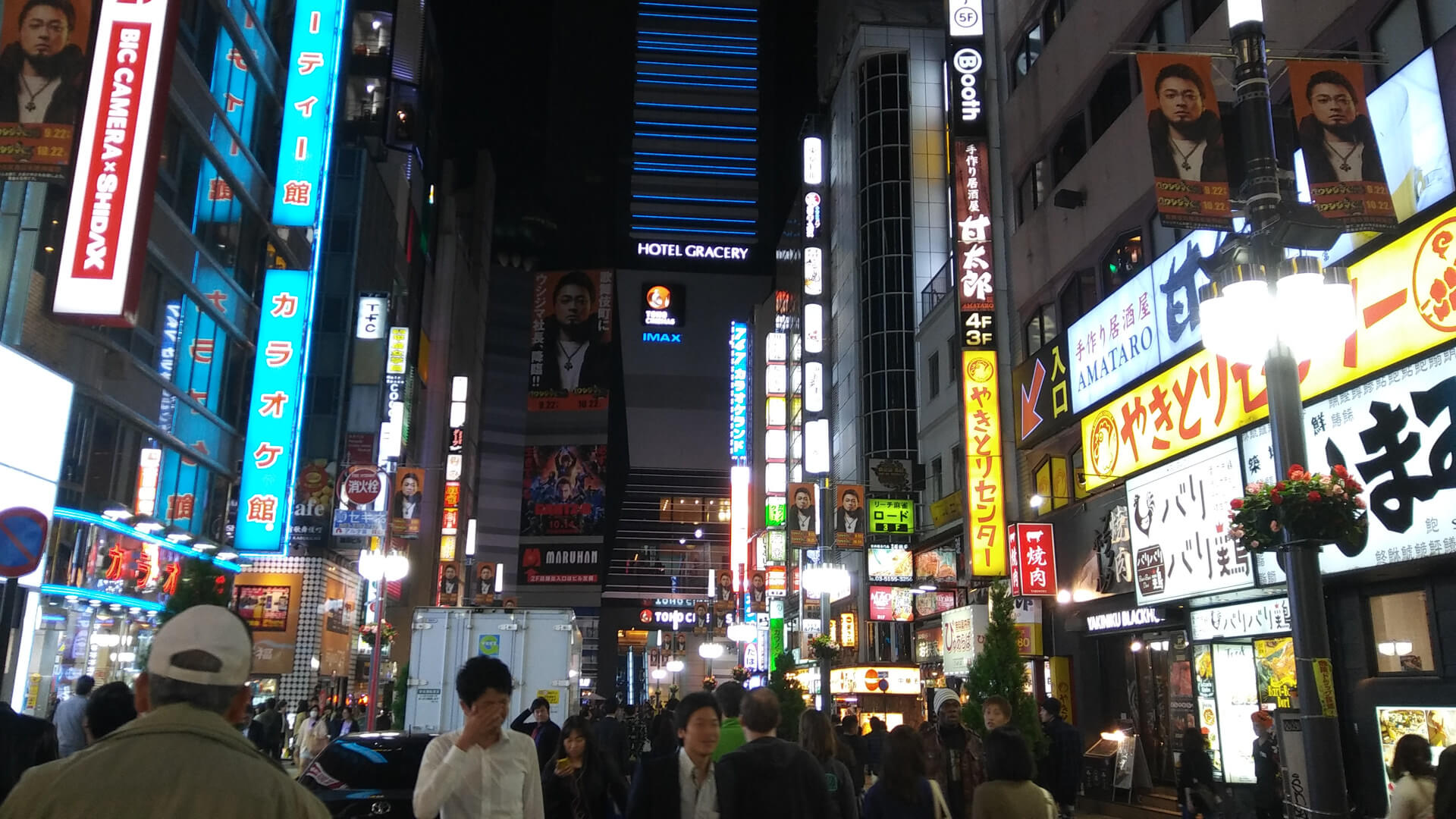
Breakdown of Costs
It is best to budget around $3,500 USD for a one-week trip to Japan for two people, not including airfare. It is possible to spend a little less or a lot more, depending on your preferences.
Yakitori Restaurant – Hamamatsu, Japan

There are so many options for good food at reasonable prices in Japan. For two people, plan on a daily budget of around 2,000 yen for breakfast, 2,000 yen for lunch, and 6,000 yen for dinner.
McDonald’s – Harajuku, Japan
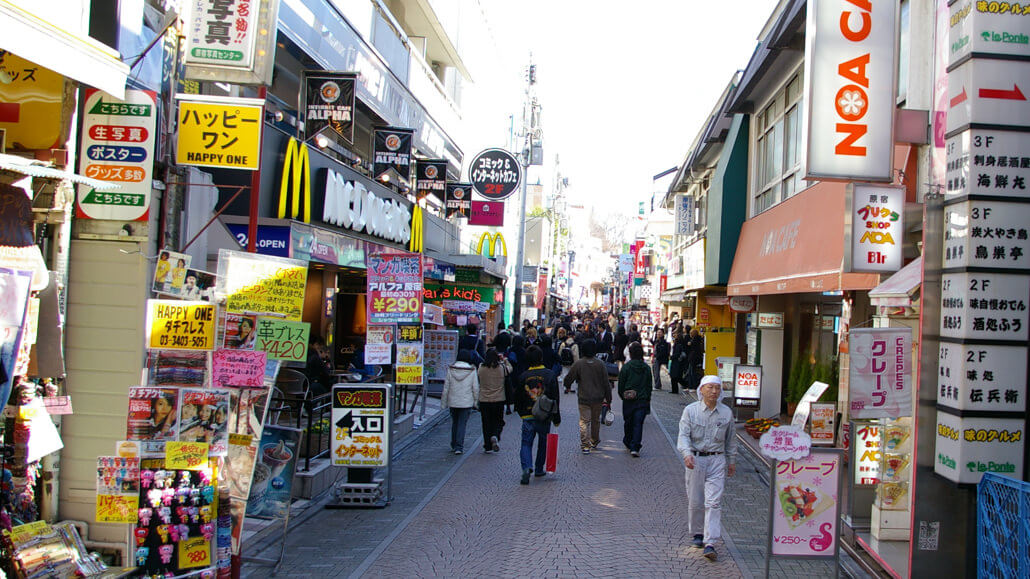
Breakfast or morning sets are available at most cafes for around 500-700 yen. A morning set usually includes toast, an egg or fruit, salad, and coffee or tea. There is also a McDonald’s on every corner if you want something familiar. Breakfast sets at McDonald’s include a hash brown and coffee for around 500 yen.
Japanese Udon Noodles
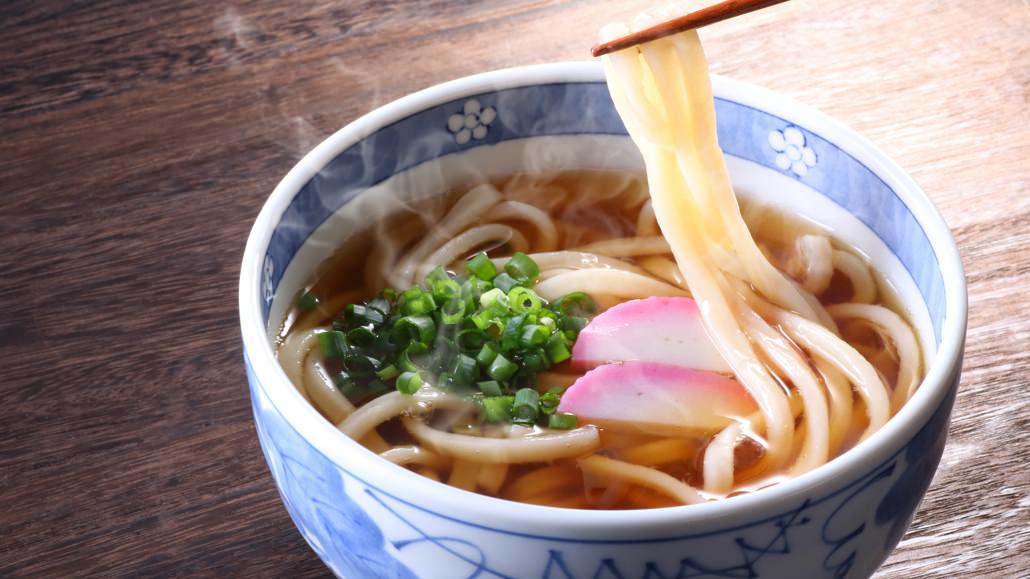
For lunch, you can choose from udon, soba, ramen, curry, sushi, onigiri, fast food such as Mos Burger, or a bento box for less than 1,000 yen per person. A teishoku set lunch from a Japanese restaurant ranges from 1,200-1,500 yen per person.
Dinner at a Japanese restaurant, such as an Izakaya (Japanese bar and grill) or Okonomiyaki restaurant, is usually around 6,000 yen for two people (including drinks). You can find great restaurants near train stations and inside department stores.
Toyoko Inn Business Hotel – Japan
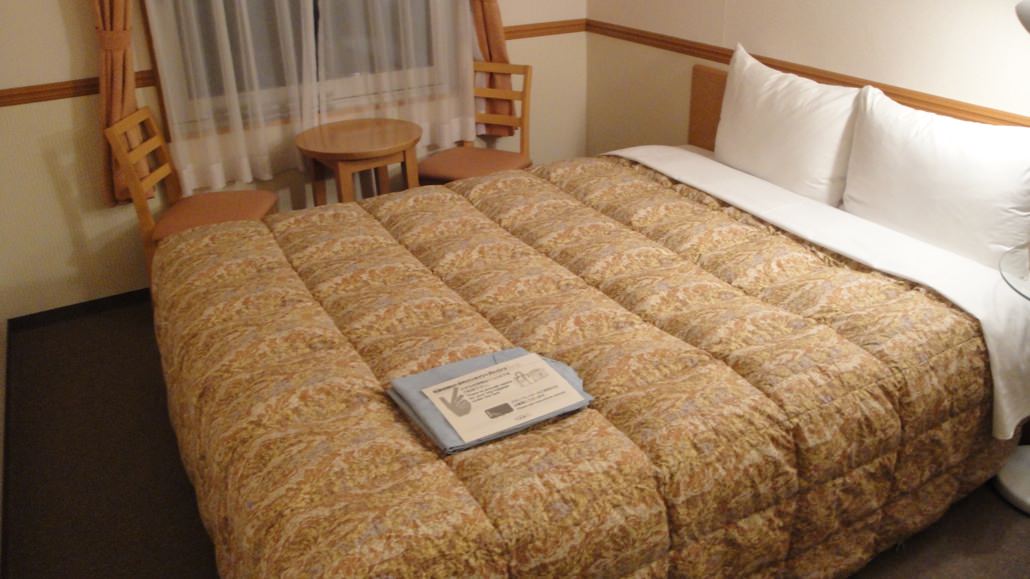
Photo by Tzuhsun Hsu / CC BY-SA
Accommodation
When traveling with two people, the cheapest accommodation is a business hotel. Business hotels are conveniently located near popular train stations, have modern amenities, and are clean. Expect to spend around $100 per night for two people at a business hotel.
Capsule Hotel – Osaka, Japan
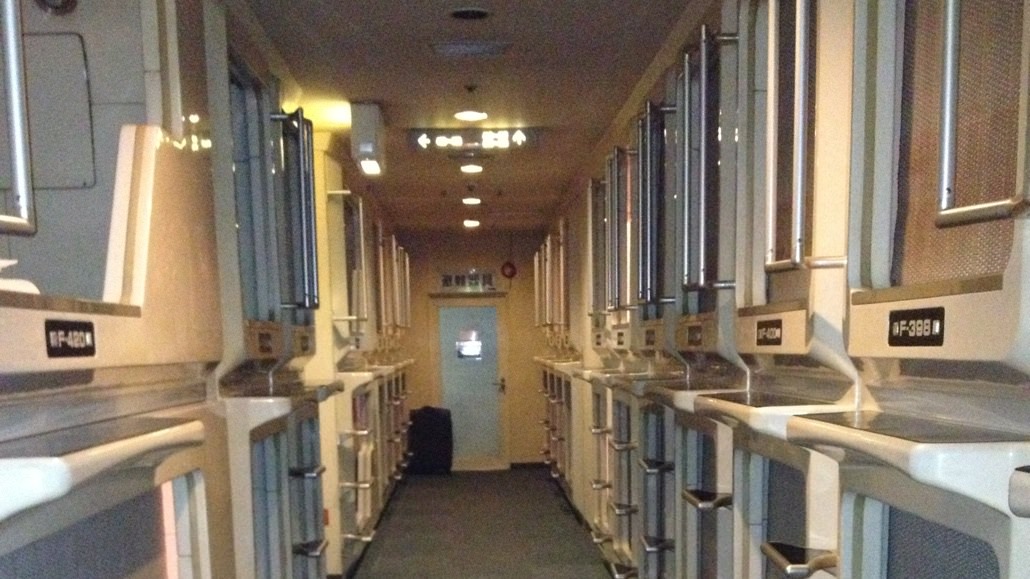
Single travelers looking to lower their budget may want to try hostels or capsule hotels, which run about 3,500 yen per night.
Hilton Executive Lounge – Nagoya, Japan

Luxury hotels, such as the Hilton or Marriott, and Ryokan (Japanese inns) typically charge per person and not per room. A stay at these types of hotels will increase the cost of travel in Japan. One night can range from 20,000-50,000 yen per person per night.
Recommended Hotels
See our recommendations for hotels in Tokyo and hotels in Kyoto .
Shinkansen Passing Mt. Fuji

Transportation
The best deal for travelers doing a lot of travel in Japan is the Rail Pass . The 7-Day Pass is around $400 per person and offers unlimited access on JR trains and Shinkansen .
Subway – Tokyo, Japan
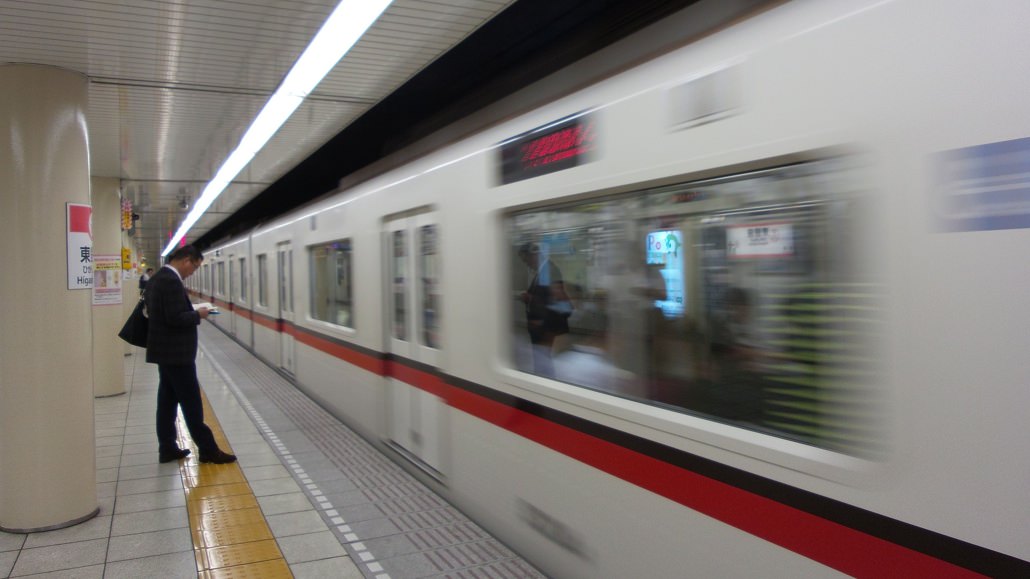
If you’re going to do a lot of travel by subway in local areas, it is best to purchase a day pass or IC Card. Day Passes offer unlimited rides and are usually less than 1,000 yen.
Taxi – Shinjuku, Japan

Taxis can get expensive, so it is best to stick to the trains and subways when possible. A short ride in a taxi typically costs around 1,000 yen.
Kiyomizu Temple – Kyoto, Japan
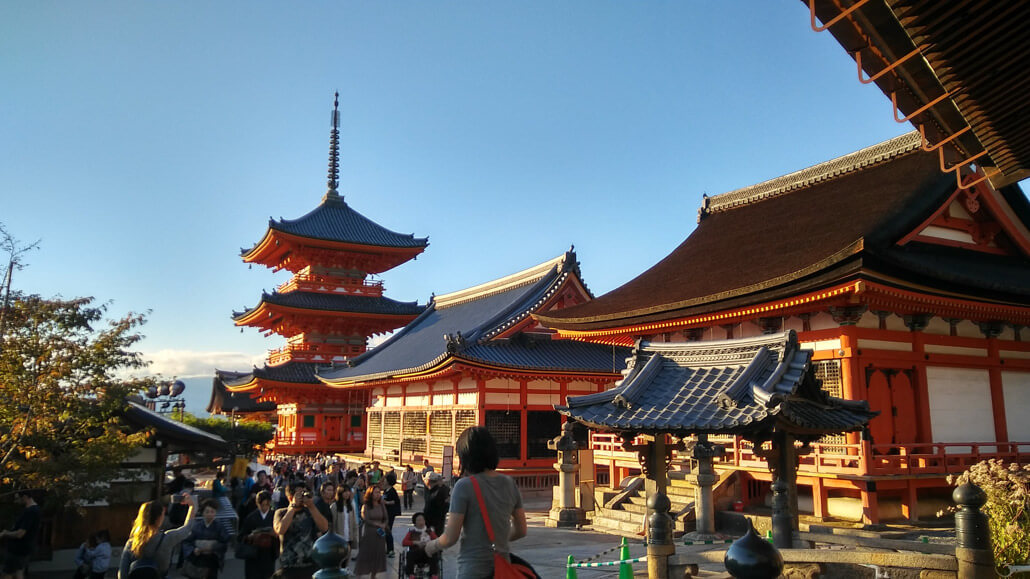
Sightseeing
Sightseeing is not so expensive. You can enter many temples and shrines for free. Generally, admission to notable temples, shrines, and castles is around 500 yen. Museums can cost around 1,000-2,000 yen.
Karaoke at Big Echo – Japan
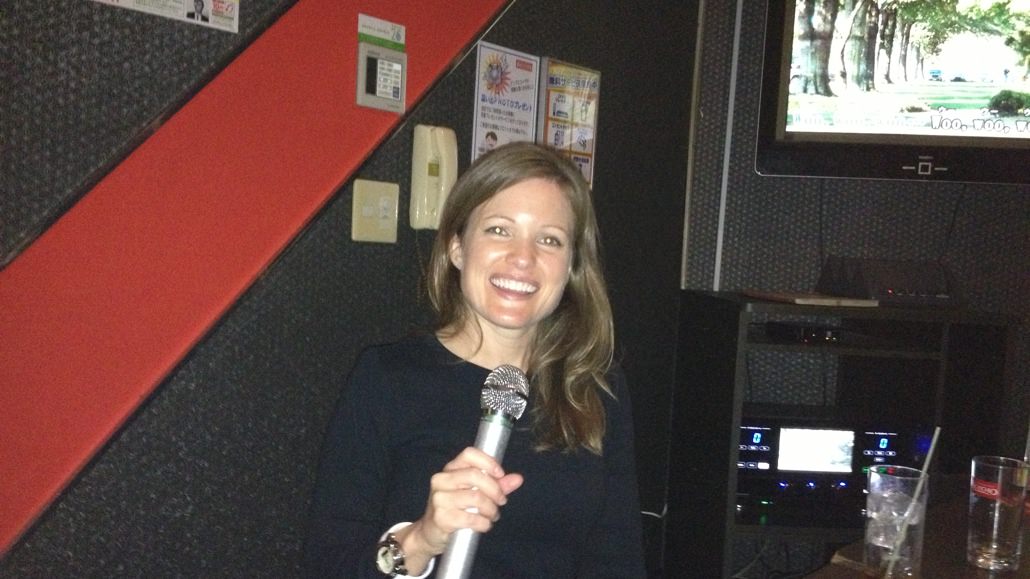
Entertainment
It’s good to budget a little extra for a couple of fun nights of karaoke , movies, or clubs. The price of karaoke depends on the venue, but is generally 2,000-3,000 yen for one hour for two people. A new movie at the cinema is 2,000 yen per person. And clubs can vary from 2,000-3,000 yen for admission.
Souvenir Shops – Asakusa, Tokyo
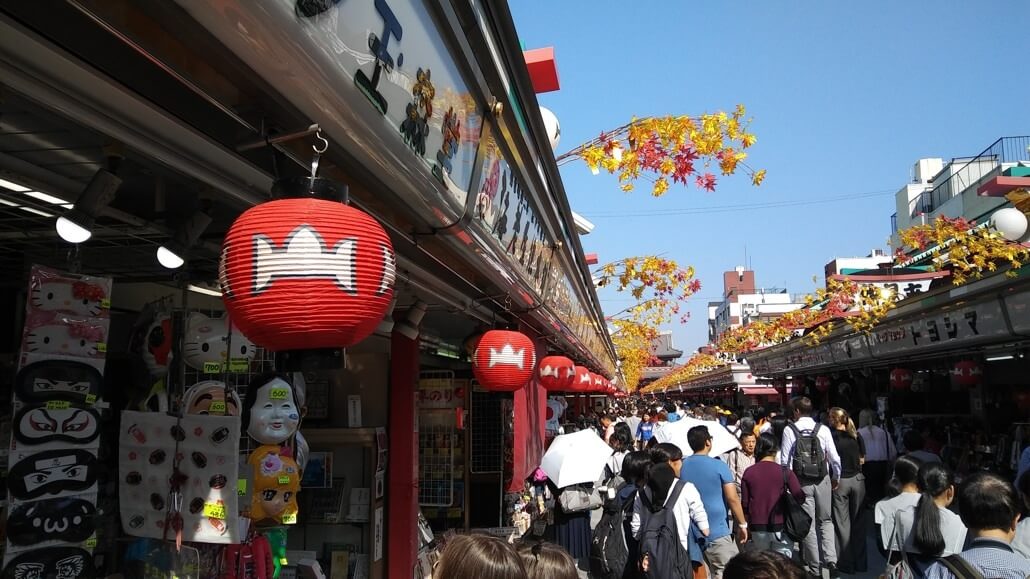
Whether it’s electronics, clothing, or souvenirs, you’re going to want to budget money for shopping. 100 yen shops are a great place to find Japanese goods, such as chopsticks and sake sets. For more expensive items, tourists can enjoy tax-free shopping at major department and electronics stores (consumption tax is 10%).
Izakaya Restaurant – Hamamatsu, Japan
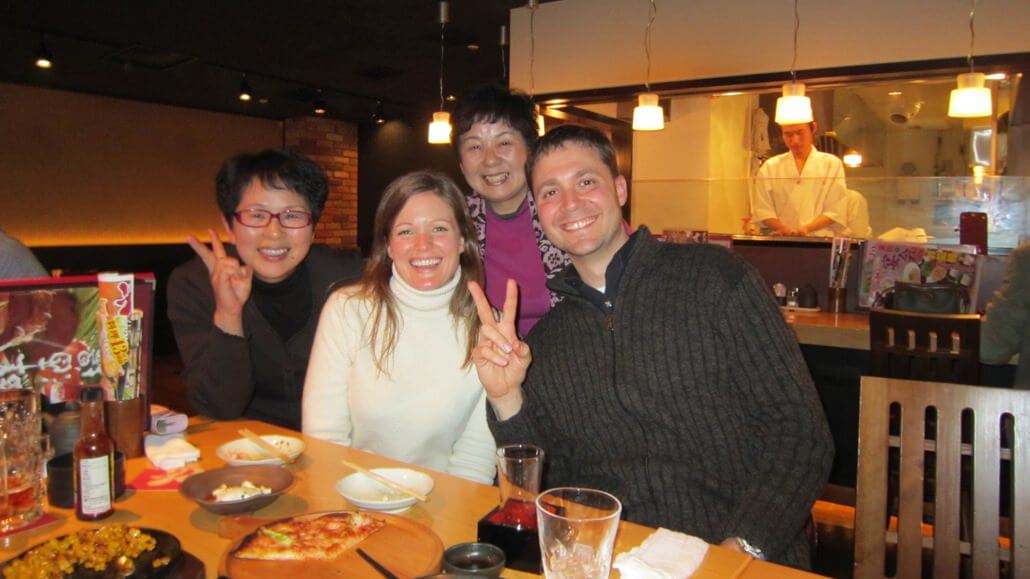
There is no tipping in Japan. This includes the server at a five-star restaurant, taxi driver, delivery man, or bartender. If you leave money, they will usually just give it back to you. At some high-end establishments, a service charge is added to your bill, so no tip is expected.
Update: We’ve recently started using the WISE card for transferring funds into foreign currency. It’s a convenient and safe way to exchange, withdraw, and spend money while traveling.
You can use your WISE card anywhere MasterCard is accepted, and you can withdraw money from ATMs with minimal fees. You can read more about it in our Wise Card article .
Read More →
Ready for the Trip of a Lifetime?
Experience Japanese culture, travel like a local and get to know the real Japan on one of our Small Group Tours .
More Travel Tips You Might Like
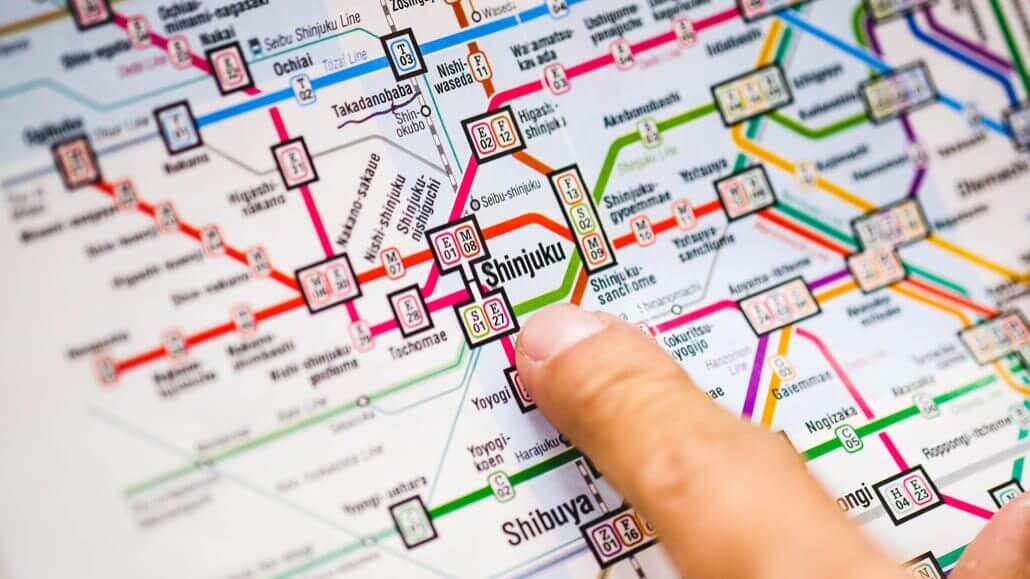
Useful Apps
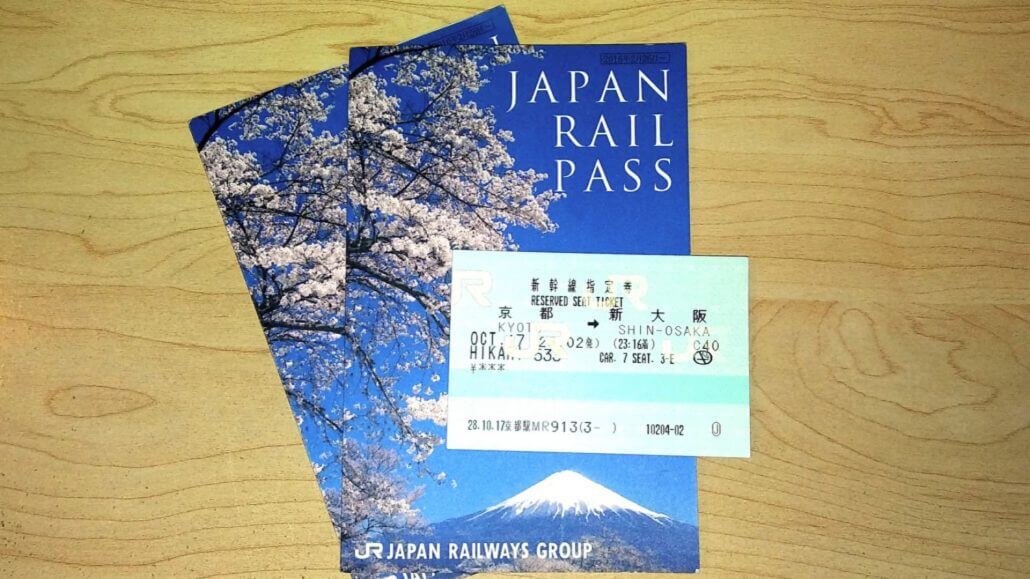
Japan Rail Pass
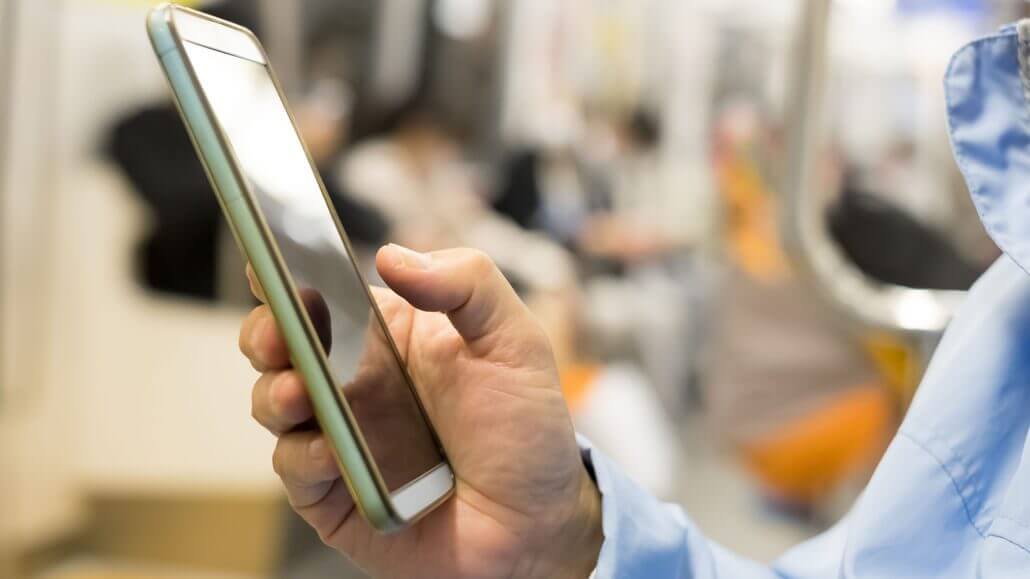
Cellular Service & Wi-Fi
Share this article.
- Share on Facebook
- Share on Twitter
- Share on WhatsApp
- Share on Pinterest
- Share on Tumblr
- Share on Reddit
- Share by Mail
Disclaimer: There are affiliate links in this article. This means that if you make a purchase after clicking on these links, we may receive a small commission at no extra cost to you. We have no association with the companies or the products reviewed. These are our own opinions of top travel products.
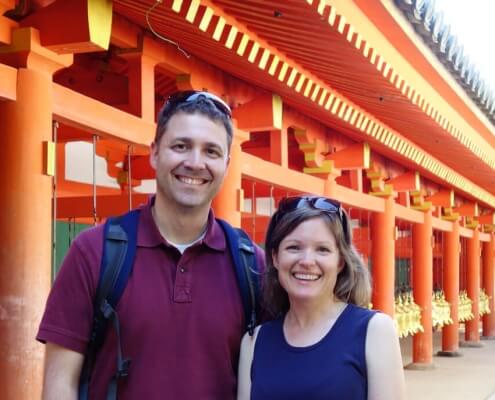
Becki and Shawn Japan Travel Specialists
Hi, we’re Becki and Shawn! We love Japan and are truly passionate about Japan and Japan travel.
We’ve lived, worked, and traveled in Japan for 20+ years, so we know where to go, what to see, and how to get there. Join us in Japan for an adventure of a lifetime!
Accreditations

- Japan Tours
- Destinations
- Experiences
- Travel Tips
Reviews & Recommendations
This site uses cookies. By continuing to browse the site, you are agreeing to our use of cookies.
Cookie and Privacy Settings
We may request cookies to be set on your device. We use cookies to let us know when you visit our websites, how you interact with us, to enrich your user experience, and to customize your relationship with our website.
Click on the different category headings to find out more. You can also change some of your preferences. Note that blocking some types of cookies may impact your experience on our websites and the services we are able to offer.
These cookies are strictly necessary to provide you with services available through our website and to use some of its features.
Because these cookies are strictly necessary to deliver the website, refuseing them will have impact how our site functions. You always can block or delete cookies by changing your browser settings and force blocking all cookies on this website. But this will always prompt you to accept/refuse cookies when revisiting our site.
We fully respect if you want to refuse cookies but to avoid asking you again and again kindly allow us to store a cookie for that. You are free to opt out any time or opt in for other cookies to get a better experience. If you refuse cookies we will remove all set cookies in our domain.
We provide you with a list of stored cookies on your computer in our domain so you can check what we stored. Due to security reasons we are not able to show or modify cookies from other domains. You can check these in your browser security settings.
We also use different external services like Google Webfonts, Google Maps, and external Video providers. Since these providers may collect personal data like your IP address we allow you to block them here. Please be aware that this might heavily reduce the functionality and appearance of our site. Changes will take effect once you reload the page.
Google Webfont Settings:
Google Map Settings:
Google reCaptcha Settings:
Vimeo and Youtube video embeds:
You can read about our cookies and privacy settings in detail on our Privacy Policy Page.
Travel Japan Like a Pro
" * " indicates required fields
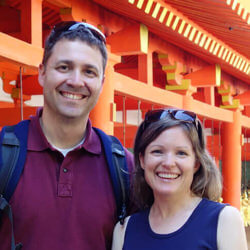
Travel Budget
This page is meant to give you a rough idea of the cost of individual travel in Japan by introducing some sample budgets. Note that accommodation rates can increase during peak seasons in popular destinations which is not reflected by the numbers below. View also our pages about budget travel , package tours and suggested itineraries to see the sample budgets applied to specific itineraries.
Sample daily budgets
The numbers below do not include the cost for transportation and heightened accommodation rates during peak seasons. Click here for the current yen exchange rates.
Accommodation
Below are typical rates for accommodation outside the peak seasons . Rates can increase considerably during the peak seasons! Check our accommodation page for more information on different accommodation types and corresponding price ranges.
Low budget: 3,000 - 5,000 yen per night and person Dormitories and hostels , found in most cities of Japan, typically charge below 5000 yen per night and person. Furthermore, booking services like Hostelworld offer great deals.
Medium budget: 6,000 - 12,000 yen per single room and night 8,000 - 15,000 yen per double room and night At this level, you will find rooms in business hotels , minshuku and inexpensive, no-frills ryokan . Some tour packages (for individual travelers) include accommodation at quality Western-style hotels at this price level.
High budget: over 12,000 yen per single room and night over 15,000 yen per double room and night Starting around 12,000 yen per person, you can get rooms in better business hotels and inexpensive Western-style hotels. A stay at a ryokan with two meals included typically costs between 15,000 and 30,000 yen per person and night. For a room in a 4 or 5 star Western-style hotel, you typically pay from 25,000 to 50,000 yen per room and night.
Low budget: 500 yen per day At this level, you will have to live from convenience store food (bread, rice balls, etc.) and fast food restaurants like McDonald's or Mister Donut which offer inexpensive breakfasts.
Medium budget: 500 - 1000 yen per day Many coffee shops and some restaurants in shopping areas and around train stations offer breakfast sets for around 500 to 1000 yen.
High budget: above 1000 yen per day Hotel breakfasts and breakfast buffets will usually cost you more than 1000 yen. Breakfast buffets in first-class hotels typically cost at least 3000 yen.
Low budget: 500 - 800 yen per day Inexpensive lunch boxes are available in convenience stores and stands in railway stations and business districts. Various fast food restaurants , specializing in noodles, curry, domburi or hamburger, also offer relatively filling meals for 800 yen or less.
Medium budget: 800 - 1500 yen per day At this level you will have an even larger range of inexpensive restaurants such as the above mentioned fast food places, plus restaurants which offer lunch set specials for around 1000 yen.
High budget: above 1500 yen per day A lunch at better restaurants costs typically between 1500 and 3000 yen.
Low budget: 500 - 1000 yen per day Convenience stores sell various, inexpensive ready-to-eat meals. Other options are again cheap fast food restaurants .
Medium budget: 1000 - 2500 yen per day Conventional restaurants are generally more expensive in the evening than during lunch time, as there are no lunch specials. At this level, you will be able to enjoy a nice dinner at a wide range of fast food and conventional restaurants, including the restaurants found in department stores where meals typically cost between 1000 and 2500 yen, not including alcoholic drinks.
High budget: above 2500 yen per day With 3000 yen per person you will be able to have a good dinner at a wide range of restaurants . Calculate 5000 yen upwards per person for a dinner at upper class restaurants specializing in sushi , French cuisine, sukiyaki, kaiseki ryori, steaks, etc.
Sightseeing
Low budget: 0 - 500 yen per day Japan offers many free attractions. Most shrines and some temples do not charge admission fees. A few museums charge no admission on one day of the week or month.
Medium budget: 500 - 2000 yen per day Admission to famous temples costs between 300 and 1000 yen. Most museums and castles charge about 500-1500 yen per person.
High budget: above 2000 yen per day Some museums and attractions (usually outstanding ones or tourist traps) charge between 1,500 and 3,000 yen per person. Admission to large theme parks typically cost around 5,000-10,000 yen per day.
Transportation
Low budget: Highway buses , the Japan Bus Pass and the Seishun 18 Kippu (only available during certain times of the year) are among the cheapest ways of traveling in Japan.
All budgets: Travelers of all budgets should consider purchasing a rail pass . Over long distances, domestic flights are often more economical, if you take advantage of the various discount offers .
Questions? Ask in our forum .

- Car Rentals
- Airport Transfers
- Attractions & Tours
- Flight + Hotel
- Destinations
- Trip.com Rewards
2024 Japan Travel on a Budget: Tips and Tricks for a Memorable Trip

by Trip.com
April 25, 2024

Japan is generally considered a moderately expensive travel destination, but there are ways to save money and travel on a budget. The major costs of a trip to Japan are flights, accommodation, eSIM , JR Pass , transportation, food, and activities. Flights to Japan can cost anywhere from $600 to $1,200 for a round-trip ticket. Accommodation options range from budget hotels or hostels for $20 to $50 per night to luxury hotels that can cost upwards of $500 per night. Japan's public transportation system is extensive and efficient, and a one-way subway or train ticket can cost anywhere from $1.50 to $5. Food costs in Japan can vary, with budget restaurants offering meals for $5 to $10, while mid-range restaurants cost around $15 to $30 per person.
Overall, a budget traveler can expect to spend around $50 to $100 per day in Japan, while a mid-range traveler can expect to spend around $150 to $250 per day. It's important to plan ahead and research activities and costs to create a budget that works for you.
How much does it cost for flights when travelling to Japan?
The cost of flights to Japan can vary depending on various factors, such as the departure location, time of year, airline, and availability. Generally speaking, the cost of a round-trip economy class ticket from major cities in North America to Tokyo, Japan can range from approximately $600 to $1,500 or more , depending on the factors mentioned above.
Cheap Flight from Los Angeles to Tokoy

- Sort by: Lowest Price
- Sort by: Earliest Flight

Crossed out prices are calculated based on the average price of the corresponding route on Trip.com.
Cheap Flight from San Francisco to Osaka

How much does it cost for hotels when travelling to Japan ?

Conrad Tokyo
The cost of hotels in Japan varies depending on several factors such as the location, season, and the type of accommodation you are looking for. As a general rule, hotels in major cities like Tokyo, Kyoto, and Osaka tend to be more expensive than hotels in smaller cities or rural areas.
- In Tokyo, for example, the average cost of a mid-range hotel room can range from around 10,000 to 25,000 Japanese yen per night (around $90 to $230 USD). However, luxury hotels in Tokyo can cost upwards of $500 USD per night.
- In other cities and smaller towns in Japan, hotel prices can be more affordable, with mid-range hotels typically costing between 6,000 to 15,000 yen (around $55 to $140 USD) per night.
Of course, prices can fluctuate depending on the time of year and availability. It's always a good idea to compare prices on multiple travel booking websites and to book your accommodation well in advance to get the best deals.
Best Hotels in Tokyo
Hotel new otani tokyo garden tower, imperial hotel, tokyo, intercontinental tokyo bay, an ihg hotel, tokyo dome hotel, the prince park tower tokyo - preferred hotels & resorts, lvx collection, family friendly, mitsui garden hotel ueno - tokyo, henn na hotel tokyo asakusa tawaramachi, rakuten stay tokyo asakusa, hotel gracery ginza, daiwa roynet hotel ginza premier, swimming pool, ana intercontinental tokyo, an ihg hotel, hilton tokyo odaiba, sheraton miyako hotel tokyo, cerulean tower tokyu hotel, a pan pacific partner hotel, best hotels in osaka, rihga royal hotel, the royal park hotel iconic osaka midosuji, sheraton miyako hotel osaka, swissotel nankai osaka, intercontinental hotel osaka, an ihg hotel, hotel universal port, osaka hokko marina hull, hotel keihan yodoyabashi, rihga place higobashi, osaka view hotel honmachi, hotel keihan universal tower, liber hotel osaka, dormy inn premium namba natural hot spring, city plaza osaka, hotel monterey la soeur osaka, imperial hotel osaka, the westin osaka, conrad osaka, the ritz-carlton osaka, how much does it cost for food when travelling to japan .
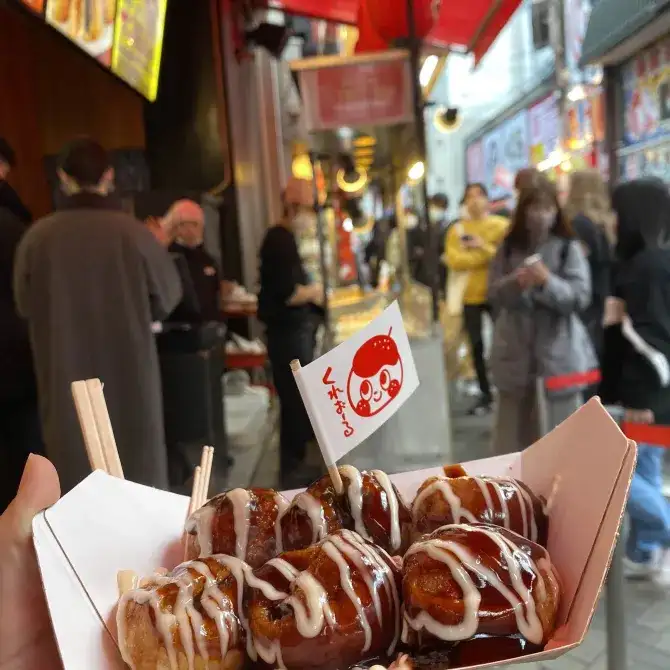
Osaka Dotonbori
- Street food or fast food : around 300 to 800 Japanese yen (around $3 to $8 USD)
- Casual dining or local restaurants : around 800 to 2,000 Japanese yen (around $8 to $20 USD) per meal
- Mid-range restaurants : around 2,000 to 5,000 Japanese yen (around $20 to $50 USD) per meal
- High-end or luxury restaurants : around 10,000 to 20,000 Japanese yen (around $100 to $200 USD) per meal or more.
In addition to restaurants, there are also many affordable options for food in Japan, such as convenience stores and supermarkets, which offer a variety of tasty and healthy food at reasonable prices. It's worth noting that tipping is not customary in Japan, so the prices listed above are typically the final price you will pay. Also, keep in mind that prices can vary depending on the location and the time of year.
How much does it cost for souvenirs when travelling to Japan ?

Blue Bottle Coffee
- Japanese snacks and sweets : prices vary depending on the item and packaging, but small boxes or bags of sweets can cost around 300 to 500 Japanese yen (around $3 to $5 USD), while larger boxes or packages can cost around 1,000 to 2,000 yen (around $10 to $20 USD).
- Traditional crafts and goods : prices for traditional crafts such as pottery, lacquerware, and textiles can vary widely depending on the item's quality, size, and the artist's reputation. Prices for traditional crafts can range from a few thousand yen to tens of thousands of yen (from around $20 to $200 USD or more).
- Anime and pop culture merchandise : items such as figurines, keychains, and clothing featuring popular anime or manga characters can range from a few hundred yen to several thousand yen (from around $3 to $30 USD or more).
It's worth noting that many souvenir shops in tourist areas have fixed prices, but there may be room for negotiation in other types of stores, such as flea markets or antique shops. Additionally, keep in mind that prices can vary depending on the time of year, and it's always a good idea to shop around and compare prices before making a purchase.
How much does it cost for transportation when travelling to Japan ?
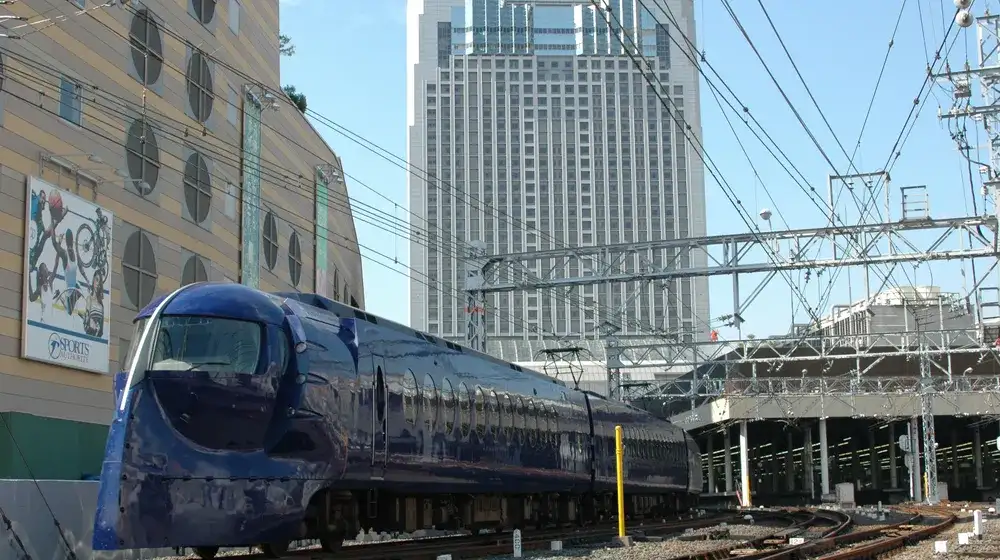
Osaka Nankai Line Airport Express
- Train and subway : The cost of train and subway tickets in Japan depends on the distance traveled and the type of train. For example, a single ride on a Tokyo subway line can cost around 200 to 400 Japanese yen (around $2 to $4 USD), while a ride on a long-distance bullet train (Shinkansen) can cost around 10,000 to 20,000 yen (around $100 to $200 USD) or more, depending on the distance and train type.
- Bus : Local buses in Japan generally cost around 200 to 500 Japanese yen (around $2 to $5 USD) per ride, depending on the distance and location.
- Taxi : Taxis in Japan can be quite expensive, with prices starting at around 600 to 700 Japanese yen (around $6 to $7 USD) for the first kilometer and increasing by around 100 to 200 yen (around $1 to $2 USD) per additional 200 to 300 meters.
- Rental car : Rental cars in Japan can be expensive, with prices starting at around 5,000 to 8,000 Japanese yen (around $50 to $80 USD) per day, depending on the type of car and rental location.
It's also worth noting that Japan has several transportation passes and discount tickets available for visitors, such as the Japan Rail Pass, which allows unlimited travel on most JR trains for a fixed period, and the Tokyo Subway Ticket, which provides unlimited travel on Tokyo subways for a fixed period. These passes can be a good value if you plan to do a lot of traveling in a short period.
How much does it cost for sightseeing when travelling to Japan?
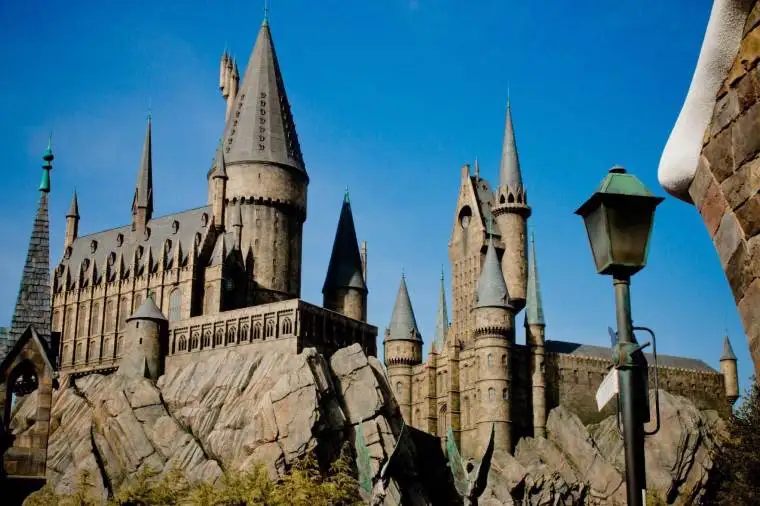
Universal Studios Japan
- Temples and shrines : Many temples and shrines in Japan are free to enter, while others may charge a small admission fee ranging from 200 to 500 Japanese yen (around $2 to $5 USD).
- Museums and galleries : Admission fees for museums and galleries in Japan vary widely depending on the location and type of museum. Prices typically range from around 500 to 2,000 Japanese yen (around $5 to $20 USD) per person.
- Theme parks : Admission fees for theme parks in Japan vary depending on the location and type of park. Prices typically range from around 2,000 to 8,000 Japanese yen (around $20 to $80 USD) per person.
- Onsen (hot springs) : Prices for onsen vary depending on the location and type of onsen. Prices typically range from around 500 to 3,000 Japanese yen (around $5 to $30 USD) per person.
- Tours and activities : Prices for tours and activities in Japan vary depending on the type of activity, location, and duration. Prices typically range from around 2,000 to 10,000 Japanese yen (around $20 to $100 USD) per person.
It's also worth noting that there are many free or low-cost sightseeing options in Japan, such as walking tours, parks, and public gardens, which can provide a great experience without breaking the bank. Additionally, some attractions offer discounts or free admission for foreign visitors, so be sure to check before you go
How much does it cost for WiFi & communication when travelling to Japan ?
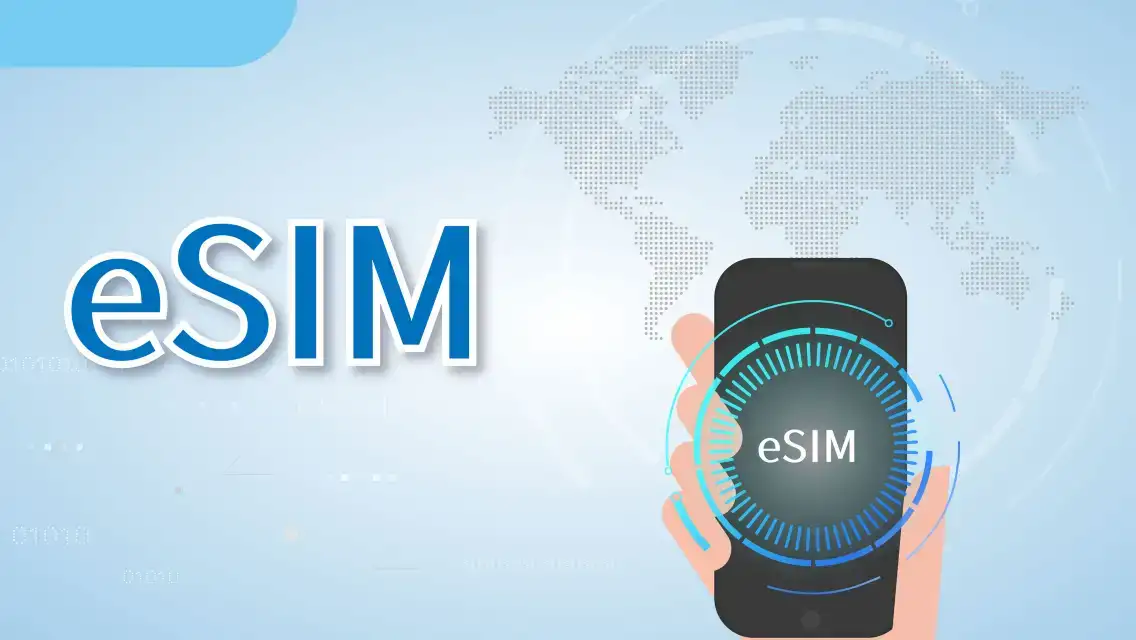
Japan eSIM Day Pass
- Rental Wi-Fi router : Rental Wi-Fi routers are a popular option for tourists in Japan. Prices typically range from around 700 to 1,200 Japanese yen (around $7 to $12 USD) per day, depending on the rental company and plan. Some companies offer discounts for longer rental periods.
- SIM card : Another option is to purchase a prepaid SIM card for your mobile device. Prices typically range from around 3,000 to 5,000 Japanese yen (around $30 to $50 USD), depending on the data plan and provider.
- Free Wi-Fi : Many public places in Japan, such as airports, train stations, and coffee shops, offer free Wi-Fi. However, the quality and availability of free Wi-Fi can vary widely.
It's also worth noting that some hotels and accommodations offer free Wi-Fi for guests, so be sure to check before booking. Additionally, some smartphone apps, such as Japan Connected-free Wi-Fi, provide access to free Wi-Fi hotspots throughout Japan. Overall, the cost of Wi-Fi in Japan can vary depending on the method of access and the data plan. However, there are many options available for travelers to stay connected while in Japan
Best Japan eSIM for Travelling
How much does it cost for passport when travelling to japan .

- In the United States , the cost of a new passport book for an adult (16 years or older) is $145, while a child's passport (under 16 years) is $115. Expedited service for an additional fee is available.
- In the United Kingdom , the cost of a standard adult passport is £75.50, while a child's passport is £49. Expedited service for an additional fee is available.
- In Australia , the cost of a new adult passport is AUD $298, while a child's passport is AUD $148. Expedited service for an additional fee is available.
It's important to note that passport fees can vary depending on the country of citizenship and the type of application. Additionally, some countries may require additional fees for visa applications or other travel documents. It's always a good idea to check with your local embassy or consulate for the most up-to-date information on passport and visa requirements and fees.
How much does it cost for insurance when travelling to Japan ?
- For a single trip to Japan, travel insurance can cost anywhere from $20 to $100 USD, depending on the coverage and duration of the trip.
- For an annual travel insurance policy that covers multiple trips to Japan and other destinations, the cost can range from $100 to $500 USD or more, depending on the coverage and frequency of travel.
- Comprehensive travel insurance policies that include medical coverage, trip cancellation/interruption coverage, and other benefits can cost more than basic policies that only cover certain aspects of travel.
It's important to shop around and compare travel insurance policies from different providers to find the coverage that best meets your needs and budget. Be sure to read the policy details carefully and understand what is and isn't covered, as well as any deductibles or exclusions. Additionally, some credit cards and travel booking sites offer travel insurance as a benefit or add-on, so be sure to check those options as well.
How much does it cost for 2 nights & 3 days when travelling to Japan ?

TeamLab Planets TOKYO
- Flights: Depending on your location, flights to Japan can cost anywhere from $600 to $1,200 for a round-trip ticket.
- Accommodation: Budget hotels or hostels can range from $20 to $50 per night, so for 2 nights, you can expect to spend around $40 to $100 for accommodation.
- Transportation: Japan has an excellent public transportation system, and a one-way subway or train ticket can cost around $1.50 to $5. For 3 days, you can expect to spend around $30 to $50 for transportation.
- Food and drinks: Meals at budget restaurants can cost around $5 to $10 per meal, while street food and convenience store meals can cost even less. Drinks can range from $1 to $5, depending on the type of drink and location. For 3 days, you can expect to spend around $60 to $100 for food and drinks.
- Sightseeing and activities: Some popular attractions like temples and shrines may be free or cost a small entrance fee, while other attractions like theme parks or museums can cost upwards of $20 per person. For 3 days, you can expect to spend around $50 to $100 for sightseeing and activities.
Overall, a budget traveler can expect to spend around $200 to $400 for a 2-night, 3-day trip to Japan . It's important to note that these are rough estimates, and actual costs may vary depending on your travel style, activities, and other expenses.
How much does it cost for family, couples or single when travelling to Japan ?

Tokyo DisneySea
- Airfare: The cost of airfare to Japan can vary depending on the departure city and the time of year. A round-trip ticket from the United States to Japan can cost anywhere from $600 to $1,500 USD per person.
- Accommodation: The cost of accommodation in Japan can vary depending on the type of lodging and the location. A budget hotel or hostel can cost around $50 to $100 USD per night, while a mid-range hotel can cost around $100 to $200 USD per night. Luxury hotels and ryokans can cost upwards of $500 USD per night.
- Food and drink: The cost of food and drink in Japan can vary depending on the type of cuisine and the level of luxury. A budget meal at a local restaurant can cost around $7 to $15 USD per person, while a mid-range meal can cost around $20 to $50 USD per person. A cup of coffee can cost around $3 to $5 USD, while a beer can cost around $5 to $8 USD.
- Transportation: The cost of transportation in Japan can vary depending on the mode of travel and the distance. A single metro or train ticket can cost around $1 to $5 USD, while a long-distance bullet train ticket can cost upwards of $100 USD. Taxis and car rentals can also add to the transportation costs.
Overall, the cost of traveling to Japan can range from a few hundred to several thousand dollars per person, depending on the factors mentioned above. A family, couple, or single traveler can expect to pay anywhere from $1,000 to $10,000 USD or more for a trip to Japan, depending on the travel style and preferences.
Methods to save money when travelling to Japan

- Visit during the shoulder season: The high season in Japan is during the cherry blossom season in spring (late March to early April) and the fall foliage season in autumn (October to November). If you can travel during the shoulder season (April to May and September to November), you may be able to find lower prices on flights and accommodation.
- Use public transportation: Japan has an extensive and efficient public transportation system, including trains, subways, and buses. Using public transportation instead of taxis or rental cars can save you money on transportation costs.
- Eat like a local: Japan has a diverse and delicious food culture, and there are many affordable options for eating out. Look for local restaurants and street food vendors that offer affordable options like ramen, udon, and sushi. Convenience stores like 7-Eleven and Lawson also offer affordable and tasty meals.
- Stay in budget accommodations: Japan has a wide range of accommodations, from luxury hotels to budget hostels. Staying in a budget hostel or guesthouse can save you money on accommodation costs, and many hostels offer private rooms as well as dormitory-style accommodations.
- Take advantage of free attractions: Japan has many free attractions, such as parks, temples, and shrines. You can also find free museums and art galleries in some cities.
- Purchase a Japan Rail Pass : If you plan to travel around Japan by train, purchasing a Japan Rail Pass can save you money on train tickets. The pass allows you to travel on most JR trains, including the bullet train, for a set period of time.
Tips for travelling to Japan
- Learn some basic Japanese phrases: While many Japanese people speak English, it is still helpful to learn some basic Japanese phrases like hello, thank you, and excuse me. This can make it easier to communicate with locals.
- Follow local customs and etiquette: Japanese culture has many customs and etiquette rules that may be different from what you are used to. For example, it is customary to remove your shoes when entering someone's home or certain businesses like traditional ryokans. Be sure to read up on local customs and etiquette before you go to avoid any cultural misunderstandings.
- Carry cash: While credit cards are accepted in many places in Japan, some smaller businesses may only accept cash. Be sure to carry some cash with you, especially if you plan to visit more rural areas or small towns.
- Use public transportation: Japan has an extensive and efficient public transportation system that includes trains, subways, and buses. It is a convenient and cost-effective way to get around the country, especially in larger cities like Tokyo.
- Purchase a prepaid transportation card: If you plan to use public transportation in Japan, consider purchasing a prepaid transportation card like Suica or Pasmo. These cards can be used on most public transportation systems and make it easy to pay for fares without having to purchase tickets each time.
- Take advantage of free Wi-Fi: Many train stations, convenience stores, and tourist attractions offer free Wi-Fi. You can also rent a pocket Wi-Fi device or purchase a SIM card for your phone.
- Be mindful of the weather: Japan has a diverse climate, with different regions experiencing different weather patterns. Be sure to check the weather forecast before you go and pack accordingly. In the summer, it can be hot and humid, while in the winter, it can be cold and snowy.
What is the best time to visit Japan?
Japan can be visited year-round, but the best time to visit depends on what you want to do and see. Spring (March to May) is the popular cherry blossom season, while autumn (September to November) is the season for fall foliage. Winter (December to February) is good for skiing and winter sports, while summer (June to August) can be hot and humid but great for outdoor activities.
What is the currency used in Japan?
The currency used in Japan is the Japanese yen (¥). It's important to carry cash with you as many small businesses, especially in rural areas, may not accept credit cards.
Do I need a visa to enter Japan?
It depends on your nationality. Citizens of many countries, including the US, Canada, UK, and most European countries, can enter Japan for tourism without a visa for up to 90 days. Check with the Japanese embassy or consulate in your country for more information.
Is it safe to travel to Japan?
Yes, Japan is considered a very safe country for travelers. Crime rates are low, and the country is well-organized and efficient. However, as with any travel, it's important to take precautions, be aware of your surroundings, and take care of your valuables.
What is the best way to get around Japan?
Japan has an extensive and efficient public transportation system, including trains, subways, and buses. It's easy to get around, especially in larger cities like Tokyo and Osaka, using public transportation. Consider purchasing a prepaid transportation card like Suica or Pasmo for convenience. Taxis are also available, but they can be expensive, especially for longer distances.
Trip to Japan 2024
- 1. How much does it cost for flights when travelling to Japan?
- 2. How much does it cost for hotels when travelling to Japan?
- 3. How much does it cost for food when travelling to Japan?
- 4. How much does it cost for souvenirs when travelling to Japan?
- 5. How much does it cost for transportation when travelling to Japan?
- 6. How much does it cost for sightseeing when travelling to Japan?
- 7. How much does it cost for WiFi & communication when travelling to Japan?
- 8. How much does it cost for passport when travelling to Japan?
- 9. How much does it cost for insurance when travelling to Japan?
- 10. How much does it cost for 2 nights & 3 days when travelling to Japan?
- 11. How much does it cost for family, couples or single when travelling to Japan?
- 12. Methods to save money when travelling to Japan
- 13. Tips for travelling to Japan
<h3>Trending Searches</h3>
Popular Content
- Trip to Netherlands cost
- Weather in Pittsburgh in June
- France trip cost
- weekend getaways in missouri
- weekend getaways from chicago
- things to do in chicago
- amsterdam trip cost
- Weather in Pittsburgh in November
- Trip to Bolivia cost
- weather in Japan in August
Popular Attractions
- tokyo disneyland tickets
- hong kong disneyland tickets
- universal studios japan tickets
- california disneyland
- blizzard beach water park
- typhoon lagoon water park
- tokyo disneyland
- walt disney studios park
- tokyo disneysea
- animal kingdom
- Shanghai Old Street
- Louvre Museum
- Huangteng Gorge Tianmen Hanging Corridor
Connectivity
- Shanghai eSIM
- eSIM Thailand
- eSIM Singapore
- Canada eSIM
- eSIM Malaysia
- china payments app
- China eSIM 1 Day
Getting Around
- Tokyo Metro
- Narita Airport to Tokyo
- Eurail Pass Discount
- Keisei Skyliner
- narita express
- Shinkansen Tokyo to Kyoto and Osaka
- JR EAST PASS
- Customer Support
- Service Guarantee
- More Service Info
- Website Feedback
- About Trip.com
- Terms & Conditions
- Privacy Statement
- About Trip.com Group
Other Services
- Investor Relations
- Affiliate Program
- List My Property
- Become a Supplier
Flight search
- Adults Remove adult 1 Add adult
- Children Aged 2-11 Aged 2 to 11 Remove child 0 Add child
- Infants In seat Remove infant in seat 0 Add infant in seat
- Infants On lap Remove infant on lap 0 Add infant on lap
- Premium economy
Popular destinations
- Media & Industry
- Meetings & Events
- Select Language 简体中文 繁體中文(香港) 繁體中文(臺灣) India (English) Bahasa Indonesia 한국어 ภาษาไทย Tiếng Việt Singapore (English) Philippines (English) Malaysia (English) Australia/New Zealand (English) Français Deutsch Italiano Español United Kingdom (English) Nordic countries(English) Canada (English) Canada (Français) United States (English) Mexico (español) Português العربية Japan(日本語) Global (English)
- India (English)
- Bahasa Indonesia
- Singapore (English)
- Philippines (English)
- Malaysia (English)
- Australia/New Zealand (English)
- United Kingdom (English)
- Nordic countries(English)
- Canada (English)
- Canada (Français)
- United States (English)
- Mexico (español)
- Global (English)
- Fujiyoshida
- Shimonoseki
- Ishigaki Island
- Miyako Island
- Kerama Island
- Tokyo Island
- Koka & Shigaraki
- Hida Takayama
- Ginza, Nihonbashi
- Beppu & Yufuin (Onsen)
- Ginzan Onsen
- Nagasaki Islands

- Kumano Kodo
- Shikoku Karst
- Amami Oshima
- Hachimantai
- Omihachiman
- Aizuwakamatsu

- Diving in Japan
- Skiing in Japan
- Seasonal Flowers in Japan
- Sustainable Outdoors
- Off the Beaten Track in Japan
- Scenic Spots
- World Heritage
- Home Stays & Farm Stays

- Japanese Gardens
- Japanese Crafts
- Temple Stays
- Heritage Stays
- Festivals and Events
- Theater in Japan
- Japanese Tea Ceremony
- Cultural Experiences in Japan
- Culture in Japan

- Local Cuisine Eastern Japan
- Local Cuisine Western Japan
- Local Street Food
- Japan's Local Ekiben
- Japanese Whisky
- Vegetarian and Vegan Guide
- Sushi in Japan Guide
- Japanese Sake Breweries

- Art Museums
- Architecture
- Performing Arts
- Art Festivals
- Japanese Anime and Comics
- Japanese Ceramics
- Local Crafts

- Scenic Night Views
- Natural Wonders
- Theme Parks
- Samurai & Ninja
- Iconic Architecture

- Wellness Travel in Japan
- Japanese Ryokan Guide
- A Guide to Stargazing in Japan
- Relaxation in Japan
- Forest Bathing (Shinrin-yoku)

- Experiences in Japan
- Enjoy my Japan
- National Parks
- Japan's Local Treasures
- Japan Heritage
- Snow Like No Other
- Wonder Around Japan

- Visa Information
- Getting to Japan
- Airport Access
- COVID-19: Practical Information for Traveling to Japan
- Anime Tourism
- Countryside Stays
- Accessible Tourism
- Hokkaido Great Outdoors
- Scenic World Heritage in Tohoku
- Shikoku’s Nature and Traditions
- Southern Kyushu by Rail

- Traveling by Rail
- How to Travel by Train and Bus
- JR Rail Passes
- Scenic Railways
- Renting a Car
- Sustainable Travel in Japan
- Travel Brochures
- Useful Apps
- Online Reservation Sites
- Eco-friendly Accommodation
- Luxury Accommodations
- Traveling With a Disability
- Hands-free Travel
- How to Book a Certified Tour Guide
- Volunteer Guides
- Tourist Information Center

- Japanese Manners
- Spring in Japan
- Summer in Japan
- Autumn in Japan
- Winter in Japan
- Cherry Blossom Forecast
- Autumn Leaves Forecast

- Japan Visitor Hotline
- Travel Insurance in Japan
- Japan Safe Travel Information
- Accessibility in Japan
- Vegetarian Guide
- Muslim Travelers
- Safety Tips

- JAPAN Monthly Web Magazine
- Arts & Cultures
- Nature & Outdoor
- Festivals & Events
- Insider Blog
- Things to do
- Local Guides
- Food & drink
- Traditional
- Hokuriku Shinetsu

My Favorites
${v.desc | trunc(25)}
Planning a Trip to Japan?
Share your travel photos with us by hashtagging your images with #visitjapanjp
GUIDE Japan Rail Pass The JR Pass, a convenient and affordable way to travel Japan by train
- Stories & Guides
- Japan Rail Pass
Make the most of your trip to Japan with a JR Pass
The Japan Rail (JR) Pass is a deal offered exclusively to foreign visitors traveling in Japan under temporary visitor status. It allows you to pretty much take unlimited rides on the JR network throughout Japan. Since the JR Pass was first created, the shinkansen (bullet train) network has greatly expanded, and now it's possible to ride the shinkansen all the way from Hokkaido to Kyushu.
From October 1st, 2023, a regular seven-day adult pass costs 50,000 yen, while those looking for a little more luxury can buy a Green Car (first class) pass from 70,000 yen. The 14-day regular adult pass is 80,000 yen, while the regular 21-day pass costs 100,000 yen.
Kids' passes are reduced by 50 percent for children aged between 6 and 11.

The shinkansen is one of the fastest, most convenient ways to get around Japan
What is covered?
Outside urban centers such as Tokyo and Osaka, the pass is best used to cover distance, as it does not include municipal subways and private suburban lines. With thousands of kilometers of track, the JR network connects you to attractions across Hokkaido, Honshu, Shikoku and Kyushu, the four main islands of Japan.
The pass allows you to ride many local buses operated by JR as well, including the tourist loop bus in Hiroshima, JR Hokkaido buses around Sapporo, and the local bus to Kusatsu Onsen. You can even ride the JR West Miyajima ferry, which operates from Miyajimaguchi, Hatsukaichi, Hiroshima and Miyajima.
NOTICE: Miyajima Visitor Tax
- From October 2023, visitors to Miyajima will be required to pay the Miyajima Visitor Tax. Please show your JR Pass at the service window of the JR West Miyajima Ferry and then pay the Miyajima Visitor Tax separately. https://another1000years-miyajima.jp/en/visitortax/index.html
The Japan Rail Pass makes plenty of famous attractions accessible, allows for easy and convenient travel across the country, and can save you money on your travels. Aside from discounted travel, some tourist facilities also offer special discounts or other benefits when you show your JR Pass.

What isn't covered?
There are some important exceptions you should know before deciding to buy a pass or not. For instance, the JR pass does not include rides on the Nozomi (the fastest service on the Tokaido-Sanyo Shinkansen route) or Mizuho trains (fastest on the Sanyo-Kyushu Shinkansen route). If you're traveling on these lines, be careful which trains you board, as passengers who ride the Nozomi and Mizuho with a JR Pass will have to buy an additional ticket before boarding. However, purchasing these additional tickets includes added benefits, like being able to ride from Tokyo to Hiroshima without changing trains, for example.
In cities like Tokyo, the pass doesn't give you access to the subway and metro lines, so you might find it a little inconvenient if you will spend most of your time in one major urban area. Many of the major attractions have JR stations nearby, but if you find a quicker or more convenient route on the subway, you will have to pay extra. Using a pre-paid IC travel card, though, is a convenient way to make use of both private railways and JR lines. However, some suburban "liner" express trains on the JR network, aren't included either, and passengers need a special separate ticket to board them.

It's also important to note that Japanese railroad networks can be extremely complex, so sometimes JR trains will also use private railway tracks. In these cases (as well as those involving JR express buses), additional fees may apply.
How do I get a JR Pass?
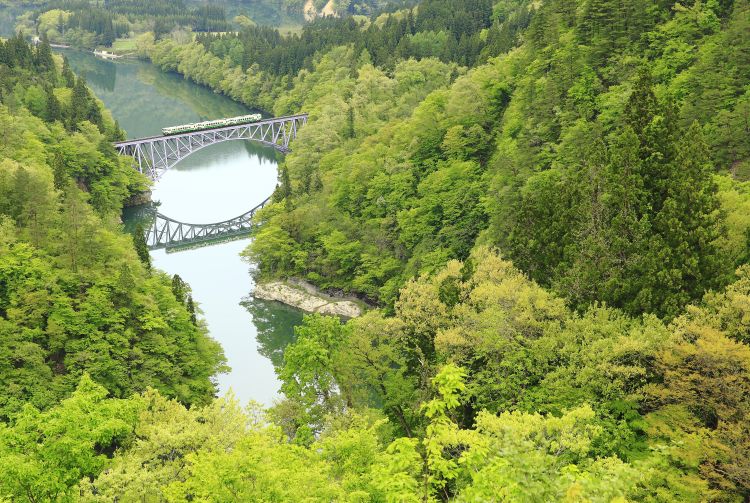
How do I use it?
When you arrive to Japan, you can pick up your pass or exchange your voucher at a designated pickup location. Make sure to have your passport, temporary visitor stamp or sticker and your exchange order or reservation number ready before you arrive at the counter to ensure a smooth exchange. Once you receive your JR Pass, you can start using the trains. The JR Pass itself is your ticket, and you can sit in any of the available seats of the non-reserved seat cars except when you reserve a seat, in which case you are issued a seat ticket.
You can make reservations on most shinkansen and other long-distance travel (like limited express trains) for no extra cost with your JR Pass. Making seat reservations is a good idea, especially if you're traveling during peak times and seasons, or riding the first or last trains of the day.
Some trains, including the fastest shinkansen like the Hayabusa (Tohoku Shinkansen), and Kagayaki (Hokuriku Shinkansen), certain limited express trains and some popular sightseeing trains don't offer non-reserved seats, so seat reservations are mandatory. Seat selection is generally not available on local and urban trains, but some quick web research will help you to confirm.
JR Pass holders can now use the automatic gates at stations when available, and if you have additional tickets you can stack them and feed them into the machine at once.
Travel tip: if traveling in the direction of Kyoto and Osaka from Tokyo on the shinkansen, reserve a window seat on the right for a view of Mt. Fuji.
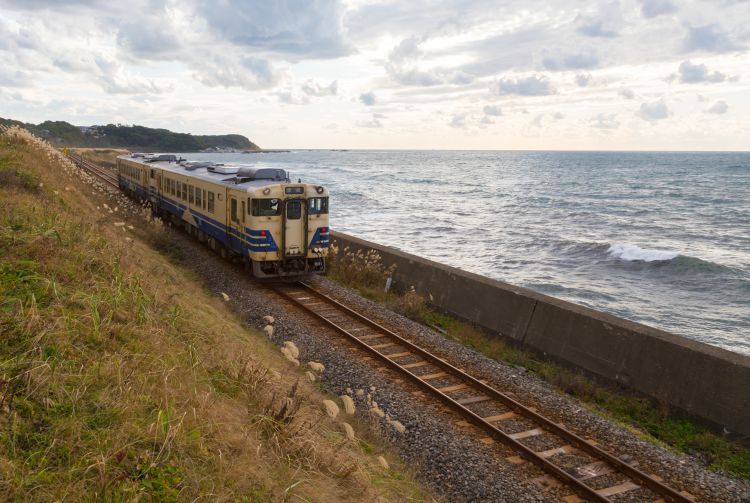
So, should I buy it?
If you're hoping to cover a lot of ground, want to use the shinkansen for day trips, or even if you'd prefer to avoid air travel, toll roads, highways, and long-distance buses, the JR Pass might be a good investment. However, if you choose to spend most of your time exploring Tokyo or Osaka, it may be wise to look into subway passes, or area rail passes.
The potential disadvantage to owning a JR Pass might be trying to squeeze too much into your itinerary to maximize your discount or, the opposite: buying a pass and not using it to its full potential. Both of these scenarios can be avoided with a little planning.

Even rural spots are within reach
JR Pass alternatives
Regional JR passes offer unlimited rides in specific areas. If you plan to travel extensively through Western Japan (Kyoto, Osaka, Hiroshima, etc.), consider JR-West Rail Passes. If you'd like to focus your travel on the eastern parts (Tokyo, Nagano, Niigata, and Tohoku), look into the JR East Pass.
The latest information may differ, so please check the official website.
* The information on this page may be subject to change due to COVID-19.
- Bullet Train
- Travel Information
- Travel Deals
- Travel Passes
- Travel Tips
Did this information help you?
out of found this information helpful.
Thank you for your feedback.
Recommended for you.
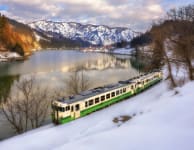
Please Choose Your Language
Browse the JNTO site in one of multiple languages
Nomadic Matt's Travel Site
Travel Better, Cheaper, Longer
The Perfect 7-Day Japan Itinerary for First-Time Visitors

Japan captured my heart from the moment I firs visited. The delicious food, the rich culture, breathtaking landscapes, vibrant history, and the very friendly and polite people – it all blew my mind.
But Japan often feels impenetrable, especially to first-time visitors. While I think Japan deserves a minimum of 10 days, I get that some people might only have a week, so I wanted to write this, my ideal seven-day itinerary for Japan for a first-time visitor.
With only a week, there’s not much you can see unless you really rush it. And I don’t think you should do that.
So this itinerary only focuses on Tokyo and Kyoto (the most popular destinations) as well as some day trips from each. If you wanted to rush things a little, you could add in Osaka (more on that at the end).
(Note: If you purchased a Japan Rail Pass , activate it on arrival. That way, you can take advantage of the free JR trains throughout the city.)
Table of Contents
Japan Itinerary Day 1: Tokyo
Japan itinerary day 2: tokyo, japan itinerary day 3: tokyo, japan itinerary day 4: kyoto, japan itinerary day 5: kyoto, japan itinerary day 6: nara, japan itinerary day 7: tokyo, an alternative itinerary.

Tsukiji and Toyosu Fish Markets Cure your jet lag with some food! In 2018, Tokyo’s main fish market moved to Toyosu. It is now twice the size of Tsukiji (the old one), making it the largest such market in the world. Here you can eat fresh sushi for breakfast, just a few feet from where it was hauled in from the sea, while marveling at the chaotic atmosphere.
You can still head to the old market in Tsukiji to eat, shop, and wander as well. I like it a lot, because there are more food options! Food and drink tours of the Tsukiji Outer Market are available for around 15,000 JPY.
Toyosu Fish Market is open Monday-Saturday 5am-5pm, though most shops don’t open until 7am. Admission is free, but you have to pick up a visitor’s pass when you enter. Tsukiji Fish Market’s hours vary by shop (usually 5am-2pm). Admission is free.
teamLab Planets This digital art installation is a multi-sensory and immersive experience in which you become part of the artwork, walking barefoot through the four exhibition spaces and gardens as you interact with the installations’ elements in unique ways. It’s really fun! TeamLab is generally sells out in advance, so I recommend getting your tickets online ahead of time .
Take a walking tour Walking tours are a great way to get the lay of the land while connecting with a local guide. I always go on one or two when I arrive somewhere. Tokyo Localized offers many free tours, including a classic overview and ones of both the famed Harajuku and Shinjuku neighborhoods. Its Imperial Palace tour would be the most convenient one after teamLab.
The Imperial Palace Formerly Edo Castle, the Imperial Palace was built in the 15th century, and some of the walls and moats from that time are still in use to this day. When the emperor moved from Kyoto to Tokyo in 1869, he took Edo for his new palace and renamed it. While you can’t go inside, it is surrounded by beautiful grounds, a moat, and a park worth wandering through. You can also see the changing-of-the-guard ceremony (though it’s relatively low-key and unassuming). Admission to the grounds is free.
Shinjuku Gyoen National Garden This park is over 144 acres and home to some 20,000 trees. Most of the original park was destroyed in World War II but was rebuilt and reopened in 1949. During spring, it is one of the best places to see cherry blossoms. My favorite area is the landscape garden, which has several ponds with bridges and islands. It’s a peaceful oasis away from the urban hustle and bustle.
Depending on how you feel relative to your jetlag, you could fit a few more activities before you end your day. Check out this post for suggestions .

- Senso-ji – This is Tokyo’s most popular and famous temple. Beautifully painted, it sits in a scenic spot near a pagoda and the lovely Kaminari Gate. There’s a huge statue of Kannon, the goddess of mercy, inside the main hall. It’s very busy during the day, so maybe check out the grounds in the evening.
- Asakusa Shrine – This nearby Shinto shrine is much more peaceful, with fewer visitors, but with people praying, meditating, or performing traditional rituals. It was built during the Edo period (1603–1868) and survived the air raids of World War II.
Afterward, head to Ueno Park . Spanning over 133 acres, Ueno Park was established in 1873 on land formerly owned by a 17th-century Buddhist temple. It gets super busy in cherry blossom season, as there are over a thousand trees here. Throughout, you’ll find various stalls and vendors selling snacks, drinks, and souvenirs. On weekends, there are usually cultural events or festivals showcasing traditional arts, music, and dance. Four of Tokyo’s main museums are here:
- Tokyo National Museum – Established in 1872 on the north end, this massive building is the oldest and largest art museum in Japan. It houses one of the world’s largest collections of art and artifacts from Asia, particularly Japan.
- Tokyo Metropolitan Art Museum – This museum showcases rotating exhibitions of contemporary and traditional Japanese art.
- National Museum of Nature and Science – This museum features a wide range of permanent and temporary exhibitions covering natural science and history.
- Tosho-gu Shrine – This beautiful 17th-century Shinto shrine has carved gold doors and other ornate carvings. It’s worth seeing up close!
Afterward, walk down to Akihabara to explore the video game parlors, arcades, and anime shops. This very buzzy area is ground zero for all things electronic, and it’s fun to play many of the games. This is where you’ll find the famous maid cafés, where servers dress up as maids and serve you food and drinks. These range from big touristy ones to holes-in-the-wall (the girls on the street are promoting the latter, which are a lot more culturally fun). They aren’t cheap, though, as you have to buy drink packages and pay a fee, but they’re kitschy and fun.
In the evening, visit Shinjuku and then drink in Golden Gai . In Shinjuku, you’ll find a plethora of cool bars, bright lights, and tiny hole-in-the-wall eateries. Be sure to wander down Memory Lane (aka Piss Alley) for tiny izakaya joints and bars. Afterward, head over to Golden Gai, a warren of narrow alleyways with a bit of a red-light-district feel, flanked by diminutive backstreet bars. It’s quite touristy but also a lot of fun. I’ve had some wild nights here!
With Arigato Tours , you’ll learn about the neighborhood while stopping to sample Japanese classics like sushi, yakitori, and ramen. The 23,900 JPY cost includes a drink and dishes at four stops.

Kamakura Here you can see a 13-meter (43-foot) bronze statue of Buddha that was built in 1252. It was initially constructed within Kotoku-in Temple, but that has since been washed away by several storms, so it now sits in the open air. Admission to enter the temple grounds is 300 JPY, while it’s 20 JPY to go inside the statue. The journey there — around an hour — is free with a Japan Rail Pass .
Tokyo Disneyland I’m a sucker for Disney. You’ll find many of the same classic rides from Disney World here, like Splash Mountain, Big Thunder Mountain, The Haunted Mansion, and everyone’s favorite teacup ride, The Mad Tea Party. But there are several unique attractions as well, like Pooh’s Hunny Hunt and Journey to the Center of the Earth.
Ticket prices vary depending on the day and time, but full-day admission begins at 7,900 JPY for adults and 4,400-6,200 JPY for children. It’s best to book in advance .
Mount Fuji Mount Fuji is located an hour outside of Tokyo. An active stratovolcano (which last erupted in 1708) and covered in snow for almost half of the year, it stands an impressive 3,776 meters (12,389 feet) and provides one of the most iconic views in the country. One of the Three Holy Mountains of Japan, Mount Fuji is both a Special Place of Scenic Beauty and a UNESCO Cultural Site. In the summer, the mountain is open to hikers, who take 5-12 hours to reach the summit (traditionally, they depart at night to arrive at the top for the sunrise).
If you don’t want to hike, you can simply visit on a day trip. There are buses that can take you partway up, where you’ll be offered sweeping vistas of the surrounding area. Guided day tours from the city cost around 12,000 JPY.

Wander the Bamboo Forest For a relaxing break, head to Arashiyama and let the dense and towering stands of bamboo envelop you. Located near the famous Tenryu-ji temple, it’s one of the most beautiful places in the entire country. It’s not that big, but there are some hidden areas to explore. Just make sure to arrive early if you want to enjoy it without the crowds (it fills up fast after sunrise).
While there, I would also recommend visiting the Okochi Sanso Garden, which (along with the home) belonged to the famous Japanese actor Denjir? ?k?chi (1898–1962). It’s not free (it’s 1,000 JPY), but it’s really nice and has some wonderful views.
Visit the Golden Pavilion Originally built in the late 14th century as a retirement villa for the shogun (military governor), this iconic structure was later converted into a Zen Buddhist temple. The present-day edifice dates only to the 1950s, however, when a monk attempting to kill himself burned the historic original to the ground. The rebuilt temple is covered in brilliant gold leaf, symbolizing purity and enlightenment. Each of the three stories exhibits a different architectural style. Completing the scene are the serene reflecting pool and traditional Japanese gardens that contain lush foliage, manicured trees, and scenic walking paths.
1 Kinkakuji-cho, Kita-ku, Kyoto-shi, Kyoto, +81 075-461-0013, shokoku-ji.jp. Open daily 9am-5pm. Admission is 500 JPY.
Admire Ryoan-ji Temple This is my favorite temple in Kyoto. Originally established in 1450 as a residence for a high-ranking samurai, it was soon converted into a Zen temple and is now a UNESCO World Heritage Site, with a mausoleum that houses the remains of seven emperors. Its traditional rock and sand garden is considered one of the best in the country. There’s also a teahouse where you can experience the traditional Japanese tea ceremony ( chanoyu ) as you overlook the Kyoyochi reflecting pool.
There are other temples in the area to check out as well:
- Daitoku-ji Temple – This massive complex dating back to 1315 covers almost 60 acres. It contains several dozen temples and is a good place to see a variety of Zen gardens and architectural styles. It’s also deeply linked to the Japanese tea ceremony, as several of the country’s most noteworthy masters studied here.
- Toji Temple – This is home to Japan’s tallest pagoda (five stories high). Founded in 796, just after Kyoto became the capital, it was one of only three Buddhist temples allowed in the city.
Go on a sake brewery tour Kyoto has a sake (rice wine) brewing tradition going back 400 years and is known for some of the best in the world, due to using the area’s pure natural spring water in the brewing process. Arigato Tours offers an excellent three-hour tour of Fushimi (the brewing district) for 23,320 JPY, including stops at several breweries, a guided tour of the Gekkeikan Okura Sake Museum, and tastings.

See the Fushimi Inari Shrine This mountainside Shinto shrine, dating back to 711, is dedicated to Inari, the god of rice and prosperity. It’s known for its thousands of vibrant orange torii gates that form a network of trails leading up Mount Inari. You can hike the trails on your own while enjoying panoramic views of Kyoto below or join a guided hiking tour , on which you’ll get off the paved paths and into hidden bamboo groves. Get here as early as possible to avoid the crowds.
68 Fukakusa Yabunouchicho, +81756417331, inari.jp. Open 24/7. Admission is free.
Walk around Higashiyama Spend an afternoon walking along the narrow streets of one of the oldest and best preserved districts on your own or on a walking tour . The traditional machiya buildings (traditional wooden townhouses) are filled with small shops selling local specialties and handicrafts, as well as restaurants and teahouses. It’s a popular area in which to participate in a tea ceremony . Another nice place to stroll in this neighborhood is the Philosopher’s Path, which follows a cherry-tree-lined canal that’s beautiful and meditative even when the blossoms aren’t in season.
Visit Kiyomizu-dera One of a number of UNESCO sites in ancient Kyoto, Kiyomizu-dera (meaning “pure water temple”) is located in the foothills of Mount Otowa in the eastern part of the city. It’s one of the most famous temples in all of Japan. It was established in 778, but most of the existing buildings date to the 17th century. There’s not a single nail used in the construction, which becomes all the more impressive once you see how large the temple is, which is best known for its wooden terrace that juts out over the hillside. The temple’s name comes from the nearby waterfall whose waters (from which you can still drink today) are said to have wish-granting and healing powers.
1 Chome-294 Kiyomizu, +81 75-551-1234, kiyomizudera.or.jp. Open daily 6am-6pm. Admission is 400 JPY.
Explore Shorin-ji Temple This small temple dates back to the 16th century. What makes it worth visiting is its meditation classes. You’ll get to tour the temple and then be instructed in zazen , the Japanese style of meditation. It’s a very unique experience and something that I think will add a lot of depth and nuance to your visit (especially if you’ve seen a lot of temples). Just make sure to dress comfortably.
15 Chome-795 Honmachi, +81 75-561-4311, shourin-ji.org. Open daily 10am-4pm. Admission is 800 JPY.
Wander the Nishiki Market Nishiki Ichiba is now one of the biggest indoor markets in town. Known as “Kyoto’s Kitchen” and spanning over five blocks, it is full of vendors selling traditional dishes from the region, classic Kyoto souvenirs, and really just about anything else. There are over a hundred stalls here, many of which have been in the same family for generations. Opening hours depend on the shop but are typically from 9am to 6pm.
To dive deeper into Japanese food culture, you can take a food tour of the market . It’s the best way to learn about all the food you’ll see, as well as the market’s history.
Explore Gion Gion, the historic geisha district, is renowned as being one of the most iconic and atmospheric areas of town. It’s known for its traditional wooden machiya houses, narrow alleyways, cobblestone streets, and preservation of geisha (known locally as geiko) culture. Lining the main street are ochayas (teahouses where geishas entertain), small shops, and many restaurants, ranging from upscale kaiseki restaurants serving traditional Kyoto cuisine to casual eateries.
To really learn more about this amazing party of town and its past, take a walking tour of Gion . You’ll learn a ton and get a lot of context. They cost around 1,800 JPY.
At night, go to the Pontocho Row , a narrow street lined with restaurants, hole-in-the-wall bars, and jazz clubs. It’s one of the more lively areas in Kyoto.

Nara was the capital of Japan in the eighth century, so there are lots of buildings and temples here that are upwards of a thousand years old (which is rare in Japan, due to the prevalence of fires and earthquakes, as well as World War II). Some things to do:
- Frolic with deer – The real draw in Nara are the deer. Since the 17th century, those in and around the city have been considered sacred. You can buy crackers to feed them or just watch them stroll around carefree.
- See the Buddha – Don’t miss a visit to Todai-ji, the world’s largest wooden building, home to a 16-meter (52-foot) Buddha statue. It was built in 738 and is now a UNESCO World Heritage Site.
- Take a walking tour – This guided half-day walking tour for 11,500 JPY includes all of Nara’s highlights as well as a traditional lunch.

Ryogoku Kokugikan, Japan’s most famous sumo wrestling arena, hosts tournaments three times each year, in January, May, and September. Tickets sell out quickly, so book online in advance. Prices vary but start around 3,200 JPY for arena seats. You can book a ticket online here (you’ll be accompanied by a guide too, so you can learn more about the tradition as it unfolds before your eyes).
To learn more about the sport in in the off-season, book a tour of a sumo stable .

So, if you want to add another city to this itinerary you can follow this breakdown:
- Days 1 & 2: Tokyo
- Days 3 & 4: Kyoto
- Day 5: Nara
- Days 6 & 7: Osaka
Tokyo, Kyoto, and Nara are all covered above. As for Osaka, some of my favorite things to see and do:
Take a food tour Known as “the Kitchen of Japan,” Osaka boasts a diverse culinary scene. Mouthwatering sushi and sashimi, Kobe beef and Japanese BBQ, and flavorful ramen can all be found here in abundance. Plus, there are local specialties like okonomiyaki (a savory pancake with egg and vegetables) and kushikatsu (kebab skewers). You can take a food tour for around 13,000 JPY, a ramen and gyoza cooking class for 9,500 JPY, or just wander and eat.
Osaka Castle One of the most famous landmarks in the country, the castle was originally built in the late 16th century by Toyotomi Hideyoshi and played a pivotal role in the unification of Japan during the Sengoku period (1467-1615). Over the centuries, it has been destroyed and rebuilt multiple times due to wars, fires, and natural disasters. The current version dates to 1931. The castle is situated amid sprawling grounds and surrounded by a moat. It’s also home to a small but insightful museum and an observation deck that offers some picturesque urban views.
Dotonbori This is arguably Osaka’s most iconic district, known for its vibrant nightlife (bars, clubs, theaters, and music venues), colorful signage, and delicious food. It’s best seen at night due to the plethora of huge neon lights and signs lining both the canal and streets, which have become symbols of Osaka’s nightlife. A guided walking tour that includes Dotonbori as well adjacent neighborhoods is 6,500 JPY.
Shitennoji Temple This temple is one of the oldest Buddhist temples in Japan, founded in 593. The architecture is a blend of traditional Japanese and East Asian styles, featuring impressive pagodas, gates, and shrines set amid serene gardens. Stroll through the tranquil grounds, admire the beautiful architecture, and learn about the temple’s historical and cultural significance at the museum. The temple is 300 JPY to enter, the garden is 300 JPY, and the museum is 500 JPY.
Japan is one of my favorite countries. While it’s relatively small, it offers an amazing array of things to see and do (as well as some of the best food in the world). With seven days, you can easily see a good number of the main highlights and get a taste for the incredible history and culture. It will be a busy week, but this itinerary ensures you’ll still have some time to slow down, relax, and take in the local pace of life.
Just make sure you get a Japan Rail Pass before you go. While it’s not as cheap as it used to be, it will likely save you time and money!
Book Your Trip to Japan: Logistical Tips and Tricks
Book Your Flight Find a cheap flight by using Skyscanner . They are my two favorite search engines, because they search websites and airlines around the globe, so you always know no stone is being left unturned!
Book Your Accommodation You can book your hostel with Hostelworld as they have the most comprehensive inventory so they are best for booking a hostel. If you want to stay in a hotel or guesthouse in Japan, use Booking.com as it consistently returns the cheapest rates for guesthouses and hotels.
Don’t Forget Travel Insurance Travel insurance will protect you against illness, injury, theft, and cancelations. It’s comprehensive protection in case anything goes wrong. I never go on a trip without it, as I’ve had to use it many times in the past. My favorite companies that offer the best service and value are:
- Safety Wing (best for everyone)
- Insure My Trip (for those over 70)
- Medjet (for additional evacuation coverage)
Looking for the Best Companies to Save Money With? Check out my resource page for the best companies to use when you travel! I list all the ones I use to save money when I travel — and I think they will help you too!
Be sure to check out the Japan Rail Pass if you’ll be traveling around the country. It comes in 7-, 14-, and 21-day passes and can save you a ton of money!
Looking for More Travel Tips for Japan? Check out my in-depth Japan travel guide for more ways to save money, information on costs, tips on what to see and do, suggested itineraries and reading and packing lists, and much, much more!
Got a comment on this article? Join the conversation on Facebook , Instagram , or Twitter and share your thoughts!
Disclosure: Please note that some of the links above may be affiliate links, and at no additional cost to you, I earn a commission if you make a purchase. I recommend only products and companies I use and the income goes to keeping the site community supported and ad free.
Related Posts

Get my best stuff sent straight to you!
Pin it on pinterest.
- Travel recommendations
- The taste of travel
- Tips & tricks
- Travel experiences

The ultimate Japan itinerary for first-timers

Japan is one of the most fascinating countries you could visit but travelers are often overwhelmed to put together a Japan itinerary. Lucky for you I just returned from an epic trip and will share my best tips with you.
Whether you have a week, 10 days or want to combine both into a 2 week Japan itinerary - this article has you covered. I share some amazing places to see , where to stay, and how to plan a road trip in Japan.
In this article
How to get to Japan?
What is the best mode of transport for your japan itinerary, best time for your japan itinerary, average budget for your japan itinerary, japan itinerary 7 days - from tokyo to the mountains, japan itinerary 10 days - kansai & beyond.
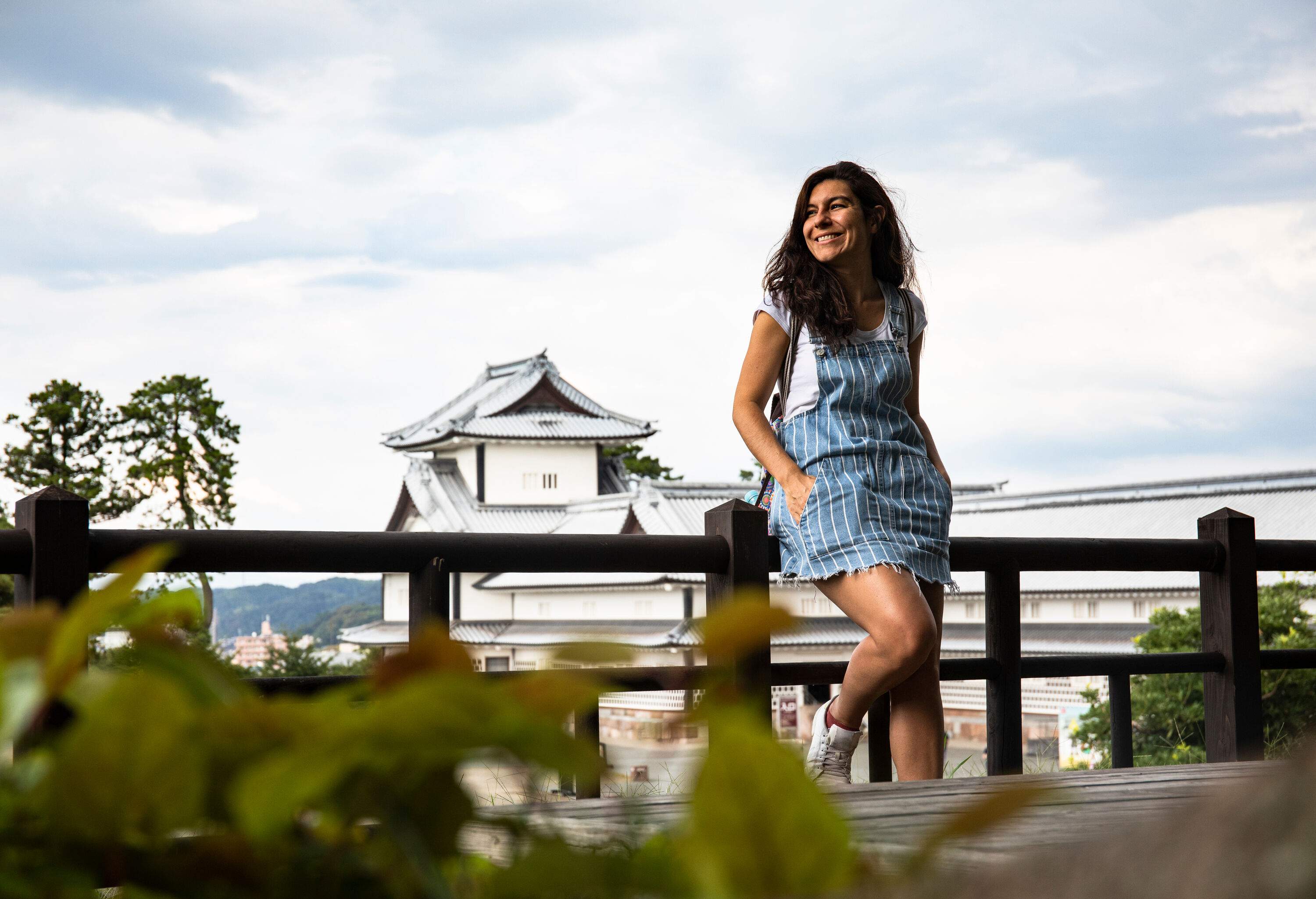
Japan has a few international airports and some you can even reach with a direct flight from the US. A direct flight from NYC to Tokyo cost $1,546 on average and from LAX to Tokyo $1,019 (Data sourced through KAYAK comparator search tool).
When flying in or out of Tokyo you have the choice between airports Haneda and Narita . Depending on your Japan itinerary you may want to check for a direct flight to Osaka Kansai.
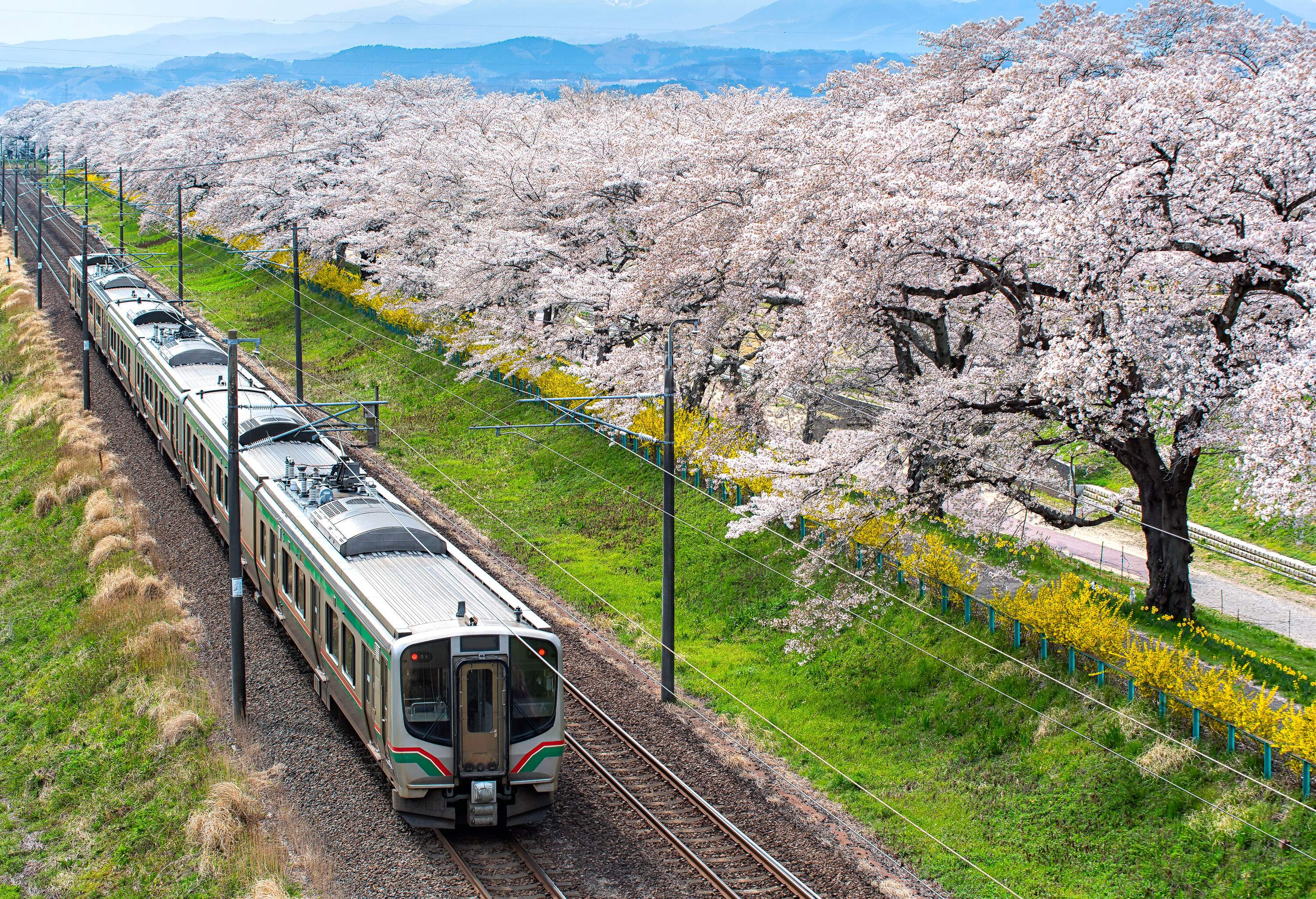
Most Japan itineraries can be done by car, train, or plane. Or a combination thereof. Budget and where you want to go will be deciding factors. In addition it is important to think about how many people will be traveling. Especially if you are planning a Japan itinerary for 14 days with the whole family, it might be cheaper to rent a car.
However you will need to get an International Driving Permit to legally drive in Japan. Also, there is left-hand traffic and the metric system to consider. Distances are shown in kilometers and speed in kilometers per hour (km/h). You can find more tips on driving in Japan as well as traffic laws on the website of the Japanese Automobile Federation .
According to the data we have compiled (based on travelers's searches on KAYAK), October is the most popular season for a trip to Japan. March and April are also strong contenders due to it being Sakura , cherry blossom season. While the weather is great for exploring during these months, hotel rooms will be more expensive and popular tourist spots are even more crowded than usual.
January, February and August are the least popular travel months in Japan. If you don’t mind heat and humidity, give August a go . For those traveling in winter, there are plenty of great ski resorts in Japan but you must be mindful of road conditions when getting a rental car.
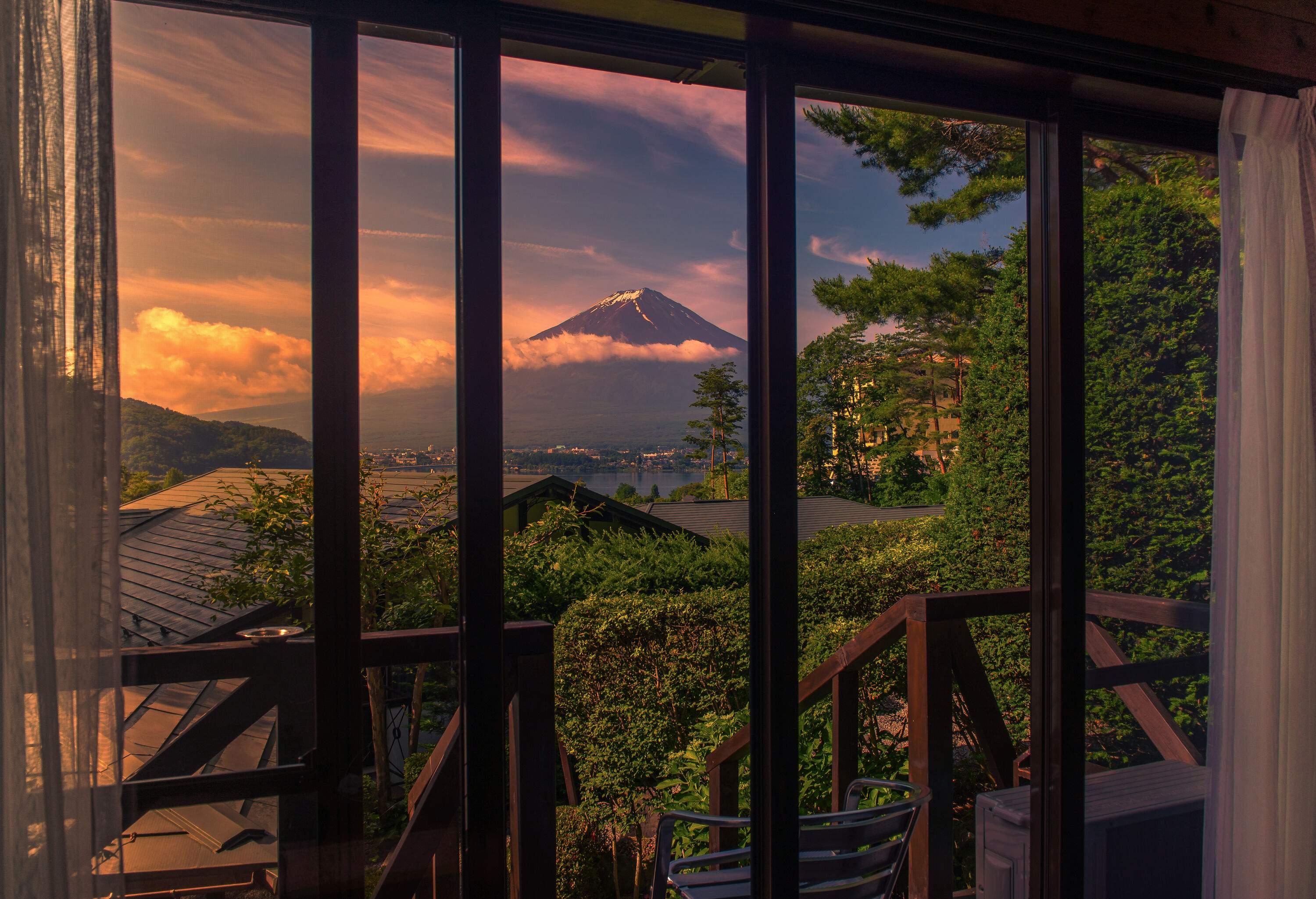
Before you book your flight to Japan, it is a good idea to put together your budget. If you are planning on renting a car for a road trip through Japan have a look at these average prices we have put together for you based on our data:
- Average price for a double room in Tokyo: $163 per night
- Average price of a bed in a hostel in Tokyo: $63 per night
- Average price of a rental car in Tokyo: $82 per day
- Price for a gallon of gas in Tokyo: $4.33*
*As of March 2024
For the 10-day Japan itinerary below, you will cover up to 300 miles and the total budget will be approximately $1100 per person based on two people sharing (not including flights). However, you may need to add a buffer for tolls which can be quite steep.
If you prefer to travel by train, the Japan Railpass is a great option to get around . However, it saw a recent price increase. Once you have mapped out your route it is a good idea to add up the individual trips on the Japan Railpass website and calculate whether it might be cheaper to buy single tickets.
The following Japan itineraries are planned around doing a road trip, and show distances and approximate travel times for cars.
Day 1-3: Tokyo
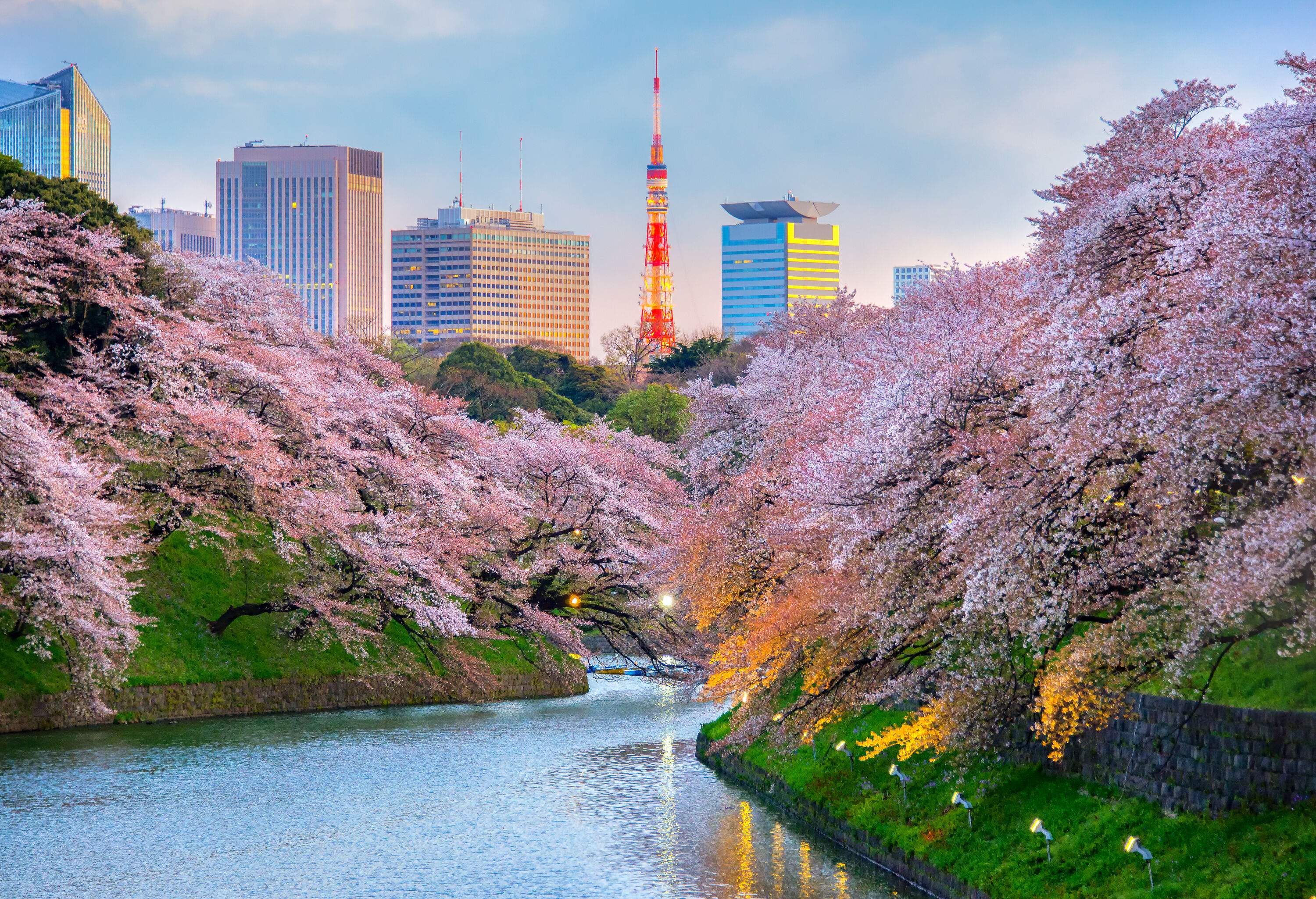
For most, a Japan travel itinerary starts in the country’s capital Tokyo. Chances are that jet lag means taking things a little slower but even without that, Tokyo is huge and there is so much to see . Take a few days to explore famous areas like Shibuya and Shinjuku, Ginza, and the historic Asakusa area.
Hotel in Tokyo : Hotel CEN , located a quirky yet residential area
teamLab is an international art collective that currently has two exhibitions in Tokyo. It merges technology, art and nature and integrates the visitors in a very unique way. While a bit hard to describe, their current shows are absolutely magical even if you are not usually a museum fan.
Gōtokuji Temple
Cat lovers have to take a trip to Gōtokuji Temple. It is said to be the home of the maneki-neko, the beckoning cat figurines that are known to bring luck. You can see them everywhere around the temple and of course there is a gift shop. The cats from the source have become so popular that sales are limited to one figurine per person.
Day 4: Hakone
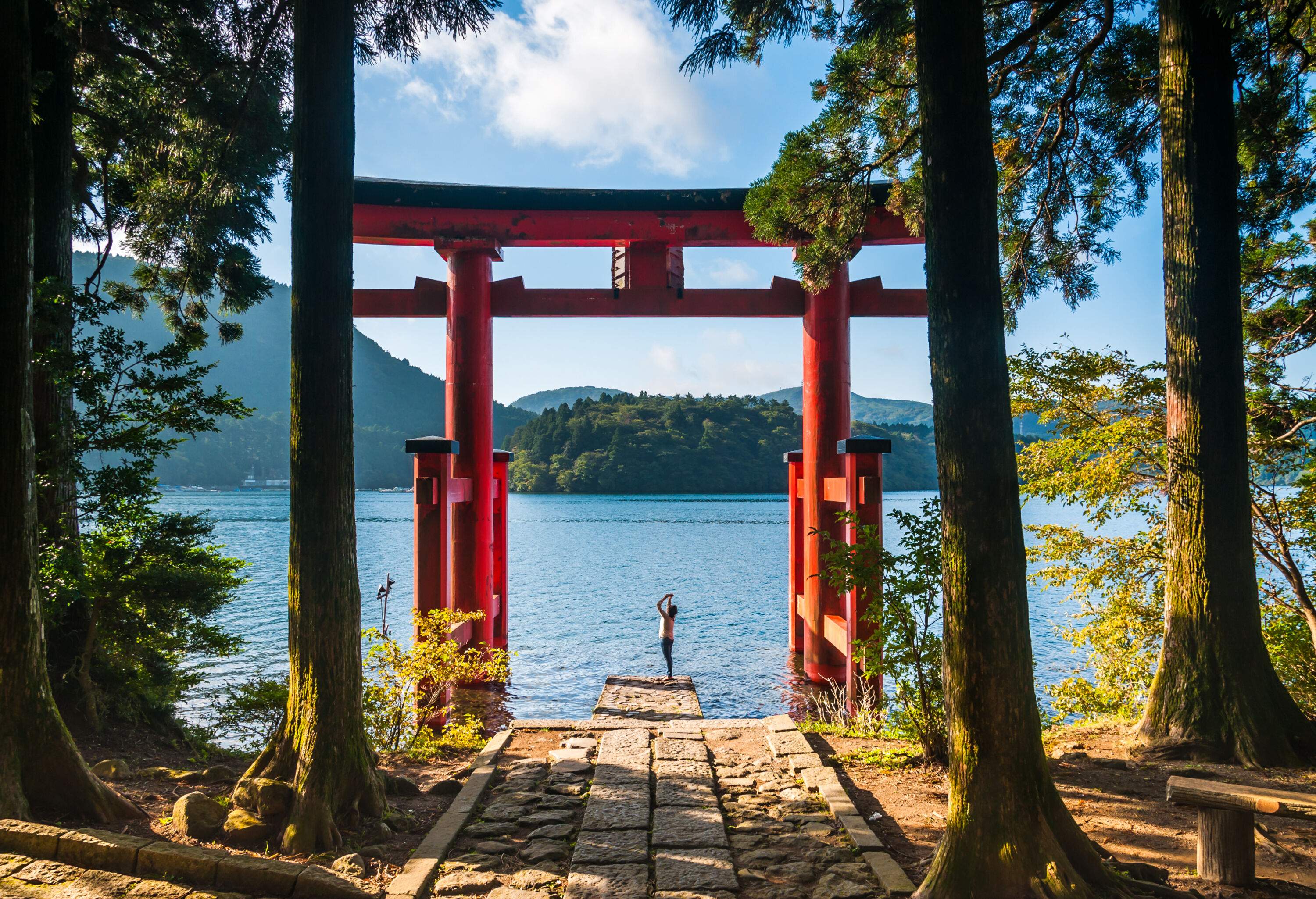
Distance from Tokyo: 50 mi - at least 1 hour
Not far from Tokyo, you find Hakone, a perfect place for a weekend getaway in nature . Over Lake Ashinoko you have a great view of Mount Fuji. After a day of exploring you can recharge in one of the town's many hot springs.
Hotel in Hakone : Fujiya Hotel , a beautiful historic accommodation
Hot springs, hot rivers, and egg-like smell: it is pretty obvious that Owakudani is an active volcanic zone! The area is located around the crater of Mount Hakone and there are various walking trails to explore. You can even buy eggs cooked in hot pools that are said to extend your life by seven years.
Lake Ashinoko
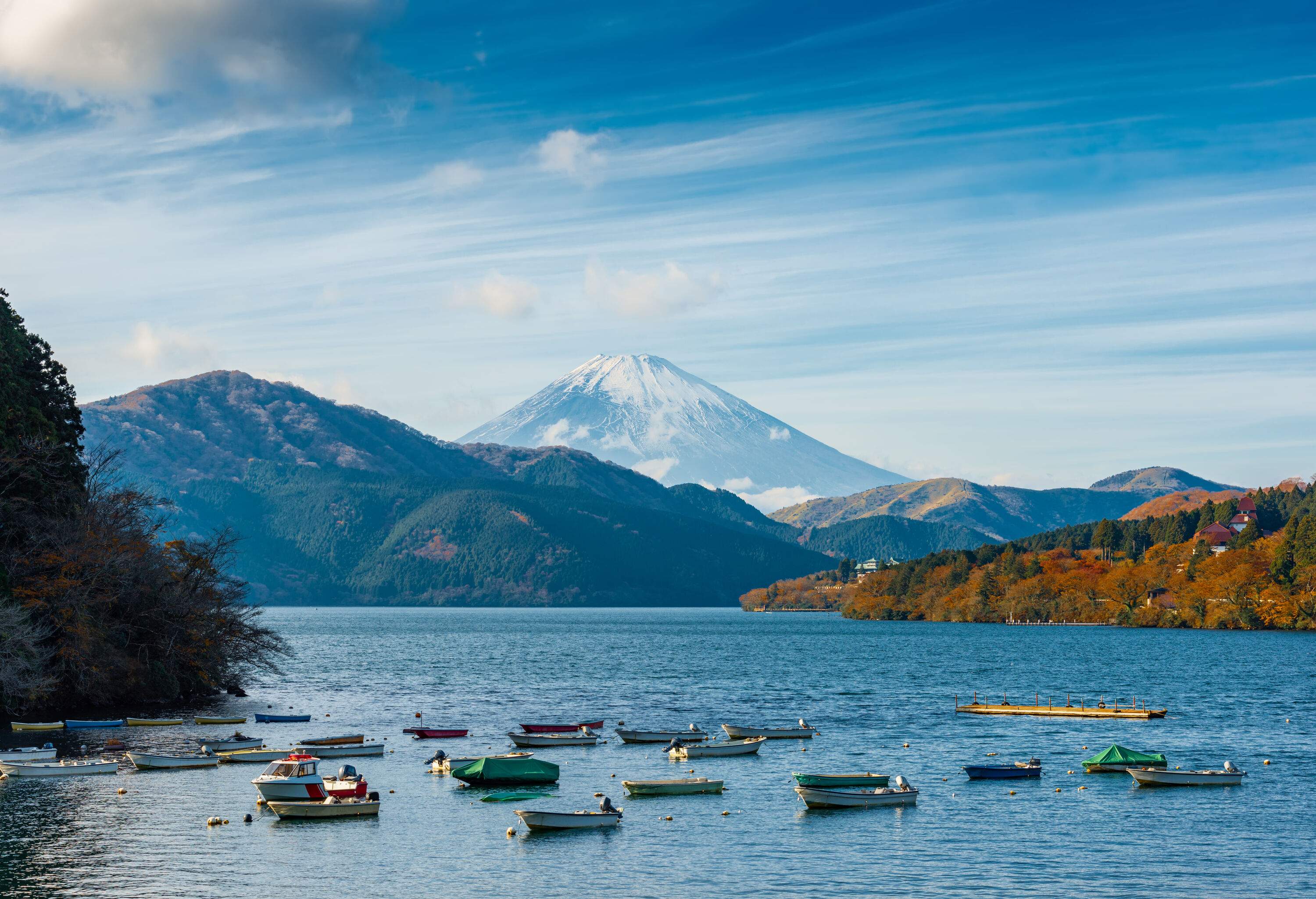
For some of the best Mount Fuji views head to the shore of Lake Ashinoko . You can take a sightseeing-boat over the lake or simply stroll along the shores. If seeing Mount Fuji in all its glory is a must, time your visit well: the cold season brings clearer skies.
Day 5: Matsumoto
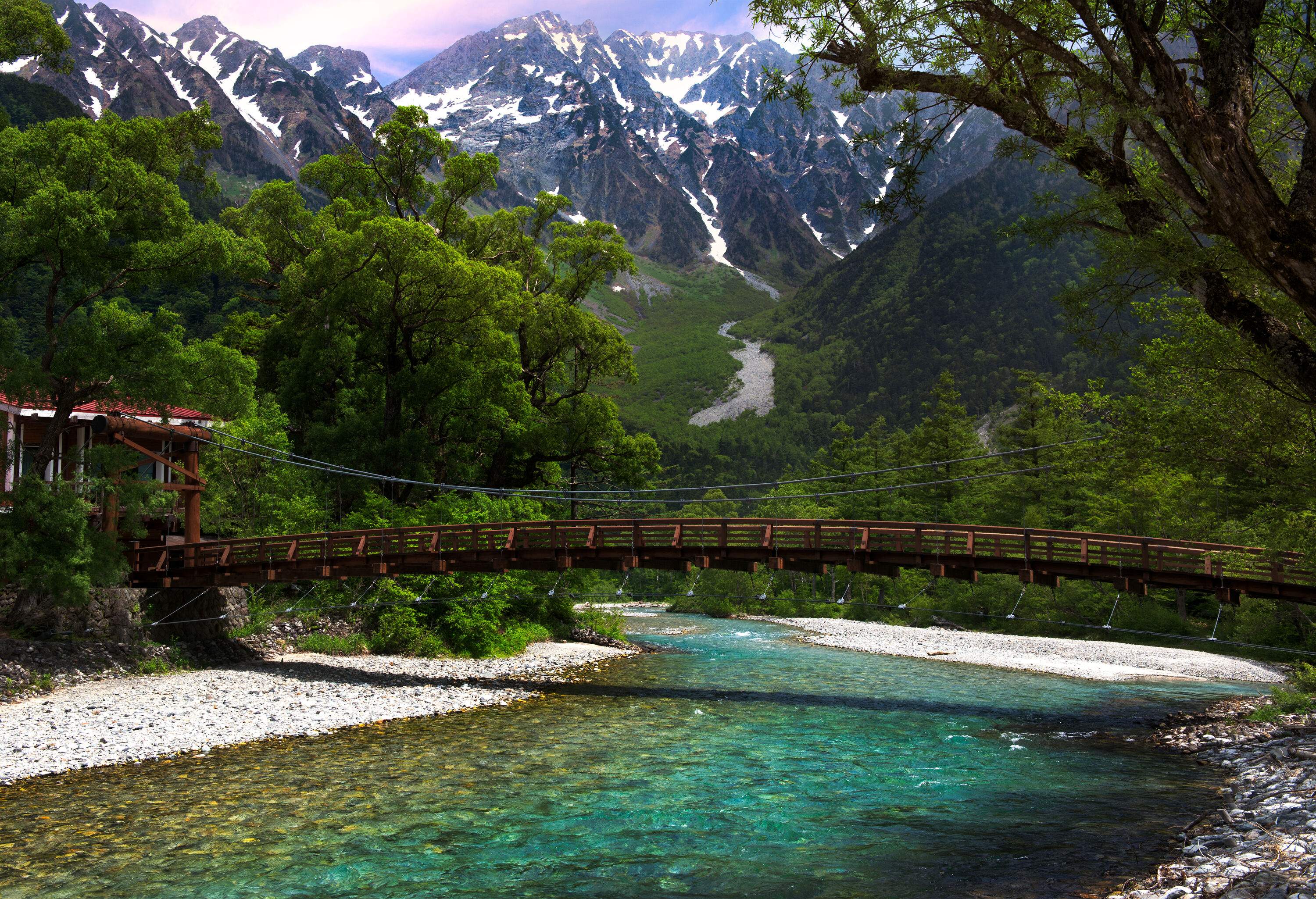
Distance from Hakone: 150 mi - 3 hours
Mountain lovers have come to the right place as Matsumoto is a great spot to explore the Japanese Alps . There are plenty of trips you can take from here to see various parts of the Alps, summer and winter. The city is also home to a few interesting museums and one of Japan’s most beautiful castles.
Hotel in Matsumoto : Onyado Nono , a stunning inexpensive hotel with a hot spring
Matsumoto Castle
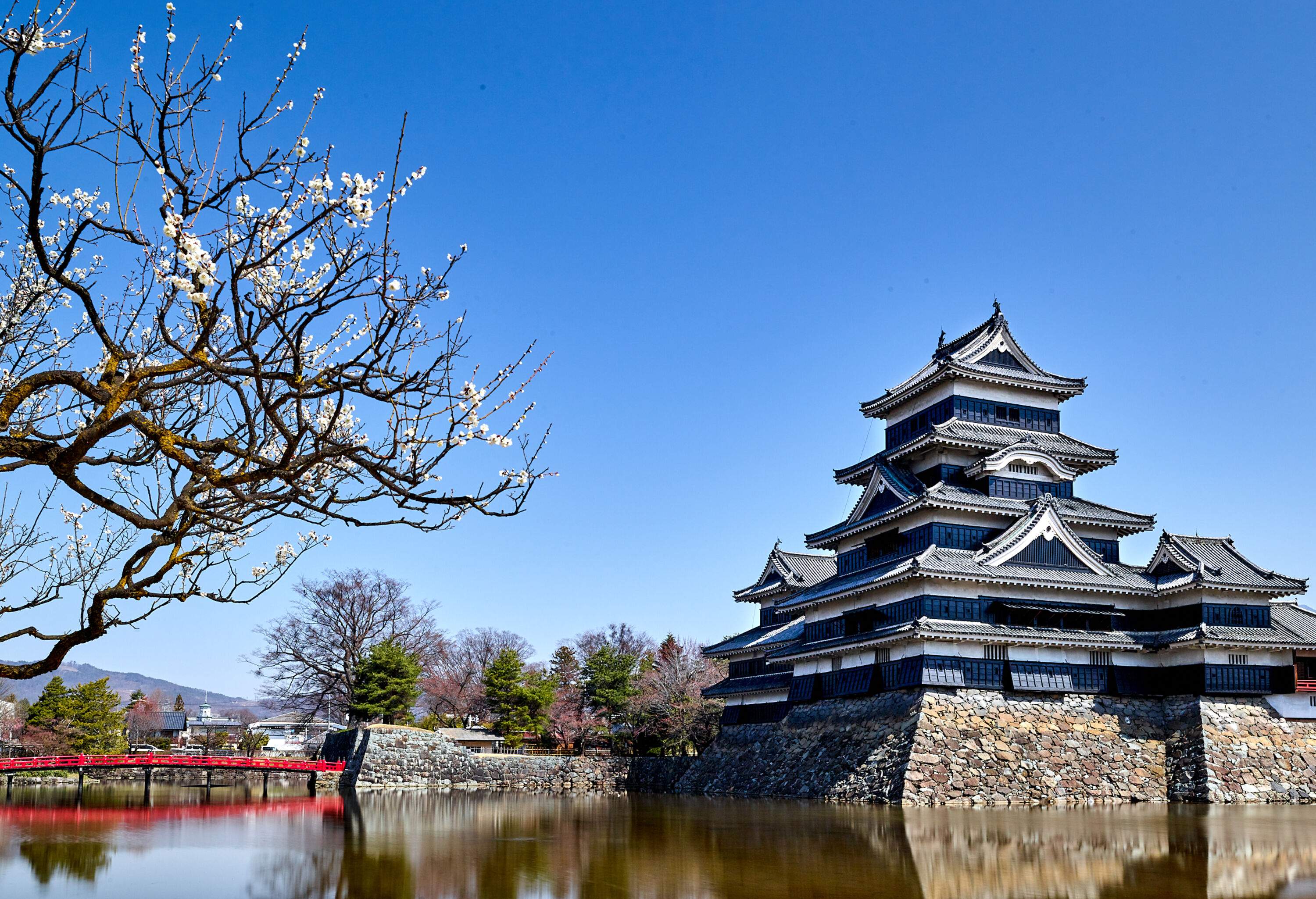
While some Japanese castles had to be rebuilt, Matsumoto is one of the most complete original castles. This is highlighted by the authentic wooden interior. Especially during cherry blossom season a stroll around the moat is a treat.
Daio Wasabi Farm
Some like it hot and if you do, the Daio Wasabi Farm is a place you should see. On the farm, you can visit a restaurant and many shops that sell anything from fresh wasabi root to wasabi beer and even wasabi chocolate.
Day 6+7: Shibu Onsen
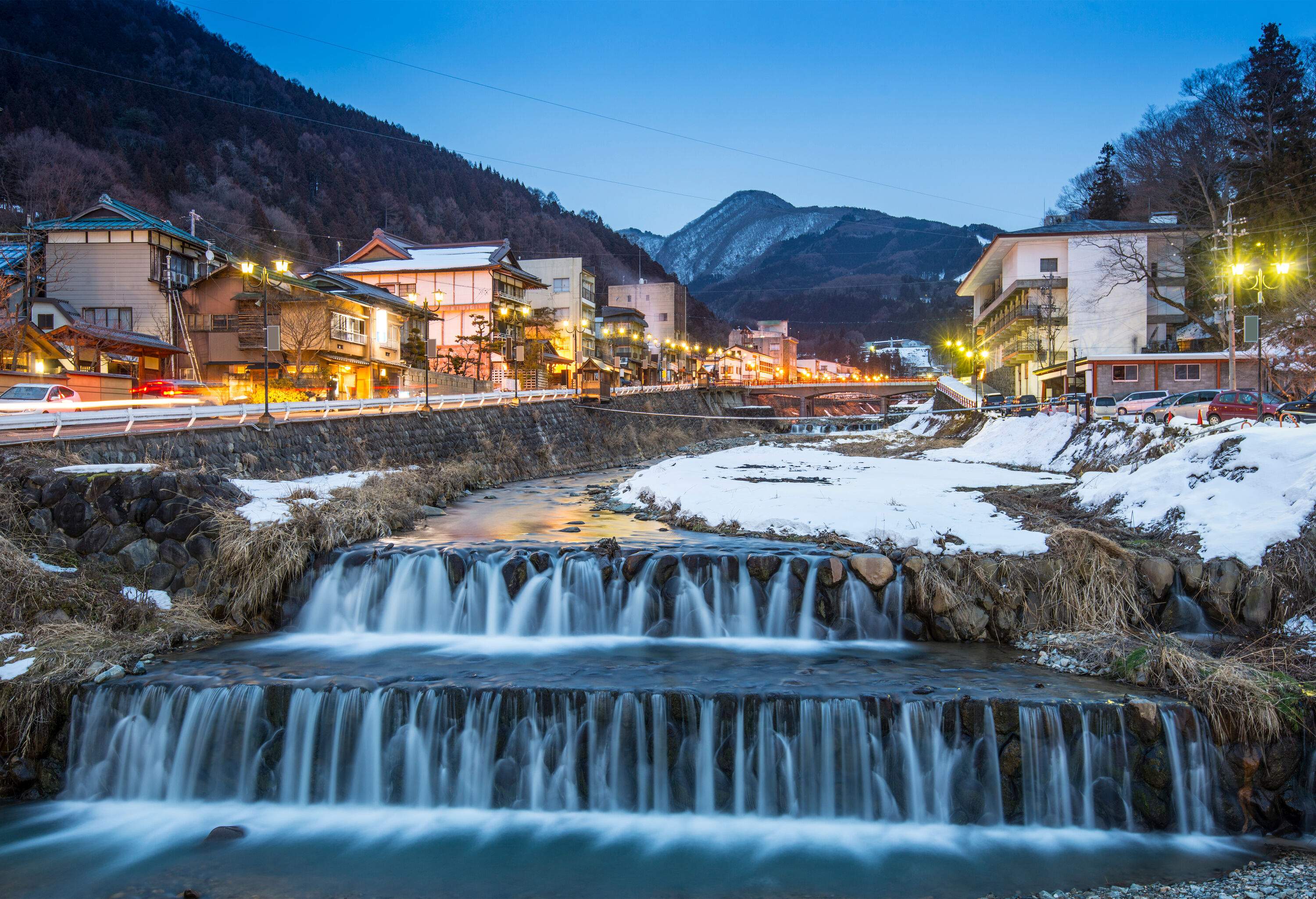
Distance from Matsumoto: 60 mi - 1.5 hours
Shibu Onsen is a picturesque historic hot spring town surrounded by mountains. Beautiful ryokans, the traditional Japanese inns, line the streets and are the perfect backdrop for a wellness holiday. Ryokan Kanaguya is said to have inspired the bathhouse of the beloved Studio Ghibli movie “Spirited Away”.
Hotel in Shibu Onsen: Kokuya , a stunning ryokan in the center of town
Visit nine public Onsen
There are nine public Onsen in town and you will need to stay overnight to get a key to visit. Visiting all nine brings good fortune! One thing to remember: tattoos are unfortunately a no-go in most Japanese Onsen. If you have some, check if your hotel has a private hot spring.
Jigokudani Monkey Park
It is best to come before March if you want to see the Japanese macaque or snow monkeys as they are called in Jigokudani. Only when it is cold do they come down to sit in a hot Onsen and chill, play and be adorable.
After your final night in Shibu Onsen you will drive back to Tokyo for your flight home. Make sure to check which airport you are flying out from (Narita or Haneda) and leave enough time to drop your rental car off, before checking in.
Day 1-3: Osaka
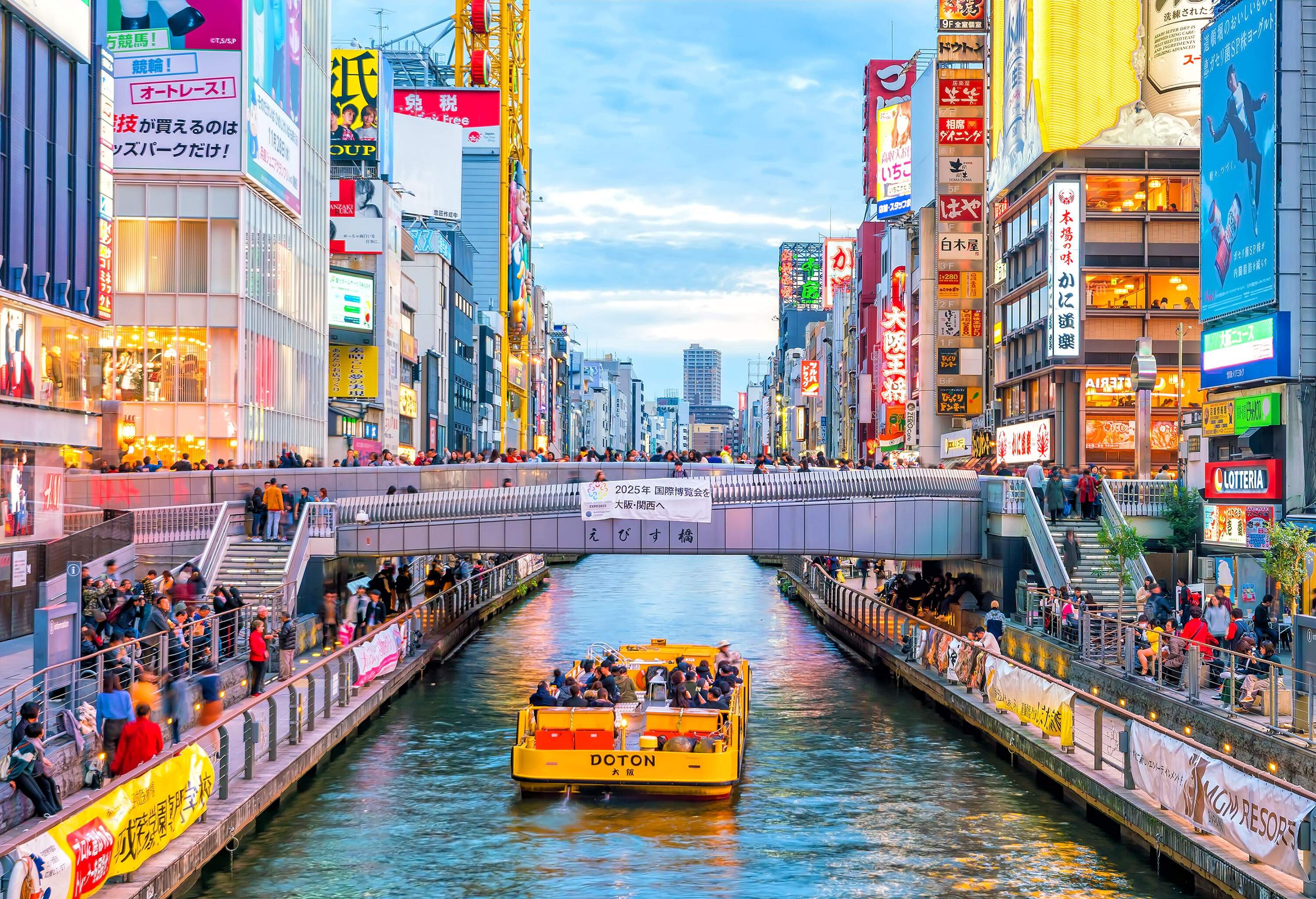
Osaka, Japan’s second biggest city, is known for its incredible food scene. Next to the usual staples, the city’s kitchens are best known for their Okonomiyaki, a pizza pancake mix, and Takayaki, yummy octopus balls. Dotonburi, Osaka’s nightlife center, is one of the best places to try them both.
Hotel in Osaka : Zentis , a member of Design Hotels with light and airy rooms
Another great area to explore is Shinsekai, meaning ‘new world’ when it was built in the early 20th century. The shopping and dining area centers around the Tsutenkaku Tower, modeled after the Eiffel Tower. Today a visit feels a bit like traveling back in time - but in a good way!
Osaka Castle
Osaka Castle was built in 1583 and became the largest castle at the time. Everything about it was meant to impress and impress it did. That was until its destruction first by Tokugawa troops and then by lightning. Today’s reconstruction was built in the 1930s but it is still a sight to behold. Osaka Castle is also one of the best hanami spots where you can see the cherry blossoms.
Day 4: Nara
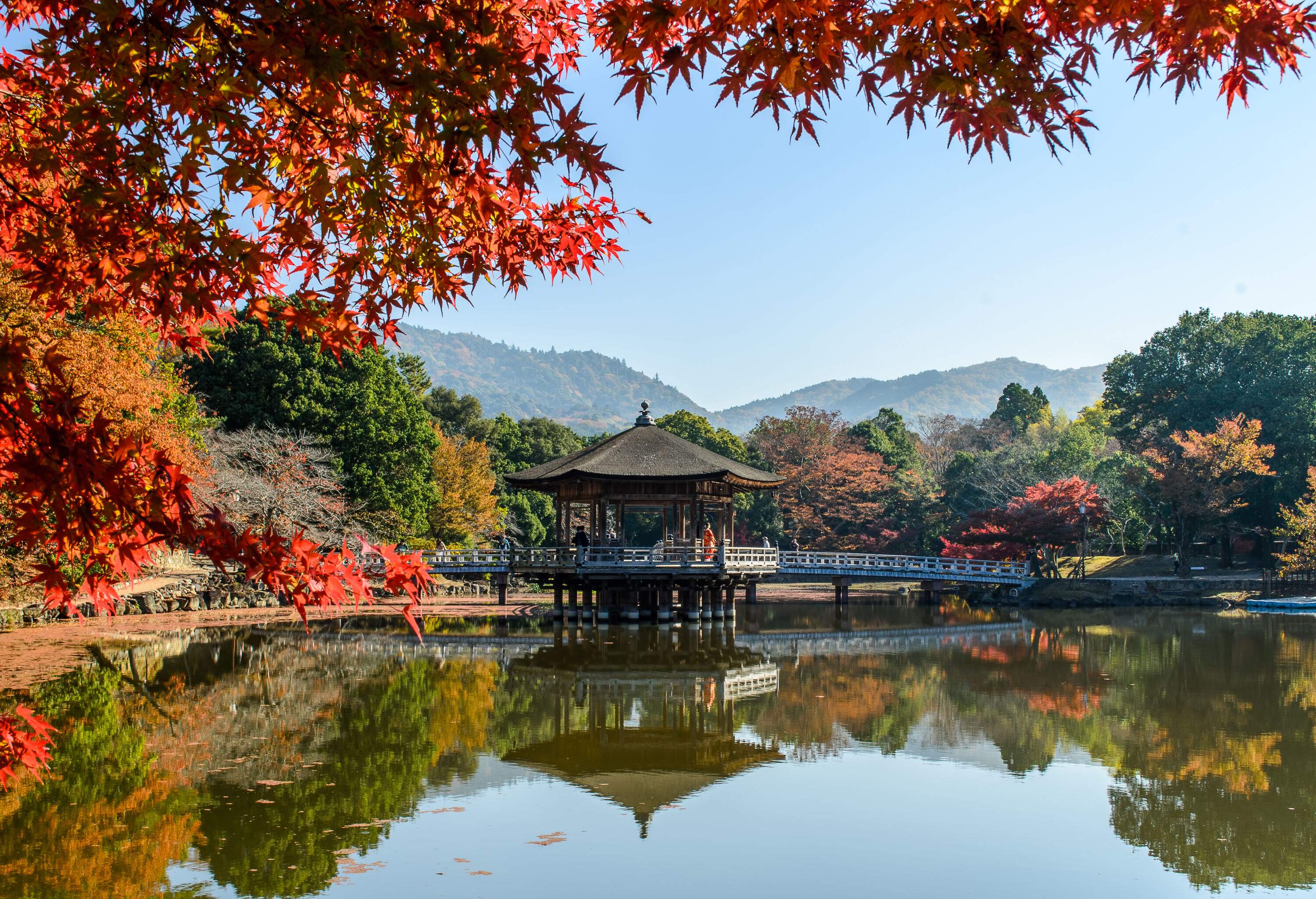
Distance from Osaka: 20 mi - 30 minutes
Nara was Japan’s first official capital and still holds a lot of significance thanks to its historic treasures. The Todaiji Temple is one of the most famous ones and is home to a large bronze Buddha. But admittedly most people come to meet the locals in Nara…
Hotel in Nara : Iroha Grand Hotel Kintetsu Nara Ekimae in the city center
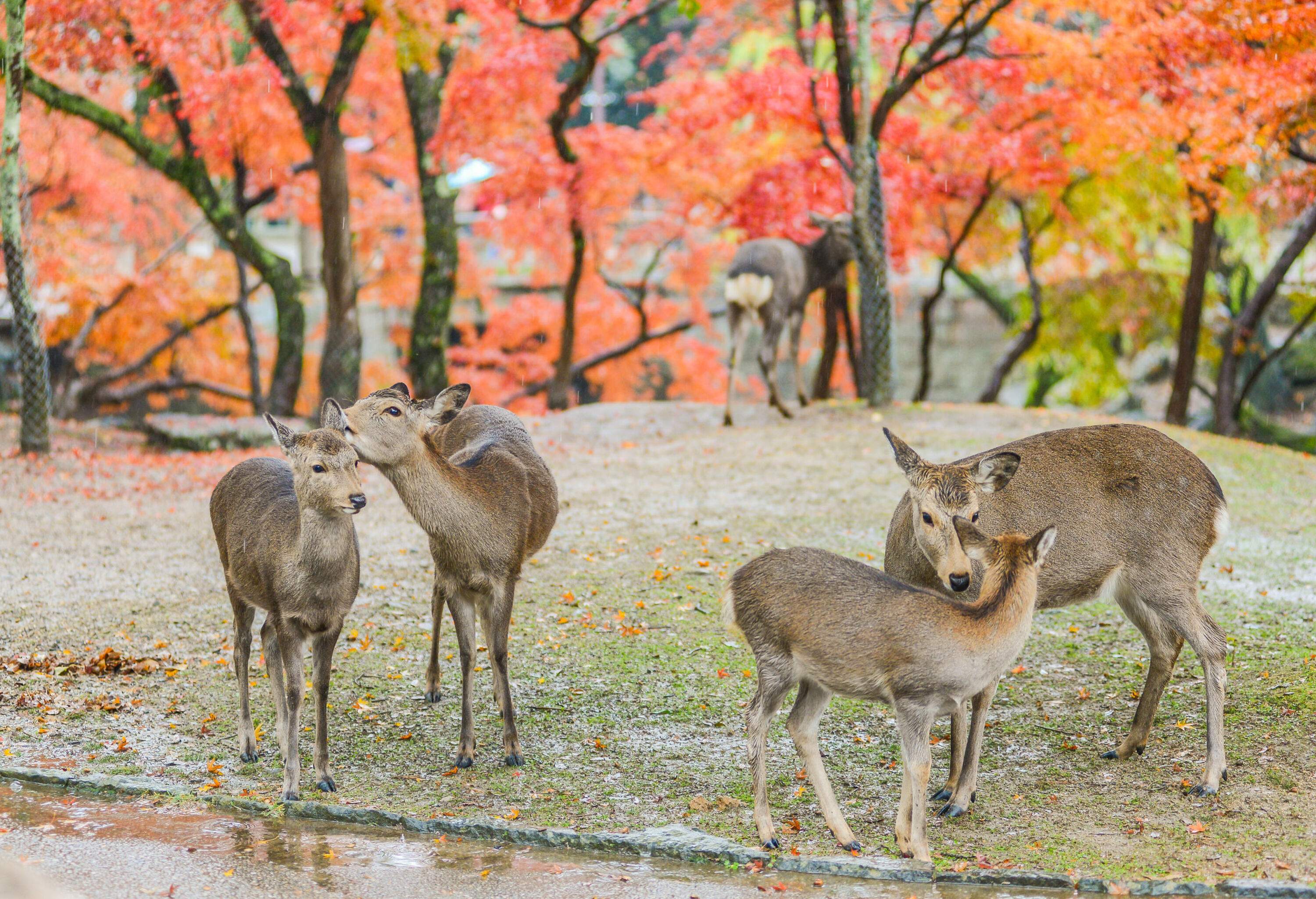
Nara is best known for its over 1000 wild deer that roam the park and sometimes the surrounding streets. You can buy some deer cookies and feed them but be careful - the deer can be quite cheeky and might search your bag or nibble on your coat. The further you go into the park, the fewer people and you will have the deer all to yourself.
Nakatanidou
If you are in the mood to nibble on something, head to Nakatanidou, a shop that makes the most delicious yomogi mochis. Even more exciting: you can watch mochitsuki. This is the process of mochi-pounding. Nakatanidou has been awarded for the fastest mochi pounders and every half an hour you can watch their craft.
Day 5-7: Kyoto
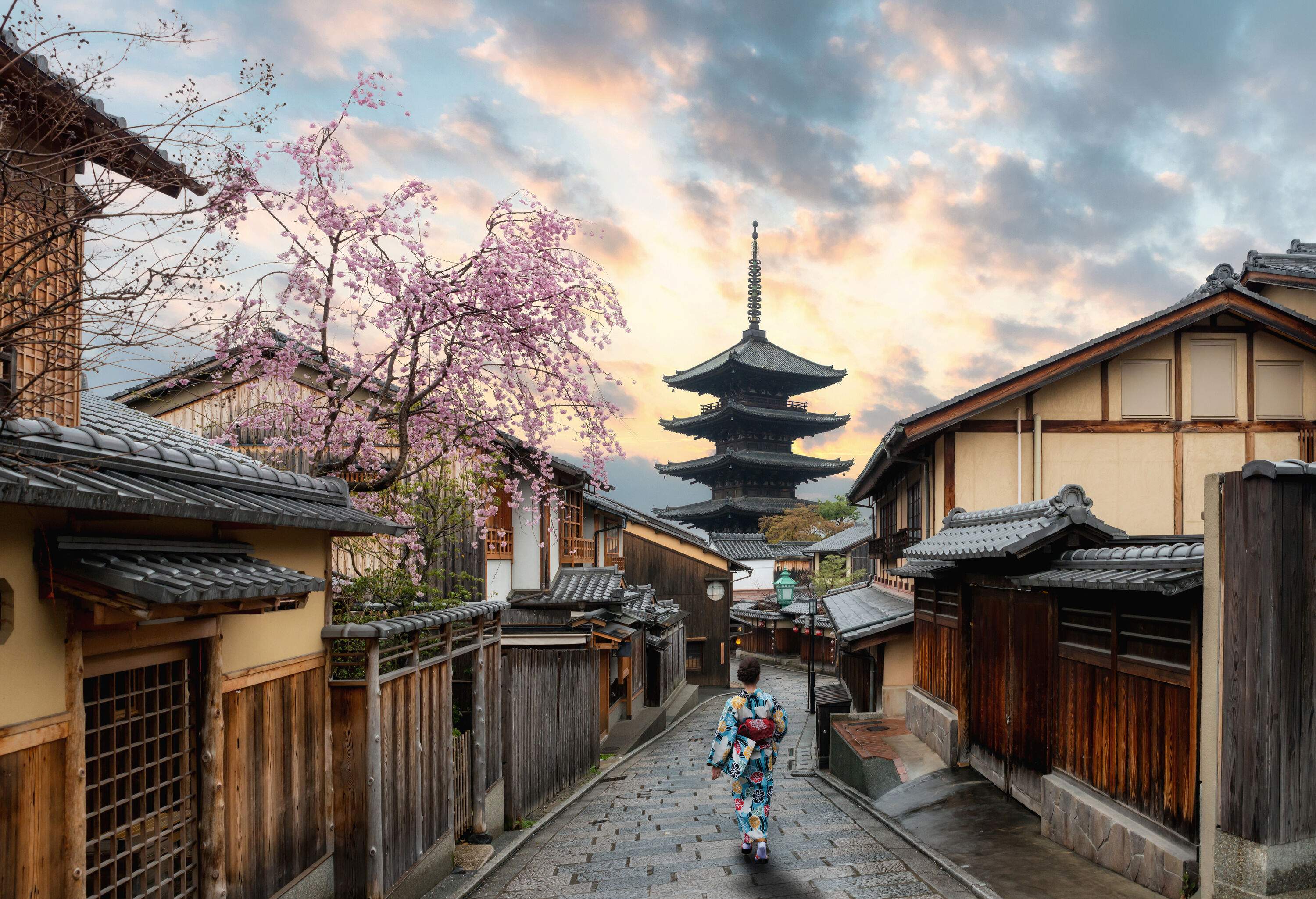
Distance from Nara: 30 mi - 45 minutes
Kyoto is another former capital of Japan and thanks to some beautiful historic buildings and lots of charm, it is an absolute must-see for visitors. Highlights include Nijo Castle, the Imperial Palace, and dinner in Pontocho, an alley with traditional wooden buildings.
Hotel in Kyoto: Node , a member of Design Hotels with lovely, modern rooms
Nishiki Market
A visit to the Nishiki Market is the perfect activity even when it rains as it is covered. Left and right you will find food stalls and restaurants with the most delectable nibbles. Daifuku, wagyu skewers, and Taiyaki await. You can even buy special dog treats, all things matcha, and of course, Japan’s infamous white strawberries that are worth every yen.
Gion District
The Gion District is the old part of town and home of Kyoto’s Geishas. Unfortunately, some streets recently had to be closed off due to unruly tourists but many parts are still accessible. Walk past the Yasaka Shrine all the way to the Yasaka Pagoda and stop at one of the most beautiful Starbucks on the way. If you want to get a picture in front of the pagoda you will need to get up very early - crowds usually start to form around 6 am!
Day 8: Kobe
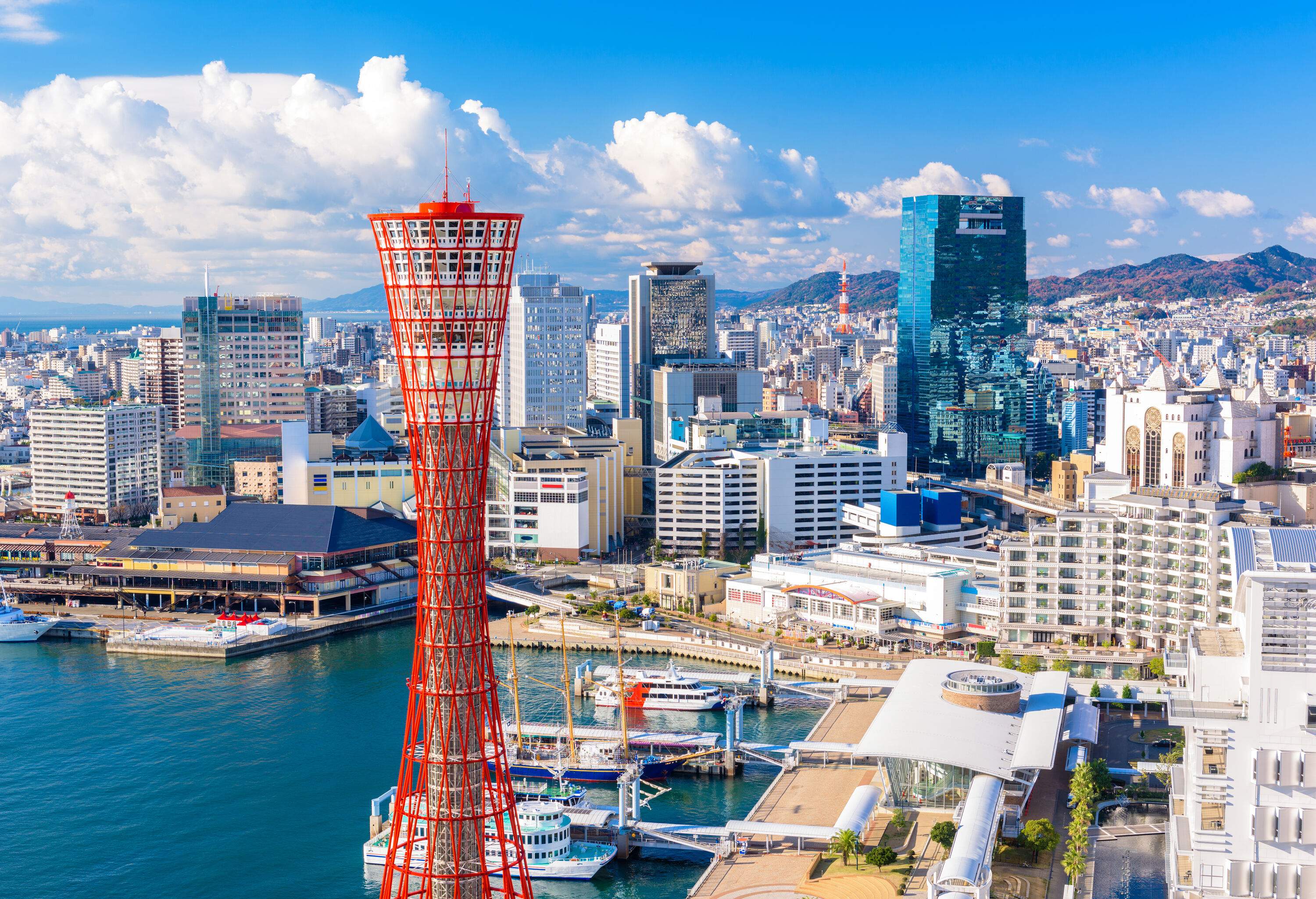
Distance from Kyoto: 50 mi - 1 hour
Kobe is probably best known for its famous beef but even if you are a vegetarian it is a pretty great city to visit. From Kobe you can also take a trip to Himeji Castle, an one hour drive west. The White Heron Castle is one of Japan’s most beautiful and not to be missed. Alternatively, you can visit it on your way to Hiroshima.
Hotel in Kobe: La Suite Kobe Harborland, a luxury hotel with a view of the harbor
Nada Sake District
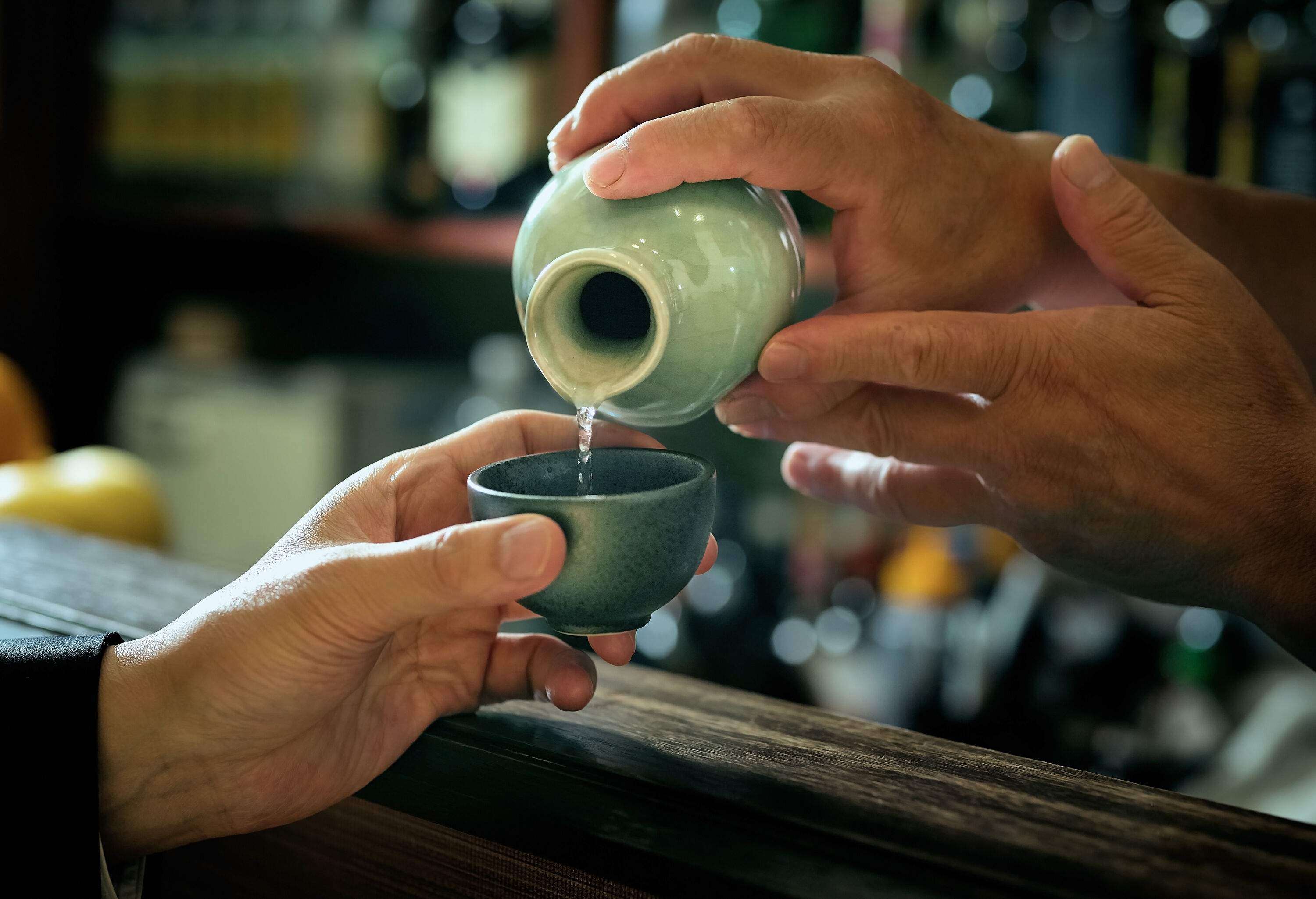
If you want to try some of Japan’s best sake there is no better place than Nada in Kobe. You can visit different breweries in the area. Some have exhibits about the art of sake brewing and many offer tastings.
Kobe Earthquake Memorial Museum
Unfortunately, earthquakes are a part of life in Japan and Kobe was hit especially hard in 1995. The museum not only commemorates the 5,000 people who lost their lives but also educates about earthquakes as well as disaster prevention.
Day 9+10: Hiroshima
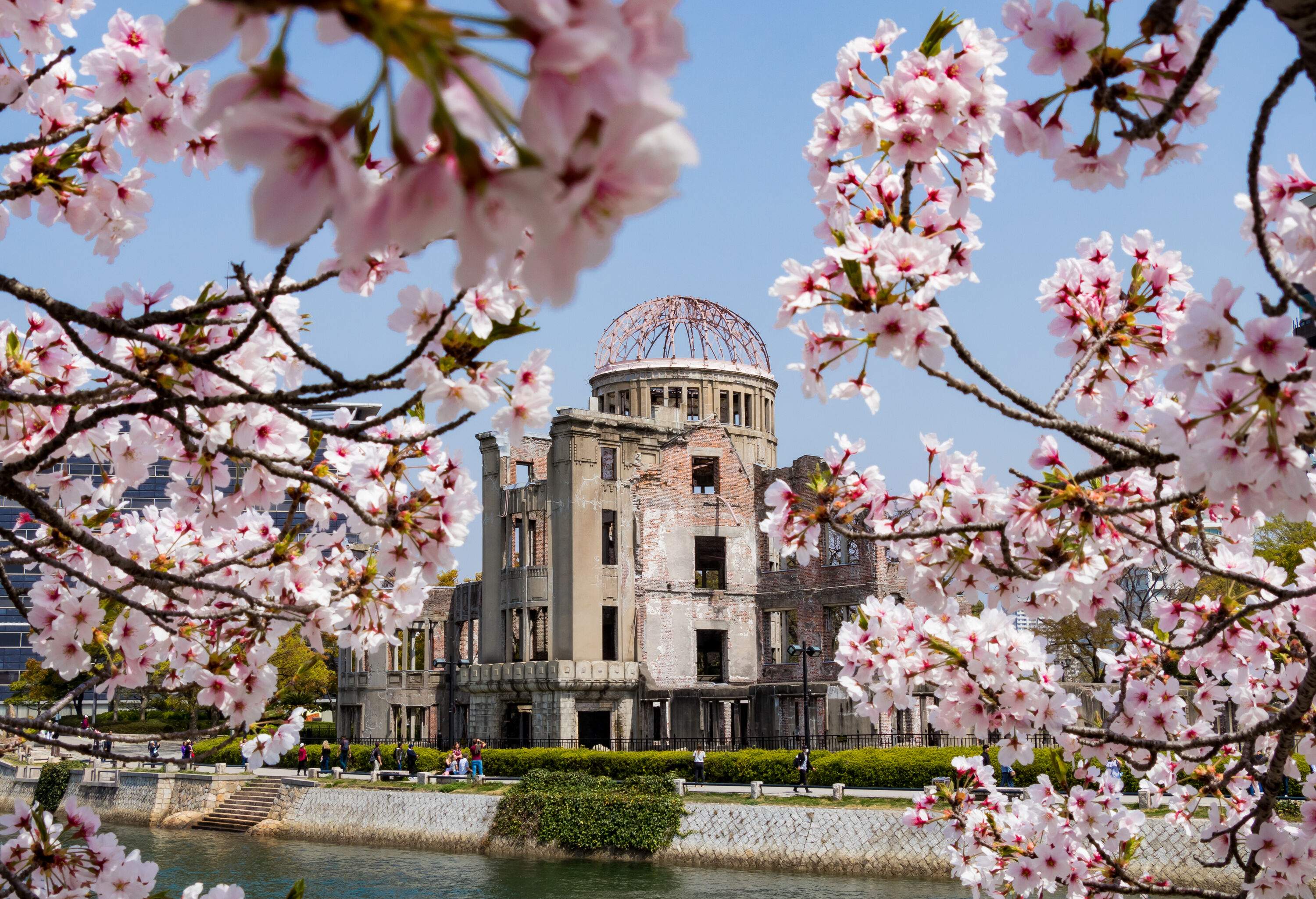
Distance from Kobe: 190 mi - 4 hours
Hiroshima is an absolute gem and quickly became my favorite city on my recent Japan trip. Despite its tragic history the city today is full of life and a real stunner especially when the sun is out. Whatever you do, don't forget to eat some local oysters and the Hiroshima-style Okonomiyaki.
Hotel in Hiroshima: Kiro , a sleek design hotel that has some traditional Japanese rooms
Peace Memorial Museum & Park
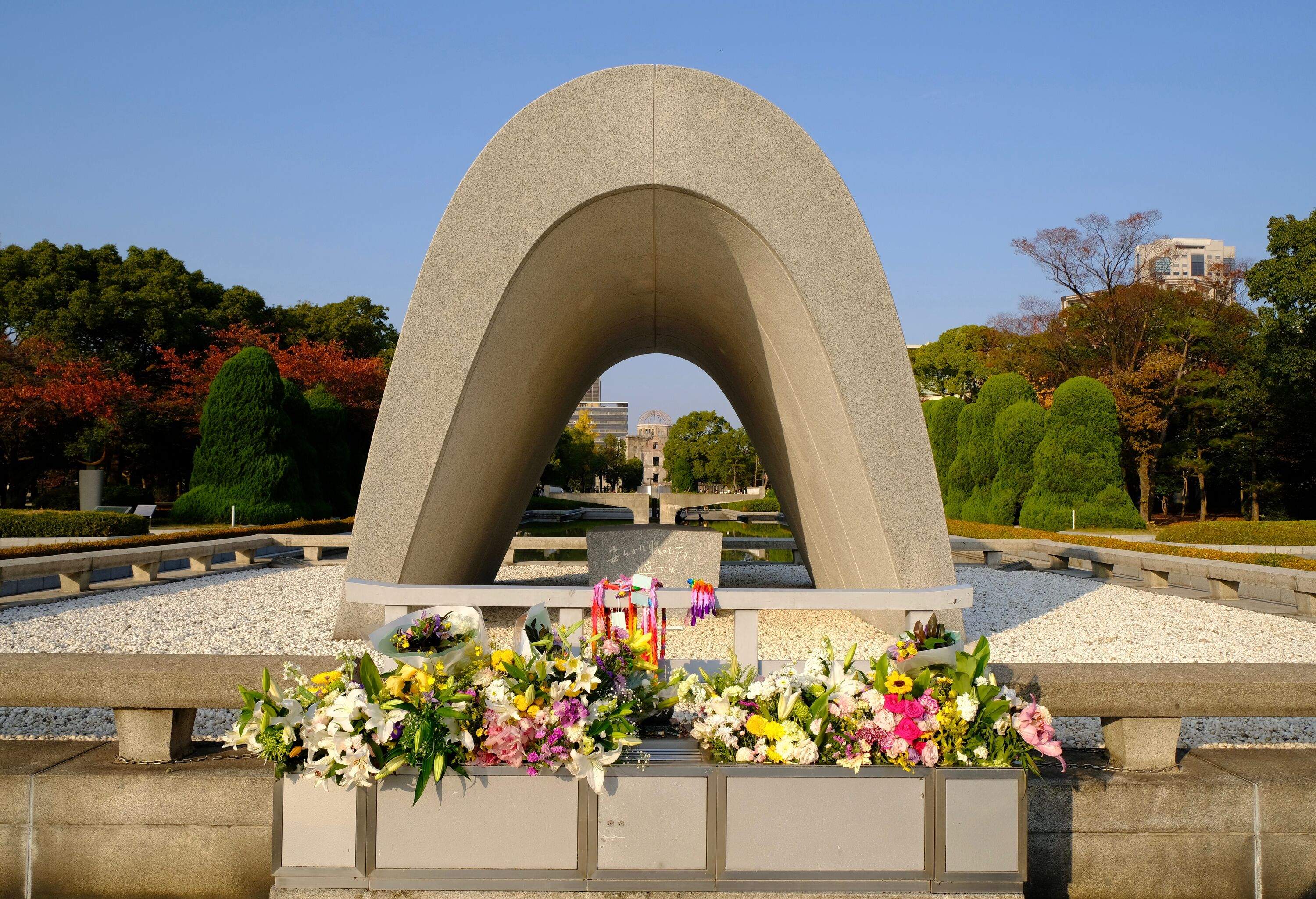
No visit to Hiroshima would be complete without learning more about the first atomic bomb that was dropped here on August 6, 1945. The museum pays tribute to the victims and survivors. Stroll through the park afterward which has some beautiful memorial sites and visit the A-Bomb Dome, a stark reminder of the event.
Miyajima Island
Hop on a train and catch a short ferry to visit Miyajima Island. The island is home to more holy deer and the Itsukushima Shrine that appears to be floating during high tide. I recommend you come early in the morning as the island gets very busy with day trippers. Do get a matcha ice cream decorated with a deer cookie while you stroll along the beach.
From Hiroshima, it is best if you book a flight out from Osaka Kansai airport. Alternatively you can drop off your car at Hiroshima airport and book a domestic flight to Tokyo and leave from there.
Create your own 14 days Japan itinerary
If the above is not enough for you, you can combine both routes into an epic Japan 2 week itinerary. Alternatively, you can add one of the most beautiful places in Japan or stay longer to see a haunted building in Tokyo .
Flight and hotel rates are averages based on data collected by KAYAK. These prices offer an estimate for organizing your trip, but they may vary according to offers, period, destination or your preferences. The price per liter of gasoline, as of April 1st, 2024, is subject to fluctuations, and comes from numbeo.com .
The hotel recommendations included in this article are based on customer ratings and the author's personal choices, so please feel free to use our hotel search tool to find the accommodation best suited to your needs.
About the author

Explore more articles
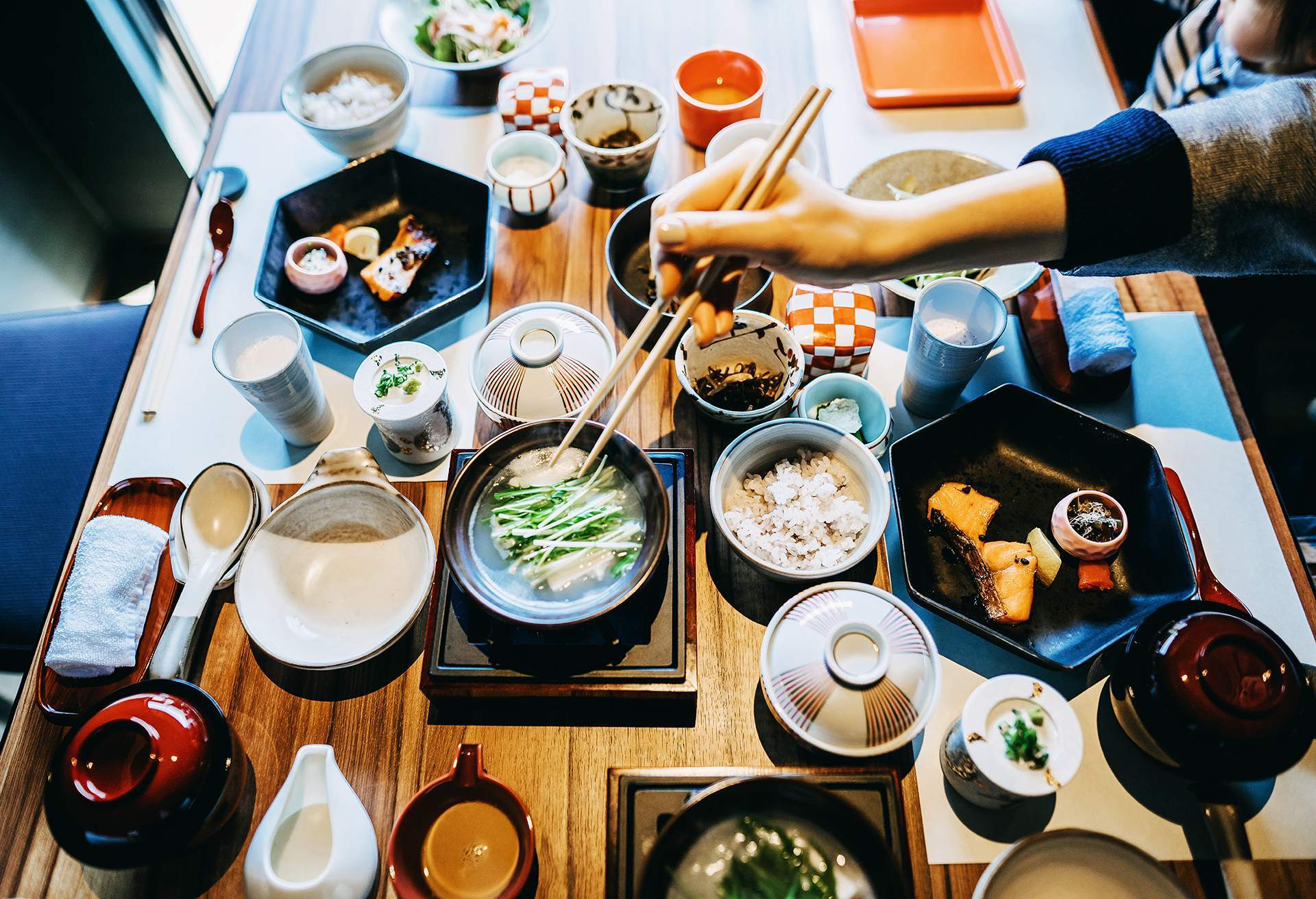
California consumers have the right to opt out of the sale * of their personal information. For more information on how we securely process personal information, please see our Privacy Policy .
Do not sell my info ON
* The definition of "sale" under the California Consumer Privacy Act is applicable only to California consumers.
- Travel Planning Guide
Travel Budget for Kyoto Visit Kyoto on a Budget or Travel in Style
- Kyoto Costs

- Kyoto Hotel Prices
- Best Luxury Hotels in Kyoto
- Best Romantic Hotels for Couples in Kyoto
- Best Business Hotels in Kyoto
- Best Hotels for a Weekend Getaway in Kyoto
- Best Hotels for One Night in Kyoto
- Best Pet-Friendly Hotels in Kyoto
- Best Cheap Hotels in Kyoto
- Best Party Hotels in Kyoto
- Best Family-Friendly Hotels in Kyoto
- Best Hotels for First Time Visitors in Kyoto
- Best Hotels for One Week in Kyoto
- Is Kyoto Expensive?
- How much does a trip to Kyoto cost?
- Is Kyoto Worth Visiting?
- Japan Costs
- Yaeyama Islands
- How much does it cost to travel to Kyoto? (Average Daily Cost)
- Kyoto trip costs: one week, two weeks, one month
Is Kyoto expensive to visit?
- How much do I need for a trip to Kyoto?
- Accommodation, Food, Entertainment, and Transportation Costs
- Travel Guide
How much does it cost to travel to Kyoto?
You should plan to spend around $96 (¥14,740) per day on your vacation in Kyoto. This is the average daily price based on the expenses of other visitors.
Past travelers have spent, on average for one day:
- $24 (¥3,651) on meals
- $7.56 (¥1,157) on local transportation
- $127 (¥19,427) on hotels
A one week trip to Kyoto for two people costs, on average, $1,348 (¥206,365) . This includes accommodation, food, local transportation, and sightseeing.
All of these average travel prices have been collected from other travelers to help you plan your own travel budget.
- Travel Style: All Budget (Cheap) Mid-Range Luxury (High-End)
- Average Daily Cost Per person, per day $ 96 ¥ 14,740
- One Week Per person $ 674 ¥ 103,183
- 2 Weeks Per person $ 1,348 ¥ 206,365
- One Month Per person $ 2,889 ¥ 442,211
- One Week For a couple $ 1,348 ¥ 206,365
- 2 Weeks For a couple $ 2,697 ¥ 412,730
- One Month For a couple $ 5,779 ¥ 884,422
Are You an Experienced Traveler?
Help other travelers! Answer a quick question about your past travels. Click here: let's do it!
How much does a one week, two week, or one month trip to Kyoto cost?
A one week trip to Kyoto usually costs around $674 (¥103,183) for one person and $1,348 (¥206,365) for two people. This includes accommodation, food, local transportation, and sightseeing.
A two week trip to Kyoto on average costs around $1,348 (¥206,365) for one person and $2,697 (¥412,730) for two people. This cost includes accommodation, food, local transportation, and sightseeing.
Please note, prices can vary based on your travel style, speed, and other variables. If you're traveling as a family of three or four people, the price per person often goes down because kid's tickets are cheaper and hotel rooms can be shared. If you travel slower over a longer period of time then your daily budget will also go down. Two people traveling together for one month in Kyoto will often have a lower daily budget per person than one person traveling alone for one week.
A one month trip to Kyoto on average costs around $2,889 (¥442,211) for one person and $5,779 (¥884,422) for two people. The more places you visit, the higher the daily price will become due to increased transportation costs.
Independent Travel
Traveling Independently to Kyoto has many benefits including affordabilty, freedom, flexibility, and the opportunity to control your own experiences.
All of the travel costs below are based on the experiences of other independent travelers.
Prices in Kyoto are reasonable and comparable to your average travel destination. Hotels, food, and sightseeing are generally within normal price ranges.
Within Asia, Kyoto is a moderately priced destination compared to other places. The overall cost of travel here is fair for the region and comparable to Nanjing or Zhengzhou.
For more details, and to find out if it's within your travel budget, see Is Kyoto Expensive?
How much money do I need for a trip to Kyoto?
The average Kyoto trip cost is broken down by category here for independent travelers. All of these Kyoto travel prices are calculated from the budgets of real travelers.
Accommodation Budget in Kyoto
Average daily costs.
Calculated from travelers like you
The average price paid for one person for accommodation in Kyoto is $63 (¥9,714). For two people sharing a typical double-occupancy hotel room, the average price paid for a hotel room in Kyoto is $127 (¥19,427). This cost is from the reported spending of actual travelers.
- Accommodation 1 Hotel or hostel for one person $ 63 ¥ 9,714
- Accommodation 1 Typical double-occupancy room $ 127 ¥ 19,427
Hotel Prices in Kyoto
Looking for a hotel in Kyoto? Prices vary by location, date, season, and the level of luxury. See below for options.
Find the best hotel for your travel style.
Actual Hotel Prices The average hotel room price in Kyoto based on data provided by Kayak for actual hotel rooms is $101. (Prices in U.S. Dollars, before taxes & fees.)
Kayak helps you find the best prices for hotels, flights, and rental cars for destinations around the world.
Recommended Properties
- Kyoto Nishijin Guest House - Hostel Budget Hotel - Kayak $ 119
- The Ritz-Carlton Kyoto Luxury Hotel - Kayak $ 647
Transportation Budget in Kyoto
The cost of a taxi ride in Kyoto is significantly more than public transportation. On average, past travelers have spent $7.56 (¥1,157) per person, per day, on local transportation in Kyoto.
- Transportation 1 Taxis, local buses, subway, etc. $ 7.56 ¥ 1,157
Recommended Services
- Shared Departure Transfer : Kyoto City to Kansai International Airport Viator $ 69
- Private departure transfer from Kyoto city to Kansai International airport Viator $ 110
Flights to Kyoto
Rental cars in kyoto, food budget in kyoto.
While meal prices in Kyoto can vary, the average cost of food in Kyoto is $24 (¥3,651) per day. Based on the spending habits of previous travelers, when dining out an average meal in Kyoto should cost around $9.54 (¥1,461) per person. Breakfast prices are usually a little cheaper than lunch or dinner. The price of food in sit-down restaurants in Kyoto is often higher than fast food prices or street food prices.
- Food 2 Meals for one day $ 24 ¥ 3,651
Recommended
- Kyoto near Fushimiinari:Japanese Cooking Class & Supermarket tour Viator $ 120
- Kyoto near Fushimiinari : Wagashi(Japanese sweets)Cooking Class Viator $ 67
Entertainment Budget in Kyoto
Entertainment and activities in Kyoto typically cost an average of $13 (¥1,993) per person, per day based on the spending of previous travelers. This includes fees paid for admission tickets to museums and attractions, day tours, and other sightseeing expenses.
- Entertainment 1 Entrance tickets, shows, etc. $ 13 ¥ 1,993
Recommended Activities
- 1 Day Hiking Tour in the Mountains of Kyoto Viator $ 174
- Go Kyoto Sightseeing in a Beautiful KIMONO (near Kyoto Station) Viator $ 33
Alcohol Budget in Kyoto
The average person spends about $12 (¥1,851) on alcoholic beverages in Kyoto per day. The more you spend on alcohol, the more fun you might be having despite your higher budget.
- Alcohol 2 Drinks for one day $ 12 ¥ 1,851
- Kyoto Sake Bar and Pub Crawl (Food & Sake Tour) Viator $ 195
- Rural Villages & Brewery Town: Private 1-Day Cycling Near Kyoto Viator $ 187
Water Budget in Kyoto
On average, people spend $0.69 (¥105) on bottled water in Kyoto per day. The public water in Kyoto is considered safe to drink.
- Water 2 Bottled water for one day $ 0.69 ¥ 105
Related Articles
Kyoto on a budget.
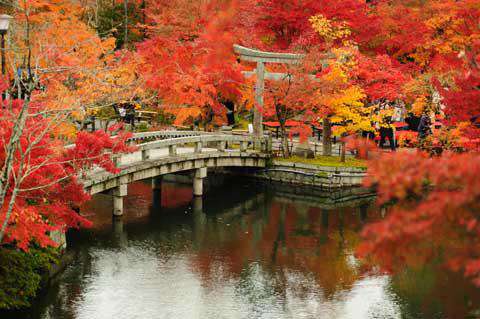
Neighborhoods
Food and dining, transportation, more related articles.
We've been gathering travel costs from tens of thousands of actual travelers since 2010, and we use the data to calculate average daily travel costs for destinations around the world. We also systematically analyze the prices of hotels, hostels, and tours from travel providers such as Kayak, HostelWorld, TourRadar, Viator, and others. This combination of expenses from actual travelers, combined with pricing data from major travel companies, gives us a uniqe insight into the overall cost of travel for thousands of cities in countries around the world. You can see more here: How it Works .
Subscribe to our Newsletter
By signing up for our email newsletter, you will receive occasional updates from us with sales and discounts from major travel companies , plus tips and advice from experienced budget travelers!

Search for Travel Costs
Some of the links on this website are sponsored or affiliate links which help to financially support this site. By clicking the link and making a purchase, we may receive a small commission, but this does not affect the price of your purchase.
Travel Cost Data
You are welcome to reference or display our travel costs on your website as long as you provide a link back to this page .
A Simple Link
For a basic link, you can copy and paste the HTML link code or this page's address.
Japan Route Finder & Calculator
Find the best route including bullet train, bus, airline, and taxi. Compatible with your railway pass. Plan your trip by calculating the train cost and distance. Check the train schedule. View the route on a map. Know which station to transfer, which exit to go out.
Often Used Routes
Japan travel tips.
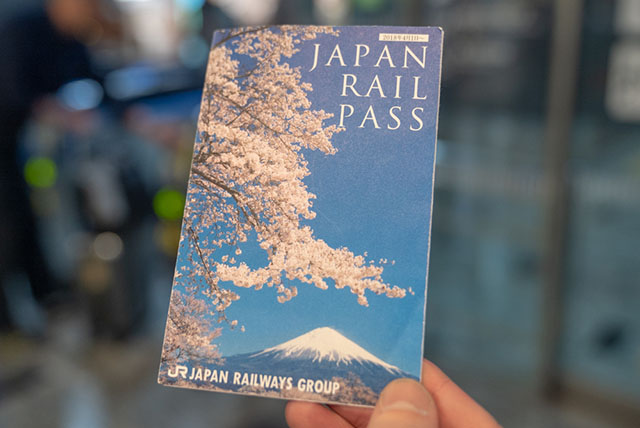
Was the information on this site useful?
Insufficient content
Thank you for your response. We will continue to strive for improvement in quality.
プライバシーポリシー ・ 利用規約 に同意の上、ボタンを押してください。
ログイン(無料)すると より便利に利用できます
Change password
- Shinkansen Bullet Trains
- Hokuriku Arch Pass
- Kansai Area Pass
- Kansai Hiroshima Pass
- Kansai Wide Area Pass
- Sanyo-San'in Area Pass
- Takayama-Hokuriku Area Tourist Pass
- JR East - South Hokkaido Rail Pass
- Explore All Passes
Japan Rail Pass price
How much is a JR Pass? Check the prices for adults and children, for 7, 14 or 21 days, and for a Standard or Green Pass.
Select the class you wish to travel in, the number of accompanying children (if applicable) and enter the duration of your stay. It's that simple, so order your Japan Rail Pass today and get packing!
Children discounts applies to children between 6 and 11 years of age. Children under 6 years ride free but without seat resevation.
Note on prices: Please note that the sales prices may undergo slight changes, depending on the changes in the currency exchange rates, which are beyond our control.
The easiest way to travel in Japan
The JR Pass makes traveling around Japan easy. This multi-use ticket grants unlimited access to all JR network public transport, including Shinkansen high-speed trains, buses, ferries and airport transport, for an affordable price.
Thanks to this one-way ticket, you won't have to buy a new ticket every time you use public transport during your stay, which represents undeniable convenience and time-saving.
A 7-day JR Pass can allow you to travel to the most popular Japanese destinations (Tokyo, Kyoto, Osaka, etc.) and use local transport for less than buying each ticket separately. If you're planning several long-distance journeys, the JR Pass will save you money.
JR Pass holders will also be able to enjoy discounts at some of Japan's popular tourist attractions from October 2023.
Validity of the JR Pass
Remember that your pass is valid for either 7, 14 or 21 consecutive days. Once activated, the dates cannot be changed, which means you should always coordinate your vacation plans with the validity of the pass.
Children's discount
If kids are among your travel companions on your trip to Japan, you will be glad to know a JR children's discount is an option. Check to see if any of these apply in your case.
Children between zero and 5 years of age can use all the JR transport system without having to purchase a Japan Rail Pass. The only caveat is that they are not allowed to occupy a seat and have to stay on an adult's lap unless there are empty seats available in the green, unreserved and reserved cars. Of course, there are no seat limitations if a pass is bought for them.
There is a child's pass available for children aged from 6 to 11 years that costs half the price of an adult pass.
How to get your JR Pass from anywhere in the world
- Worldwide delivery to any address
- Option of receiving your pass in Japan
- Delivery within 2 business days
- Email confirmation and online tracking number
- Speak to one of our advisors face-to-face
- Receive your JR Pass on the same day
- Get expert advice on traveling to Japan
Where is our office? Barcelona, Spain.
We use the safe, express services of UPS and Fedex for our worldwide deliveries. After placing your order you will receive a confirmation email containing your unique tracking number.
Plush seating
Spacious cars
Complimentary oshibori
Free drinks & magazines
Flexible booking: Anything is possible!
- 100% payment refund (total tickets and delivery price)
- Name and address change
- Just 6% of the total price
- No need to explain, no hassle
Secure payment
- Credit Card
- Bank Transfer
- PayPal account or with Credit Card through PayPal
- Regional Passes
- Eligibility
- Pocket WiFi
- Japan Visas
10 Cheap Ways to Visit Japan

By Nick Callos
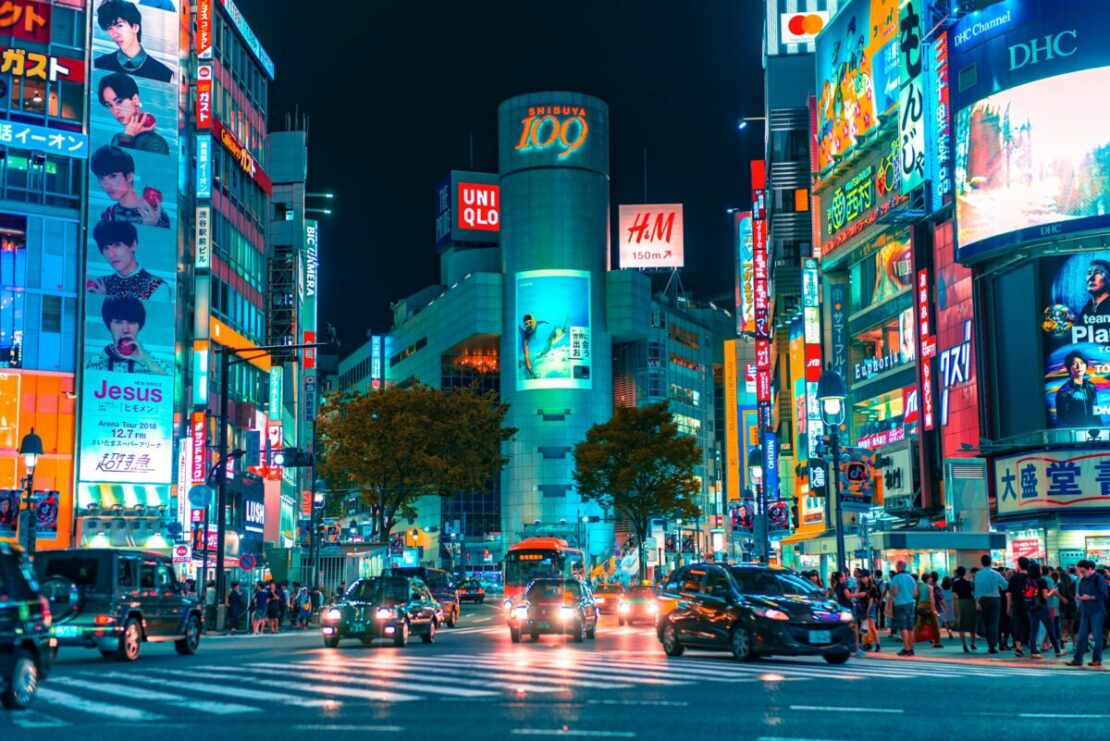
Japan is timeless, a place where the modern fuses with the ancient seamlessly. Add in excellent cuisine, exquisite nature, and welcoming people, and it’s easy to see why Japan attracts more than 25 million foreign tourists annually.
From visiting historic temples and relaxing at teahouses to eating soba noodles and riding bullet trains, Japan offers an incredible variety of amazing things to do. You can even enjoy hot pot while watching a sumo show.
If you want to have a transformative, unforgettable vacation, Japan — without a doubt — can provide that experience.
Now, we know you may be worried about the cost of visiting Japan. That’s why we’ve put together this article — because potential expenses should not hold you back . With a little flexibility, resourcefulness, and open-mindedness, you can actually visit Japan for cheap. Although flights, hotels, meals and activities in Japan add up, cost-saving travel strategies exist.
You may not have considered it, but a savvy way to visit Japan on a shoestring budget is to teach English. This allows you to earn a salary and live and work in a city like Tokyo, Osaka, or Sapporo. Teaching English as a Foreign Language is the perfect opportunity to get paid to travel abroad in Japan. Organizations such as International TEFL Academy (ITA ) can help you land a job there. ITA offers the gold standard in TEFL certification for teaching English abroad and teaching English online. ITA can certify you to teach English and help you get a teaching position at a school in Japan . Salary and benefits are quite solid. You’ll typically earn $2,000 – $3,000+ per month, with perks such as free accommodation.
Another one of the cheapest ways to visit Japan is to intern abroad there. For example, Intern Abroad , the world’s top-rated global internship provider, offers internship opportunities in Japan in Youth Education and Business. These intern programs provide great experience to jumpstart your career and don’t have high price tags and. Fees typically include accommodation and meals, among other things. This helps eliminate major vacation expenses.
As you can see, there are cheap ways to visit Japan. Below, we cover the top 10 cheap ways to visit Japan. Use one, two or more of them, and you’ll be able to enjoy the vacation of a lifetime — without breaking the bank.
1. Search for Cheap Flights to Japan
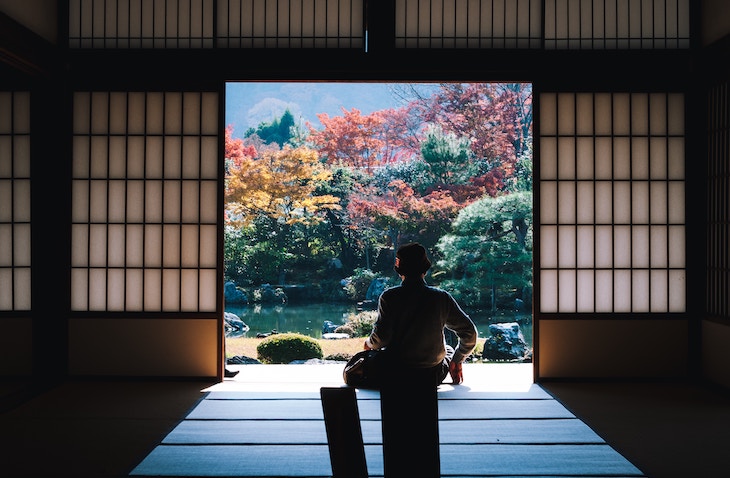
There are low-priced flights to Japan out there. Here’s a strategy to snag one of those flights:
- Consider going during months when flights are cheapest. According to data from CheapFlights.com , the cheapest time to fly to Japan is from September through February. Flying during spring or summer can cost you $500+ more.
- Start looking at least 6-8 weeks in advance. For most regions, flights to Japan are cheapest when well in advance. Frommer’s research shows international plane tickets are generally most affordable when booked 6 weeks in advance.
- Fly with low-cost airlines. For example, low-cost carriers like AirAsia feature routes throughout Asia, including to and from Japan. Prices are usually below market averages.
- Search for flights on student travel sites, such as StudentUniverse . If you’re a student, these specialty sites will tailor deals and discounts for you.
2. Be Flexible with Travel Dates to Japan
When flying on a Tuesday is $500 cheaper than flying on a Saturday, it’s probably worth it to restructure your schedule to fly on a Tuesday. If you’re flexible with dates, you can save tons of money on flights, hotels, and more.
For example, this is a calendar showing round-trip flight prices from New York City to Tokyo for summer 2024:
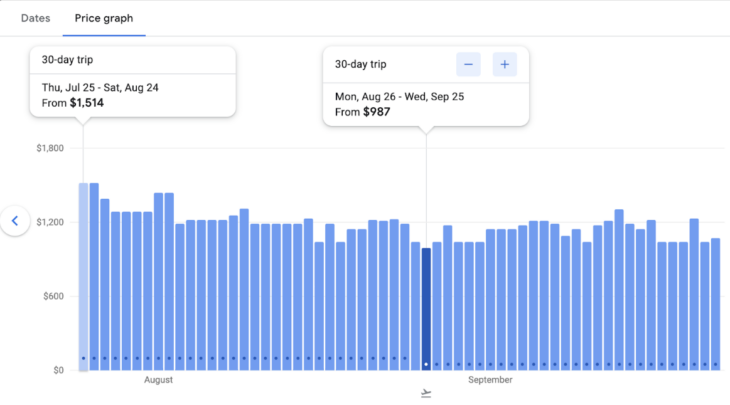
By waiting to go to Japan until late August, and flying on a Monday and Wednesday instead of Thursday and Saturday, you can save $527 on your flight !
3. Get a Business Internship in Japan

Interning in Japan is a great way to not only boost your resume, learn Japanese, and acquire new skills, but also to immerse yourself in local culture. It’s also one of the great cheap ways to visit Japan as the fee you pay often includes meals and accommodation.
For business internships in Japan, Intern Abroad is a top choice. The organization hosts 280+ enriching internships across 24 countries, including Japan. To date, they’ve helped thousands of young professionals gain important international career experience.
Currently, Intern Abroad has a top-rated Business and Media Internship in Japan . For the program, you’ll work in Tokyo, where you’ll contribute to cross-cultural exchange within the workplace and learn the ins and outs of your company and sector. You’ll work in an exciting field such as e-commerce, digital advertising, and tourism.
The program includes accommodation in a home with other interns and language students. This allows you to meet like-minded individuals and expand your personal network too! You can apply here .
4. Go to Japan During Non-Peak Season
According to Condé Nast Traveler , the cheapest time to visit Japan is mid-January through February. If you can stand a little cold, you can save a lot of money on your vacation during this time.
In general, peak season in Japan is March-May and September-November. Spring is cherry blossom season and autumn is quite pleasant. WIth that said, travel prices do NOT get too high during September, October, and November (especially in comparison to spring). Summer is often the most expensive, but it’s note the best time climate wise to go.
So, it may make sense to visit Japan in the autumn if you want a good experience and reasonable travel prices. If you want to save the most money, go after the winter holidays.
5. Teach English in Japan
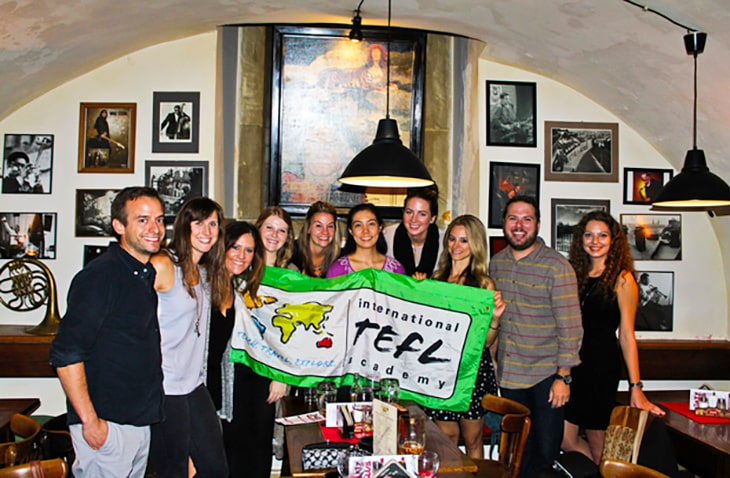
Are you looking for a longer adventure but worried about money?
Worry no more. You can teach English and make money while living in Japan. This will enable you to extend your stay as long as you wish. According to International TEFL Academy (ITA) , foreign English teachers can usually make $2,600+ per month in the first year of the contract, with annual raises for resigning. Many jobs offer free housing too (or at least a housing subsidy).
To get started teaching in Japan, get certified with a reputable organization such as International TEFL Academy. ITA helps aspiring ESL teachers obtain TEFL certification at a low cost online. There are in-person TEFL certification classes as well as online .
After you get TEFL certified, ITA will even offer job placement for Japan . Within a short time, they can help you get a job offer in the city of your choosing, whether that be Kyoto or Kobe.
International TEFL Academy truly helps set you up for success teaching English. Founded in 2010, the organization offers the gold standard in TEFL certification for teaching English abroad. Each year, ITA certifies more than 5,000 people to teach English abroad — a testament to their scale and quality.
Another option is to apply directly to the JET Program (Japan Exchange and Teaching Program). This government-run work program places foreign teachers in schools, government agencies, education departments and other institutions to teach, learn, and network. It’s incredibly selective, but does provide a range of long-term benefits. You can research eligibility requirements here: https://jetprogramusa.org/eligibility-criteria/
- Read our full guide on Teaching English in Japan
6. Save on Lodging in Japan
Outside of transportation to Japan, your next biggest expense may be lodging. This is where you can save a lot of money. According to a popular travel guide , hotel costs in Japan can vary significantly:
- A guesthouse or hostel in Japan can be under $25 per night.
- The famous capsule hotels are around $30-$35 per night.
- A budget hotel may cost between $40-$100 per night.
- A mid-range hotel costs between $80-$100+ per night.
- A luxury hotel or accommodation can cost between $150-$500+ per night.
If you go with budget or mid-range lodging in Japan, instead of a 4- or 5-star lodging, you can save hundreds of dollars on your trip. They may not have all the amenities you’d like, but they’re usually comfortable enough for a good night’s rest.
Simply put, if you’re searching for savvy cheap ways to visit Japan, then plan to save on accommodation.
7. Get an Education Internship in Japan

As we mentioned earlier in the article, interning in Japan is a great way to improve your resume and skills as well as immerse yourself in the country. Since internship fees include lodging, they’re a great cheap way to visit Japan
For education internships in Japan, Intern Abroad is also a top choice. The organization’s Youth Education Internship in Japan is highly rated by past participants. For this internship, you’ll assist at after-school centers in Tokyo and help improve the future prospects of local youth. Duties include teaching English, doing arts and crafts, playing games, and more.
If you want to be a teacher or work in education, this internship is a wonderful option. You can apply here .
8. Use Miles or Points to Travel to Japan
You arrived at this article because you’re searching for cheap ways to visit Japan. So, chances are you’re open to various cost-saving tricks.
Enter miles and points.
On sites like NerdWallet and Upgraded Points , you can learn how to get to Japan for free or low cost by leveraging lucrative credit card sign up bonuses, as well as other miles-earning hacks (doing surveys, shopping online, etc).
For example, many major airlines, like Delta and United Airlines, have branded credit cards that offer bonuses to new customers after a certain amount is spent on the card. Usually, this sign up bonus gives you enough points to book an international plane ticket for free (or at a very reduced price).
It’s not unheard of to obtain more than $1,000 in travel savings from these cards. With the right strategy and discipline (and good credit), you can get a credit card with a large signup bonus, meet the spending threshold, and then obtain tens of thousands of points. You can then use those points to get free airfare or lodging (or at least save a lot of money on both those things).
9. Budget Wisely on the Ground in Japan
Going to Japan can be the vacation of a lifetime. You may get that ‘YOLO’ feeling while you’re there. That’s great! But it can cause spending to get out of hand.
To avoid overspending, head to Japan with a budget and a plan. You’ll still enjoy a great vacation, while saving hundreds of dollars.
Follow these tips while there to save money:
- Eat like a local : Avoid the Westernized restaurants that charge $15 for avocado toast. Instead, head to the local eateries and enjoy traditional Japanese food. For instance, quality ramen in Tokyo can be had for under $8.
- Take public transportation : You don’t need to hire a driver. You don’t even need to pay for taxis. From the inter-city bullet trains to the Tokyo metro, Japan’s public transportation is world class. It’s convenient, fast, and cheap. Use it.
- Enjoy the free things: Japan has an incredible variety of things to do, some more expensive than others. Take advantage of free things, such as exploring the streets of the Harajuku neighborhood, taking in the organized chaos of Shibuya Crossing, and touring the Hiroshima Peace Memorial Park.
10. Find a Package Deal to Japan
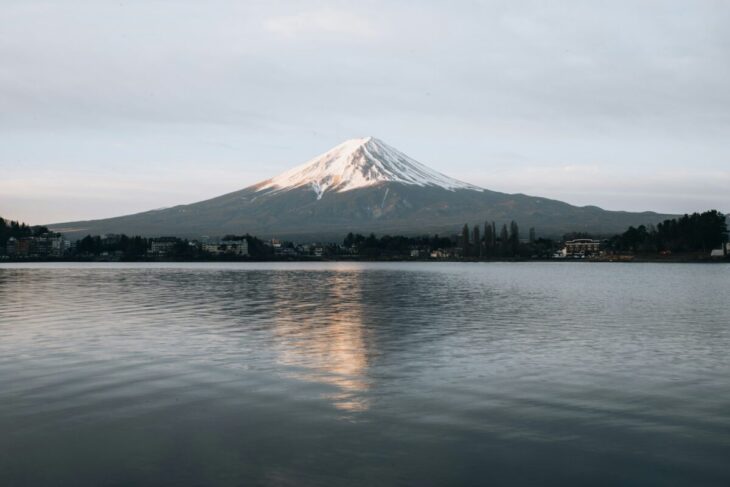
Perhaps you bundle to save on insurance or internet and cable. Employ this same cost-saving tactic for your trip to Japan. By bundling your travel, or buying your flight, hotel and insurance together, you can save hundreds of dollars on your travel (if not more).
There are many ways you can find package deals in Japan. When you book on a site such as Priceline or Expedia, you’ll have options to bundle your flight, hotel, car rental, insurance and more. Just look in advance, and you’ll find a good price.
For instance, Expedia states it has package deals for Japan as low as $1,804 for weeklong stay in 2024. The package includes the flight and lodging.
It’s Time to Put the 10 Cheap Ways to Visit Japan into Action
While you can’t use all of these tips at once, you can use a mix of them to save thousands of dollars on your trip. For instance, you could use miles for your flight, while interning in Tokyo to gain experience and save on food and accommodation. That would keep your vacation costs incredibly low.
Do you have any other cheap ways to visit Japan? Feel free to share on Facebook, X, or LinkedIn and add in your thoughts. We’d love to hear from you.
Now, all that’s left to do is put these cheap ways to visit Japan to work — and go have the best vacation ever.
Image Sources: https://unsplash.com/photos/people-gathered-outside-buildings-and-vehicles-alY6_OpdwRQ
https://unsplash.com/photos/white-and-black-mountain-near-body-of-water-during-daytime-ej8pKvHDg_c
Most Popular Guidebooks
2024 best volunteer abroad programs, organizations, & projects, medical volunteer abroad programs for doctors, nurses, pre med students, cheap affordable volunteer abroad programs & low cost overseas projects, teens & high school volunteer abroad programs | under 18 mission trips, 200 volunteer abroad & study abroad scholarships & grants, dental volunteer abroad & medical mission trips | dentists & students, volunteer abroad opportunities for seniors and retirees, nursing volunteer abroad projects for students & professional nurses, short term volunteer abroad programs & mission trips (1 week & 2 weeks), long term volunteer work abroad programs & voluntary charity jobs, trending guidebooks, volunteering abroad after the coronavirus outbreak, 2024 best internships abroad: medical care, marine biology & more, volunteer in australia: animals, conservation, ranching and more, 2024 best volunteer abroad programs, organizations, & projects.
Nick Callos · Writer
With a BA in English Literature & Writing from Boston College, Nick researches and writes about volunteer, intern, and teach abroad programs worldwide. He has studied abroad and taught English in Chengdu, China, and aims to help fellow travelers make a lasting impact on the communities they visit.
Related guidebooks
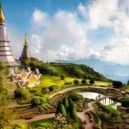
10 Cheap Ways to Visit Thailand
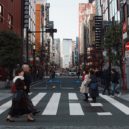
- Prof. Development
Teach English in Japan: JET Program and More
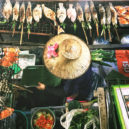
How to find the Best Internships in Asia

10 Best Places to Teach English Abroad

Traveller type
- Solo Travelers
- First Time Travelers
- Female Travelers
- Senior Citizens
- Family & Group
- Teen & High School
- Volunteer Abroad
- Intern Abroad
- Teach Abroad
- Study Abroad
- Professional Development
To stay in touch! Enter your email address to get travel recommendations and be the first to know about our $500-$1,000 travel scholarships!
Thanks for signing up!
Your first email will arrive shortly

IMAGES
VIDEO
COMMENTS
Luxury Couple's Trip. The high-end price for a couple to visit Japan for a week is $5,121-$15,768 ($732-$2,253 per day). Food, Travel, and Sightseeing: $192 to $397 per day for two people's daily expenses. Flights: $2,817 to $6,941 for first class. Lodging: $160 to $304 per night for one 4 or 5-star hotel room. or $504 to $1,008 per night for a preferred vacation rental
All of these Japan travel prices are calculated from the budgets of real travelers. Category Cost Last Updated: Mar 20, 2024. Related Articles. Japan vs. China: Travel Costs Japan vs. South Korea: Travel Costs The Best Hostels in Japan for Backpackers, Students, and Budget Travellers Tokyo Yokohama Osaka. Japan On a Budget ...
The Cheapest Accommodation Options in Japan. Like practically every country in the world, prices in Japan have increased post-pandemic. In 2024, you'll be paying a little more for everything than you would have done a few years ago — in fact, prices almost doubled between my first trip in 2017 and today! — however costs are still on a par with most Western countries.
The estimated total cost for 2 weeks in Japan is about $7,856 or £5,986 for 2 people based on 2024 prices. How much cash should I bring to Japan for 2 weeks? A good rule of thumb is to have about 10,000 to 20,000 yen with you in cash at all times. For 2 weeks, ¥100,000 ($700, £550) was enough cash for us.
The Japan trip cost is the main reason it took us so long to finally take a family trip to Japan. The bottom line is that the Japan trip cost for a two-week trip for a family of four, staying in four-star level accommodations with a few paid activities will cost about $13,420 or $280 per person, per day. However, while Japan is an expensive ...
Bus Passes. One way to save on transport costs in Japan is by purchasing a Willer Express Bus Pass. This pass allows you to travel for 3, 5 or 7 days within a period specified by you. Advantages: The days of travel do not need to be consecutive, giving you flexibility in your itinerary.
Planning a Trip to Japan? Share your travel photos with us by hashtagging your images with #visitjapanjp. GUIDE Guide to Traveling Japan on a Budget A guide to budgeting your trip to Japan. ... Price; 7-day Japan Rail Pass (Ordinary) from 50,000 yen: Tokyo Metro 24-hour ticket: 600 yen: Common 1-day ticket for Tokyo Metro & Toei Subway: 900 yen ...
It is not a flat fare. Most importantly, keep your bus, train, or subway ticket on you throughout your journey. You will need it to exit the station. A few examples of our costs: Furano to Niseko Ski Resort Resort Liner Bus: ¥5500. Kyoto city bus: ¥210. Kyoto-Nara train: ¥490. Osaka city subway ticket: ¥200-350.
In general, a private Japan tour costs US$350-500 per person per day (with 2-4 people), including private car, private guides, local 4-star hotels, tickets for attractions, and full-day itineraries. Thus, the total cost is around US$2,500-3,500 for a week and around US$5,000-7,000 for 2 weeks. Riding a private car offers a more ...
Kanpai's Budget Calculator provides a precise estimate of the travel expenditures item-by-item, with numerous possible choices. As a matter of fact, a backpacker's 10-days trip will not cost the same as a 3-weeks stay for a family looking for a very comfortable trip. Fill in the questionnaire below to discover the expenses to expect and ...
Tokyo to Sapporo flight (one-way): $35 - $85. Tokyo to Osaka flight (one-way): $32 - $97. Tokyo to Okinawa flight (one-way): $75 - $190. Good to know: When comparing flights to trains, be sure to account for the cost of transportation getting to and from the airport, as this can add quite a bit.
While calculating average cost, you'll need to include flight tickets, accommodations, car rentals, etc. That said, the average price of a 7-day trip to Japan will range between $1558 to $2100 per person. You can expect to spend up to $2750 as a couple and $5,124 for a family of four.
For a trip to Japan, you should plan for daily costs anywhere between $0 to $0. If there's two of you traveling, your daily expenses could range from $0 to $0. These price ranges are based on the average daily spending of $0 (¥0) per person which comes from the travel expenses of other visitors. These costs include food, accommodation ...
Estimated calculations from 2024: based on transport, accommodation, and food expenses. All variations include the cost of a 7-day and 21-day Japan Rail Pass (following its recently hiked prices). Japan trip cost for one month. £1,900 / $2,400. Japan trip cost for one week. £550 / $695.
The cost of travel in Japan may not be as expensive as you think. Travelers are often surprised by how reasonable the prices are for sightseeing. ... There are so many options for good food at reasonable prices in Japan. For two people, plan on a daily budget of around 2,000 yen for breakfast, 2,000 yen for lunch, and 6,000 yen for dinner.
Medium budget: 500 - 1000 yen per day. Many coffee shops and some restaurants in shopping areas and around train stations offer breakfast sets for around 500 to 1000 yen. High budget: above 1000 yen per day. Hotel breakfasts and breakfast buffets will usually cost you more than 1000 yen.
Find Japan flight + hotel deals. Latest prices for 2 travelers/3 nights: 3-star $273; 4-star $420; 5-star $652 | KAYAK. ... KAYAK is a travel tool that searches Japan trips on hundreds of travel sites to help you find the Japan package that suits you best. Discover Japan deals now and book your Japan flight and hotel today.
The official site of Japan National Tourism Organization is your ultimate Japan guide with tourist information for Tokyo, Kyoto, Osaka, Hiroshima, Hokkaido and other top Japan holiday destinations. We offer travel information to make your Japan travel more comfortable and enjoyable.
March 13, 2024. Mount Fuji. Japan is generally considered a moderately expensive travel destination, but there are ways to save money and travel on a budget. The major costs of a trip to Japan are flights, accommodation, transportation, food, and activities. Flights to Japan can cost anywhere from $600 to $1,200 for a round-trip ticket.
1 day (s) A walking plan—the culture and cuisine from Marunouchi to Ginza. NAVITIME. 1 day (s) Kyoto walk—Climb "the hill" to Kiyomizu-dera Temple. NAVITIME. 1 day (s) Taste and see the tourist hotspots of Osaka. NAVITIME.
Cheapest round-trip prices found by our users on KAYAK in the last 72 hours. One-way Round-trip. Tokyo nonstop $642. Osaka 1 stop $694. Okinawa 1 stop $889. Fukuoka nonstop $600. Hiroshima 1 stop $1,167. Ishigaki 1 stop $1,004.
Food expenses depend on where you eat, so it is a good idea to be aware of prices before you start travels. Continue reading to learn food prices and what types of meals are suitable when traveling on a budget. Meal Options and Average Prices in Japan. 1. Convenience Store Food 2. Ramen 3. Sushi - Casual and High-end 4. Japanese Wagyu Beef and ...
Find cheap flights to Japan with Google Flights. Explore popular destinations in Japan and book your flight. Find the best flights fast, track prices, and book with confidence
From October 1st, 2023, a regular seven-day adult pass costs 50,000 yen, while those looking for a little more luxury can buy a Green Car (first class) pass from 70,000 yen. The 14-day regular adult pass is 80,000 yen, while the regular 21-day pass costs 100,000 yen. Kids' passes are reduced by 50 percent for children aged between 6 and 11.
Ticket prices vary depending on the day and time, but full-day admission begins at 7,900 JPY for adults and 4,400-6,200 JPY for children. ... Looking for More Travel Tips for Japan? Check out my in-depth Japan travel guide for more ways to save money, information on costs, ...
Average price of a bed in a hostel in Tokyo: $63 per night; Average price of a rental car in Tokyo: $82 per day; Price for a gallon of gas in Tokyo: $4.33* *As of March 2024. For the 10-day Japan itinerary below, you will cover up to 300 miles and the total budget will be approximately $1100 per person based on two people sharing (not including ...
How much does it cost to travel to Kyoto? You should plan to spend around $96 (¥14,740) per day on your vacation in Kyoto. This is the average daily price based on the expenses of other visitors. Past travelers have spent, on average for one day: $24 (¥3,651) on meals; $7.56 (¥1,157) on local transportation; $127 (¥19,427) on hotels
Japan Route Finder & Calculator. Find the best route including bullet train, bus, airline, and taxi. Compatible with your railway pass. Plan your trip by calculating the train cost and distance. Check the train schedule. View the route on a map. Know which station to transfer, which exit to go out.
Check the prices for adults and children, for 7, 14 or 21 days, and for a Standard or Green Pass. JRailPass.com Japan Rail Pass. Prices. Select the class you wish to travel in, the number of accompanying children (if applicable) and enter the duration of your stay. It's that simple, so order your Japan Rail Pass today and get packing!
For example, low-cost carriers like AirAsia feature routes throughout Asia, including to and from Japan. Prices are usually below market averages. Search for flights on student travel sites, such as StudentUniverse. If you're a student, these specialty sites will tailor deals and discounts for you. 2. Be Flexible with Travel Dates to Japan